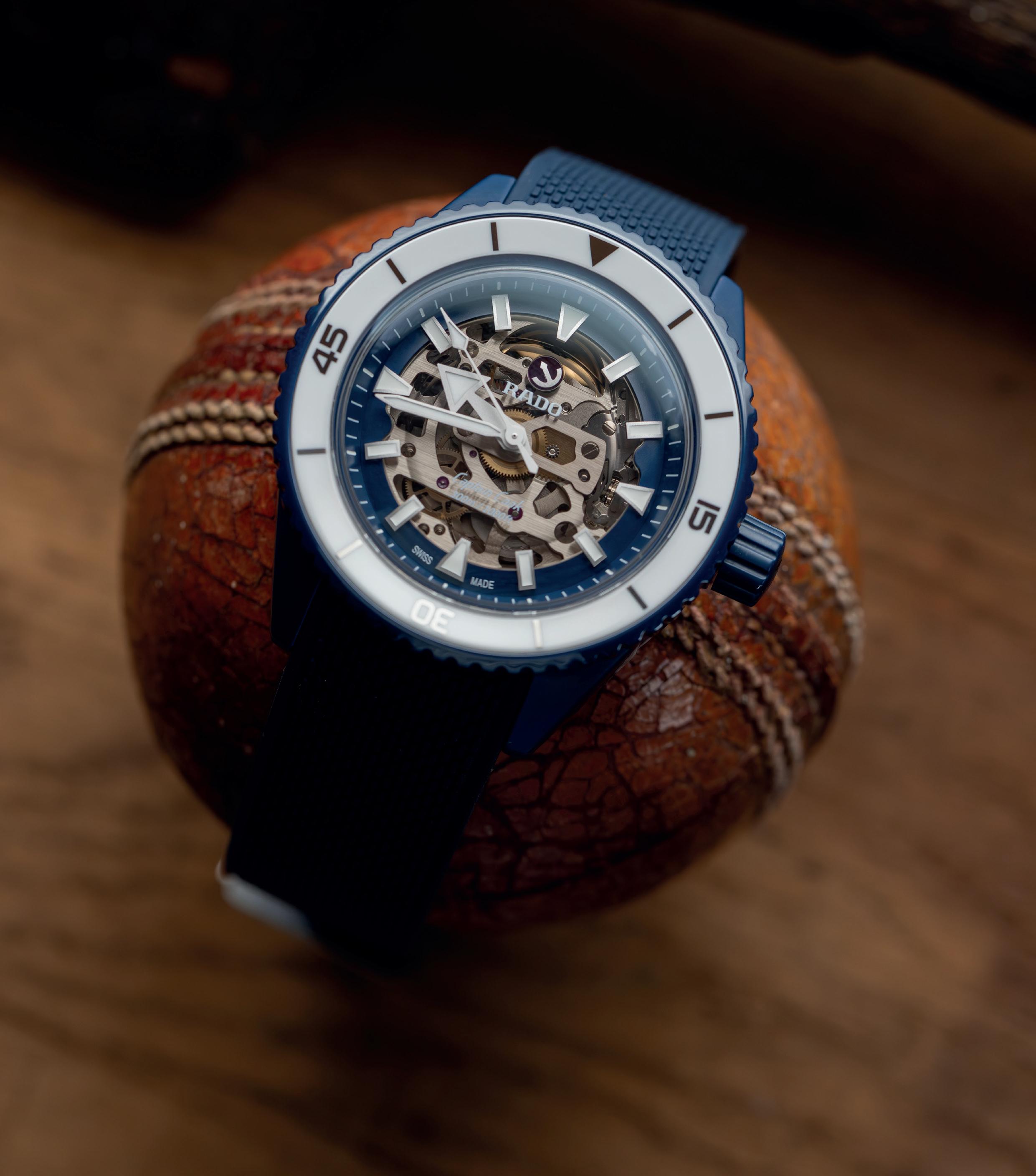
WATCHES | STYLE | CULTURE ISSUE 102
£ 9.96
The Material History of RADO The Insider Issue Movements, Shakers and Sushi

Editor’s letter

I like to think of myself as a bit of an industry insider. I mean, I’ve been doing this for well over a decade now and have a rolodex of movers and shakers across the watch world. Or I would do if anyone still used rolodexes these days. But even by my lofty and influential standards, our interviewees on page 64 are heavy hitters. From tech-savvy (relative) newcomers to industry vets discussing everything from 1950s watchmaking to developments in AI, it’s the only all-access pass you need.
While our interviews might seem a bit of a boy’s club, we’re not leaving women watch collectors behind. In fact, we’ve asked some of the most important female watch writers in the industry about the watches on their horological wishlists – and nary a diamond or mother-of-pearl dial in sight. Looking for an anniversary gift you can be jealous of yourself? Inspiration awaits on page 115.
Of course, if you were to take ‘insider’ a little too literally in the watch world, that would mean movements, the beating heart of the watch, if you’ll excuse the overplayed metaphor. Two of the biggest names in that regard are, of course, the movement-making giants at ETA and Sellita, which together produce a staggering number of calibres. The Swiss watch industry wouldn’t function without them – but how do they stack up against one another? Mr Watch Master (Andre Canter to his friends) referees the head-to-head on page 49.

COVER CREDITS



Aesthetically, nothing expresses the mechanical ingenuity of a movement like a skeleton watch and while ETA and Sellita do indeed have premium squelette offerings, if you want something truly spectacular, you need to look further afield. From Norqain’s fun, rugged sports watches to an all-sapphire piece priced well into the millions, check out the best skeletons in the industry’s watch closet on page 55. Feel free to let me know your favourite; I certainly can’t pick.
Less exceptional skeleton watches on the other hand always have me missing a solid dial – which just so happens to be the focal shoot of this issue’s shoot, courtesy of Mr Nigel Oxley. Funky guilloche and intriguing textures pervade an array of accessible and exclusive timepieces in colours weird and wonderful. It’s a feast for the eyes on page 87.
Speaking of feasts, I’d posit that there’s no finer one than an Omakase sushi experience – and very few stack up in that regard when compared to The Rotunda and Mr. Endo Kazutoshi. While the restaurant gets refurbed, he took some time out from expanding across the London dining scene to dive deep into his particular approach to sushi – part culinary, part philosophical and all exceptional. Find out more on page 125.
Our motoring section this issue on the other hand isn’t an interview, but a retrospective of one of the automotive industry’s greats that recently passed, Mr Marcello Gandini. The MK1 Golf, Lancia Stratos, Lamborghini Countach and… the Citroen BX, he was one of the most influential car designers that ever lived. On page 97 you’ll find Mark Smyth’s dive into Gandini’s incomparable legacy.
Finally, we went a little off the beaten track for our style section this issue, both literally and figuratively. After all, there’s something charming about heading outdoors for our insider issue – not to mention that with warmer weather tentatively creeping in, a bit of new hiking gear won’t go amiss. Mr Charlie Thomas talks us through what to look for in your new technical outdoor wardrobe on page 77, along with a few buying suggestions if you still need a little help.
Speaking of, after spending a full week under the artificial lights at the Palexpo thanks to the hectic horological showcase that is Watches & Wonders, I personally can’t wait to get outside and smell the grass again.
Hopefully I make it back, but for now stay safe, stay sane and as ever, enjoy this issue.
Sam Kessler, Editor

1
WELCOME
KEEP IN TOUCH: @oracle_time @oracle_time facebook.com/oracleoftime oracleoftime.com ORACLE TIME #102
Photography: Tom Pettit
Watch: Rado Captain Cook High-Tech
Ceramic x England Cricket
CONTRIBUTORS

Mark Smyth
A passion for cars eventually guided Mark into a career as a motoring writer. His main loves are car design and the industry, but he also finds time to write about his other passion, yachting and the occasional bit of horology too. Mark has contributed to Autocar, Octane, The Telegraph and Car Design News.

Charlie Thomas
Charlie Thomas is a UK-based writer and photographer. An eternal pessimist, he has an equal love of both fine food and KFC. His work has appeared in The Independent , The Times , NME, the London Evening Standard , Tatler and Esquire.

Andrew Canter
Andrew is a hugely passionate horologist and collector of watches and clocks. His fascination with watches started at an early age and he purchased his first watch when still at school. He is a member of the British Horological Institute, and the Alliance of British Watch & Clock Makers.

Michael Sonsino
As Digital Editor for Oracle Time, Michael needs an eye for detail, which makes it a good thing that his twin joys in life are miniatures and watches. He’s a lifelong fan of fine timepieces, especially those of a more historic nature - if it has a twist of Art Deco, all the better.
EDITOR Sam Kessler sam.kessler@opulentmedia.co.uk
ART DIRECTOR
Hicham Kasbi design@opulentmedia.co.uk
SUB EDITOR Dan Mobbs danmobbs@hotmail.com
DIGITAL EDITOR
Michael Sonsino michael.sonsino@opulentmedia.co.uk
DIGITAL CONTENT MANAGER
Michael Pepper michael@opulentmedia.co.uk
JUNIOR DIGITAL CONTENT MANAGER
Kelly Coombes kelly.coombes@opulentmedia.co.uk
JUNIOR CONTENT CREATOR
Phillip Hammond Phillip.hammond@opulentmedia.co.uk
JUNIOR SOCIAL MEDIA EXECUTIVE
Teddy Clark teddy.clark@opulentmedia.co.uk
EVENTS & MEMBERSHIP ASSISTANT
Shauna Roake shauna.roake@opulentmedia.co.uk
PUBLISHER / CO-FOUNDER
Mark Edwards mark@opulentmedia.co.uk
MANAGING EDITOR / CO-FOUNDER
Tom Pettit tom@opulentmedia.co.uk
ADVERTISING
SENIOR ACCOUNT MANAGER
Oliver Morgan oliver.morgan@opulentmedia.co.uk 020 8571 4615
ACCOUNT MANAGER
Freddie Bridge freddie.bridge@opulentmedia.co.uk
057 1140
ACCOUNT MANAGER Dan Perry daniel.perry@opulentmedia.co.uk
2
ORACLE TIME #102
0208
020
OT MAGAZINE is published monthly by Opulent Media 020 8571 4615 WATCHES | STYLE | CULTURE
materials
well-managed sustainable sources
3995 1414
Printed by Stephens & George Ltd using vegetable-based inks onto
which have been sourced from


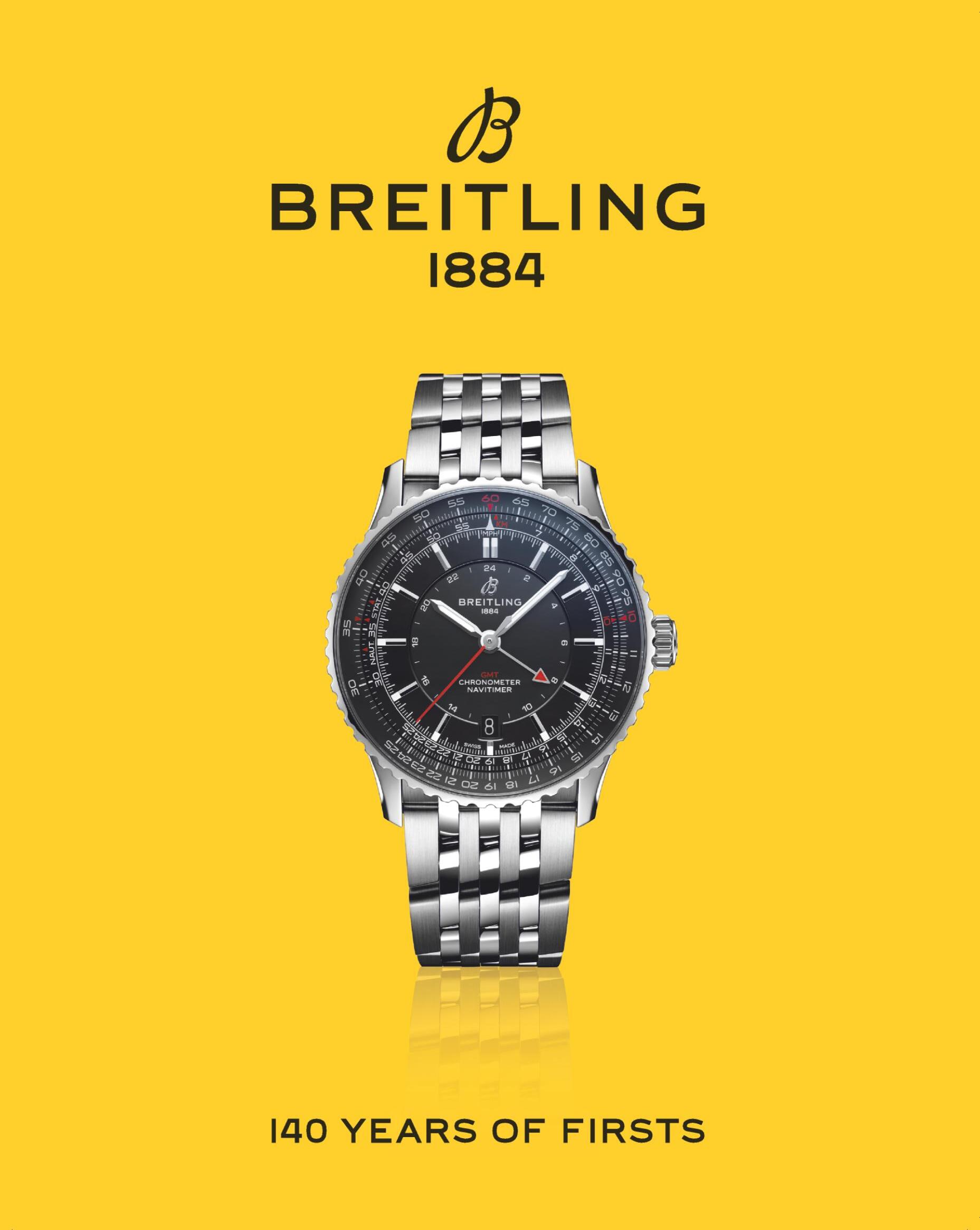

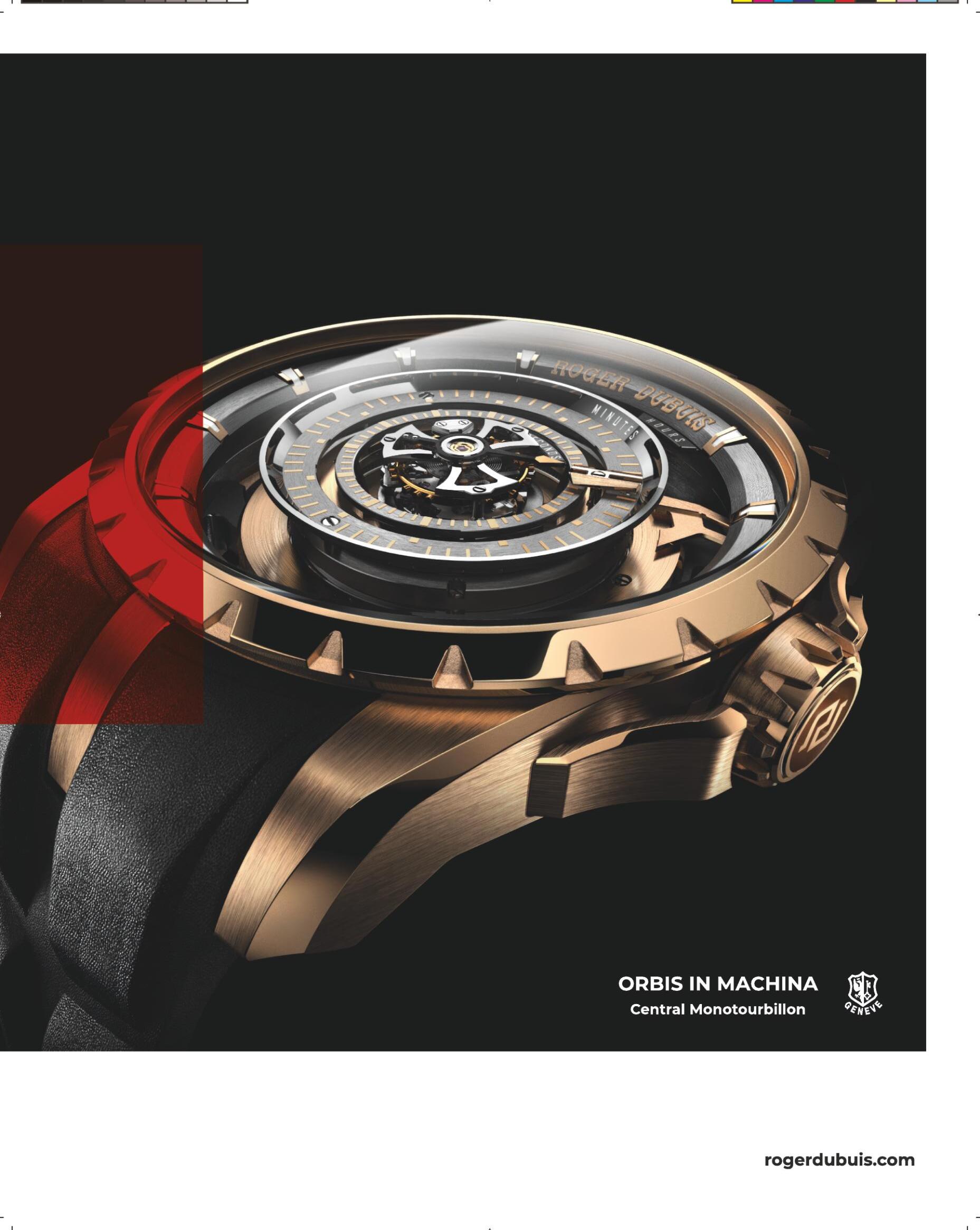

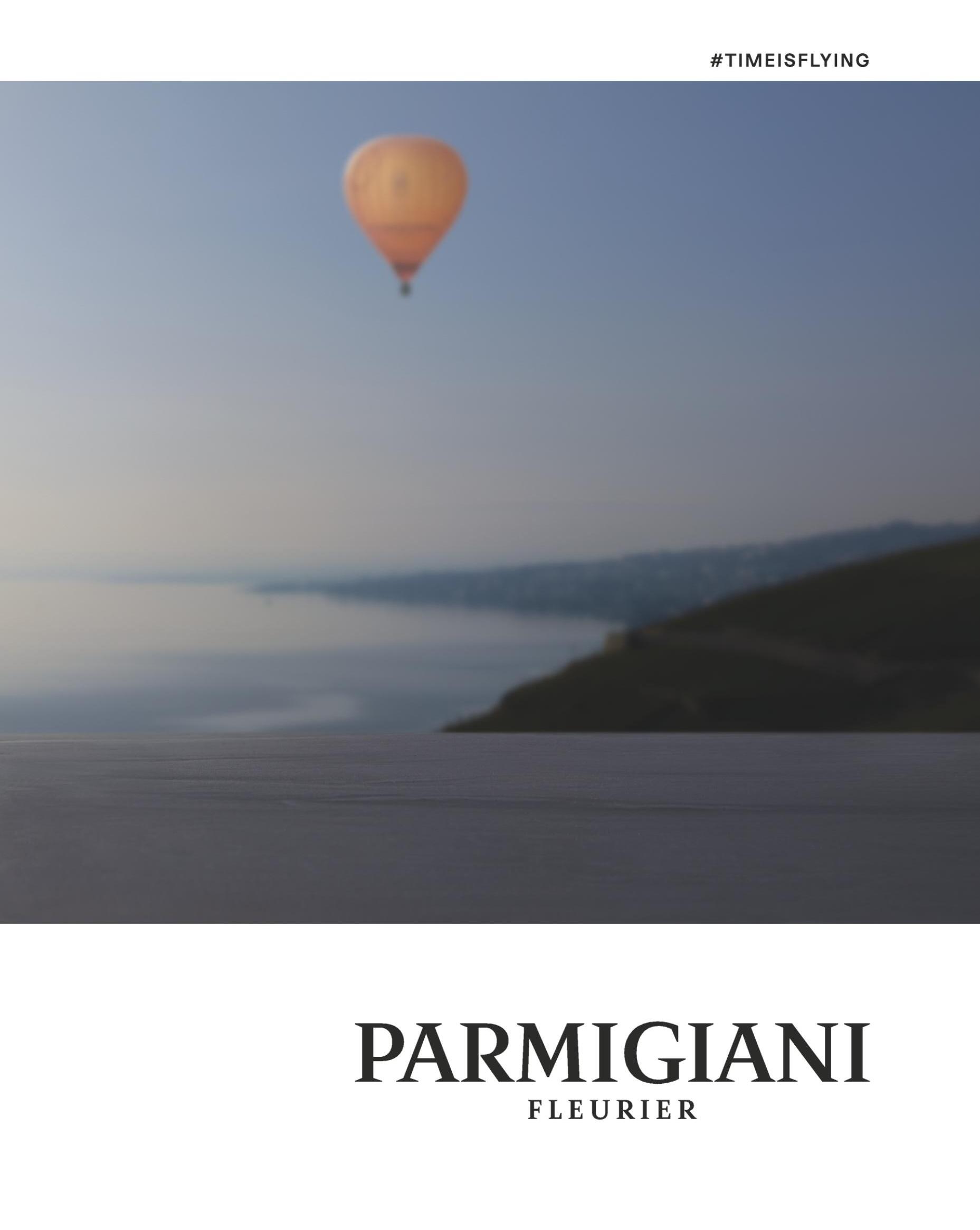
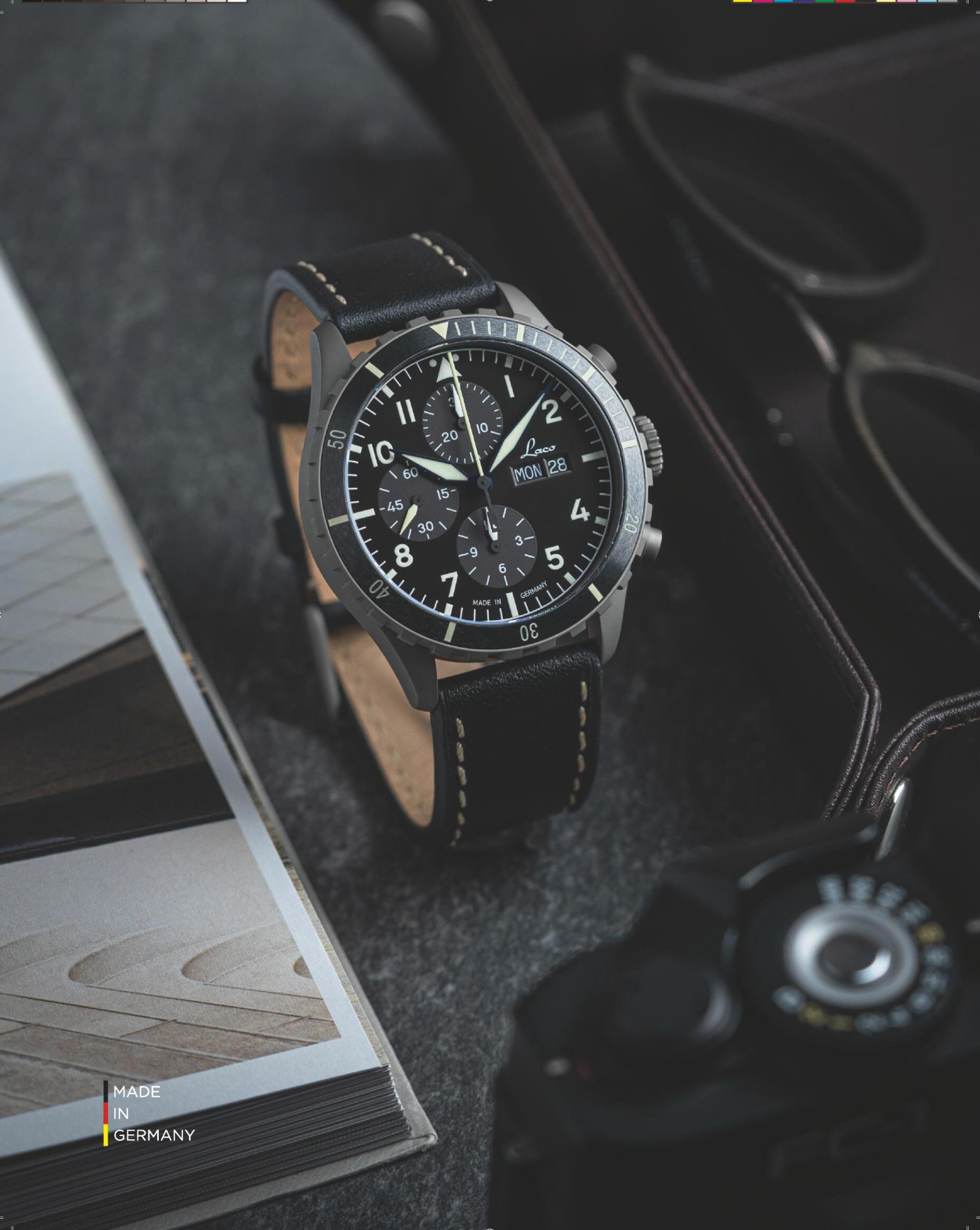

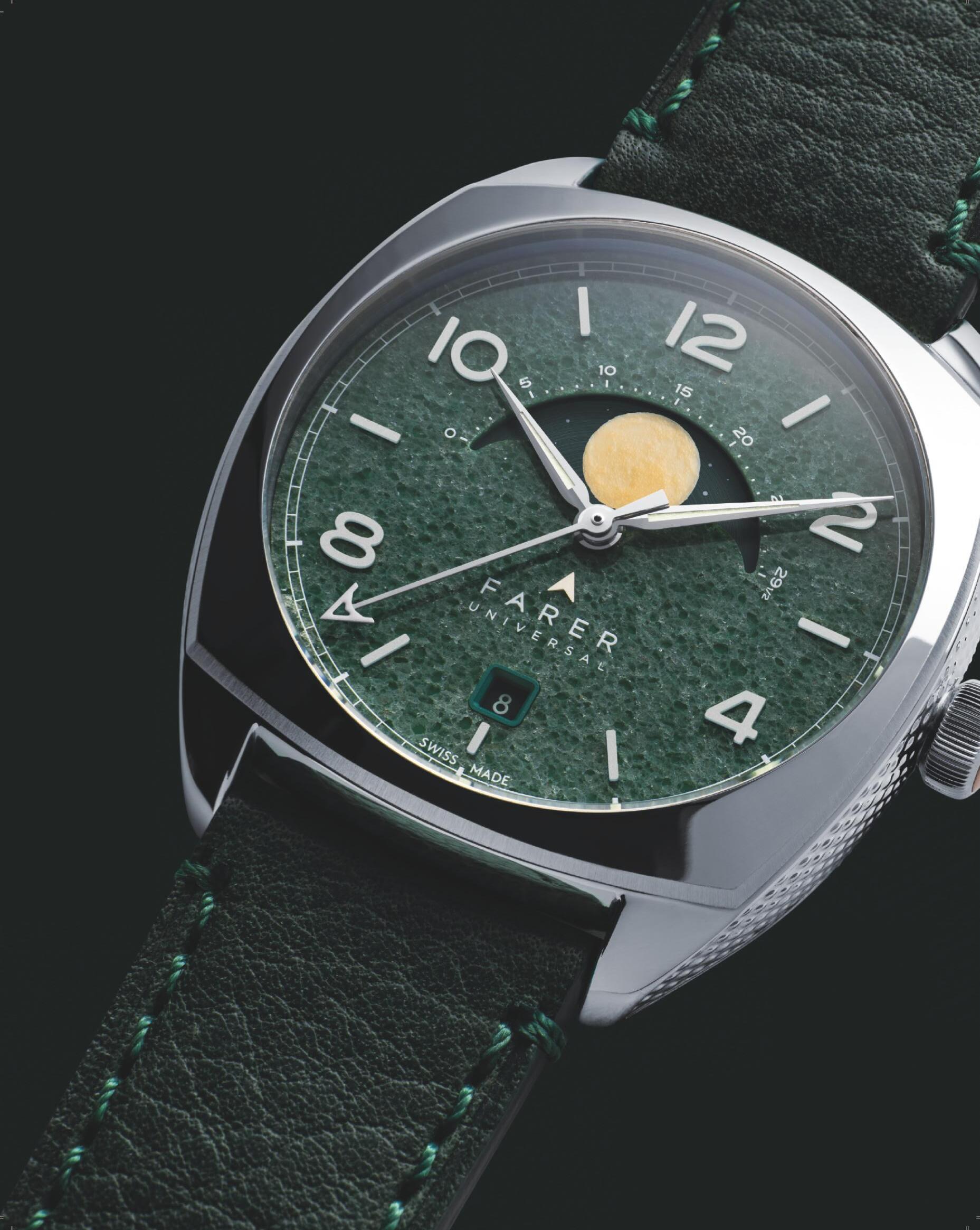
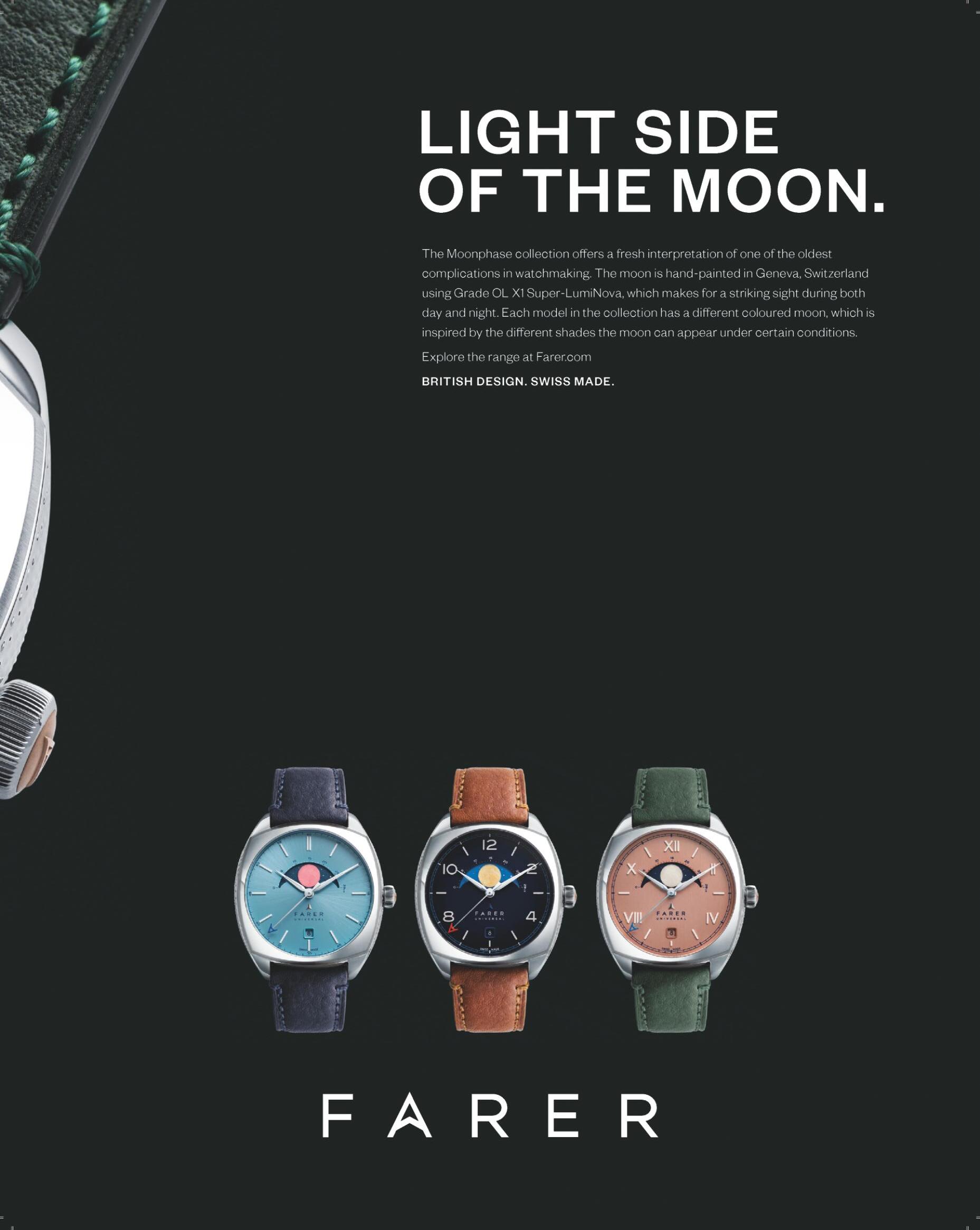

19 — AFICIONADO
Discover the best collaborations and what should be in your basket this month
25 — NEWS
What’s happening in the world of fine watchmaking and the luxury industry at large
34 — INTRODUCING
Your guide to all the latest and greatest watch releases from around the world
CONTENTS1
OT MAGAZINE / ISSUE 102
Their mission statement has pushed design and materials further than other brands would have. That mission statement? “If we can imagine it, we can make it. And if we can make it, will!”
Living in the Material Worldp40
40 — LIVING IN THE MATERIAL WORLD
From scratch-resistant to cricket-ready, we explore Rado’s history of style, shape and above all, materials
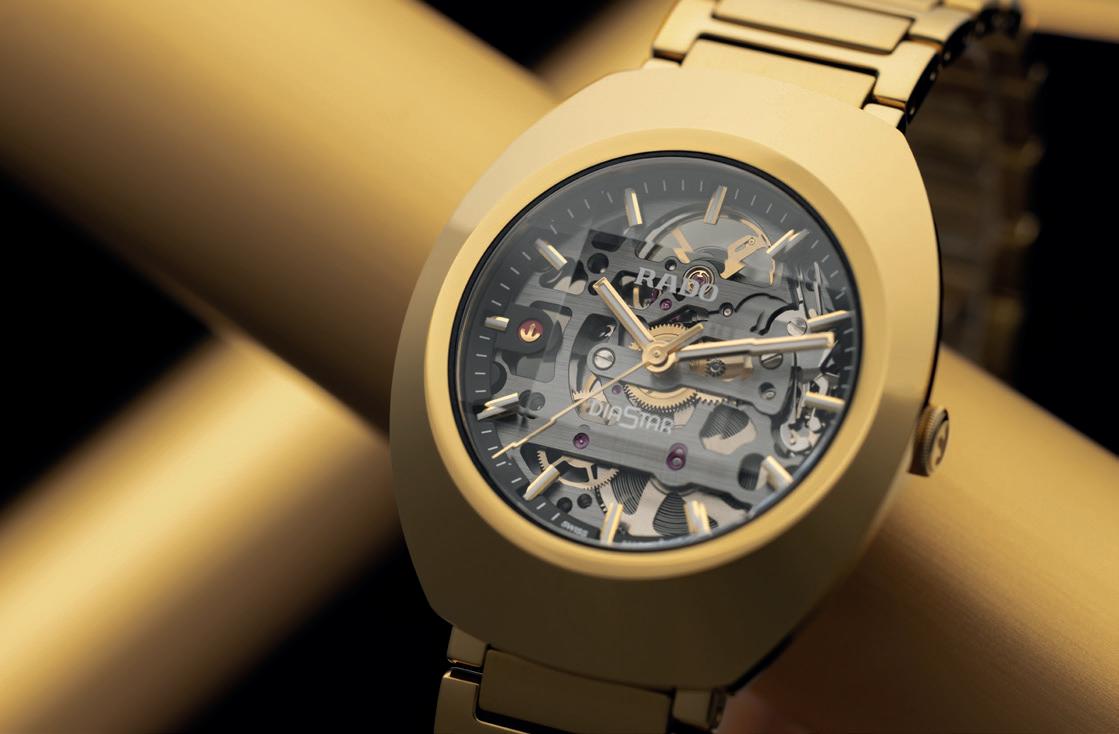
15
ORACLE TIME #102
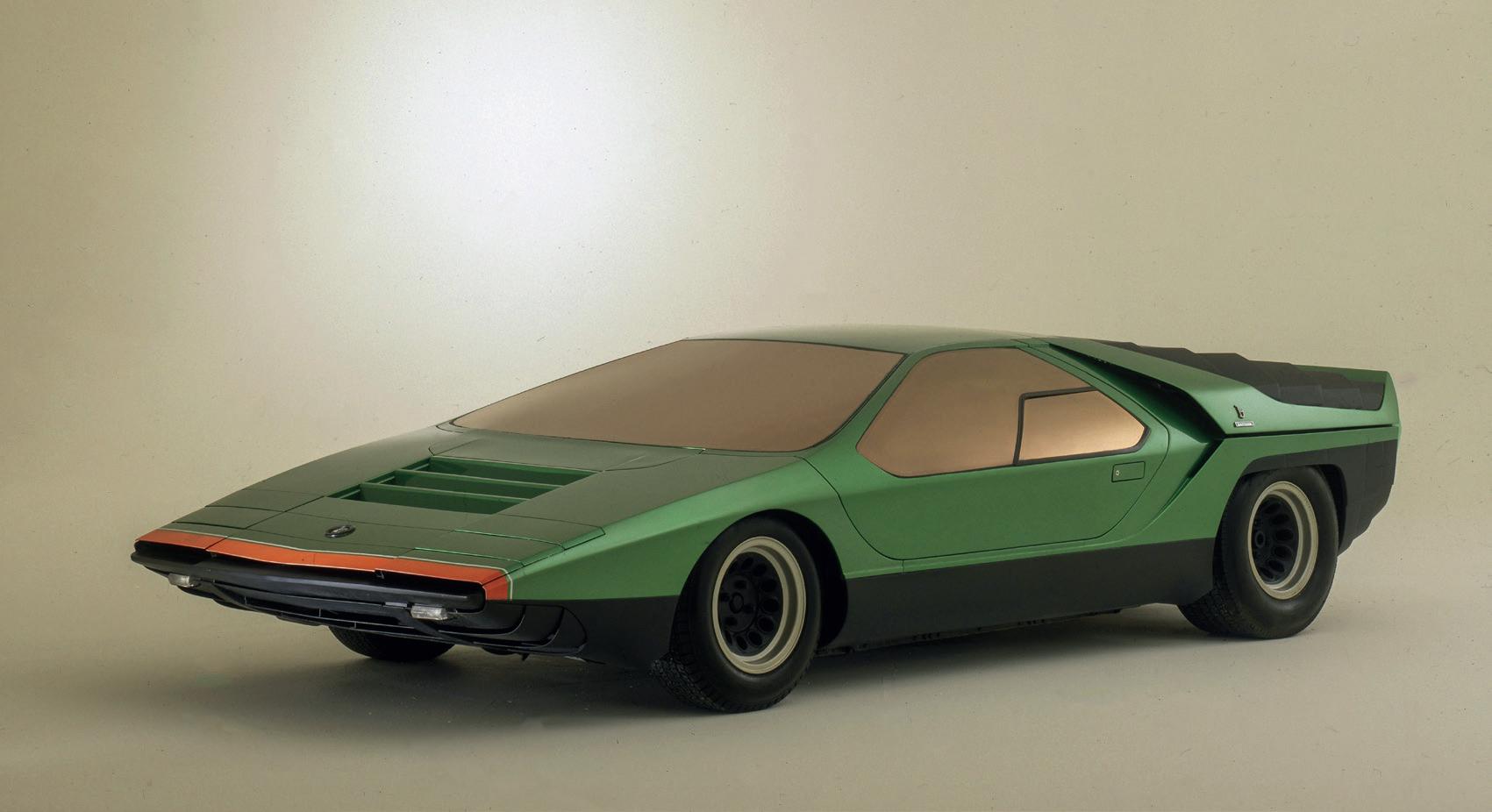



“There’s so much potential that it’s going to completely change the industry”
The
Insiders - p64
49 — THE ORACLE SPEAKS
Pitting the movement-making giants at ETA and Sellita against each other
55 — SKELETONS IN THE WATCH CLOSET
Exploring the best skeletons in the industry’s watch closet
64 — THE INSIDERS
The leading figures in modern watchmaking reveal what they think about their industry
77 — A GUIDE TO THE OUTDOOR WARDROBE
It’s time to spring outside in your new technical outdoor wardrobe
87 — FACE VALUE
Funky guilloche and intriguing textures and colours abound in our photo shoot
97 — THE COURAGE OF MARCELLO GANDINI
The car designer is most famous for the Countach, but his legacy goes far beyond that
107 — STATE OF THE INDUSTRY
Adding up the numbers behind the biggest movers and shakers in the watch industry right now
115 WATCHES WOMEN WANT
The men’s timepieces that are irresistible to the most influential women in watches
125 — INTRODUCING ENDO KAZUTOSHI
Discussing the secret of Edomae sushi with the master sushi chef at The Rotunda
133 — WATCH REVIEWS
We get hands-on with watches from Stella, Junghans, and Roger Dubuis
145 MICROBRAND CORNER
All the latest and greatest brands from the world of independent watchmakers
148 — IN FOCUS
The definitive Russian watch brand, statuesquely secure safes, and no-nonsense tool watches
16
CONTENTS2
97 87 125 64
ORACLE TIME #102
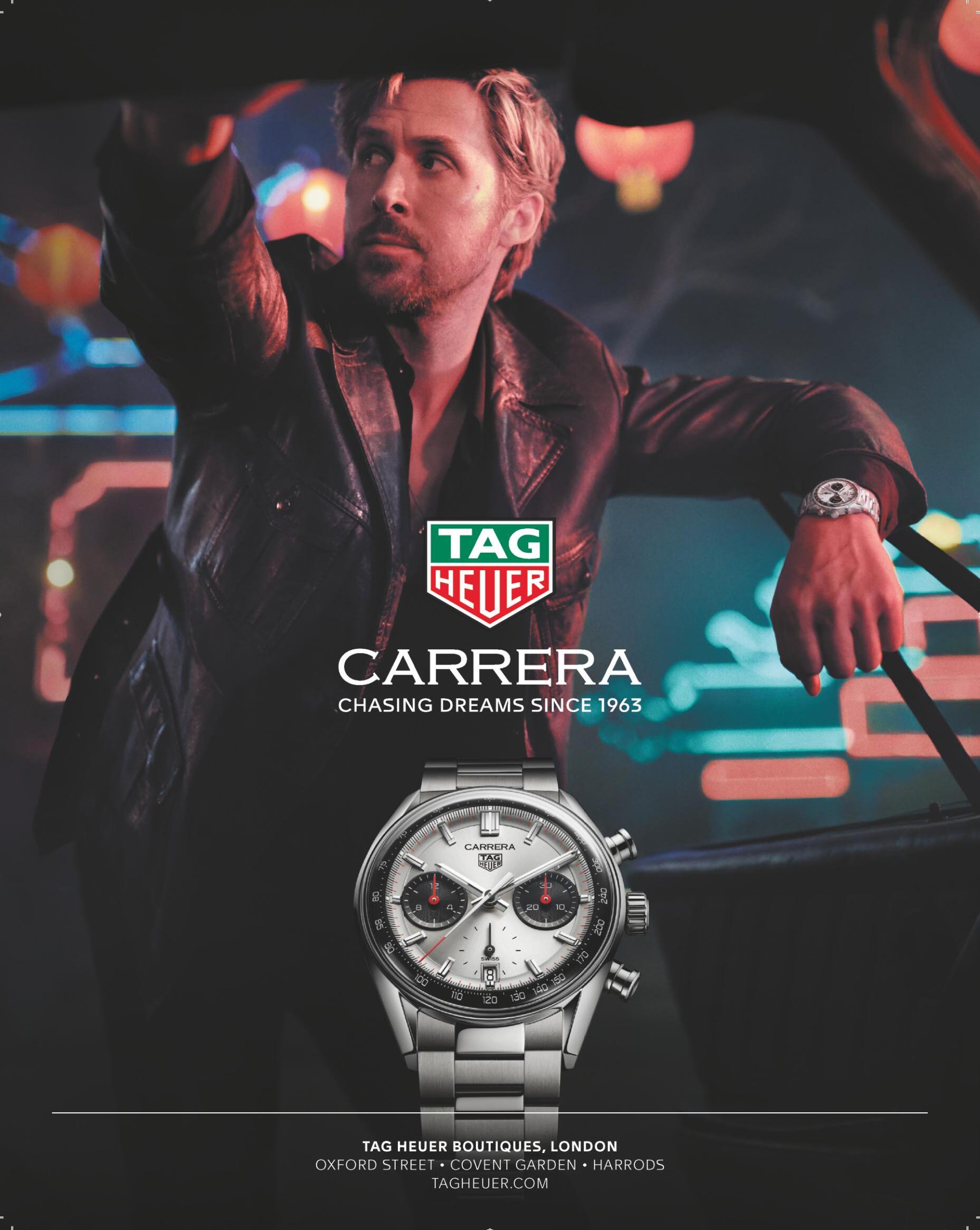
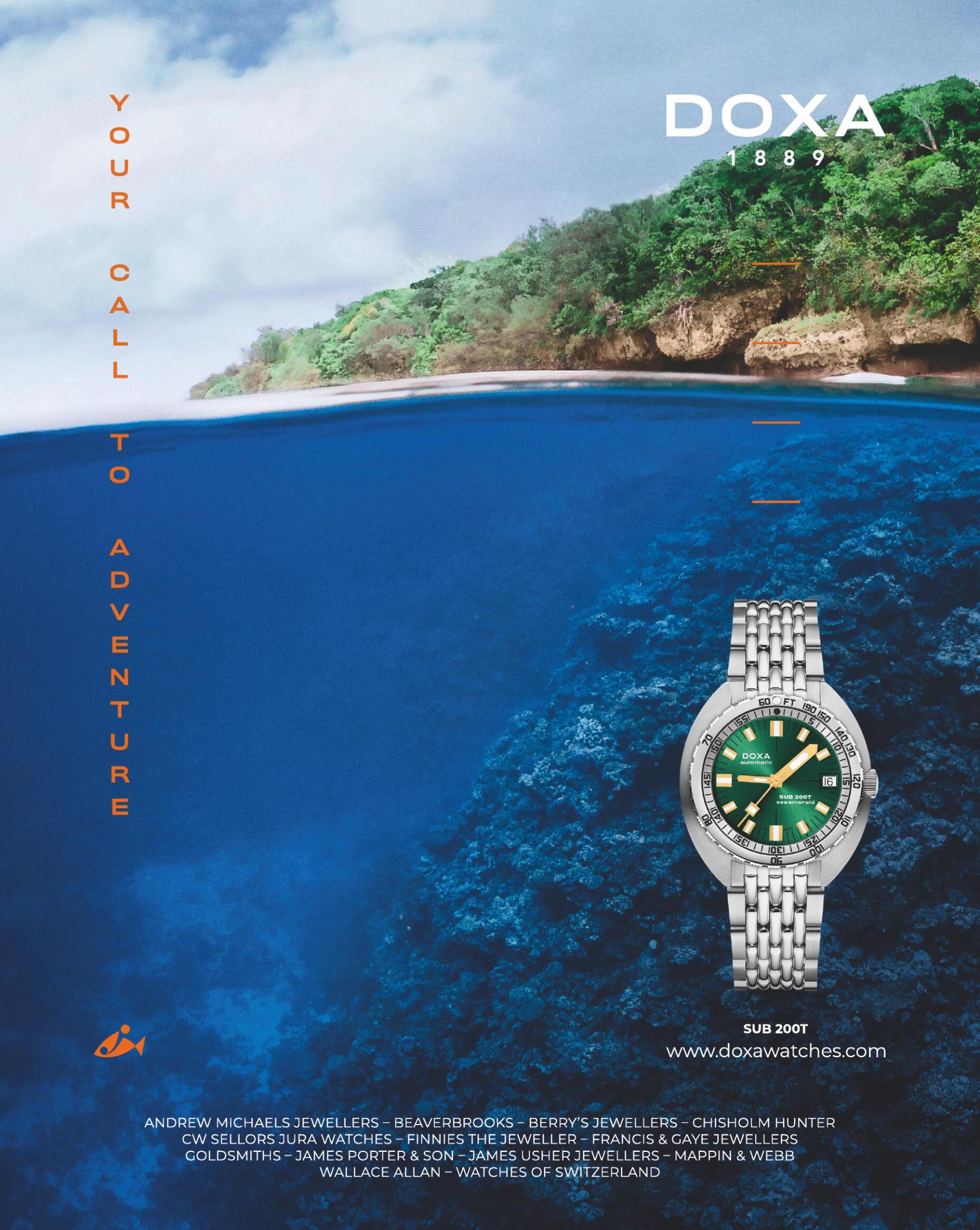
aficionado
The coolest collaborations in the world right now

LOUIS ERARD X ALAIN SILBERSTEIN
The watch collab that just keeps on giving, Louis Erard’s distinctive focus on the rarely made regulator is a fantastic platform for the Bauhaus-flavoured design of architect Alain Silberstein. A regulator, briefly, is a watch where seconds, minutes and hours are all separate, and the latest maintains that split. The difference is that the second hand is also the tourbillon cage, riffing on the previous formula with a haute horological twist. Otherwise, it has the same colourful outlook the partnership’s known for, with different shapes in red, yellow and blue. It’s hard not to love –although don’t go thinking this is anything other than a serious watch, even if it’s sub-£14,000 price tag is solid for any tourbillon.
CHF15,900, (approx. £13,900), limited to 78 pieces, louiserard.com
19

LOUIS VUITTON X TYLER, THE CREATOR
Since taking over at Louis Vuitton, Pharrell Williams is apparently tapping his music industry friends for their own design talents. He’s now enlisted rapper Tyler, the Creator for his own capsule collection. This isn’t Tyler’s first time working with LV; he’s previously written the soundtrack to their AW 2022 show, but now he’s stepping in to fashion. The result is a graphic update of LV classics, from lightweight jackets to suits and shirts, and plenty of shoes and accessories. It’s a pretty substantial capsule. The highlight is the range of Louis Vuitton’s famous bags (including the Keepall Bandouliere for £2,400) with a colourful, floral take on the house’s iconic monogram. Music or fashion, collaboration works – and Pharrell knows it. Discover the full collection at uk.louisvuitton.com
20
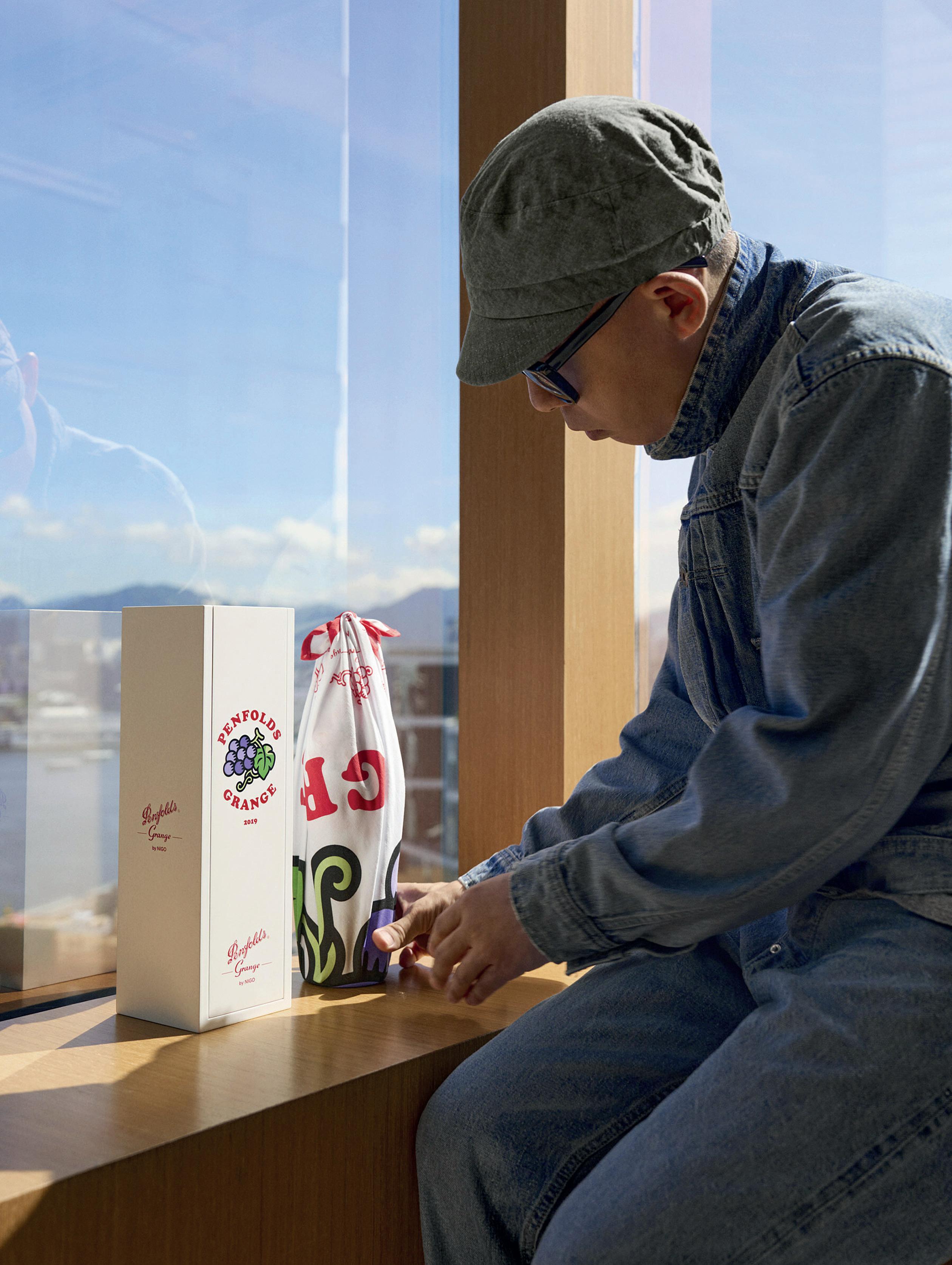
NIGO X PENFOLDS GRANGE
Outside of insular circles debating between Bordeaux and Burgundy, Australian label Penfolds Grange represents some of the finest wines in the world – and for their 180th anniversary they’re pairing their superb vintages with Japanese designer and DJ, NIGO, he of BAPE and Kenzo fame. The collab’s taken the form of special gift sets of 2019 Grange in 750ml and magnum sizes, with the bottle joined by a bandana and bottle neck tag, both designed by NIGO. It’s a fun, bold and graphical style that matches the distinctly modern winemaker perfectly. The design has also been channelled into a round silk rug, but with only 25 of those available they’re best suited to only the most street of wine cellars.
Bottles: AUD$1,350 (approx. 700), limited to 1,500 Magnums: AUD$3,100 (approx. £1,600), limited to 150, penfolds.com
21 aficionado

SAMUEL ROSS X KOHLER
Having dipped his toe in the waters of bathroom specialist Kohler with an eye-catching faucet last year, A Cold Wall* founder (and Hublot collaborator) Dr. Samuel Ross is upping his plumbing design with a toilet. Yes, the protégé of Virgil Abloh has designed a toilet. Fortunately the Formation 02 smart toilet is pure Samuel Ross, from its asymmetrical construction to that intense orange. The idea is to undermine what we think a toilet should look like and the textured finish here is nothing if not sculptural, in a distinctive, brutalist way. Unexpected cut-outs, unusual materials and a functional approach to off-kilter shapes, it’s design at its most disruptive. It’s also a $25,000 toilet, so take that how you will. kohler.com
22 aficionado
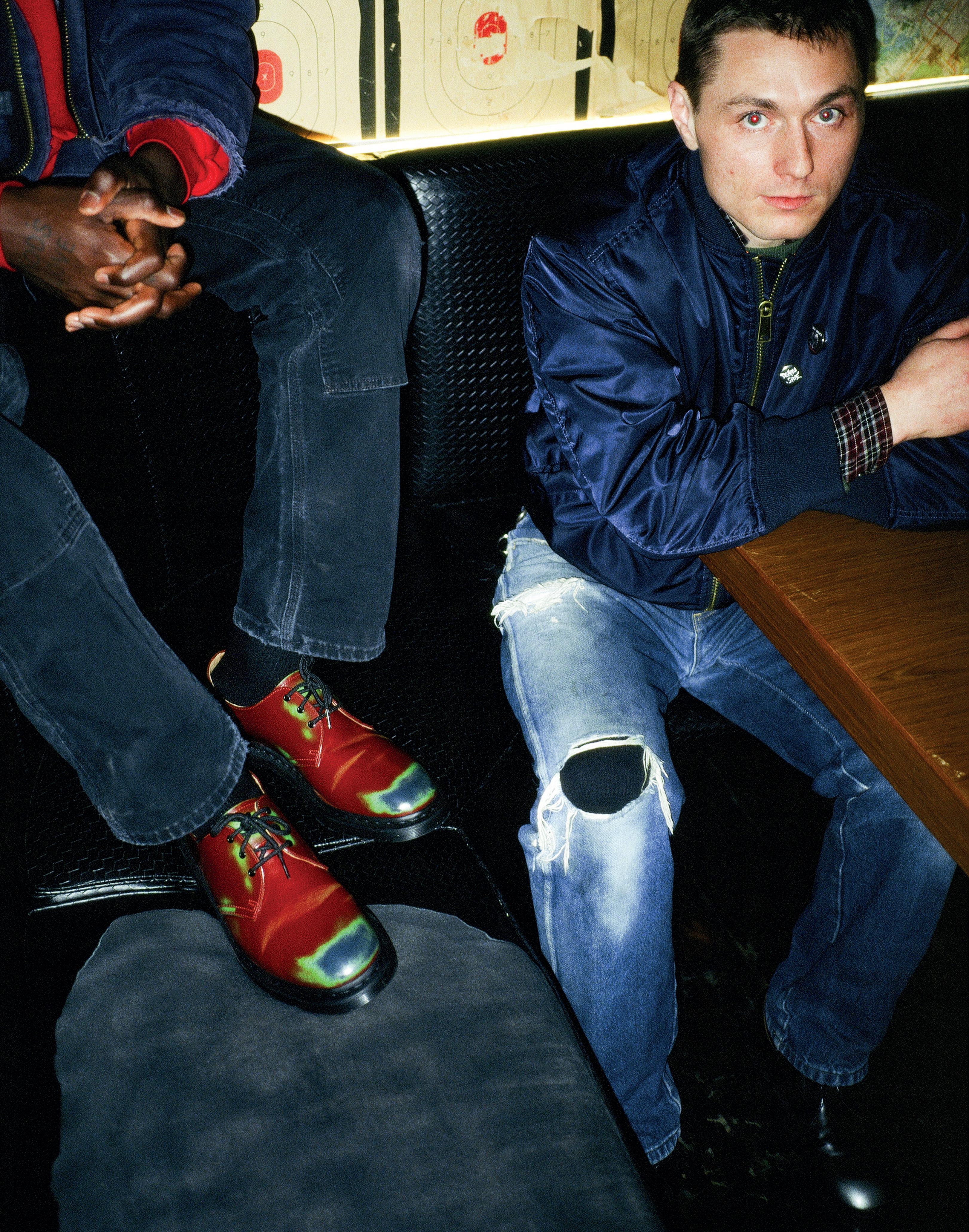
SUPREME X DR. MARTENS
The recipe for counterculture hype has once again been rolled out with a new collaboration between British brand Dr. Martens and the almighty Supreme, this time with the 1461 3-Eye Oxford at its core. A slightly different tack from their famous boots, the new take on what would otherwise be a classic silhouette has been given a colourful overhaul, in sleek black or brick red. It’s then finished with rub-off effects, a contrasting heat vision-esque blue and green underneath the red, and a silvery, metallic finish under the more subtle black. This might be one of the pair’s coolest releases yet – which means you’ll likely have to make do with ogling them on StockX. £168, uk.supreme.com
23
 EDITED BY Michael Sonsino
EDITED BY Michael Sonsino

SOLD OUT: CHRISTOPHER WARD X ORACLE TIME C65 DUNE SHORELINE
Congratulations to everyone who managed to secure a Christopher Ward x Oracle Time C65 Dune Shoreline. The sale of the watch was an immense success last month and we’re incredibly proud of the amazing reception that the watch has received. If you missed out, worry not, we don’t plan to stop our adventures into the world of collaboration watches yet. There are already a few projects in the pipeline and we can’t wait to share details with you all when the time comes!
THE LATEST FROM THE WORLD OF WATCHES AND LUXURY LIFESTYLE NEWS 25
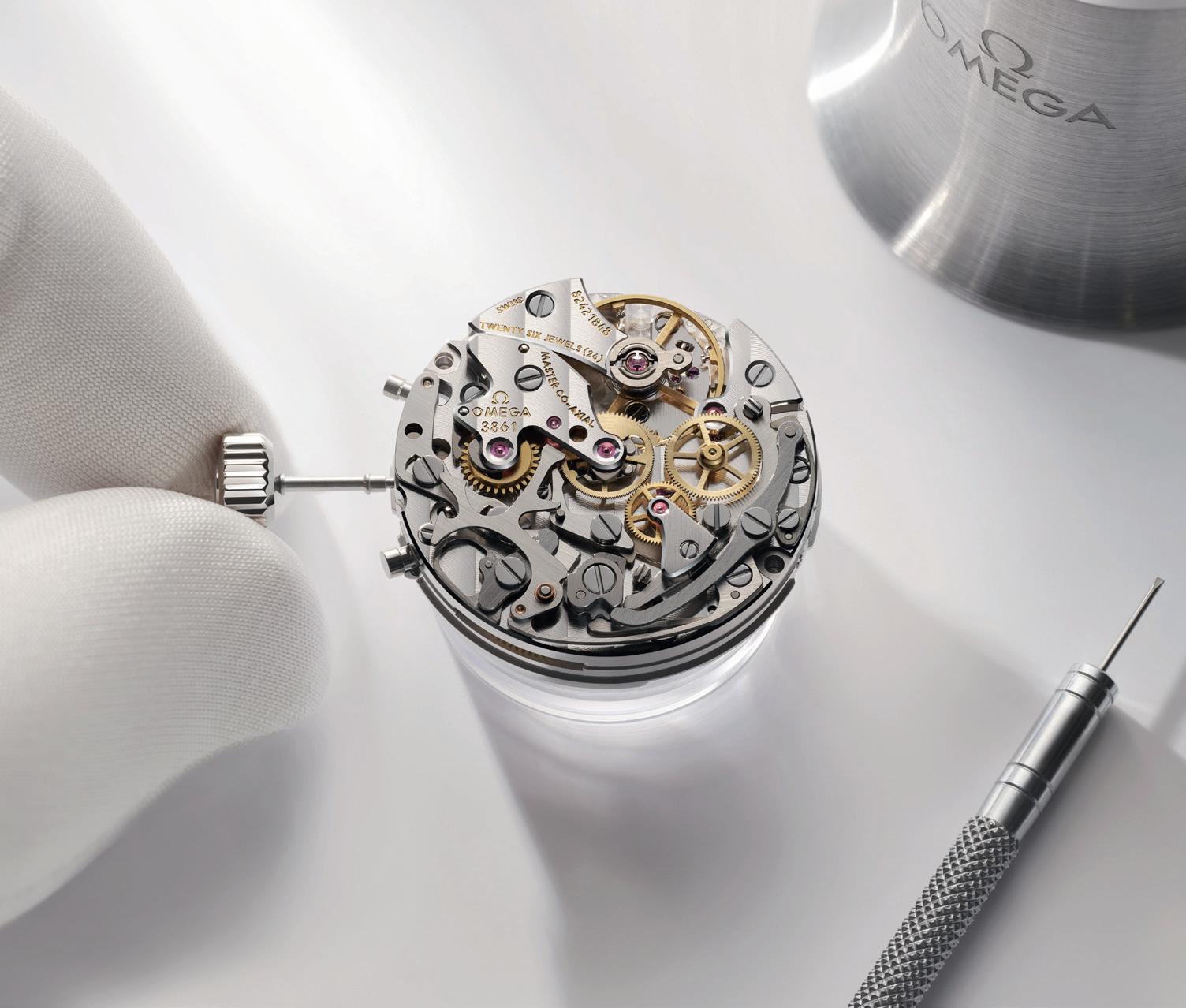
TRAILBLAZER WATCHMAKER APPRENTICESHIP
The Worshipful Company of Clockmakers, one of the ancient City of London Guilds, has backed a new initiative aimed at securing the future of watchmaking. The Trailblazer Watchmaker Apprenticeship is a two year programme in which participants learn how to service and care for quartz, manual and automatic watches, in addition to learning how to refurbish watch cases. This is not the first time the Worshipful Company of Clockmakers have been involved in education with prizes, grants and facilities made available previously. Learn more at clockmakers.org
[It] is a two year programme in which participants learn how to service and care for quartz, manual and automatic watches
OMEGA INTRODUCES DELABORATOIRE PRÉCISION
Omega have taken the next step on their horological journey with the creation of the Laboratoire de Précision. The lab is a brand-new independent testing centre accredited with the Swiss Accreditation Service to carry out chronometric tests on watch movements, as an alternative to COSC chronometer certification. While the lab is operated by Omega, this accreditation is proof of the lab’s neutrality and independence, meaning it is a reliable source of data and information. The Laboratoire de Précision tests above and well beyond the standard requirements of ISO 3159, with capacity to carry out round the clock testing with instruments 10-times more accurate than the industry standard.
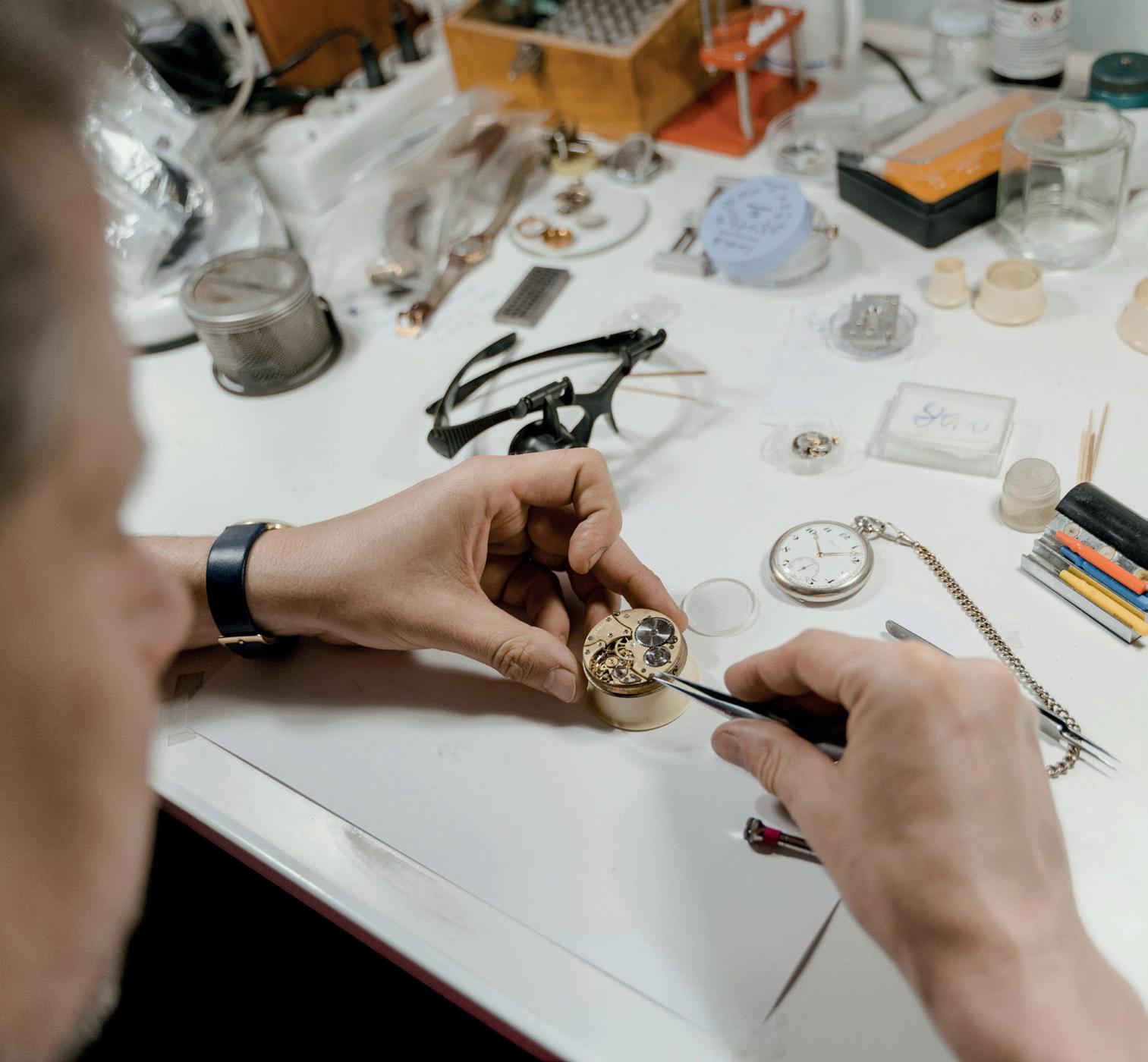
26 world news

LONDON CONCOURS AUCTIONS
This year the London Concours, one of London’s premier car shows, is set to include an auction hosted by Iconic Auctioneers. While they’re primarily known as a car, motorbike and automobilia seller, for the London Concours they’re expanding their range to include lifestyle objects like wristwatches and artwork by Turner Prize winner, Keith Tyson. The sale will take place at the Honourable Artillery Company on the evening of Wednesday 5th June. On the four-wheeled front one of the star lots is a fully restored 1969 Aston Martin DB5. Learn more at londonconcours.co.uk
While they’re primarily known as a car, motorbike and automobilia seller, they’re expanding their range to include wristwatches and artwork by Turner Prize winner, Keith Tyson
NEW TAG HEUER BOUTIQUE IN EDINBURGH
Laings is a family run, Scottish jewellery and timepiece retailer, with showrooms in Glasgow, Edinburgh, Cardiff and Southampton, and they have recently opened a new Tag Heuer boutique in Multrees Walk, Edinburgh. It’s a celebration of Scottish culture with the walls adorned in artwork by local artist Katy Sawrey, featuring a 3D Porsche sculpture in celebration of the connection between Laings, the iconic German marque, and Tag Heuer. As you’d expect, the boutique stocks all of Tag Heuer’s signature lines, such as the Monaco, Carrera, Aquaracer and Formula 1.
More details at laingsuk.com
It’s a celebration of Scottish culture with the walls adorned in artwork by local artist Katy Sawrey

27
world news

BLANCPAIN
LAUNCH BEYOND THE SURFACE PROGRAMME
Blancpain and The Economist have come together to launch a new environmental conservation programme called Beyond the Surface. It comes as part of their Ocean Commitment that aims to explore and protect the world’s oceans. The new scheme aims to monitor and research Marine Protected Areas to study their impact on surrounding areas and to ensure they are being managed and protected appropriately. The data gained through this project is designed to inform decisions by global governments and inform the wider public of challenges facing these fragile habitats. Learn more at impact.economist.com
The new scheme aims to monitor and research Marine Protected Areas to study their impact on surrounding areas
THE 1916 COMPANY GROWTH
Six months ago, a collection of American and international jewellers and watch retailers joined forces under a single banner. Those retailers were WatchBox, Govberg, Radcliffe and Hyde Park Jewelers, now known collectively as The 1916 Company, whose name honours the year Govberg was founded. Following a successful first six months of operation they have announced some serious growth with the appointment of a new Chairman and CEO, as well as the launch of their official website and a series of new boutiques in Baltimore and Philadelphia in 2024. Discover their website at the1916company.com

28 world news

MCLAREN ANNOUNCE FUTURE DESIGN DNA
McLaren automotive have announced the core principles that will guide their design language going forward. These principles are: Epic, Athletic, Functional, Focused and Intelligent. Epic denotes sensory excitement – the driver experience. Athletic is a dedication to lithe shapes and taut bodywork. Functional is a commitment to technological advancement. Focused is the belief that performance is the ultimate goal. Intelligent is all about innovation. What this translates to in design terms is the adoption of a new ‘performance line’ visible through the cars’ profiles as well as new wraparound cockpits.
SKY BROWN SKATES ON THE RIVER THAMES
At just 15-years old Sky Brown is already a two-time skateboarding world champion. That fact alone makes her one of the coolest people on the planet. When I was 15 I don’t think I did anything more exciting than sit in bed reading Lord of the Rings for the first time. To add to her cool points, she was seen riding a Tag Heuer branded half-pipe between two London doubledeckers floating on a barge on the Thames in front of Tower Bridge. The stunt is part of Tag Heuer’s on-going commitment to supporting sporting excellence and charity with the half-pipe subsequently gifted to a charity-run skatepark in Nottingham.

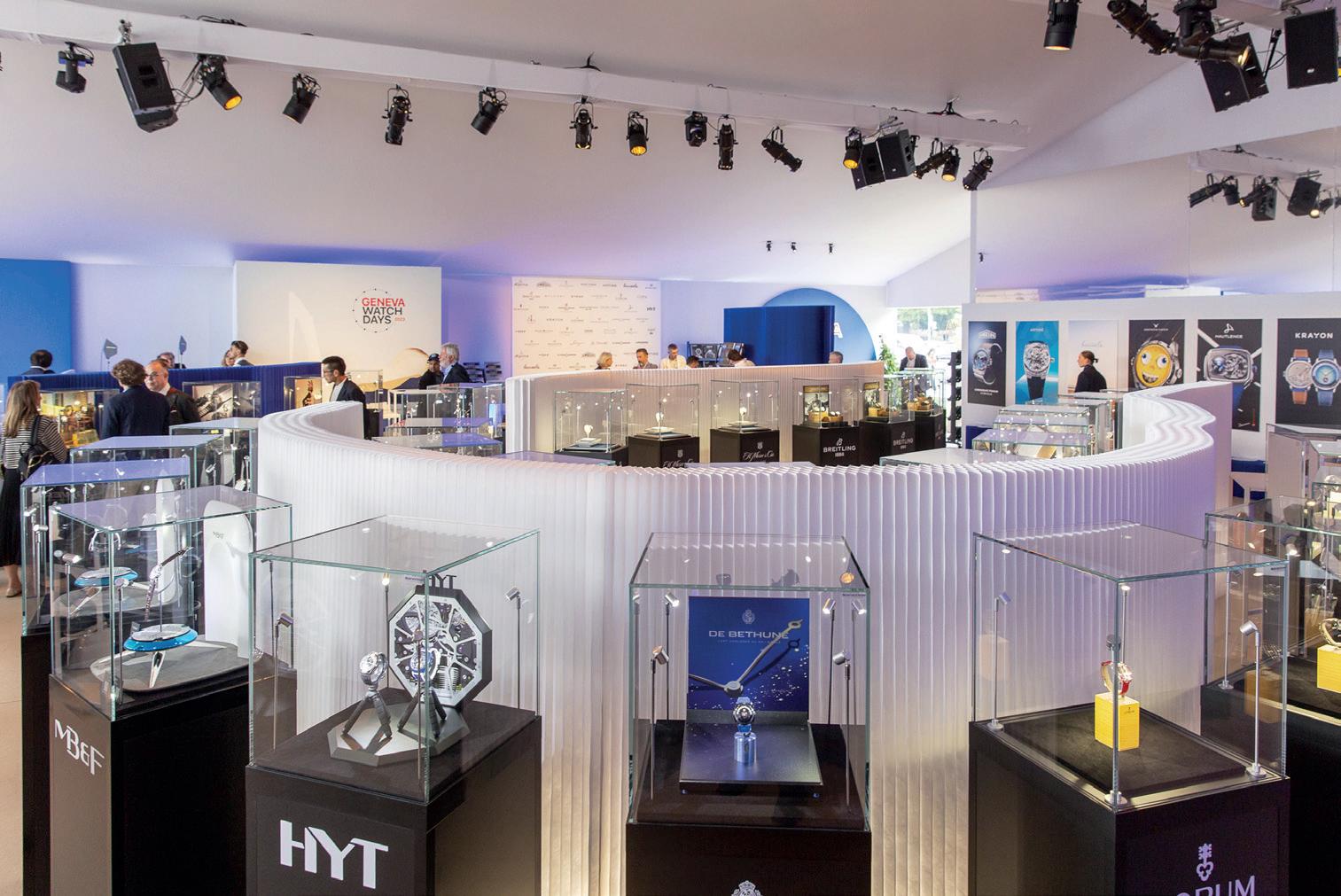
GENEVA WATCH DAYS 2024
By the time this magazine arrives at your door, Switzerland’s most prestigious watch fair, Watches & Wonders, will be well underway. However, it’s not the only event set to take place in Geneva this year, as Geneva Watch Days has announced its 2024 dates. Taking place from 29th August to 2nd September, it’s set to be the largest edition of the event so far, with 51 participating brands including several first-time attendees, such as Daniel Roth, Ming and Fortis, as well as returning brands like Breguet and Blancpain. Learn more at gva-watch-days.com
29 world news
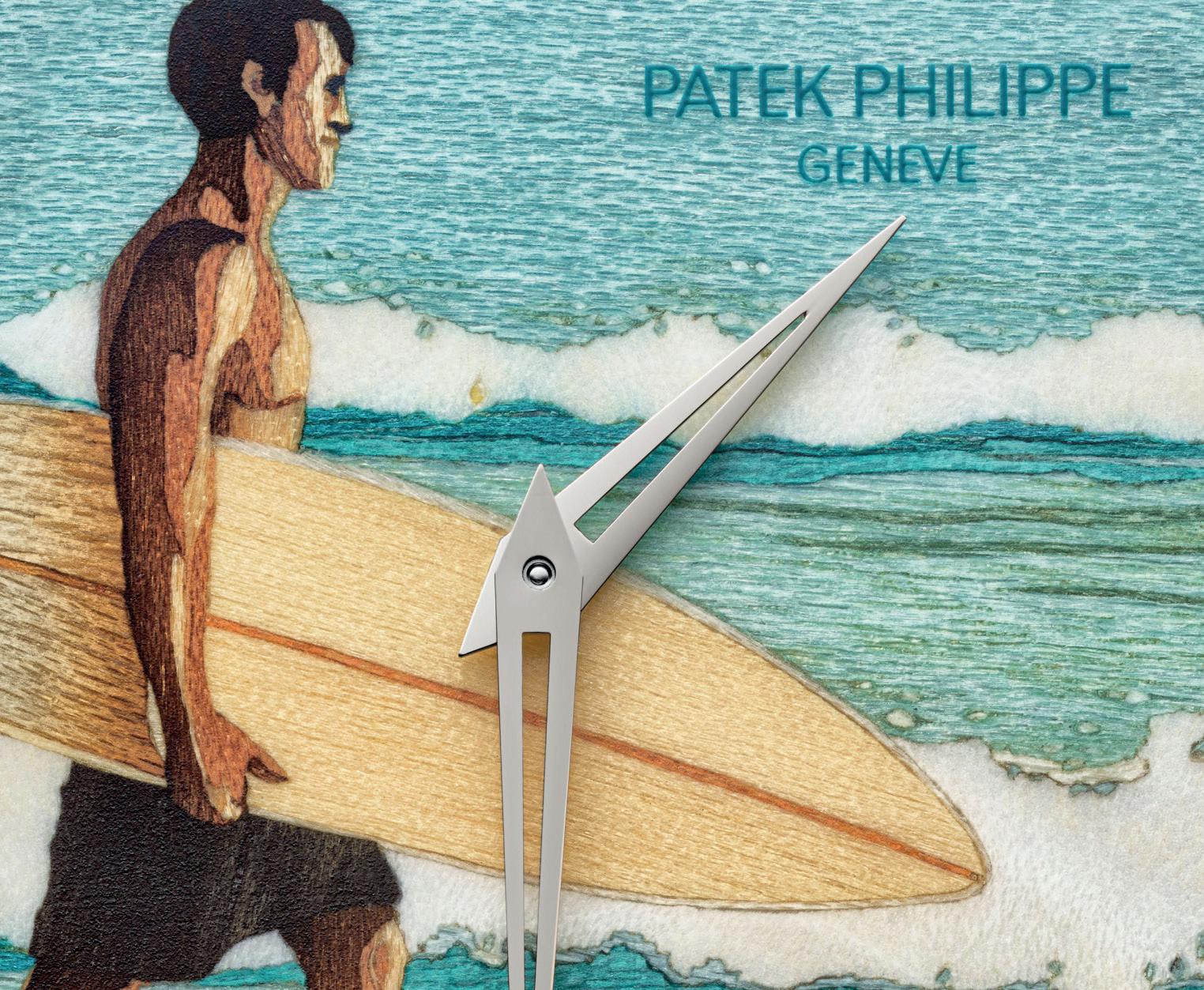
PATEK PHILIPPE RARE HANDCRAFTS 2024
Patek Philippe have announced their collection of Rare Handcrafts for 2024, a series of exceptionally detailed and precise watches that emphasise the importance of Metiers d’Art. They’re the equivalent to the Vacheron Constantin Les Cabinotiers that we featured in Issue 99. The highlight of the extremely rare watches is the Calatrava Ref. 5089G-129 Morning on the Beach, a cool, retro-looking image of a surfer at the beach made entirely from wooden marquetry. Other pieces include the Aigrette Pocket Watch.
Learn more at patek.com
BUCHERER OPEN ROLEX CERTIFIED PRE-OWNED LOUNGE
Last year one of the biggest stories regarding the world of watch retail was that Rolex bought the Swiss retailer Bucherer. At the time there was much speculation about how that would change the sales landscape and now we have the first example of those changes in reality. Bucherer have opened a bespoke Rolex Certified PreOwned Lounge in its Geneva flagship store. Essentially, we’re moving towards a world where new and vintage Rolexes will sit side by side in boutiques, occupying an even larger portion of the salesroom floor.


JAEGER-LECOULTRE NEW YORK FLAGSHIP BOUTIQUE
Jaeger-LeCoultre have opened a new flagship boutique in New York at 701 Madison Avenue. JLC have gone all out to turn this corner of the world’s most famous city into a little slice of Switzerland. That means the boutique features an authentic European café area called the 1931 Café and is also equipped to deliver Discovery Workshops – a programme of events usually only available at their atelier in Switzerland, giving patrons on the other side of the world an easier way to experience watchmaking in an intimate fashion. Discover at jaeger-lecoultre.com
30 world news
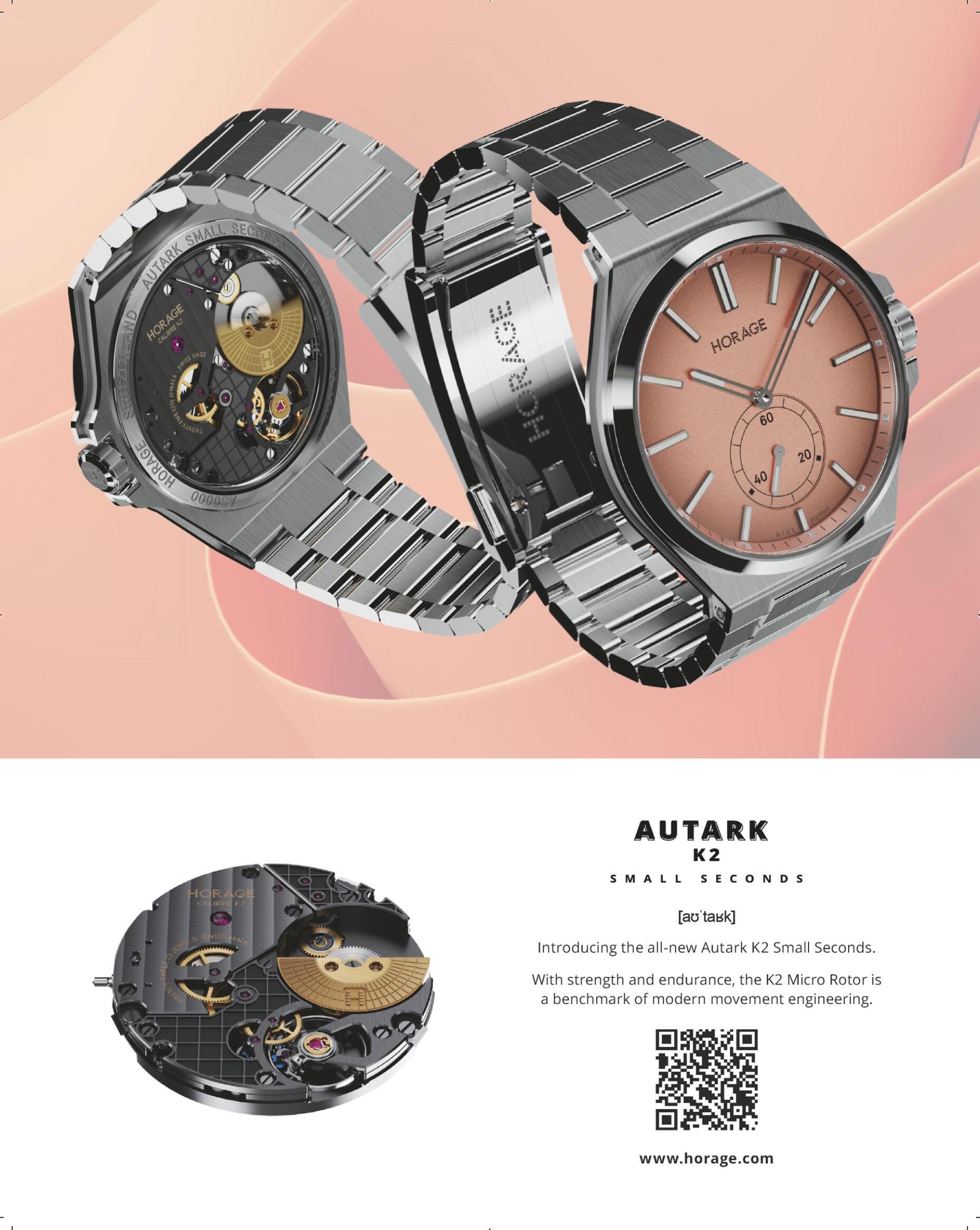
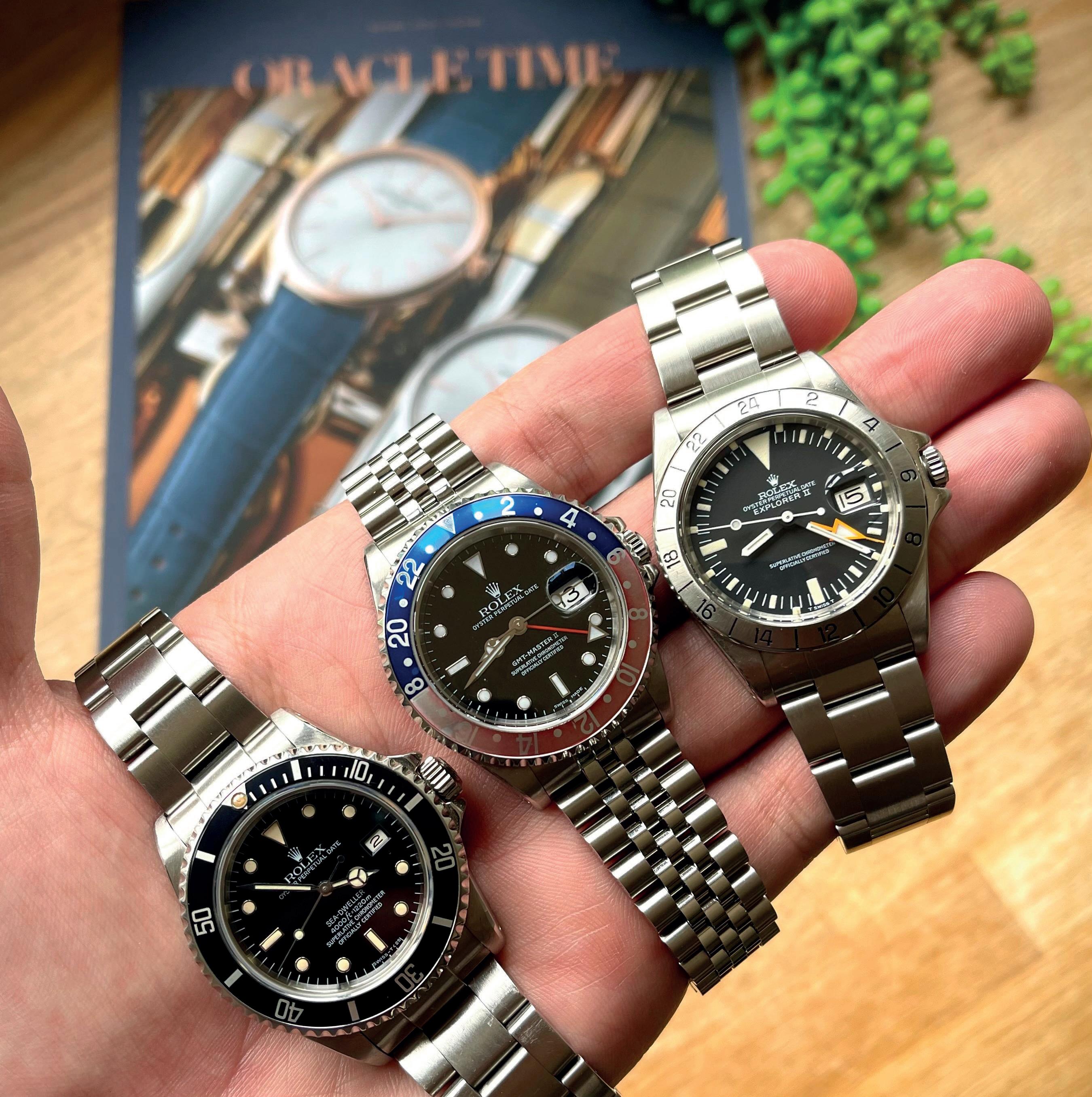
@pandlwatchcollection
Last issue we showcased what might be the most pitch-perfect classic dress watch of the year from the maestros at Vacheron Constantin. The pair of new Patrimony Manual-Wind models is pure 1950s vintage charm, suited to any wrist. Well, not any wrist. There are some collectors out there that simply prefer something more rugged, something that can take a knock or three and come out the other end looking better than ever. Watch lover Matthew Rose, better known as @pandlwatchcollection, prefers three – and what a three they are.
“My love for watches was embedded in me from a young age, and the Omega Speedmaster was my goal,” says Rose. “That romantic era of space travel was embodied in this time piece. But as happens to so many of us, all roads lead to Rolex. And more recently, vintage Rolex.”
And so, we have three superb sports Rolexes, the 16710 GMT-Master II, an incredible Triple Six Sea Dweller from 1985 (Rose’s birth year) and the 1655 Explorer II. All three showcase just why Rolex wears the crown and all three are in complete juxtaposition with the sporty Rado on our cover. Which is precisely why we love this shot.
“I’ve come to realise that dress watches should reflect who you are… so for me, a vintage Rolex will be my dress watch. And maybe a Speedy.”
Want to showcase your own eye for a perfectly composed watch shot? Well, get your hands on this issue, get snapping and don’t forget to use #oracletimeout for your chance to nab a page to yourself next month.
For now though, Oracle Time, Out.
32 time out
ORACLE TIME :OUT
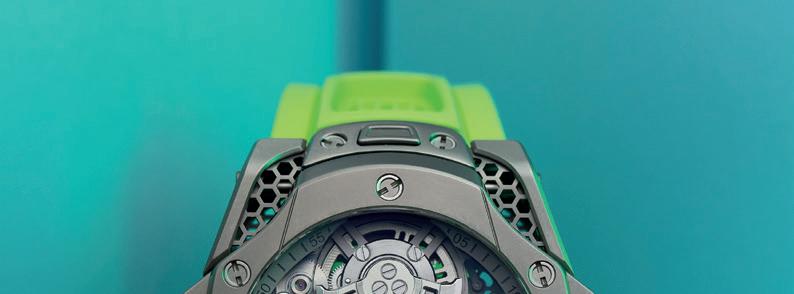
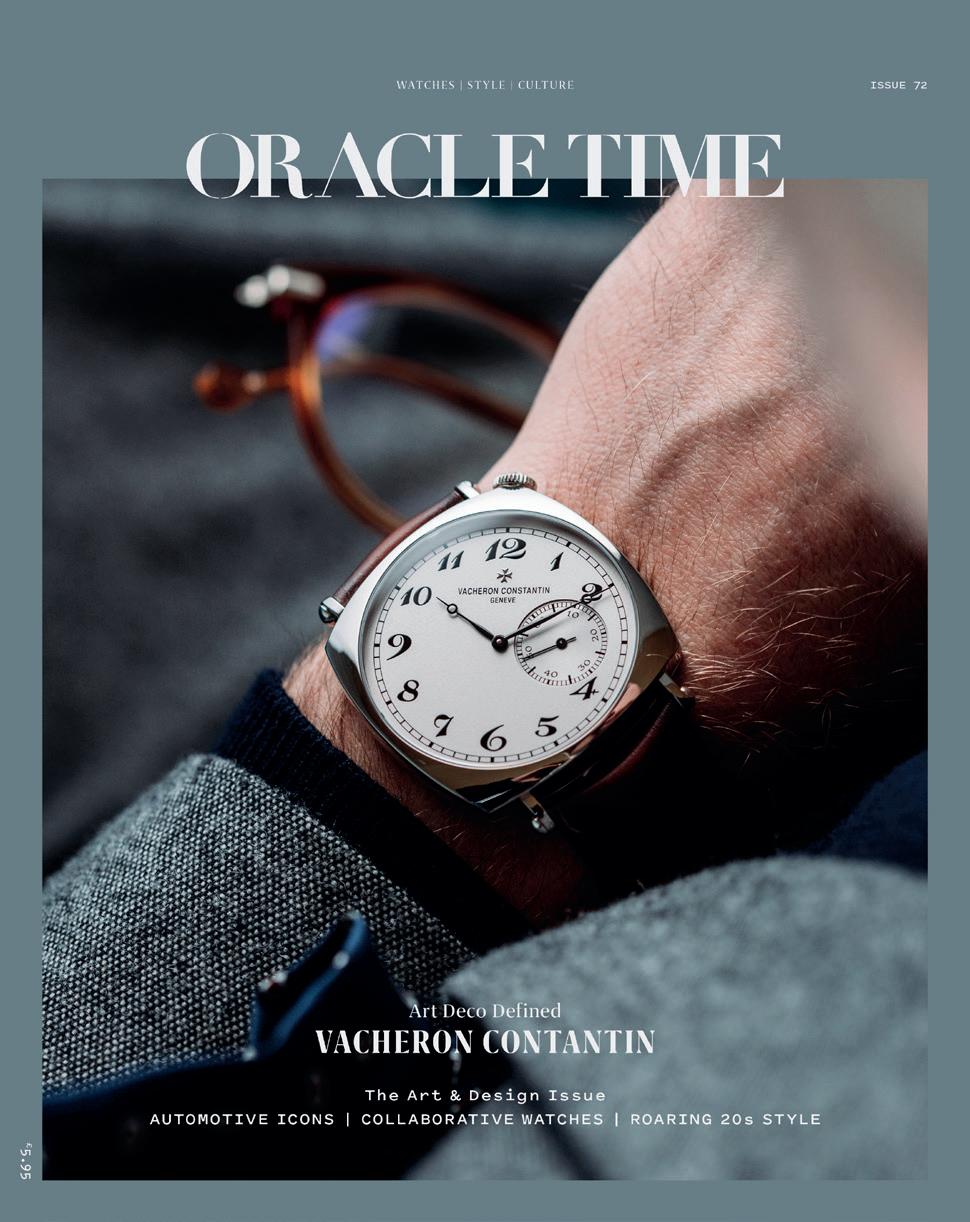
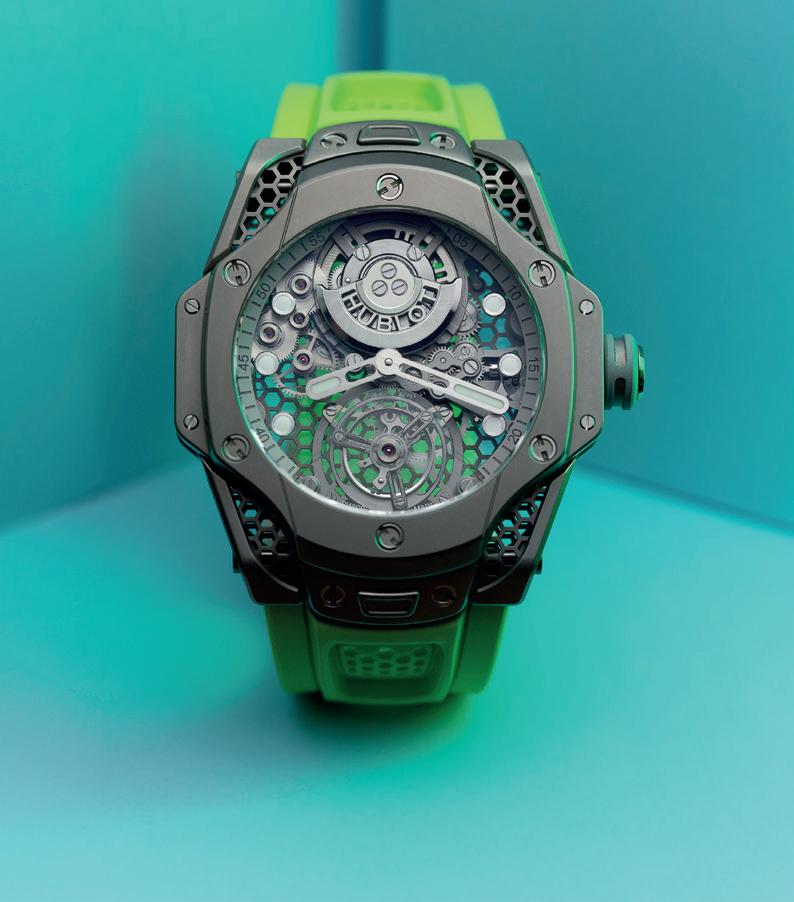


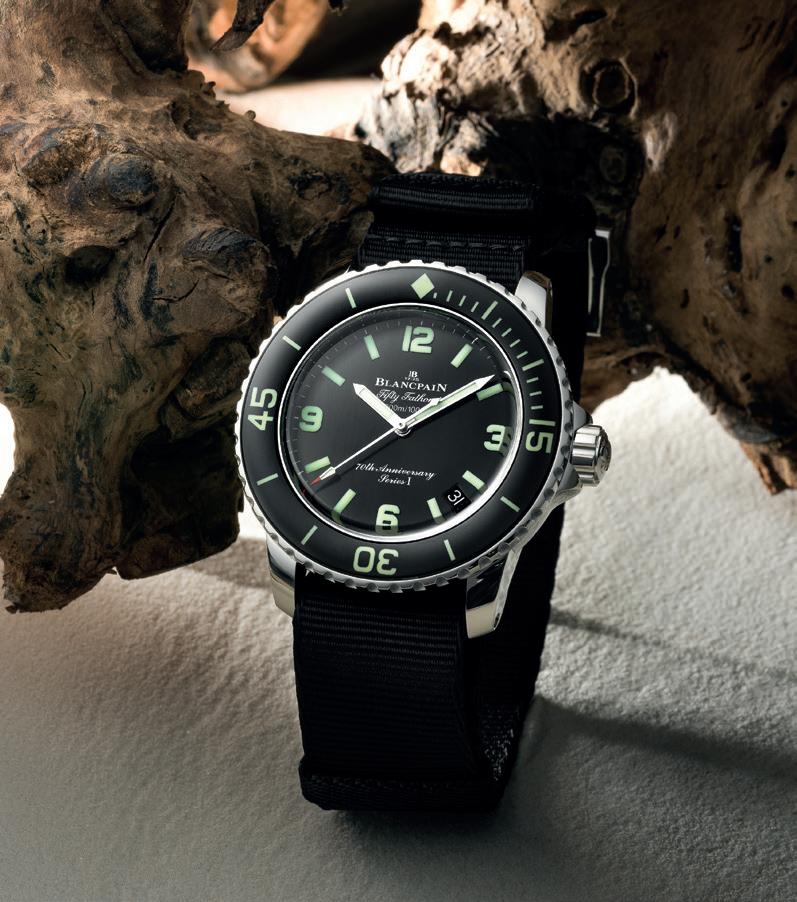
SUBSCRIBE
As you likely realise while reading these pages, there’s nothing like a glossy mag devoted to fine timepieces. So if you’re reading this without an annual subscription, you can sign-up to 10 issues of incredible watch-flavoured content - for £89.50, with plenty more perks besides the magazine to come.
Looking for even more? You can also find us on Instagram to share your thoughts and wrist shots, or YouTube, where you can see our latest video reviews and roundups. However you engage with the world of watches, we have you covered.
THE LIFESTYLE GUIDE FOR WATCH LOVERS WATCHES | STYLE CULTURE HUBLOT X SAMUEL ROSS WATCHMAKERS, CAR DESIGNERS & ARCHITECTS 9.96 WATCHES | STYLE CULTURE ISSUE 89 ELECTRIC RACING | IN-HOUSE STYLE | MICROBRANDS OF 2023 33
VISIT
YOUTUBE | INSTAGRAM OUR SOCIAL MEDIA CHANNELS
TO PRINT MAGAZINE
INTRO DUCING
The big news last month was of course Watches & Wonders, but despite Geneva’s Palexpo playing court to watchmaking royalty, both accessible and prestige, there was plenty more going on elsewhere in the city. After all, not every watchmaker is part of a big group.
So, to avoid cool timepieces being subsumed into the hype of Watches and Wonders, here are some of the coolest releases you might have missed from last month.
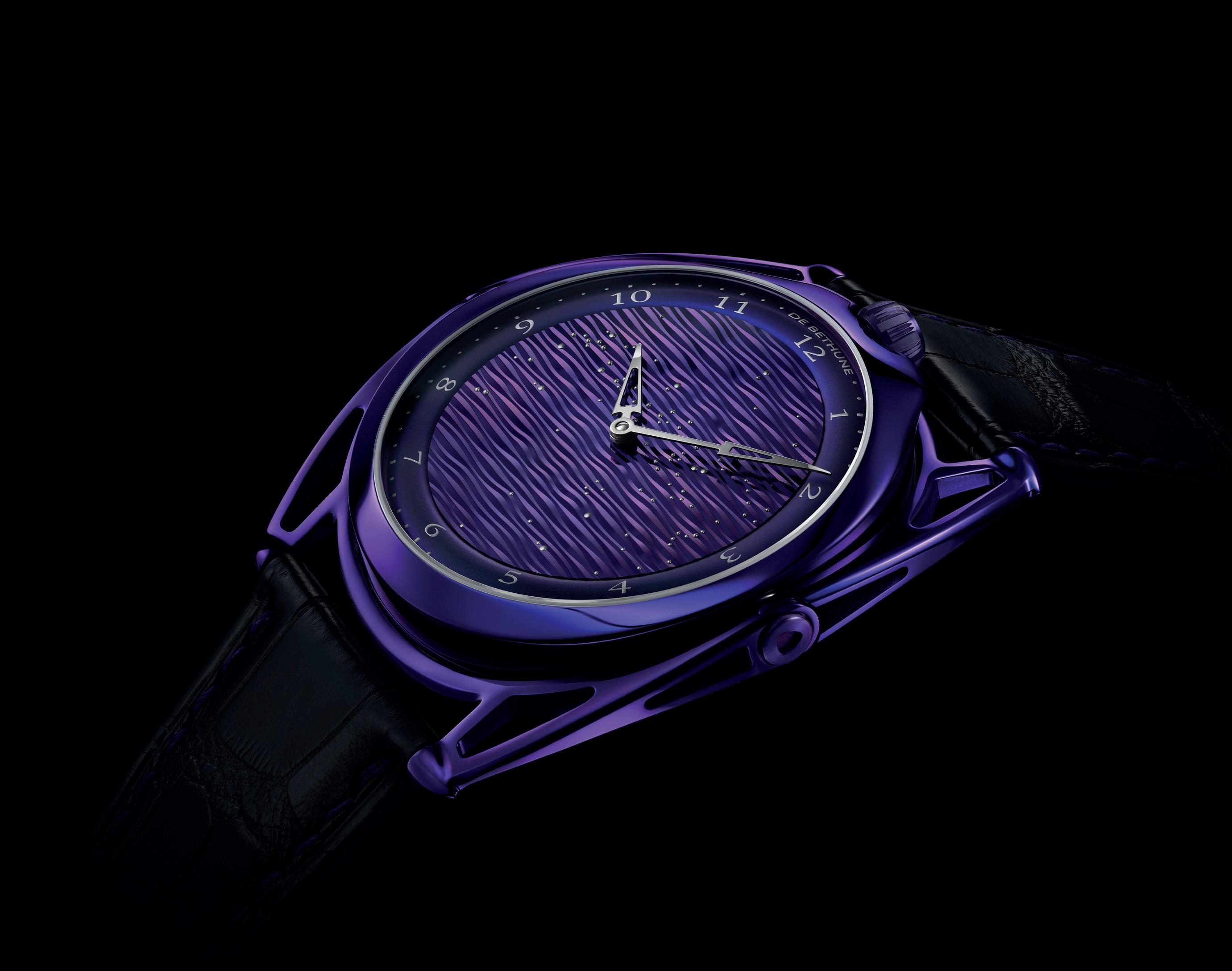
DEBETHUNE
DB28 XS Purple Rain
There’s eye-catching then there’s this. De Bethune’s latest embraces the tentative trend towards purple wholeheartedly with not the usual PVD coating we’ve all grown used to, but by thermally changing the colour of titanium. The result is a deep, iridescent hue across both case and hypnotically wavy dial – a dial that gives the watch it’s Prince-centric name. Paired with De Bethune’s signature, faux-futuristic architecture, it’s one of the most eye-catching watches we’ve ever seen. And with all that titanium, it’s incredibly lightweight and comfortable on the wrist meaning that, even if you’re not sure you can rock the purple, you’ll want to.
THE DETAIL:
• 38.7mm titanium case with 30m water resistance
• DB2005 calibre manual-wind movement with 6-day power reserve
• CHF 90,000 (approx. £80,000), limited to 25 pieces, debethune.ch
NEWS
34 introducing
SINGER
Reimagined Divetrack
It’s been a minute since Singer released a genuinely new watch, rather than a riff on their racing chronograph, but now that it’s here we can categorically say it was worth the wait. Rather than a dive watch with a chronograph shoehorned in, the Divetrack is built from the ground up to be genuinely useful to underwater timekeeping. The big, 49mm titanium case is a submarine beast with 300m water resistance, and makes good use of that size with the 24-hour chronograph timing split into three zones: Chill, Dive and Fly. The first helps you determine your time between dives; the second shows when you can hit the water again, and the last is the time necessary before you can fly, to avoid serious health issues. This is one of the best divers of the year.
THE DETAIL:
• 49mm titanium case with 300m water resistance
• AgenGraphe automatic movement with 72-hour power reserve
• singerreimagined.com

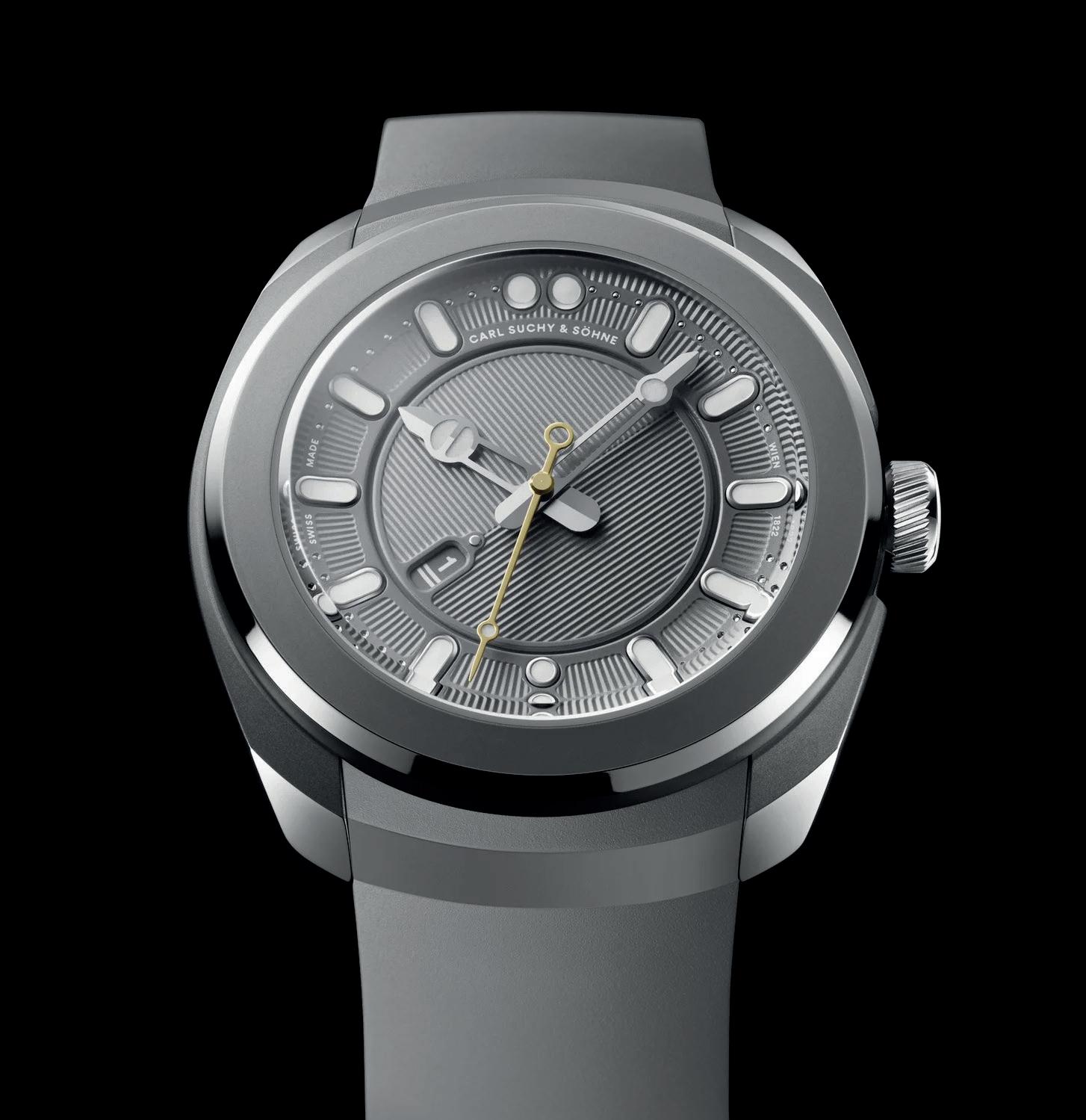
CARL SUCHY & SOHNE
Belvedere Titan
Since their debut waltz, Carl Suchy & Sohne have been an underrated brand, linked inextricably to their Austrian homeland but with an identity all its own. Case in point, the newest take on the chunkier Belvedere. True to the current titanium zeitgeist, the newest take cases up in lightweight metal, pairing that signature grey tone with a matching monochromatic dial. Not that it’s aesthetically dull; the brand’s signature mix of horizontal and vertical lines allows for the kind of textural difference that highlights its nuances, complete with a travelling date window to give the whole thing more movement than you’d expect from an otherwise classic three-hander.
THE DETAIL:
• 40.8mm titanium case with 100m water resistance
• CSS201 calibre automatic movement with 42-hour power reserve
• € 9,900 (approx. £8,500), carlsuchy.com
35
introducing
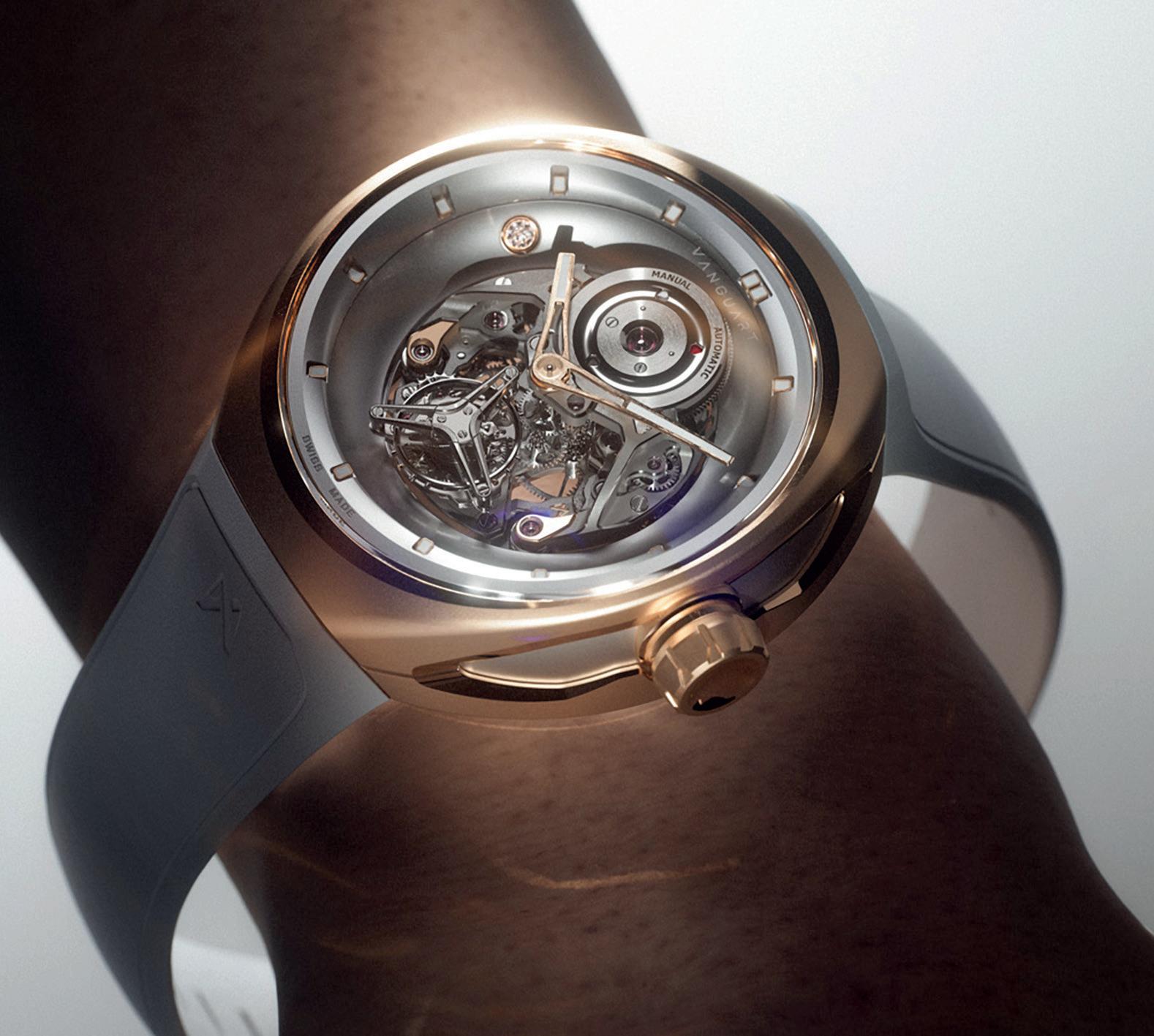
MARATHON
Jeep Rubicon GSAR
For something a little more down-to-earth, look no further than the military-themed collab we didn’t know we needed: Marathon and Jeep. Both have rugged chops honed in conflict and both offer the kind of go-anywhere-do-anything outlook that makes for a perfect beater. There are two pieces in the collab, but our pick would be the Marathon Jeep Rubicon GSAR, an underwater beast inspired by a Jeep concept car. It’s 41mm of gloriously over-machined intensity with 300m water resistance, and all the bells and whistles you need from a professional diver – all dressed up in Jeep-esque style and H3 gas tubes and MaraGlo as bright as any headlight. Indoor kids need not apply.
THE DETAIL:
• 41mm stainless steel case with 300m water resistance
• Sellita SW200-1 automatic movement with 38-hour power reserve
• $1,500 (approx. £1,200), uk.marathonwatch.com
VANGUART Orb
We’ve seen a lot of flying tourbillons this year –first world problems and all that – but this has to be one of the coolest. Available in 41mm of titanium or gold, depending on if you’re a lightweight or heavyweight, this mix of hand-finished, intensely architectural madness swaps a classic dial for a look at everything under the hood, arranged in a way that can be described more as sculptural than your usual automatic layout. It’s also worth noting that you can switch between manual and automatic winding. Not sure why you’d want to, but it’s still cool. All of that is set in a tactile case that you’re probably imagining on your wrist right now. Well, if you ever do get a chance to try it on, take it.
THE DETAIL:
• 41mm titanium or rose gold case with 30m water resistance
• Automatic movement with 60-hour power reserve
• From CHF 180,000 (approx. £155,000), vanguart.com
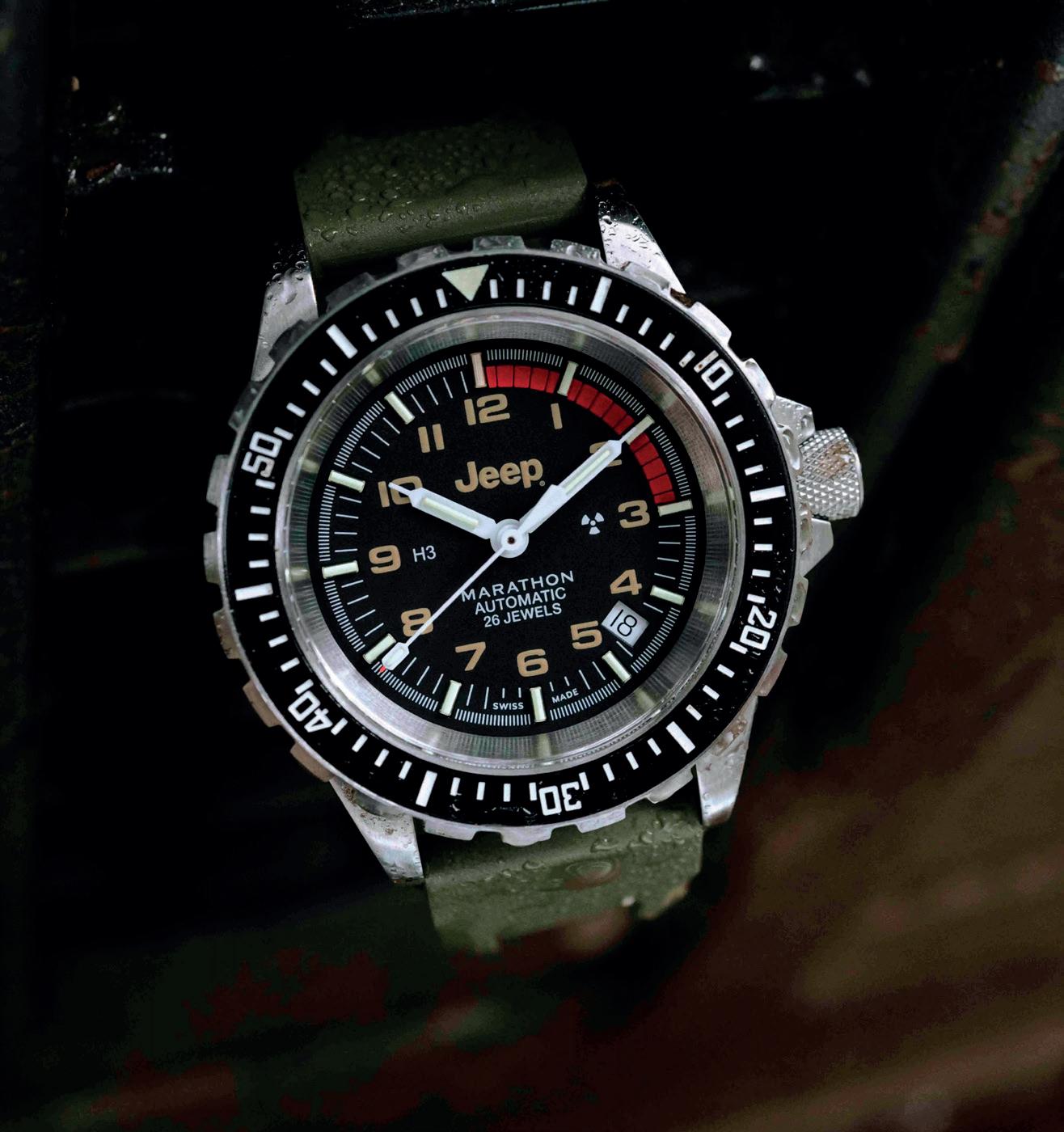
36
introducing
HYT T1
It wasn’t that long ago that it looked like HYT’s signature fluid display method had them corralled into a very small, very specialist space. Then they started showing off what else they could do and now they have the T1, a watch that pairs that fluid-filled timekeeping ring with a watch that would be a stunner with or without it. Backed by bellows and a fine capillary system, the T1’s crowned with a gorgeously brushed dial in a few low-key colours and an intensely modern faceted case. There’s a lot to love here and for once in a long time, we’re genuinely excited about what HYT will do next.
THE DETAIL:
• 45.3 mm titanium or rose gold case with 50m water resistance
• 501-CM calibre manual-wind movement with 72-hour power reserve
• From CHF 48,000 (approx. £42,500), hytwatches.com
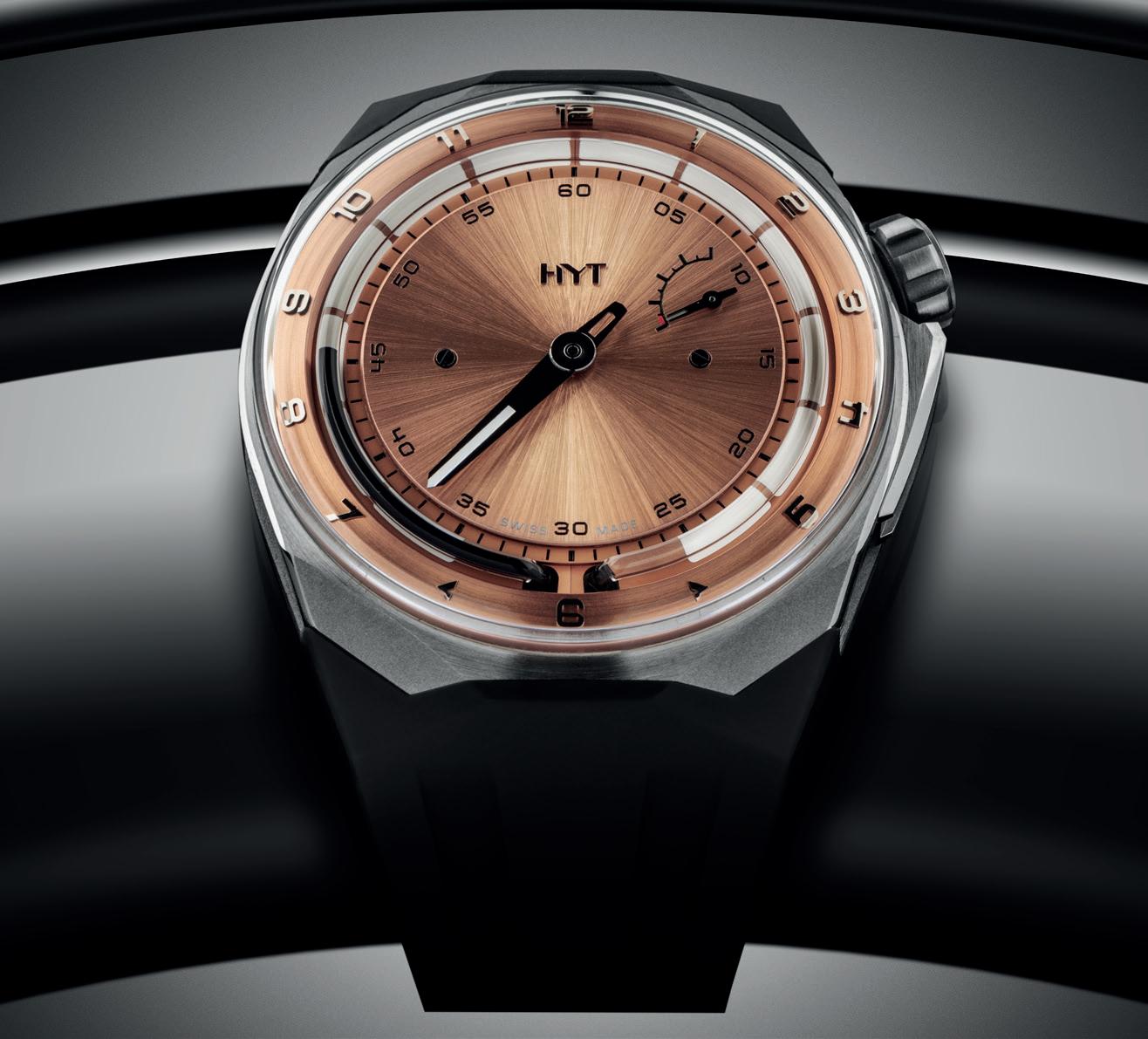
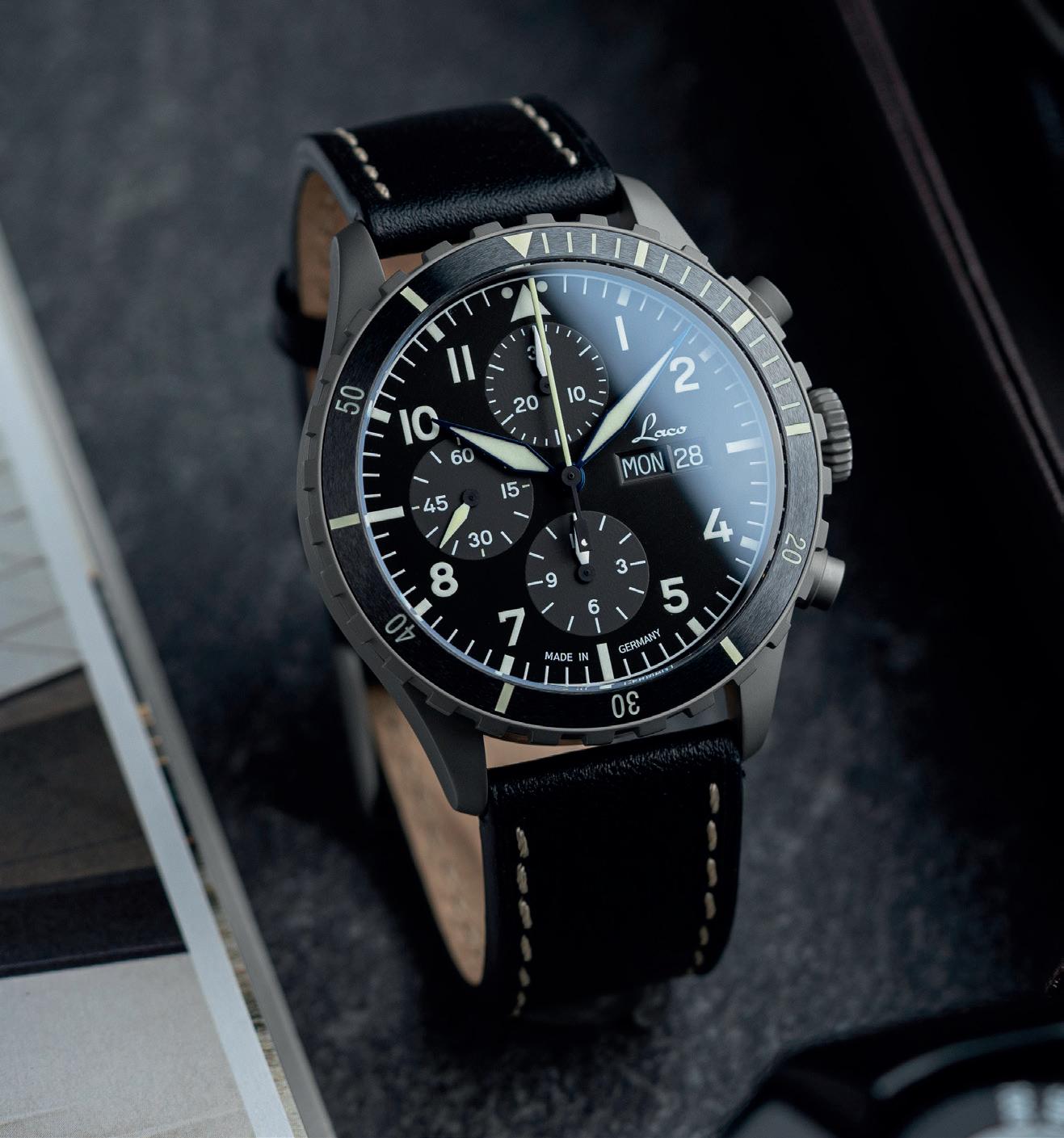
LACO
Kiel Sport
Best known for their militaristic fliegers, Laco are expanding their cockpit-focused chronograph range with the Kiel.2 and a jaunt below the waves. The change is relatively simple: a unidirectional bezel. While it still has 100m water resistance, so not quite fit for professional diving, it’s still a good look that expands the range functionally. Aesthetically, the Kiel Sport also does that with a dark sandblasted case that leans on their innate utilitarian feel. It’s sleek, matte and possibly the coolest Laco for a while, with a low-key monochromatic look that I’m really hoping Laco builds on further.
THE DETAIL:
• 43mm stainless steel case with 100m water resistance
• Laco 500 automatic movement with 56-hour power reserve
• €2,390 (approx. £2,050), laco.de
37
introducing
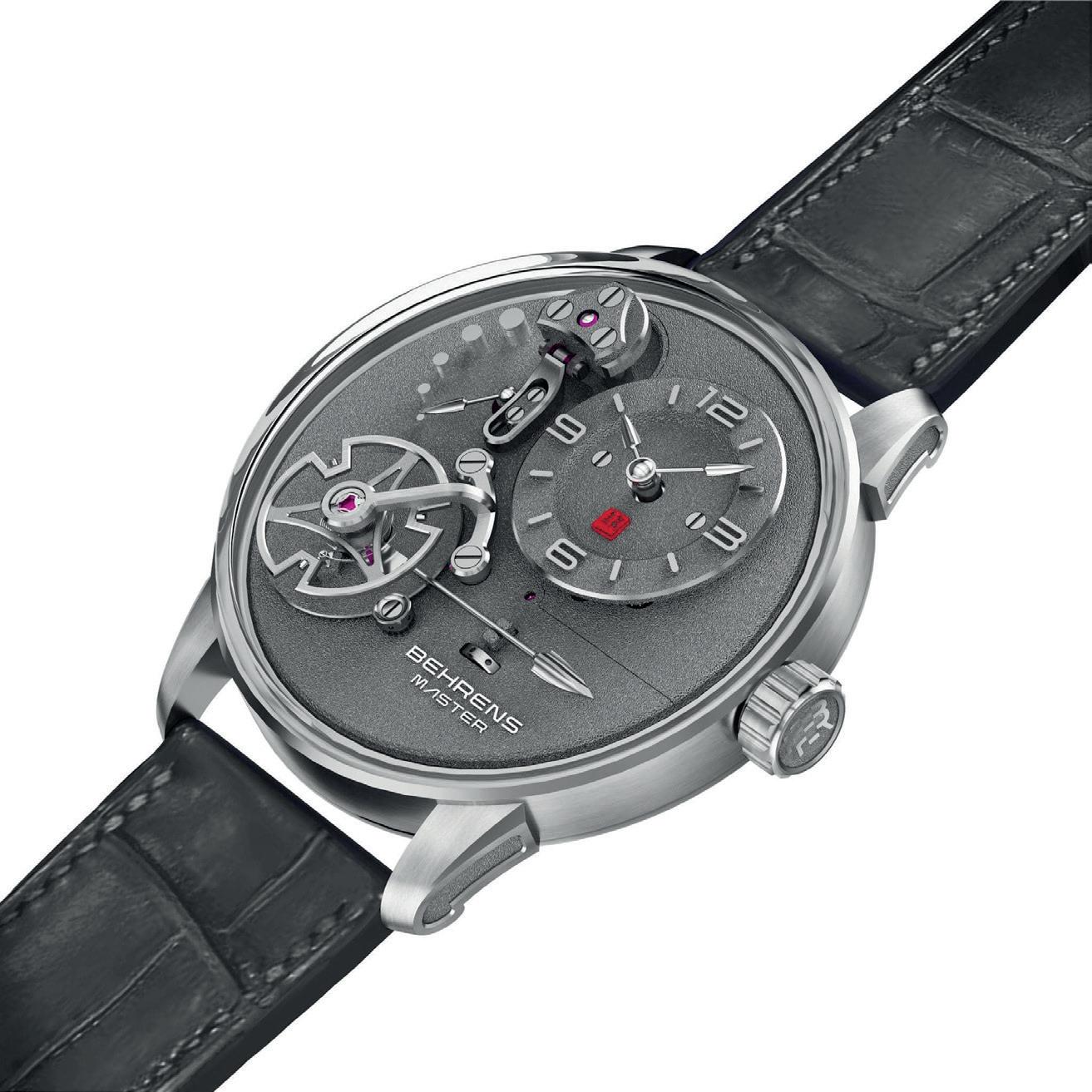
BEHRENS
Kung Fu Platinum Edition
Anything with the name Kung Fu needs to have some serious aesthetic punch and the latest from Behrens certainly has that. A collaboration with independent master watchmaker Qian Guobiao, the dial is ostensibly inspired by ancient square-holed coins of the Qin Dynasty, while the hands are the bolts of ancient crossbows, all nods to ancient Chinese heritage. That said, it’s not what you’d call ‘traditional’ in any sense, using a novel hanging balance cock to keep everything level and a sleek, pared-back approach to finishing that makes the Kung Fu a fantastic looking modern timepiece.
THE DETAIL:
• 39.5mm platinum case with 30m water resistance
• BM03 calibre hand-wound movement
• $28,500 (approx. £23,000), limited to 9 pieces, behrenswatches.com
YEMA Urban Classic
Having tried their hand at plenty of different sports watches over the years, French, Morteaubased watchmaker Yema are taking their in-house accessibility to dressier climes with the Urban Classic. Elegantly diminutive at 37.5mm across, its standout feature is the 1960s-inspired curved dial, most eye-catchingly in this light blue. There’s a lot to love from a properly vintage-feeling, accessible dress watch, especially when it’s this versatile and comes equipped with a superb, genuinely in-house movement. There’s no situation you can’t wear it and no situation you wouldn’t want to.
THE DETAIL:
• 37.5mm stainless steel case with 100m water resistance
• YEMA2000 calibre automatic movement with 42-hour power reserve
• £519, yema.com

38
introducing


40
LIVING IN THE MATERIAL WORLD
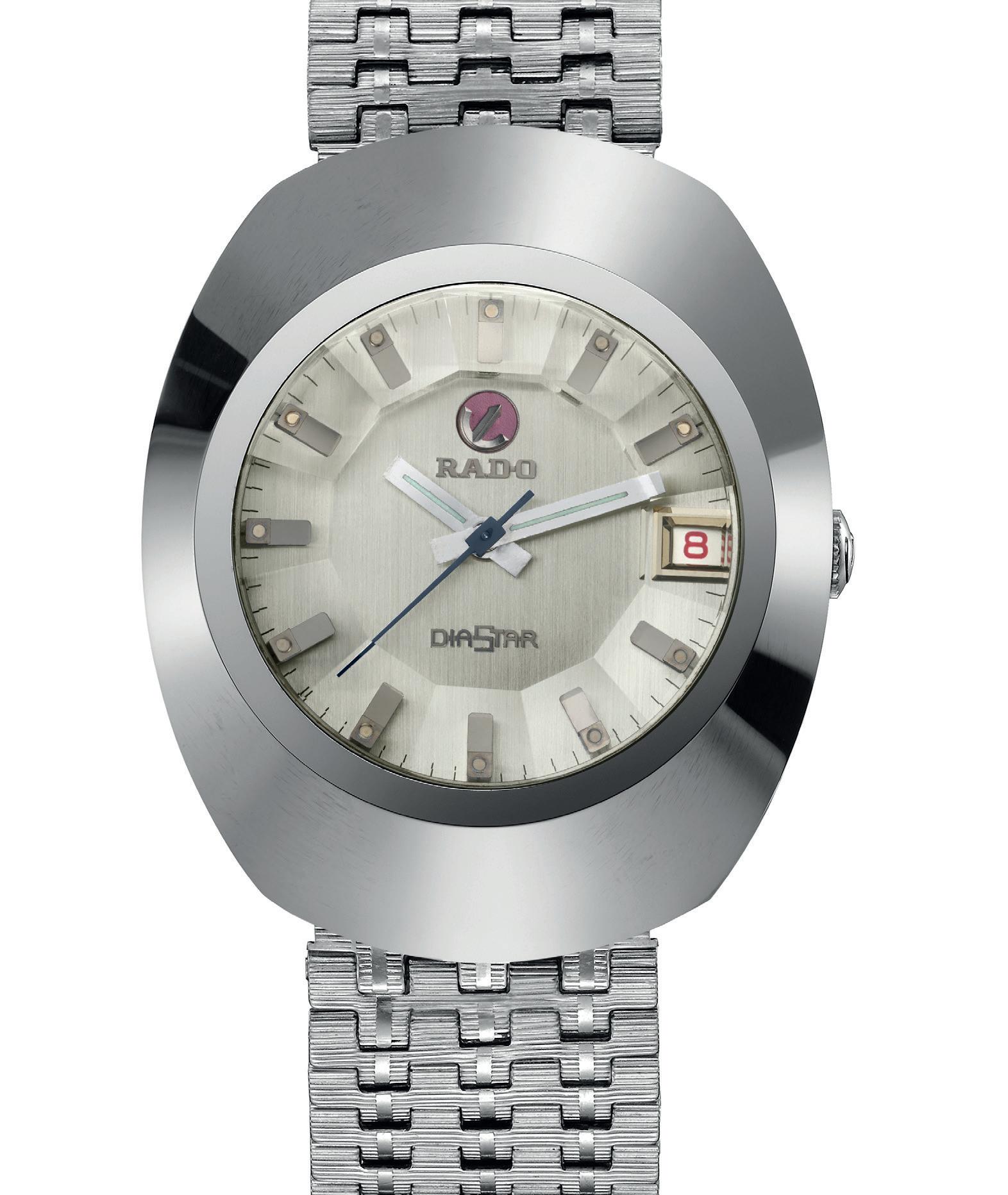
FROM SCRATCH-RESISTANT TO CRICKETREADY, RADO’S HISTORY OF STYLE, SHAPE AND ABOVE ALL, MATERIALS
41
material world
WORDS: SAM KESSLER
There are some watchmakers you just know go back to the early days of horology. You know the type, those with a penchant for ornate guilloche and perpetual calendars, maybe a cheeky minute repeater here and there. And yet some of the most important names in the field aren’t the ones that hold on to that centuriesold legacy of hand-crafted fine timepieces. In fact, you could argue the opposite.
The watch industry at large is one that doesn’t change often – more in incremental nudges than seismic shifts – but it does change and Rado has, since 1917, been a vital part of that change. Yes, Rado. From an outside perspective, they might seem like an odd brand to have very directly shaped certain aspects of watchmaking but in a very real sense, their mission statement has pushed design and materials further than other brands would have. That mission statement?
“If we can imagine it, we can make it. And if we can make it, will!”
Their mission statement has pushed design and materials further than other brands would have. That mission statement? “If we can imagine it, we can make it. And if we can make it, will!”
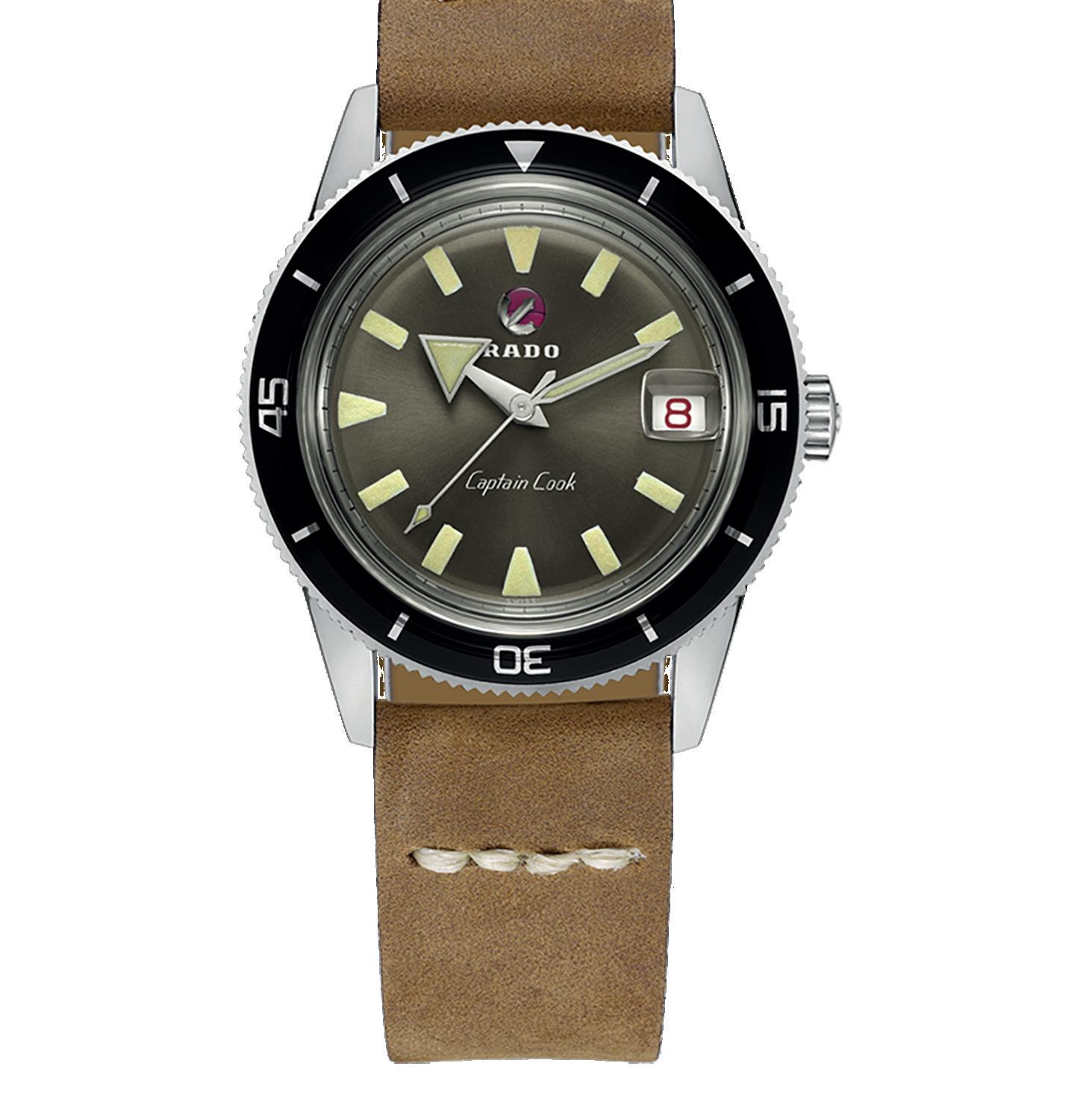
It’s a very Swiss statement of course and one that’s not exactly humble. It’s basically saying, ‘we can do anything’, but in 1917, Rado – or the manufacturer that would become Rado – was a very different animal. Founded by the brothers Fritz, Ernst and Werner Schlup (feel free to say it a few times to get it out of your system now) converted their parent’s home into an atelier in the Swiss village of Lengnau. If you can’t wait for your kids to move out, imagine how the Schlups felt.
Rather than your waster of a son just waiting to make it big on YouTube however, the brothers actually had a knack for business. Perhaps it was the team effort, perhaps it was growing military demand, perhaps it was their innate Swiss quality, but the Schlup’s manufacturer grew at a staggering rate until, by the end of World War II, they were among the largest in the country. This of course meant it was time to capitalise on that success with a name: Rado.
This is about the time their famous motto came in and honestly, by this point the brothers Schlup had earned it. Not only did they have their new brand –Esperanto for ‘wheel’, in case you were wondering –but they had their first watch to go with it, the Rado Golden Horse, swiftly followed by the Green Horse, both of which had the now iconic moving anchor logo and ‘sign of life’ indicator.
The horses did well, thanks to a combination of solid design and promotion of their water resistance, but the real lightbulb moment came a little later with one of the most influential watches of the 1960s, the Rado DiaStar 1.
The 1962 release was everything other watches were not. It pioneered a hard metal case designed to put the middle finger up to any potential scratch risks. That alone was a seriously impressive leap forwards when basic steel and gold were the only otherwise visible options, but it was combined with a rounded design that looks futuristic, even today. Indeed, while the Captain Cook might be Rado’s most famous reference today (a watch that was, incidentally, released the same year), the DiaStar was the genuine innovation that established the watchmaker’s reputation as the ‘Master of Materials’.
It is worth going into precisely what that hard metal case is. Often the Diastar is cited as being the fist ceramic watch. Sorry, I should say incorrectly cited. The material in question was actually tungsten carbide, a ceramic/metal alloy. The ‘pure’ ceramic we mostly see today is zirconium oxide and is a different thing entirely. The first for that would have been IWC’s Da Vinci, over 20 years later. Indeed, tungsten carbide is still a cutting-edge material today; it’s the only reason Bulgari can create a 1.7mm watch that actually works. There’s an argument (a small one, but still) that they wouldn’t have gotten there without Rado.
42
material world
The 1962 Captain Cook (above) is considered to be be Rado’s most famous reference today, but released in the same year, the Rado DiaStar 1 (right) pioneered a rounded futuristic design with a hard metal and scratch resistant case made from tungsten carbide


43 material world
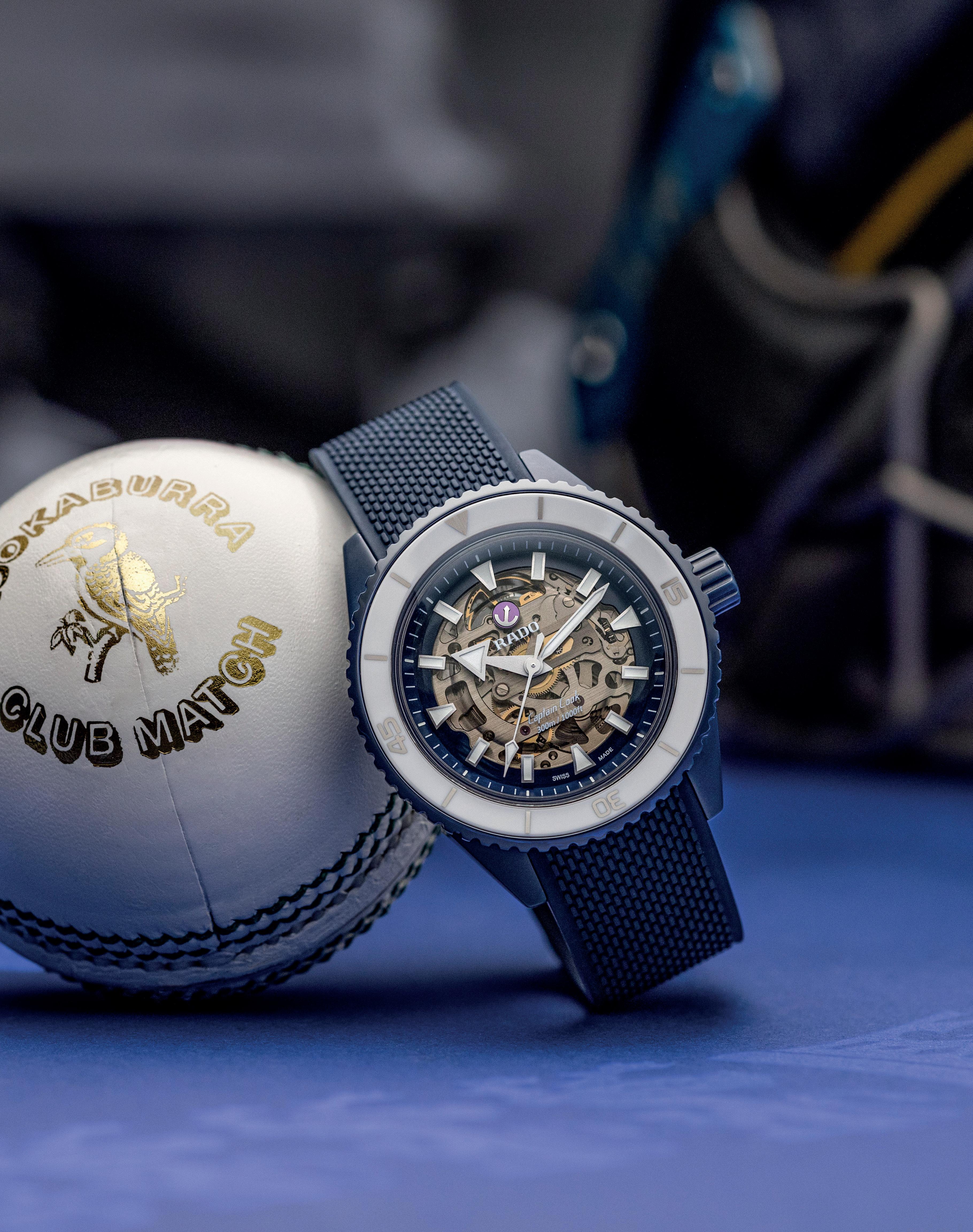
44 material world
The Captain Cook High-Tech Ceramic x England Cricket (above and right) features the R808 Automatic with an 80-hour power reserve and is wrapped in a coloured ceramic, which together with a limited run and appealing price tag means that they’re likely be a rare find in the wild
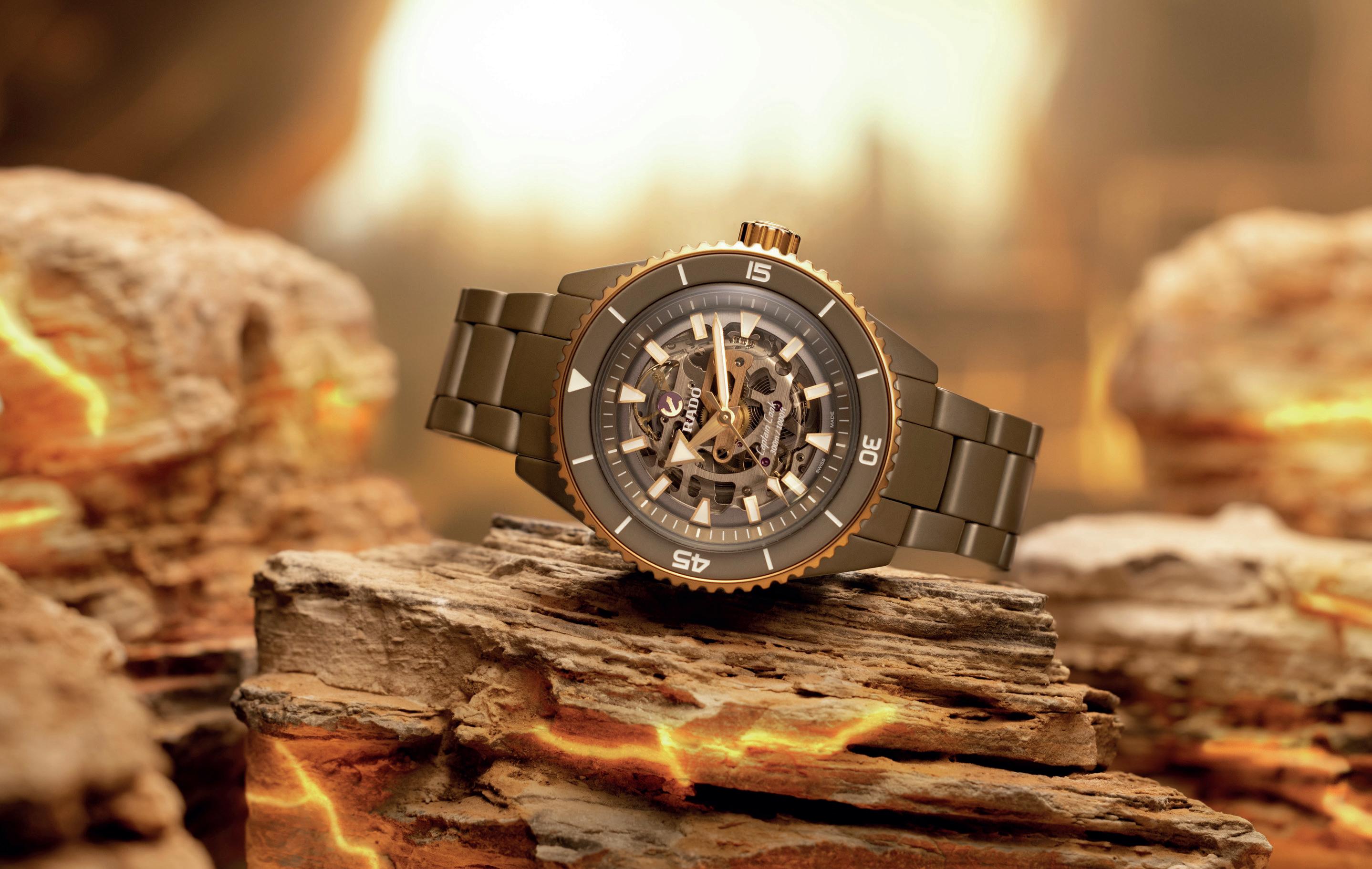
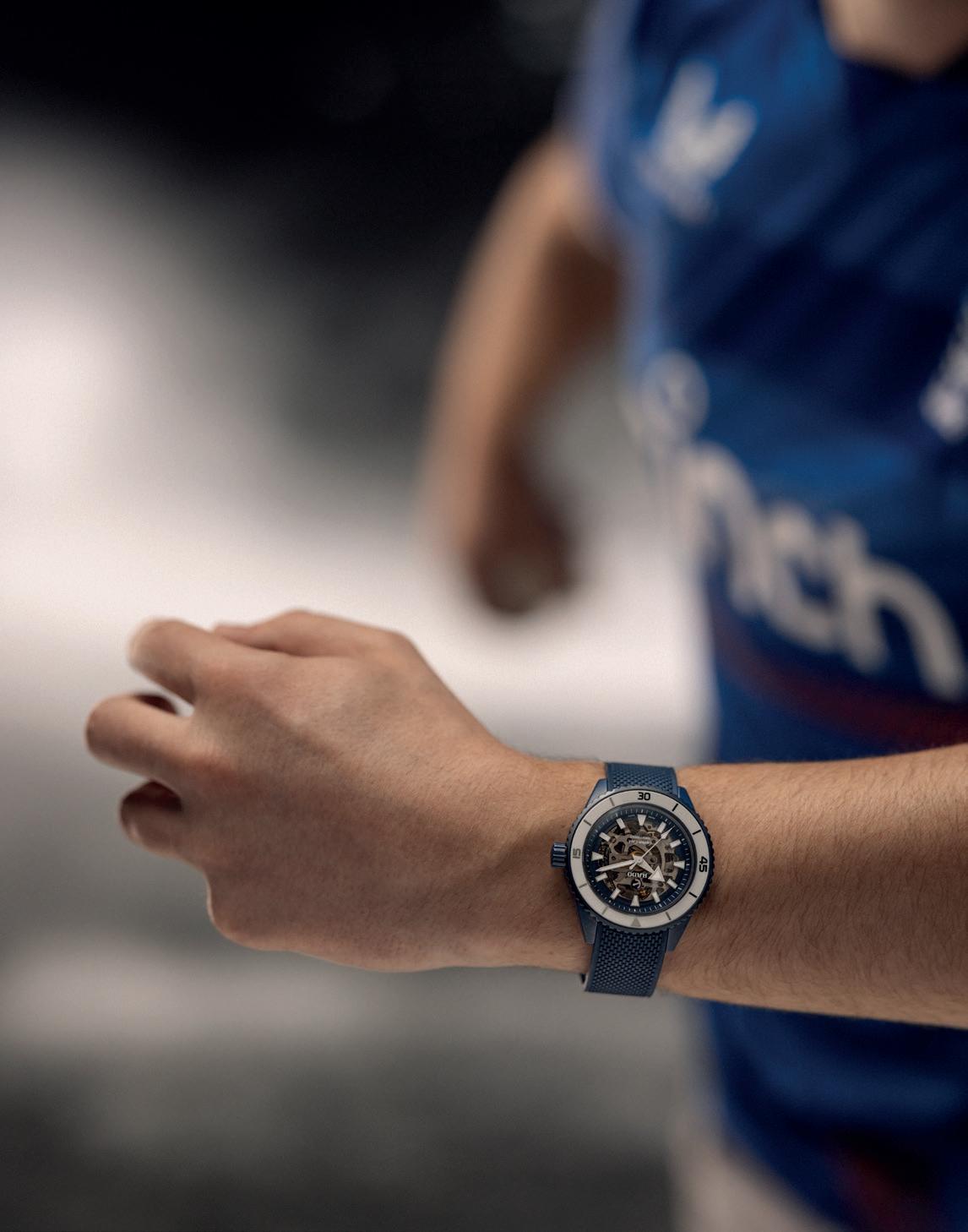
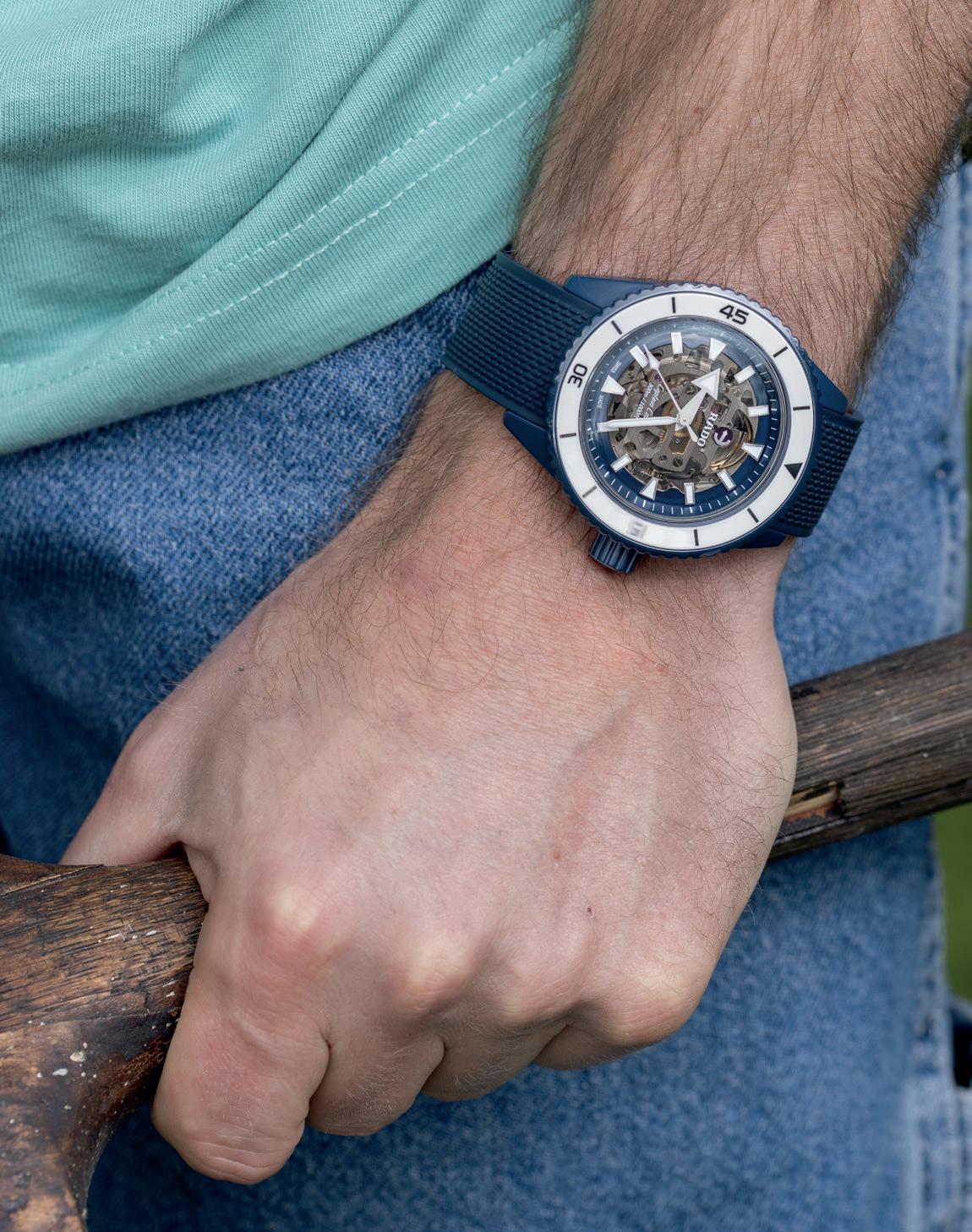
45 material world

46 material world
Over the next decade, Rado doubled down on two things: diving watches with the ever-expanding Captain Cook, and unique shapes that would give Cartier a run for their substantial money. Collections like the 1975 Elegance and ‘76 Glissière were sharp, angular and had that same retro-futurism as the Diastar – including dabbling in the at-the-time innovation of quartz.
Speaking of quartz, it was at the end of the ‘70s, beginning of the ‘80s that the quartz crisis hit the watch industry. Hard. Manufacturers were shuttered as they just couldn’t compete with the uber-accurate, batterypowered movements ushered in by Seiko and others. Rado on the other hand, were doing relatively well, especially when, in 1983, they launched the Anatom.
The Anatom not only had a name befitting the atomic age, but its cylindrical sapphire crystal was the first of its kind. It was smooth, curved and fit itself to the wrist more comfortably than anything that had come before.
‘Ergonomics’ were less of a thing in the ‘80s than they are now, except when it came to the Anatom. It was a success, and you don’t need to take my word for it: legendary pop artist and watch aficionado Andy Warhol (whose collection included fabulously shaped Cartiers and Piagets) dedicated a 1x1 metre painting to the Rado. It was one of the last works he ever produced.
So, shape was very much Rado’s area of expertise, but this is the Master of Materials and, other than a funky sapphire, they’d not pushed too hard in that direction. That’s why 1986 saw the Integral and its use of high-tech ceramic. Unlike the DiaStar, this was true ceramic and while IWC beat them to the punch, the Integral was much more accessible and much more in-keeping with the minimalist aesthetic that would come to define later era Rado.
There were other materials toyed with, too. 2002’s Rado V10K was made from a form of diamond, with a hardness of 10,000 Vickers (hence the name) and 2011’s R5.5 was offered in Ceramos, a more advanced combination of metal and ceramic. The modern era of Rado however really kicked off with the introduction of colour in the True Thinline Collection, designed in association with Le Corbusier. That and, of course, the reintroduction of the Captain Cook.
Which brings us to Rado’s latest release and our cover star for this issue: the Captain Cook High-Tech Ceramic x England Cricket. The name says it all, really. It’s a Captain Cook, so you have serious dive watch credentials; it’s in high-tech ceramic, so it’s hard as nails and much more scratch resistant, and it’s a tribute to the England Cricket team. In-keeping with latter-
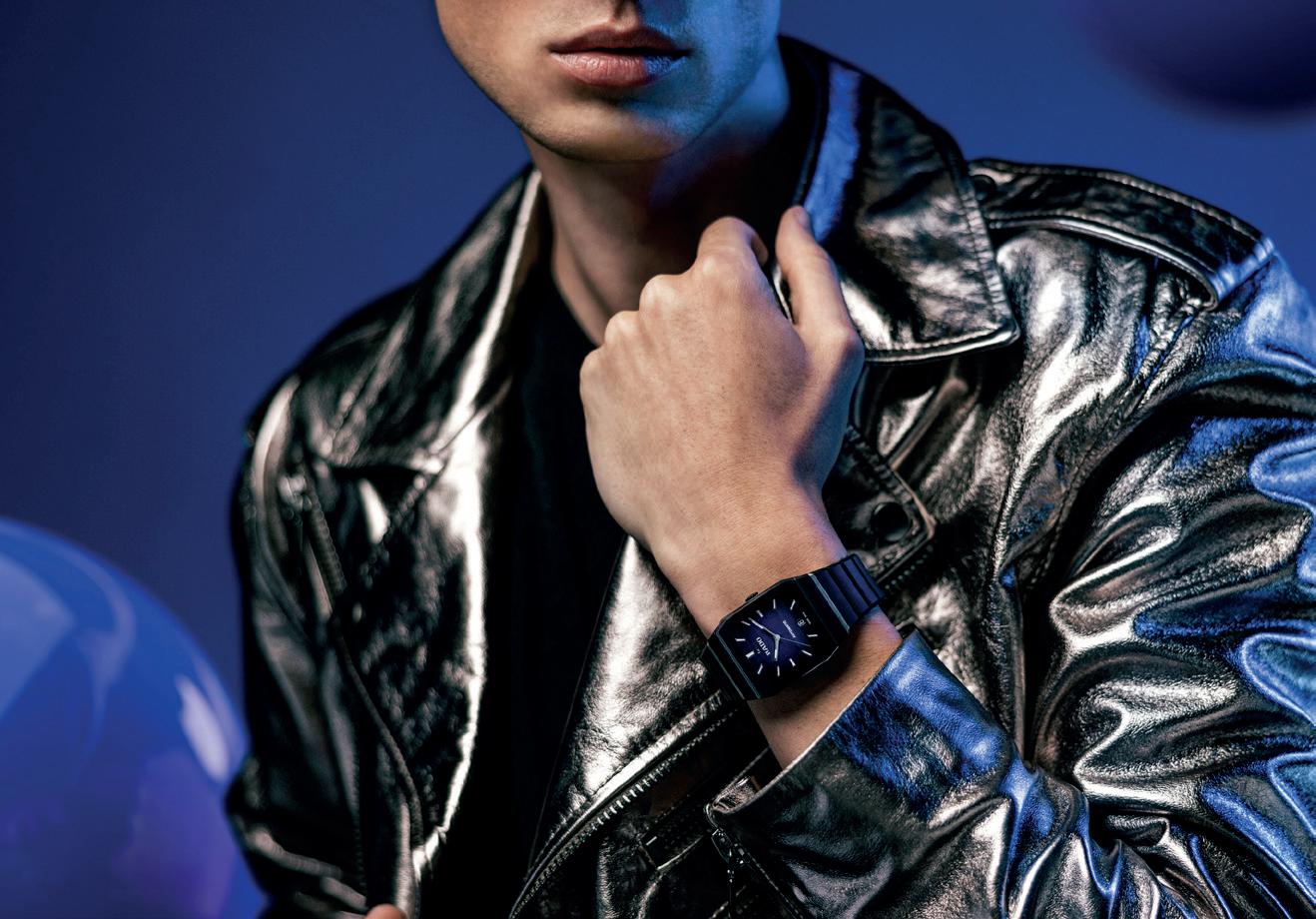

day Rado’s penchant for colour, that means a handsome combination of blue ceramic case and white ceramic bezel. While I doubt any players particularly want to take to the field with a dive watch on their wrists, they most definitely could.
Coloured ceramic isn’t just hard; it’s hard to produce. There’s a reason it took until now for it to become a ‘thing’, instead of just black or white. As ceramic maestros don’t really know the final colour before the material is fired and potentially wasted, there’s a lot of going back to the drawing board. Being able to perfectly match it to the Cricket uniform is no mean feat.
In-keeping with latter-day Rado’s penchant for colour, that means a handsome combination of blue ceramic case and white ceramic bezel
Inside is the latest generation of Rado movement, the R808 Automatic with an 80-hour power reserve, backing the 43mm wide, hard outer case with chronometric performance that you might actually want to see through the sapphire dial. It’s one of the best encapsulations of what modern Rado watch is: cool, colourful and ceramic. Though with 150 of them available and a worryingly good price tag of £4,200, you might only see these on the England team’s wrists.
47
material world
Andy Warhol’s parting gift to the world was a painting of the Anatom (left and above) and its appeal stretched beyond the pop artist’s loft apartment, as it has since earned recognition for its smooth, curved fit that made it a supremely comfortable timepiece
 Words by ANDREW CANTER
Words by ANDREW CANTER
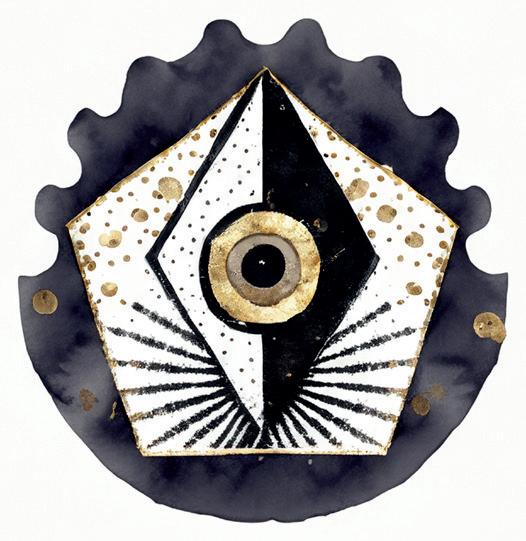
ETA VS. SELLITA: WHAT’S IN A MOVEMENT?
The history, similarities, differences, pros and cons of the two movement makers that have come to define Swiss watchmaking
No discussion of watches can go on without discussing the movement inside, the part that actually makes it a timepiece. Some are cheap, mass-produced numbers; others are haute horology masterpieces, all with their own brand names and calibre numbers. But invariably two names loom over the rest like the Swiss mountains they call home: ETA and Sellita.
But while the two are often cursorily compared by collectors, it’s worth drilling a little deeper into the two movement-makers. So, let’s dive deep, and fingers crossed, you’ll surface with a bit more understanding about what actually makes the two best-known movement makers in the world what they are.
ETA
What is today, ETA SA Manufacture Horlogère Suisse was founded in Fontainemelon, Neuchâtel in 1793 by four master watchmakers. Prior to becoming a single enterprise in 1985, the ETA SA brand consisted of a number of movement factories across the Swiss Jura arc under the name Ebauches SA. This multiplicity allowed Ebauches SA to offer a wide range of products, as each company specialised in a particular type of movement, including, simple watches, chronographs and small watches for women.
Today, the company’s headquarters are in Grenchen, Solothurn where they develop and produce quartz, mechanical and Swatch watch movements. It was over 20 years ago that ETA, Swatch Group’s movement maker, announced that it would be reducing deliveries of ébauches (a basic movement with parts, such as the movement plates and bridges, and mainspring barrel), ceasing completely a few years later, and supply only finished movements.
This well documented and reported upon, dispute dragged on for many years with the Swatch Group arguing that it was anti-competitive to supply movements to its direct competitors, such as Tissot, Hamilton, and Omega, to name a few.
During this time, the Swiss Competition Commission (COMCO) became involved and in 2013, the two parties agreed that Swatch Group could decrease the number of ETA movements it supplied to third parties up until 2019. After that time, Swatch Group would be able to sell its movements to anyone they chose.
This decision has left some with a ‘bitter taste in the mouth’ and has generally been seen as an extremely negative step by one of the ‘big three’ watch groups in flexing their muscles. They even annoyed the Swiss government, which didn’t seem possible outside of the banking sector. However, this protracted battle left something of a vacuum for others to fill. Having faced the risk of going under from their former business partner, the main beneficiary of this situation looks to have been the Swiss movement maker Sellita.
SELLITA
Sellita are the worst-case scenario for ETA. Where the latter have withdrawn their services from many brands, Sellita have surged ahead to claim that territory for themselves, often with less
49
oracle speaks
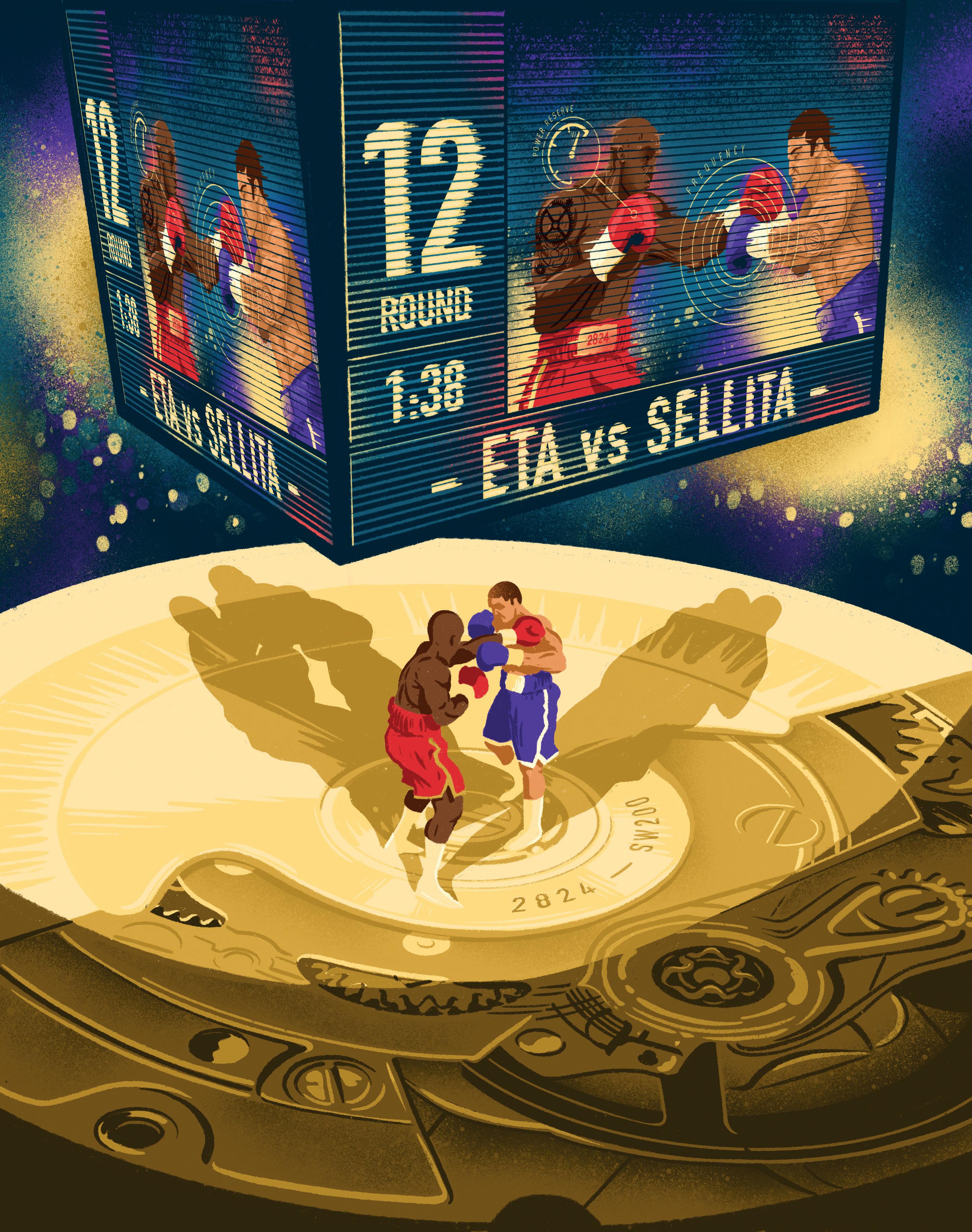
Illustration Mark Frudd 50
©
expensive ‘ETA Clones’, calibres based on the same architecture.
Based in La Chaux-de-Fonds, Switzerland since 1950, founded by Pierre Grandjean, they have become the ‘go to’ movement supplier for a myriad of brands and independent makers. Today the company’s owner and CEO is Miguel García, who began his career as a production employee in 1987, before becoming a director in 1995.
They have established themselves as a major player in the Swiss made movement industry, producing more than 1.5 million movements a year. This is primarily down to Miguel’s drive, guidance, and management, with Sellita becoming a prominent supplier for the industry, if not one of the most essential companies in the watchmaking business. It’s hard to overstate that many watch brands simply couldn’t exist without them.
Sellita have now become the leading alternative to ETA movements. They have developed their own calibres – often mirroring ETA calibres – currently numbering 11 movements in total.
SELLITA MOVEMENTS
The most popular movements include the Sellita SW200 – one of their most popular automatic movements – for all types of watches, from sports to classic. Then there is the SW300, a high-end automatic with 56-hour power reserve with complications, such as, day/night, second time zone, moon phase, pointed date and can be skeletonised. The SW500 is an automatic chronograph with day-date, stop-second, and 62-hour power reserve, and SW100 is an automatic with three-hands, date, with a 42-hour power reserve and generally used for women’s watches.
ETA MOVEMENTS
The most popular movements, include the ETA 2824 which includes hours, minutes, seconds, date with a 42-hour power reserve and often referred to as the ‘robust all-rounder’ and one of the most well-known and widely used automatic mechanical movements in the watch industry. The ETA 2892 is a premium self-winding automatic movement, and has a flatter structure than the 2824, used for brands in the upper pricing segment. The Valjoux 7750 automatic chronograph movement was first introduced in the 1970s and used by premium manufacturers. It’s extremely robust and offers excellent value for money. The ETA 2671 is an automatic three-hand, with 38-hour power reserve and used for women’s watches.
SELLITA MOVEMENTS
PROS:
1. Quality: High-quality construction and craftsmanship. They undergo stringent quality control measures to ensure accuracy and reliability.
2. Compatibility: Often designed to be compatible with ETA movements, making them a popular choice for watchmakers who may be looking for alternatives to ETA due to supply chain issues or other reasons.
3. Availability: Sellita movements are readily available, providing watchmakers with a reliable source for their movement needs.
4. Versatility: Sellita produces a range of movements with various complications and functions, offering flexibility in their designs.
5. Competitive Pricing: Sellita movements offer competitive pricing compared to ETA movements, making them an attractive option for brands looking to manage costs without compromising on quality.
CONS:
1. Perception: Some watch enthusiasts may perceive Sellita movements as alternatives to ETA rather than unique offerings, which could potentially affect their perceived value.
2. Limited Customisation: Sellita movements may have limited customisation options compared to in-house movements. Brands seeking highly customised movements may find Sellita’s offerings somewhat restrictive.
3. Brand Recognition: Sellita may not have the same level of brand recognition and reputation as ETA, which could influence consumer perceptions, particularly among those who are more brandconscious.
4. Innovation: While Sellita produces reliable and well-made movements, some critics argue that they may lack the same level of innovation as some other manufacturers.
They have established themselves as a major player in the Swiss made movement industry, producing more than 1.5 million movements a year
ETA MOVEMENTS
CONS:
PROS:
1. Quality: ETA movements are well known for their high quality. They undergo rigorous testing and quality control measures to ensure accuracy and durability.
2. Reliability: ETA movements are renowned for their reliability. They’re designed to withstand the rigours of daily wear and provide accurate timekeeping over long periods.
3. Versatility: ETA produces a wide range of movements, including both mechanical and quartz varieties, with a range of various complications and functions.
4. Established Reputation: With a long history of watchmaking expertise, ETA have built a solid reputation in the industry. Consumers and brands trust ETA movements due to their proven track record.
1. Dependence: Some watchmakers may rely too heavily on ETA movements, leading to a lack of innovation or differentiation in their products. Overdependence on ETA can limit creativity and brand identity.
2. Limited Customisation: While ETA offers a variety of movements, the customisation options may be a little limited when compared to in-house movements.
3. Availability Issues: In the past, ETA have limited the supply of movements to external customers, which has caused difficulties for some watchmakers in sourcing movements for their watches. This dependency on ETA’s production capacity can be a drawback for certain brands.
4. Perception of Mass Production: As ETA movements are widely used across various watch brands, some enthusiasts perceive them as mass-produced components rather than exclusive or unique features of a watch.
51
“
”
oracle speaks
EQUIVALENT CALIBRES
All these pros and cons however are just words. True words of course, but what we really need to compare the two are cold, hard numbers – and there’s nothing colder and harder than a finely tuned calibre. So, with some rather convenient equivalents between baseline ETA and Sellita calibres, let’s get granular and see what their individual movements bring to the table. MOVEMENT
Automatic with three-hands, date, 4Hz frequency
Automatic, selfwinding mechanical. Hours, minutes, seconds, date, 4Hz frequency
Automatic with complications, such as, day/night, second time zone, moon phase, pointed date and can be skeletonised, 4Hz frequency
Hand-wound mechanical movement. Hours, minutes, seconds, date window, stop-second. 4Hz frequency
Automatic chronograph with day-date, stopsecond, 4Hz frequency
ETA CALIBRE POWER RESERVE JEWELS SELLITA CALIBRE POWER RESERVE JEWELS
2671 38 HOURS 25 SW100 42 HOURS 25
FUNCTIONS
2824 42 HOURS 25 SW200 38 HOURS 26
2892 42 HOURS 21 SW300 56 HOURS 25
2801 42 HOURS 17 SW210 45 HOURS 18
VALJOUX 7750 48 HOURS 25 SW100 62 HOURS 25 52
Sellita and ETA have enjoyed freedom of movement when it comes to their production, but recently they’ve faced competition from movement newcomers, La Joux-Perret, Miyota, and Soprod



“ There appears to be a growing number of movement makers that are offering quality and reliability comparable to both ETA and Sellita ”
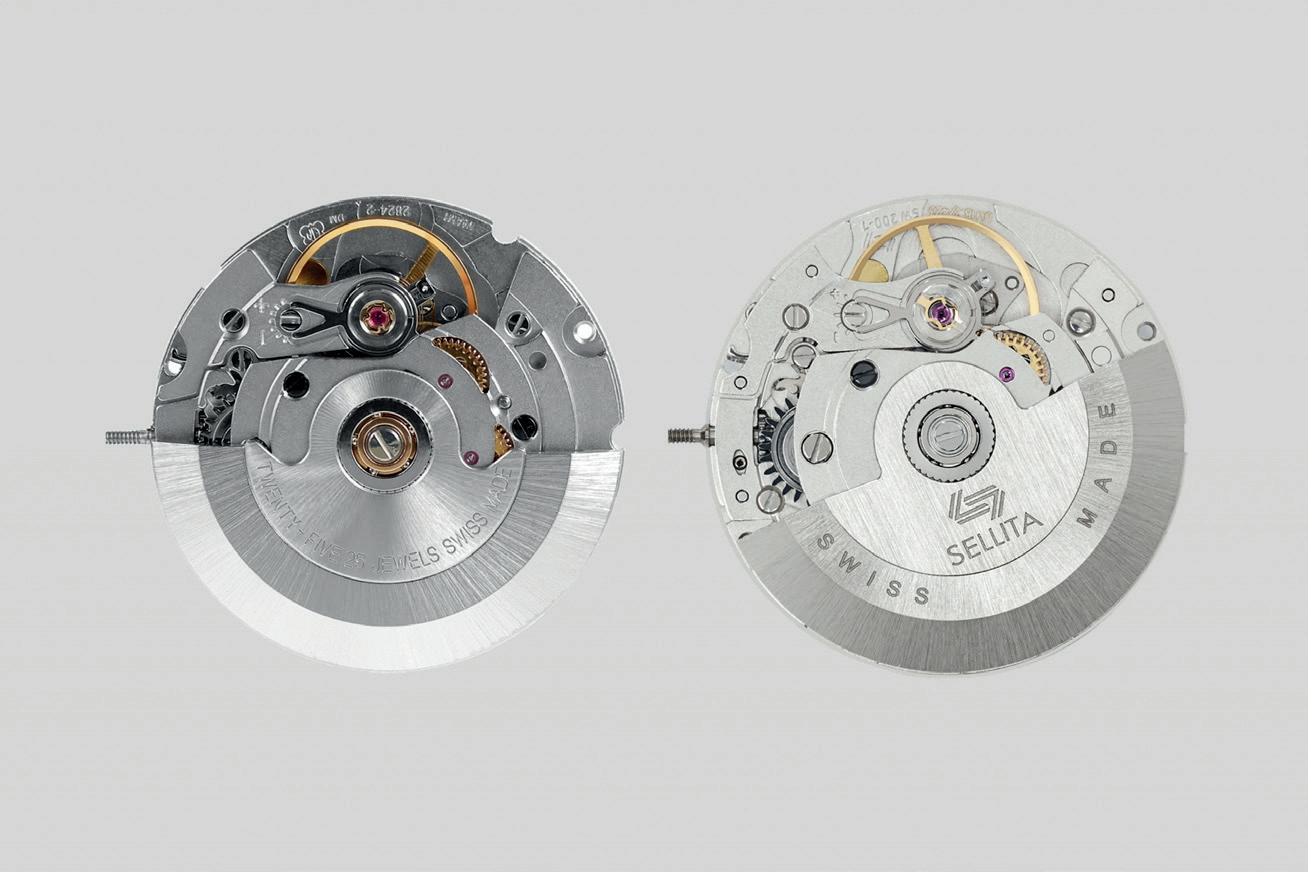
Now, numbers aren’t everything. If they were, it looks like Sellita would reign supreme given their propensity for higher power reserves and a greater number of jewels. It’s worth noting that, from a manufacturing perspective, ETA’s best stuff isn’t actually on this table (left). Movements like the Powermatic 80, a superb calibre that sees plenty of use from Certina, Tissot et al, is a Swatch Group exclusive. Then there’s their constant push towards new materials and movement architectures, meaning that while Sellita are fantastic at improving – or at the very least, reinterpreting – ETA templates, the grand dame of third-party movement making is still leading the pack when it comes to R&D.
These days it’s not just Sellita either; there appears to be a growing number of movement makers that are offering quality and reliability comparable to both ETA and Sellita, with the likes of La Joux-Perret, Miyota, and Soprod all coming to the fore. Competition is good for business and ultimately, the consumer, so this could be just what the watch industry needs to help sustain its growth and prosperity.
oracle speaks 53
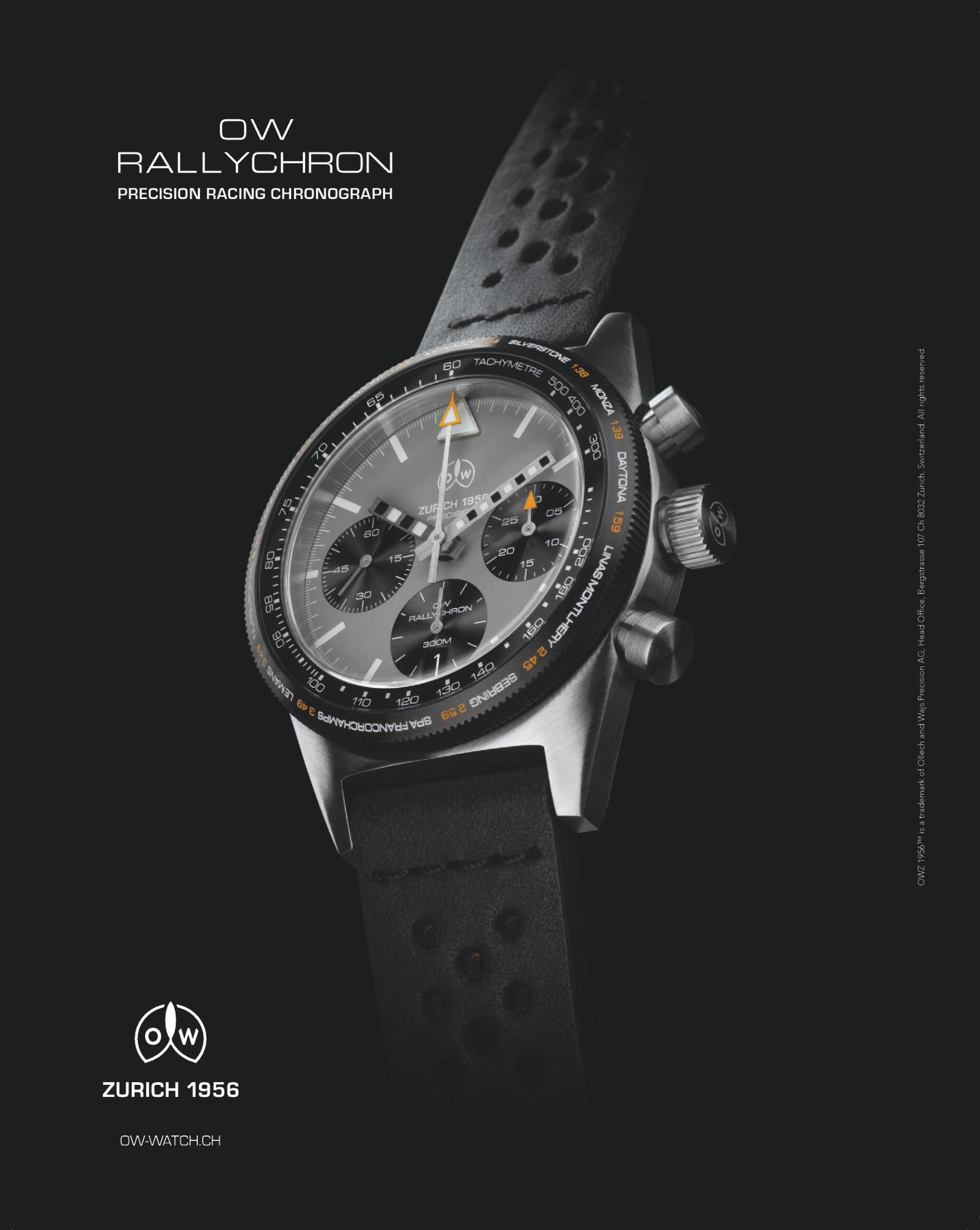
SKELETONS IN THE WATCH CLOSET
WORDS: Sam
This issue we’re all about getting behind the scenes and seeing what’s really going on. The watch equivalent of that ethos would therefore be a skeleton timepiece. The difference is that, while industry insights are interesting in a nerdy way (don’t worry about us, we embrace it), skeleton watches are among some of the most eye-catching pieces of haute horology around.
And no, I’m not just talking about open-worked here, where the dial has simply been removed. Anyone can remove a dial. Trust me, I’ve accidentally done it on more than one occasion. Skeletonisation however is when parts of the movement itself have been cut away to reveal what’s underneath. As a rule of thumb, if you can see your wrist through it, it’s a skeleton watch.
Granted many of us don’t like seeing our wrists; that’s one of the reasons we wear watches in the first place. Yet it’s impossible to ignore the appeal of a series of cogs and wheels seemingly floating, supported by miniscule bridges of metal. There is a premium on that of course – and you’ll see later on just how high that premium goes – but for a serious collector, a good skeleton watch is a statement of intent.
55 > >
Kessler
skeletons

THE DETAIL:
• 42mm NORTEQ and titanium case with 200m water resistance
• Sellita SW200-1 S c automatic movement with 41-hour power reserve
• £4,550, norqain.com
NORQAIN
Wild ONE
A sports watch that can take much more of a beating than your tricky knee, Norqain’s latest isn’t just rugged in looks. Ultra-light thanks to its proprietary carbon (NORTEQ, specifically) construction and ultra-rugged thanks to its massive shock absorbers – those flashes of bright green either side – it’s a survivalist at heart. It’s also designed in collaboration with the inimitable Jean-Claude Biver, meaning that little Hublot flavour in the mix isn’t a coincidence. Sans dial, you can see the Sellita-based calibre underneath – skeletonised to weigh just 78 grams. Try weighing that out and see what you get.
56
THE DETAIL:
• 43mm stainless steel case with 50m water resistance
• ML134 manual-wind movement with 45-hour power reserve
• £6,900, limited to 288 pieces, mauricelacroix.com
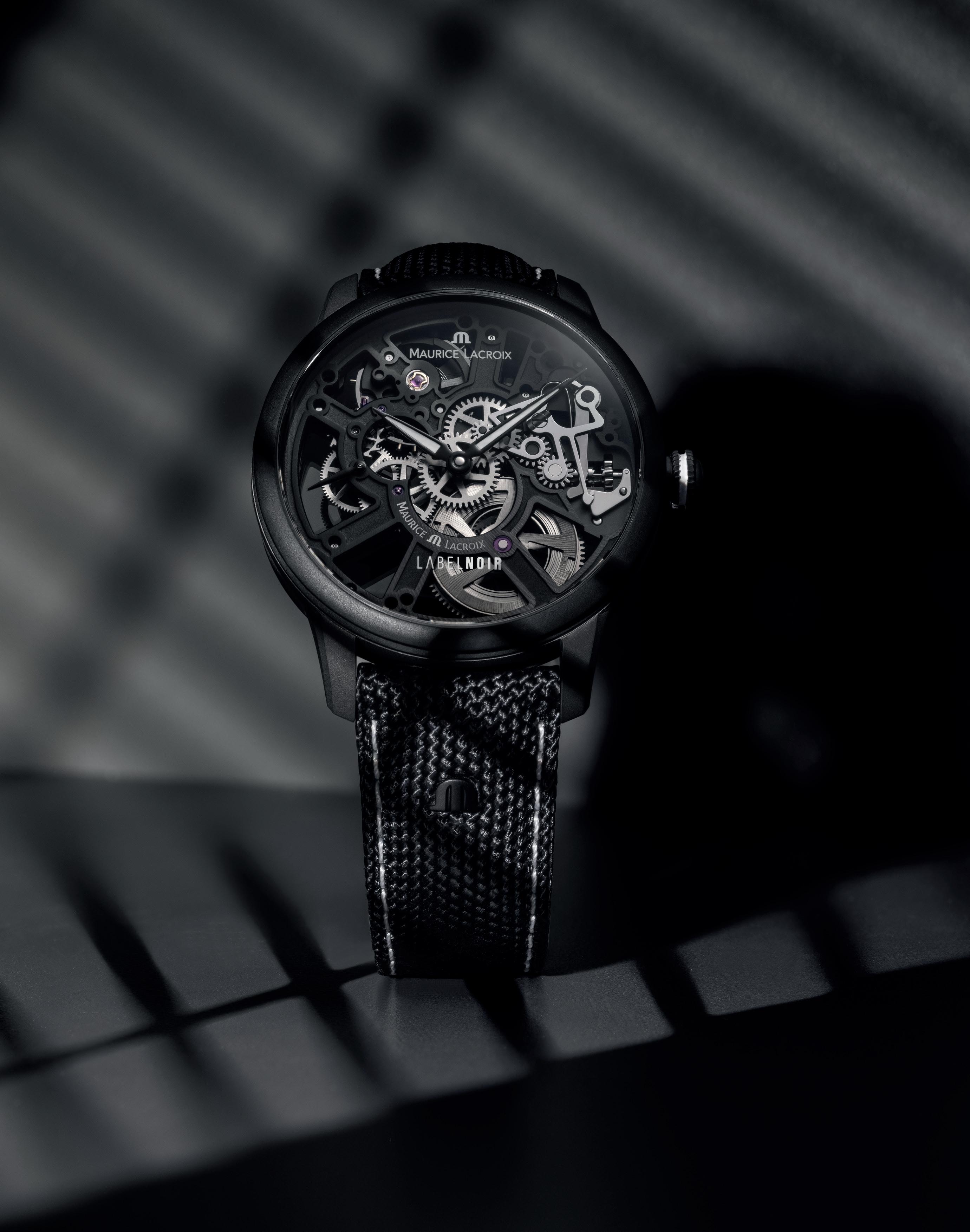
MAURICE LACROIX
Masterpiece Skeleton Label Noir
The second collab between the ever-accessible Maurice Lacroix and cool, Geneva-based customiser, Label Noir ups the horological ante. Instead of a baseline Aikon, the pair have given the Masterpiece Skeleton, a superb bit of watchmaking at this price point, the kind of makeover Batman would appreciate. A matte DLC coating and overall monochromatic look make for an impressive appearance at the (now) dark underbelly of the watch. Backed by an in-house movement that’s been excessively finished, it’s a sleek sample of what Maurice Lacroix can really do, helped along with a bit of blacked out brand recognition.
57
skeletons
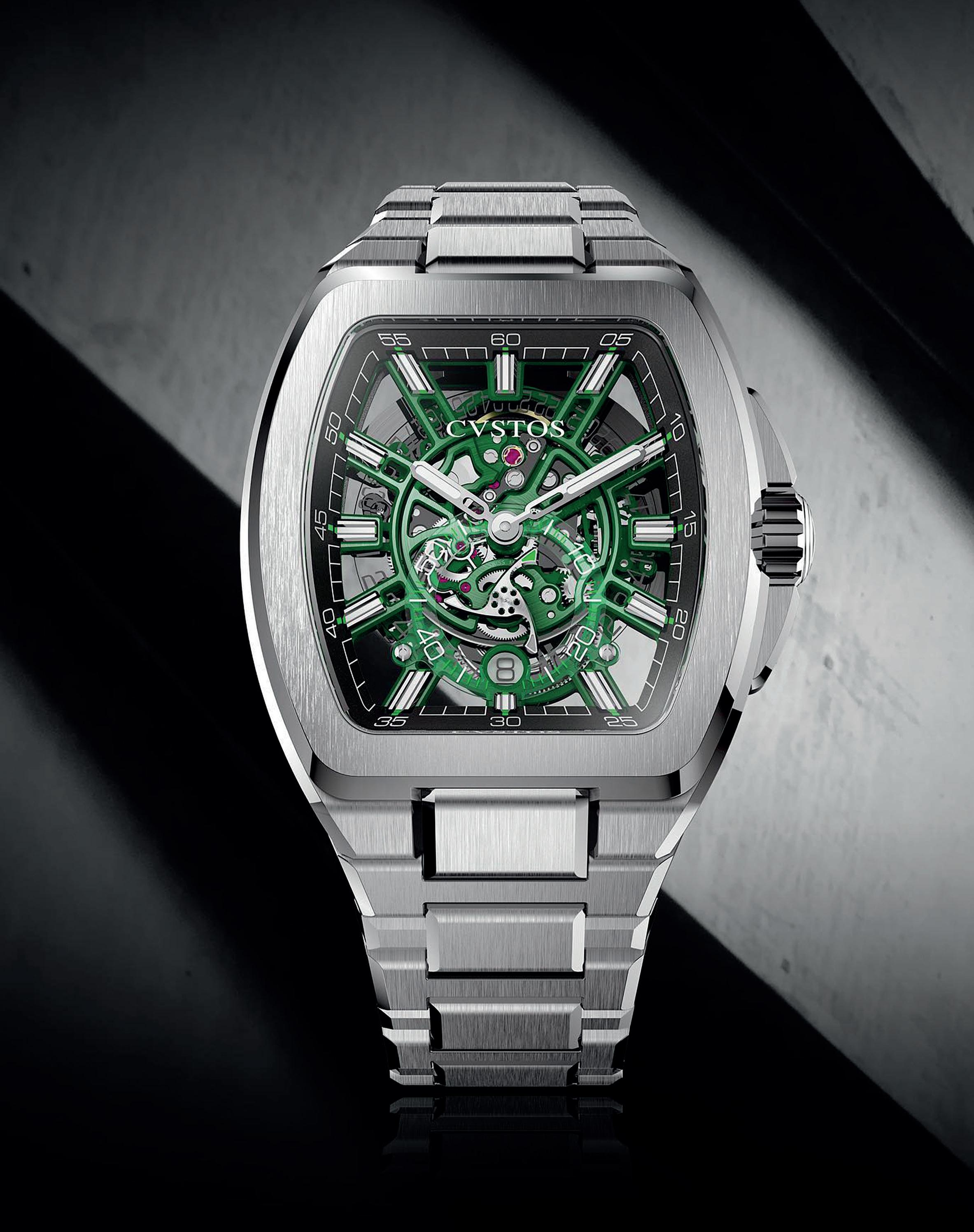
CVSTOS
Metropolitan Skeleton
While it’s perhaps too easy to discuss what CVSTOS have borrowed from Richard Mille over the years, as time’s gone by it’s become apparent that they’re much more than that. Sure, there’s a similar emphasis on sporty tonneau cases, but the cleanly skeletonised movements, lightweight cases and bold aesthetics feel much more accessible, while maintaining that solid visual punch. Take the Metropolitan Skeleton for example, which shows off a lot of watchmaking through its sapphire dial, with a flash of green pairing perfectly with the titanium. Obviously, it’s also much more accessible than Richard Mille, but then what isn’t?
THE DETAIL:
• 42mm titanium case with 50m water resistance
• CVS410 SQLT calibre automatic movement with 50-hour power reserve
• £18,500, cvstos.com
58
PARMIGIANI
Tonda PF Skeleton
While the revamp of the brand’s debut Toric collection is Parmigiani’s big news of the year, that handsome trio was also joined by a few variations of their now-flagship Tonda PF –including the one I didn’t expect, this handsome skeleton. While you can see your wrist through it (I checked), there’s more movement here than others on this list, which works in Parmigiani’s favour. Not only have they elegantly skeletonised the bridges into beautiful flowing curves, but it still has that Tonda classicism, particularly in the gorgeous mix of platinum and blue. It’s funny that with one new Tonda PF release, they’ve covered up the date window with more dial; here they’ve removed it completely. I’m genuinely not sure which direction I prefer.

THE DETAIL:
• 40mm platinum case with 100m water resistance
• PF777 automatic movement with 60-hour power reserve
• CHF 117,000 (approx. £103,500), parmigiani.com
59
skeletons
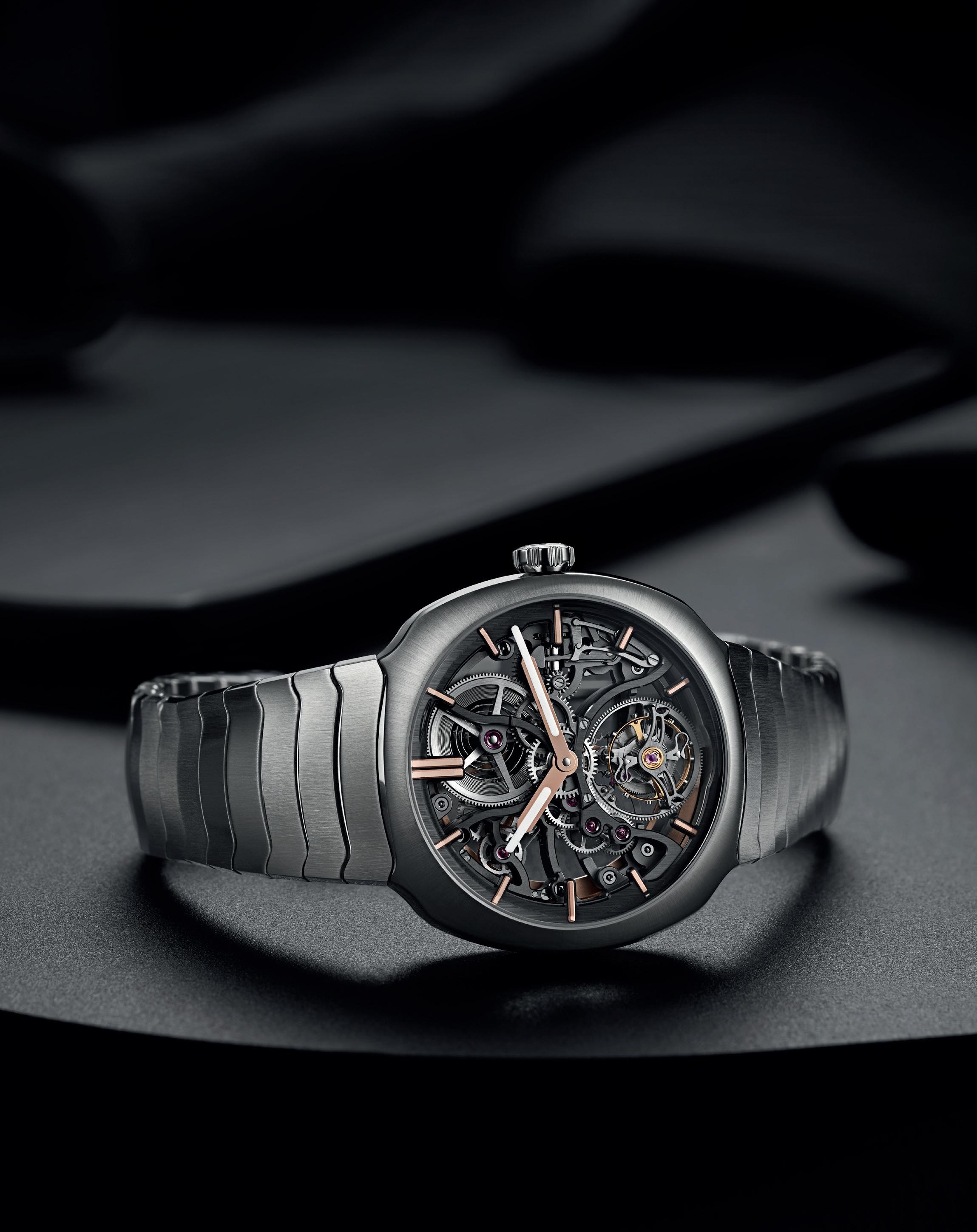
H. MOSER & CIE
Streamliner Tourbillon Skeleton
In short order the Streamliner has become Moser & Cie’s flagship, so it was only a matter of time before they started offering wild variations on the theme. Well, wilder than their eyecatching greens anyway. 1970s-style curvaceous case in point, the Streamliner Tourbillon Skeleton. The 40mm case and one of the best bracelets in the business remain untouched, but the dial has been removed and the movement cut away until nothing’s left but vital components and minimal supports. Moser know what they’re doing and the result is a much more overtly technical look at what goes into a serious independent watch. Plus, the combo of rose gold and grey is a stunner.
THE DETAIL:
• 40mm stainless steel case with 120m water resistance
• HMC 814 calibre automatic movement with 72-hour power reserve
• CHF 79,000 (approx. £70,000), h-moser.com
60
THE DETAIL:
• 44mm white gold case with 30m water resistance
• Virtuoso VIII manual-wind movement with 10-day power reserve
• POA, bovet.com
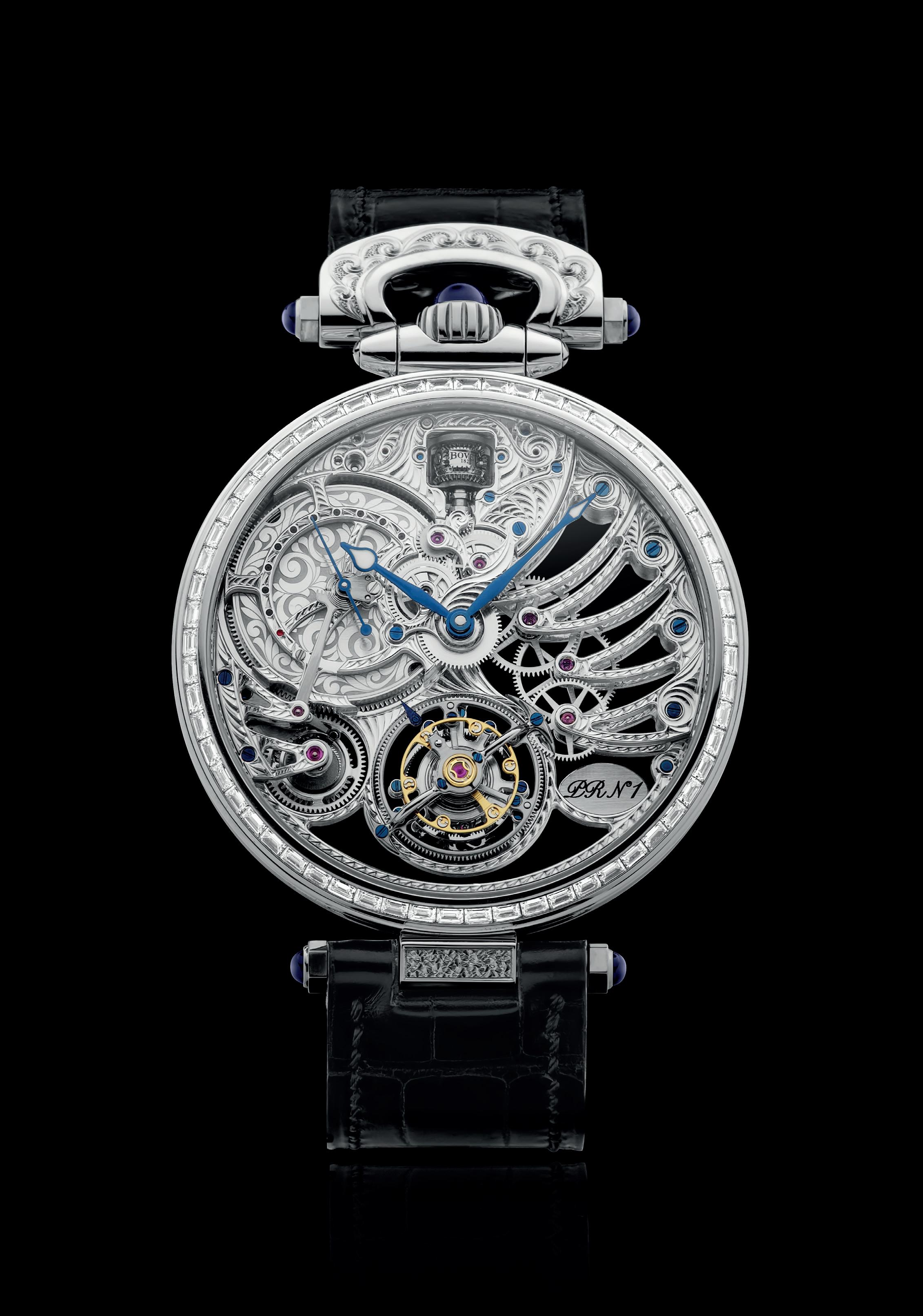
BOVET
Sometimes you skeletonise a watch to show off the movement; sometimes to make it lighter. Bovet on the other hand have lifted skeletonisation to an art form. The Virtuoso XI lives up to its name by hand-engraving every remaining bridge and plate so that yes, it shows off the various components, but in a way that frames them in baroque architecture. The fact that it has a flying tourbillon is just the icing on this very, very elaborate cake. That attention to detail carries through to the ‘writing slope’ case, which is perfectly readable on the wrist.
There’s a lot going on here so reading the actual time might not be your first instinct, but it’s good to know you can. That’s not a given in skeleton watches.
61
Virtuoso XI
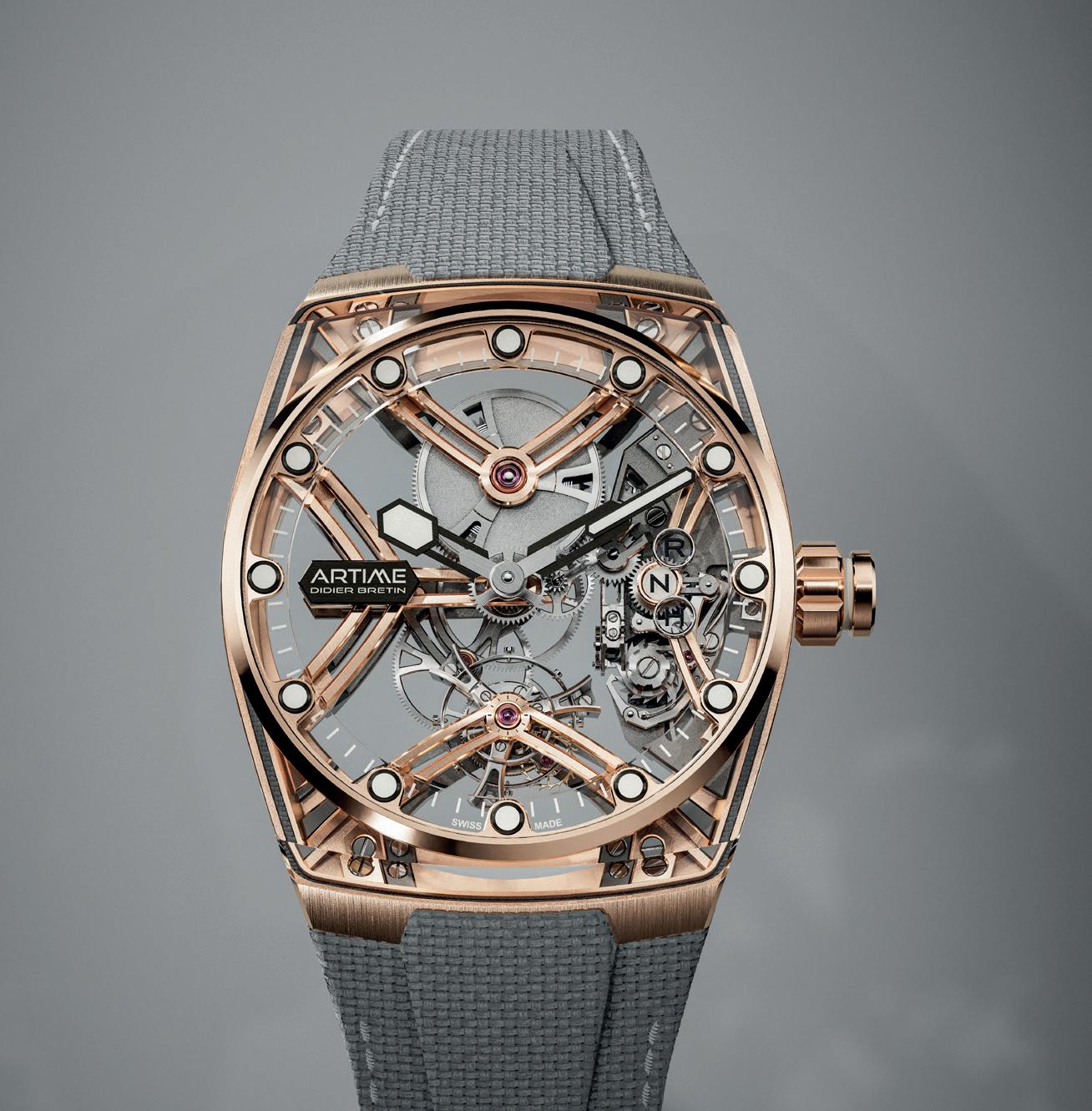
LABAILS Temerity
The debut of Geneva-based brand Labails is a doozy. Sure, the combination of sapphire case and dial means you can see everything inside, but what exactly is going on? Well, you have a big, double-barrelled, tourbillon-equipped movement with a 10hz frequency controlling a chronograph, making it exceptionally accurate. There’s more than two barrels though; there are two modes, eco and sport, that allow you to choose whether to conserve energy for 120 hours or access the high frequency chronograph timing. It’s a novel approach that we only ever see in cars and you can understand why Labails are more than happy to show it off – especially at this eye-watering price.
THE DETAIL:
• 48mm sapphire case with 50m water resistance
• Manual-wind movement with up to 120-hour power reserve
• CHF 2,200,000 (approx. £1,900,000), labails-watches.com
ARTIME ART01-5N
Sometimes less is more… or in the case of skeleton watches, everything. In that vein, the sublime ART01 is a maestro with enough material stripped away that the last few vestiges of movement look like they’re floating on air. The latest rose gold rendition amps up the architectural feel with a case made from one solid block of metal. Not that it’s entirely about looks of course. The movement also includes a novel function selector where you can choose R for remontage (winding), H for heure (setting), or leave it in neutral, saving the need to push and pull the crown stem in what is sure to be a delicate movement. The ART01 is skeletonisation done flawlessly.
THE DETAIL:
• 42mm rose gold case with 50m water resistance
• Hand-wound movement with 80hour power reserve
• POA, limited to 20 pieces, artime.ch
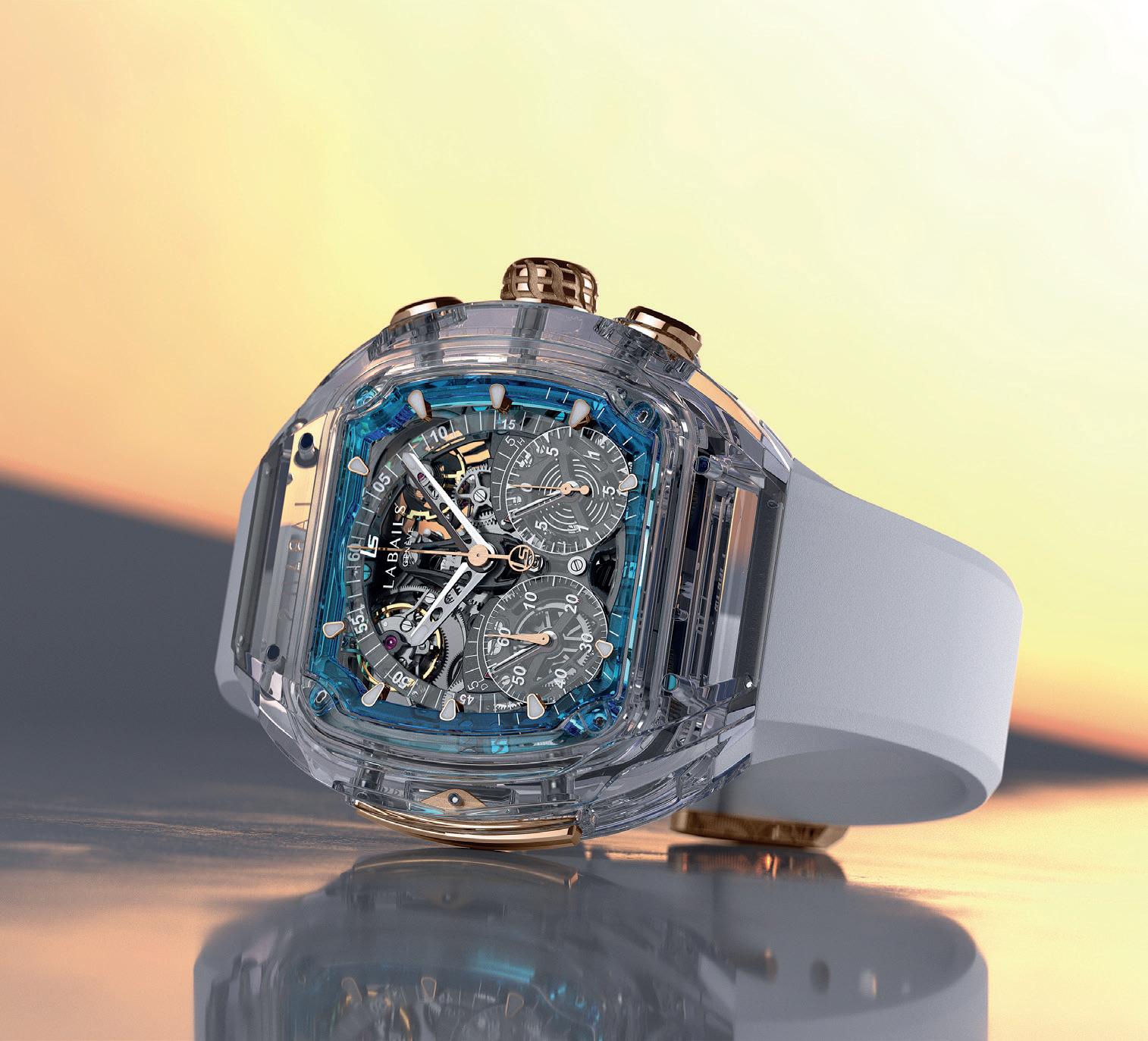
62
skeletons

GEORGES KERN BRIAN DUFFY EDOUARD MEYLAN
ROSS CRANE KRISTIAN HAAGEN
INSIDERS
THE
WORDS:
SAM KESSLER
We like to consider ourselves watch experts here at Oracle Time. You might even agree with that. But when it comes to getting a proper insight into the watch industry, we turn to figures far more influential than us. Yes, than even us. Whether it’s from the perspective of an independent watchmaker, a horological behemoth, a tech-forward platform or journalistic insight, we have it covered in this mini-series of industry vet interviews. From the golden age of 1950s design to the potential of AI, check out what the figures defining modern watchmaking think about their own industry.
What has been the biggest change in the watch industry over the past ten years?
Luxury has democratised and become more relaxed, which perfectly reflects in Breitling’s positioning and strategy of delivering casual, inclusive and sustainable luxury. This approach continues to strongly resonate with our consumers. This aligns with the growing emphasis on sustainability and ethical practices in recent years within the watch industry. Consumers increasingly care about the environmental and social impact of their purchases. A good example is our first ‘traceable watch’, the Breitling Super Chronomat Origins launched in 2022. It’s the first time Breitling – or anyone in our industry – have included a precious-materials supply chain on the watch’s NFT. Its artisanal gold and lab-grown diamonds can be traced from the mine to the wrist and each step along the supply chain is documented, verified and shared back with our customers. This is not a prototype or a one-off. By 2026, all our products will be made with this level of transparency.
Digital marketing has revolutionised the watch-buying experience. Online platforms now serve as vital channels in the decision-making process of the customer. They enable brands to engage with a worldwide audience, provide tailored shopping journeys and boost sales. Blockchain technology, which we introduced as the first watch brand in 2020 is another way, revolutionising how we engage with our customers and offering them a new level of transparency.
What do you consider the golden age of watchmaking and why?
There are several significant phases that have contributed to the industry’s rich heritage. The first half of the 19th century saw an unparalleled level of innovation, craftsmanship, and artistic expression in the industry.
Following World War II, the post-war economic growth provided a fertile ground for the flourishing watch industry. There was remarkable technical progress. Iconic timepieces like our Breitling Navitimer were

GEORGES KERN
CEO of Breitling
connected to the emergence of civil aviation in the 1950s. Its circular slide rule, a key feature for pilots at the time, allowed them to perform all necessary flight calculations.
Moving into the 1960s, watchmaking continued to evolve, influenced by design, lifestyle influences, and cultural shifts. This era saw the emergence of iconic designs and timepieces that reflected the changing tastes and aspirations of society, often associated with influential actors.
In the 1980s, the industry experienced a revival of mechanical watches following the quartz crisis of the previous decade. This resurgence underscored a renewed appreciation for traditional craftsmanship and mechanical complexity, marking a pivotal moment in the industry’s history. Breitling contributed to this resurgence when it launched the Breitling Chronomat in 1984. It reintroduced the mechanical chronograph, on which the brand had built its global reputation, to its rightfully prominent place. The Chronomat’s technical legacy,
combined with its stylish design codes, positioned it as the ultimate sport-chic watch of its era. It became an expression of aesthetics and confidence, effectively making the chronograph ‘cool’ again.
Each of these phases contributes to the history of watchmaking, representing periods of innovation, creativity, and resilience that have shaped the industry into what it is today.
What is the biggest misconception about the watch industry?
A big misconception about the watch

65
the insiders
According to Kern, the Breitling Chronomat (below) in 1984 spurred a revival of mechanical watches, while today’s vision for the company includes Breitling boutiques, which allow customers to experience the atmosphere of an industrial loft while shopping

industry is the notion that customers these days purchase a timepiece primarily due to its movement or mechanism. While the quality of the movement and technical innovation is undoubtedly a precondition, it’s often assumed that this is also the primary factor driving consumer decisions. However, quality, is a conditio sine qua non and in reality, the majority of customers today first buy the brand, then the design before considering the movement of a watch.
If you could change one thing about the watch industry, what would it be?
It would maybe be good for the industry to become more progressive and transparent. Currently, our industry is often characterised by its reserved and secretive nature, which can be seen as overly conservative and traditional. This approach can sometimes result in a slow pace of innovation and adaptation to changing market dynamics.
What do you think the next big thing in watch industry will be?
Among other new growth markets, India is being considered of great potential for the Swiss watch industry with an average economic growth rate of 6% per year. The Indian GDP has increased in recent years and is expected to more than double by the end of 2030, reaching USD $4.5 trillion, making India the third-largest economy by 2027. By 2028, Swiss watch exports to India are expected to exceed CHF 400 million, according to the 2023 Deloitte Swiss Watch Industry Study. The study expects India to be among the top 10 Swiss export markets within a decade.
Furthermore, brands are enhancing the in person-experience to interact and sell directly to customers. There’s growing demand, particularly among young consumers, for the so-called 360° experience. They want the brand and products to be explained to them, and they want the entire collection to be available and fully immerse themselves in the brand environment. In our boutiques, you experience the relaxed and welcoming atmosphere of an industrial loft, reflecting Breitling’s
casual, inclusive, and sustainable approach to luxury. We view our boutiques as ‘social spaces’, meticulously crafting an environment for the customer to feel at ease. Every element, from decor to music to room fragrance, contributes to this atmosphere. Moreover, our retail concept now also includes restaurants, as we have opened, for example, in Geneva and Seoul. They are a natural extension of our boutique and brand experience. The restaurants have a similar style to the boutiques, offering menus reflecting our brand worlds of ‘Air, Land and Sea’. This is the experience people crave and the new big topic in the luxury goods industry. By the third quarter of 2024, we’ll reach a milestone of 300 boutiques, a testament to our significant presence and, naturally, a driving force behind our brand image. Nonetheless, we remain committed to traditional retail, nurturing relationships with esteemed jewellers whom we deem indispensable. We continue to pursue our omni-channel strategy, which includes e-commerce and adapting to evolving consumer preferences.
How do you see technology impacting the watch industry in the next ten years?
Our traditional industry needs to embrace technology as technologies like AI will continue to change the world and certainly impact the way we market our products. Additionally, social commerce, which is already well-established in Asia, is emerging as a key sub-channel, especially for younger consumers. It offers personalised recommendations and instant purchasing through connected apps and mobile payment options.
Furthermore, blockchain technologies will play an increasingly important role in traceability, and Breitling aims to remain at the forefront of this change. At Breitling, technology is not just a business enabler; it’s about empowering customers. Our mantra is to engage and empower each of our Breitling customers. We recognised the potential of blockchain technology in enhancing
the direct relationship between Breitling and its customers, offering full transparency, traceability, and tradeability capabilities unlike any other brand. That’s why we have been among the first to invest in and develop blockchain capabilities in the luxury industry. Breitling is the only luxury brand to leverage blockchain as a true instrument for global customer engagement. Brands have a responsibility to provide a complete ecosystem to customers, centered on experience and values, not just products. Digital technology innovation, with blockchain as the canvas, offers a new way to connect the brand and the customer, anytime, anywhere, and on the customer’s terms.
What style trends do you predict for the next few years?
The watch industry is much less exposed to fast-moving trends as the fashion industry, for example. Currently, we see a trend towards iconisation of products in the watch sector and luxury industry in general, which plays into the hands of a brand like Breitling with an incredible back catalogue and 140 years of history. Building icons takes time. Most iconic designs have a heritage spanning 50 to 60 years, or more, which underscores the importance of timeless designs and craftsmanship. We see proven designs with modern refinements continuing to thrive.
The vintage trend among watch collectors is also playing a role, as is the shift in aesthetic preferences. The lines between men’s and women’s watches are becoming less defined, reflecting a broader societal trend towards individual expression.
The influence of the vintage trend and dress watch style are contributing to a growing preference for smaller watches, particularly among men. It’s a fascinating evolution in the world of watches, and we’re excited to see where it leads.
Our modern-retro design style perfectly aligns with the aforementioned trends and shifts, appealing to a broader audience seeking versatile timepieces that effortlessly blend into everyday life.
67
the insiders
What has been the biggest change in the watch industry over the past ten years?
For us, digital has transformed everything. Not only can we create interesting dialogues and engagement with our collectors across social media, but there are all kinds of tools that mean we don’t need to invest in a big, bricks-and-mortar boutique. These days you can provide that brand experience and sell directly to your customers, which has been massive for us. It’s one of the reasons independent brands like ours can exist. I remember talking to Richard Mille years ago about the difficulty of investing in those boutiques around the world and getting to know your customers; now it just takes a few guys behind screens and costs a fraction of what it used to.
What do you consider the golden age of watchmaking and why?
We’re in the golden age of independent watchmaking right now! Before the modern era they simply didn’t exist. Even 20, 25 years ago it was the likes of Franck Muller, Richard Mille, Hautlence, Urwerk, MB&F, etc, it was hard for collectors to accept that level of watchmaking coming from smaller brands. Since Covid, things have exploded and it’s just the beginning. There are more and more people that know independent watchmaking, that care about that kind of unique, creative brand, and demand is just increasing. There’s something about the combination of creativity, rarity and exceptionality that is has captured collectors’ imaginations.
Prior to that, the 1970s was an amazing era of creativity. People like Genta really contributed to everything we know about watches today.
What is the biggest misconception about the watch industry?
Probably around the label ‘Swiss Made’ and the lack of transparency there.
That’s a big misconception from the end customers. It’s not something we work towards as an industry and we seem happy to let people misunderstand what it means. That

EDOUARD MEYLAN
CEO and Owner of H. Moser & Cie
might be slowly changing with smaller, newer brands bringing in things like traceability and transparency to what they do – which is largely customergenerated – but I’m always surprised to see how few collectors understand what ‘Swiss Made’ means and how brands can abuse the system.
If you could change one thing about the watch industry, what would it be?
The supply chain. It’s so complicated and in a way that’s the beauty of it, but there are always delays, there are always problems. When you run a small company like ours, you’re so dependent on external factors. After all, there’s people behind everything, everything’s handmade. We need to learn and become more efficient, but at the same
time without losing that personal touch; it’s a difficult equation. If I could ensure that people deliver on time with the right level of quality, it would be amazing – but then I guess everyone could do it and we’d be working in a completely different industry! Still, when I talk to my father about it and complain that something wasn’t delivered, he reminds me that it’s always been like that. Apparently we don’t learn.
What do you think the next big thing in the watch industry will be?
It’s not just the watch industry but in general: AI. It’s going to fundamentally change the way we work, the way we create, how we plan, how we anticipate our customers’ needs. It will help on
68
the insiders

69

the production side, the consumer side, everything. Even things like translation are going to be massive for us. It means I can make one movie, one presentation explaining something and instantly everyone in the world can understand it. There’s so much potential that it’s going to completely change the industry.
How do you see technology impacting the watch industry in the next 10 years?
Again, AI will be important, but it will be a case of seeing just how it develops and trying to make the most of the new technology without losing the human touch. We don’t want to replace people with robots! The human approach is what saved the watch industry for many years, but I do think that if we use it wisely in planning, reducing waste,
“There’s so much potential that it’s going to completely change the industry”
understanding what our clients want (without losing the element of surprise of course; we love to create the unexpected) then the next ten years will all be on the up. We just can’t let it kill creativity.
What style trends do you predict for the next few years?
I think we will go back to classic elegance and smaller sizes. I wouldn’t be surprised if things like yellow gold come back in a big way. It’s always cyclical and we’ve seen a lot of steel, a lot of integrated bracelets over the past few years – which will continue to be interesting and important for watches as a whole – but for me the big comeback will be gold in classic designs and smaller diameters.
70 the insiders
The Pioneer Centre Seconds Concept Citrus Green (above) might be the future for the company, but for Meylan the future of the industry revolves around AI

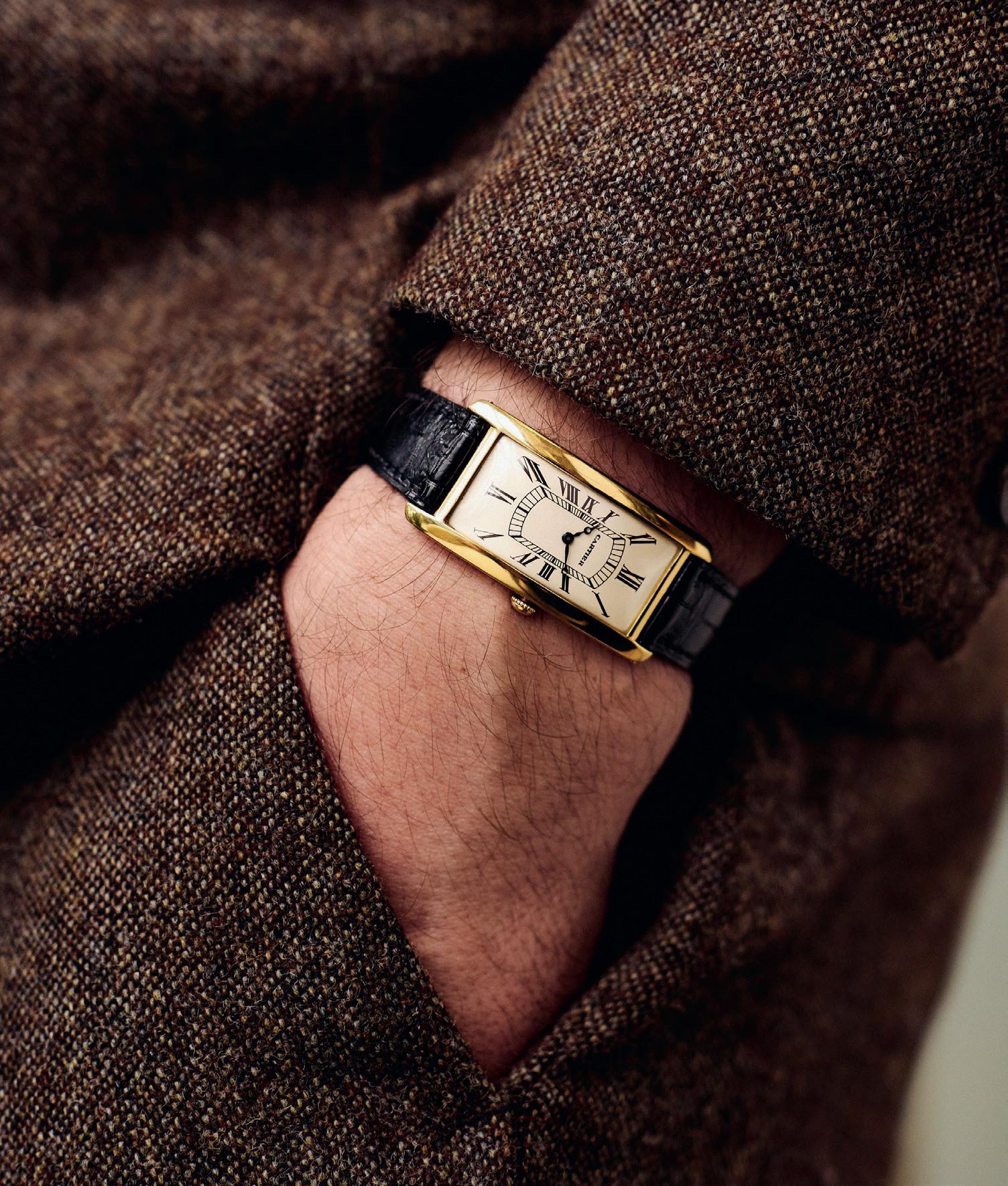
ROSS CRANE
Founder and CEO of Subdial
What has been the biggest change in the watch industry over the past ten years?
The rise of the secondary market. This has impacted almost every aspect of the market, in both good and bad ways. We’re on track for the secondary market to eclipse the primary in sales terms in the next ten years in my opinion. It’s increasingly on the agenda of brands, but it’s also influencing how watches are being developed. I think brands rightly recognise the importance of good secondary prices to their ability to sell a certain model when new. It has led to things becoming a little homogenous of late though.
What do you consider the golden age of watchmaking and why?
The 1950s and ‘60s were obviously hugely important. You’ve got the establishment of the big lines like the Speedmaster and Submariner, big technological advances, but also a major shift in the way watches are perceived. It’s really the beginning of the modern watch market as we know it today.
What is the biggest misconception about the watch industry?
There is a widely held belief that ‘luxury’ watches are out of reach for most people, and a worry that even if you do have the money you’ll likely be laughed out of the boutique. Vintage watches can be an intimidating place to get started, but they actually represent and amazing way to get into watches, with a top brand, without spending thousands. For £500 to £900 you can buy all sorts of amazing pieces from the 1950s, ‘60s and ‘70s, from brands like Omega, Longines, and Cartier.
If you could change one thing about the watch industry, what would it be?
I’d like to see brands take the issue of authenticity seriously and collaborate more. There are so many things that
could be very easily addressed with some collaboration between brands and the pre-owned market.
What do you think the next big thing in watch industry will be?
More of a hope than a prediction...less focus on pure tech innovations like NFC cards and NFT companions, and a return to mechanical innovations.
Trying to compete with smart watches entirely misses the point for the majority of people. We’ve started to see a bit more of a push on new materials, production techniques and focus on complications, but if you look at most people’s reactions to releases at W&W we’re still a long way off where people would like us to be. Hopefully we’ll see brands start to react to that sentiment and take a few more risks.
How do you see technology impacting the watch industry in the next ten years?
We’re going to continue to see big shifts in the way watches are bought, sold and collected. The way people think about their collections has completely changed in the past ten years, as the cost and effort involved in buying and selling has come down dramatically. People have more brands in their collection than ever before, and only a subset of those watches are one’s they’ve bought new. It means there’s more competition for attention than ever, new releases aren’t only competing with other brands new releases, but they’re competing with their own releases from 20 years ago.
What style trends do you predict for the next few years?
We’re seeing a leaning more towards precious metals, complications and smaller case sizes. There is definitely an interest in rarer and less ubiquitous pieces, which can run counter to the other motivating factor, which is in buying pieces with a well-established market and solid residuals. Brands that intersect the two things, like A. Lange & Sohne and Cartier, I think will continue to do well.
72
The misconception that luxury watches are out of reach for most people and a return to mechanical innovations are both on Ross Crane’s mind

73 the insiders
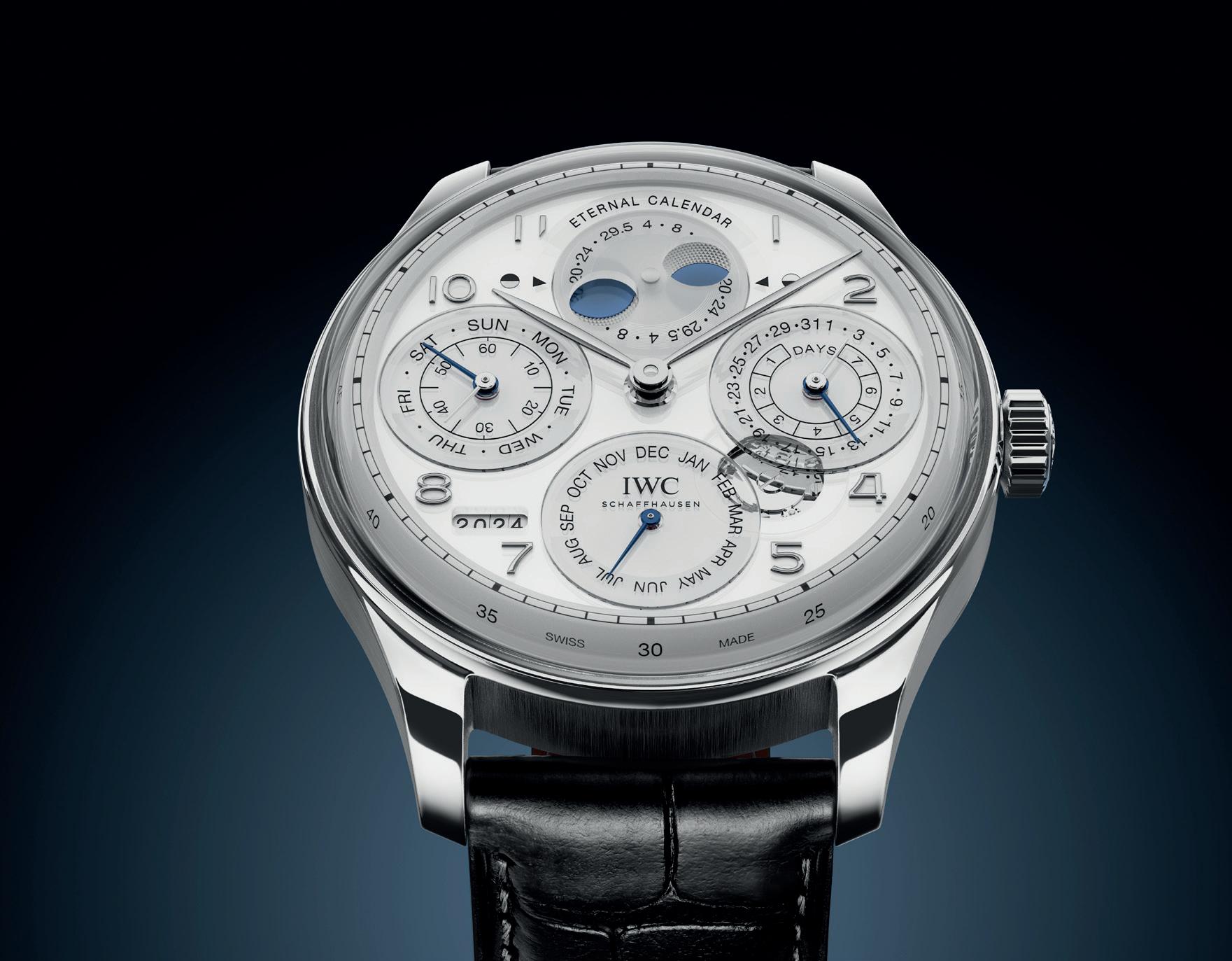
BRIAN DUFFY
CEO of Watches of Switzerland Group
What has been the biggest change in the watch industry over the past ten years?
The biggest change has been the continual increase in demand hugely outstripping supply. In terms of product, the convergence of gendered case sizes has been a significant change, as they now sit generally between 31 and 42mm.
What do you consider the golden age of watchmaking and why?
It’s very difficult to pinpoint a specific year, as for me the golden age of watchmaking spans the early 1900s and 1960s. These decades gave us iconic styles, such as the wristwatch, waterproof, automatic, dates, divers, pilots, and GMTs. World War I saw the significant shift from the pocket watch to the importance and practicality of the wristwatch, which in turn inspired the fashion set to create different dials and case shapes. This led nicely into the Art Deco period, iconic in terms of
the distinctive style. Two of our recent Watches of Switzerland centenary exclusive launches; the Tank Louis Cartier and Bulgari Serpenti Seduttori feature designs with roots in the 1920s.
What is the biggest misconception about the watch industry?
People are mistaken in thinking that young people are not interested in watches. They really are and this shouldn’t be underestimated.
What do you think the next big thing in watch industry will be? And how do you see technology impacting the watch industry in the next ten years?
Technology is driving many of the changes and trends emerging in the watch industry. For example, 3D printing has already helped to accelerate product development, and
the digital management of production has helped to upgrade flexibility and response time.
What style trends do you predict for the next few years?
I foresee that experimenting with colour and dial treatments will become increasingly popular, as well as the use of synthetic straps. We have just seen the new launches at Watches & Wonders, where our expert buyers have reported the following trends for the year ahead; a focus on complications, Vacheron Constantin broke their own record for ‘The World’s Most Complicated Watch’ with a timepiece that took 11 years to develop and incorporates a staggering 63 horological complications, including but not limited to a Triple Axis Tourbillon, Grande Sonnerie and Perpetual Calendar. IWC have released The Portugieser Eternal Calendar, while an example of watchmaking excellence, the Eternal Calendar pushed the beloved Perpetual Calendar one step further by eliminating the need to adjust for leap years for up to 400 years. This year titanium is the metal of choice for elevating and refining some of our favourite models from Chopard with its well-loved Alpine Eagle 41 XP TT, Breitling launched a Titanium Chronomat, and Piaget launched the Altiplano Ultimate Concept Tourbillon 150th Anniversary. We have been truly spoilt this year with the amount of stunning jewellery watches that have been unveiled. Alongside new releases of Bulgari’s timeless Serpenti we have seen watches incorporated into a variety of bracelets, bangles, necklaces and rings. The most notable brands leading the way are Cartier, Vacheron Constantin, Bulgari, and Chanel. Yellow gold has made a resurgence at this year’s Watches & Wonders, with many of the industries favourite families receiving updates in this tone of precious metal. Launches from Rolex, Cartier, Tudor, and Bulgari are among the golden highlights from the fair. With sustainability remaining a key issue, recycling across all aspects of the industry will be a key trend.
74
“I foresee that experimenting with colour and dial treatments will become increasingly popular, as well as the use of synthetic straps”

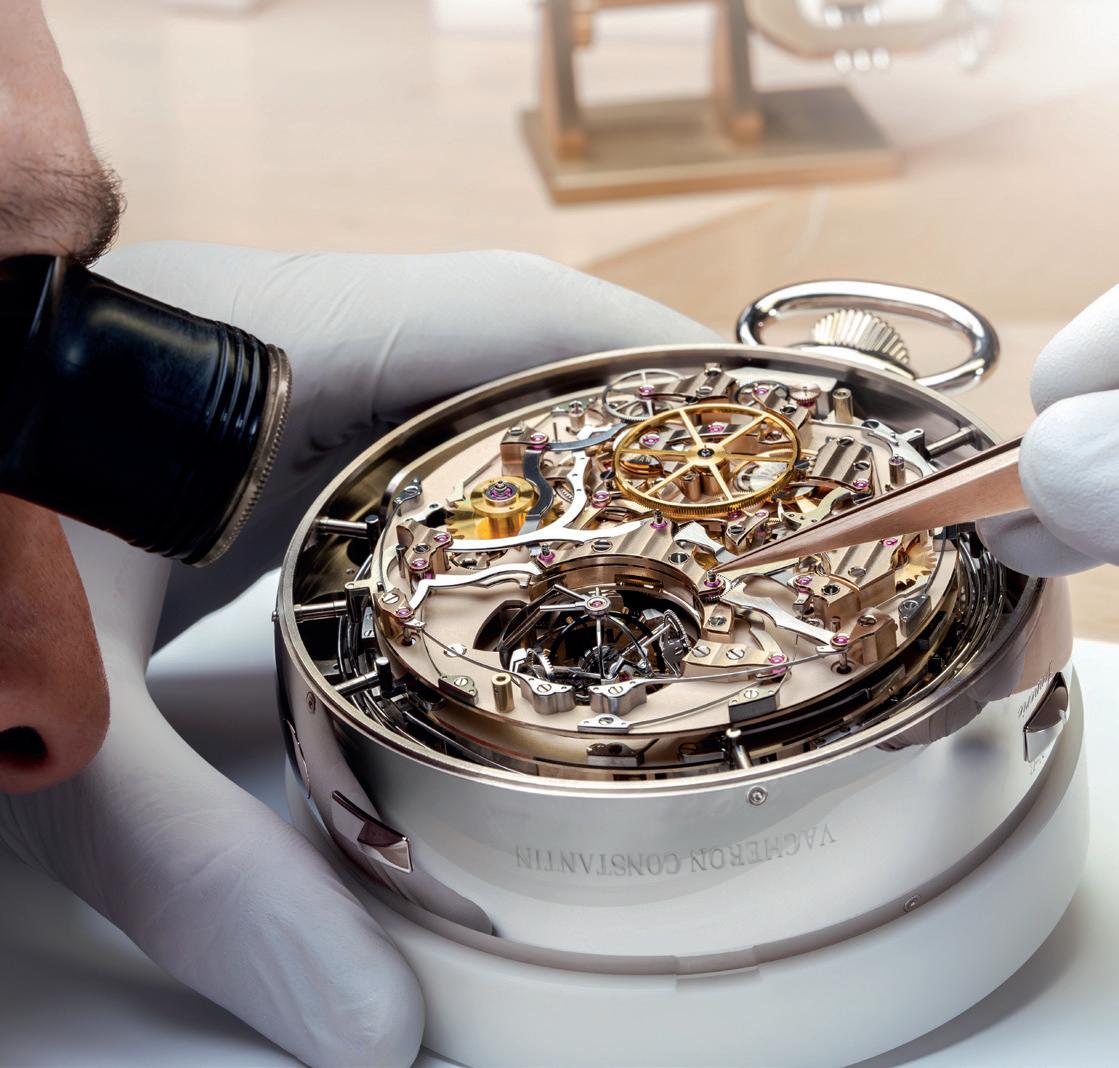
With sustainability a key issue for the CEO of Watches of Switzerland Group, he believes that recycling across all aspects of the industry will become a key trend in the years ahead, along with experimenting with colour and dial treatments
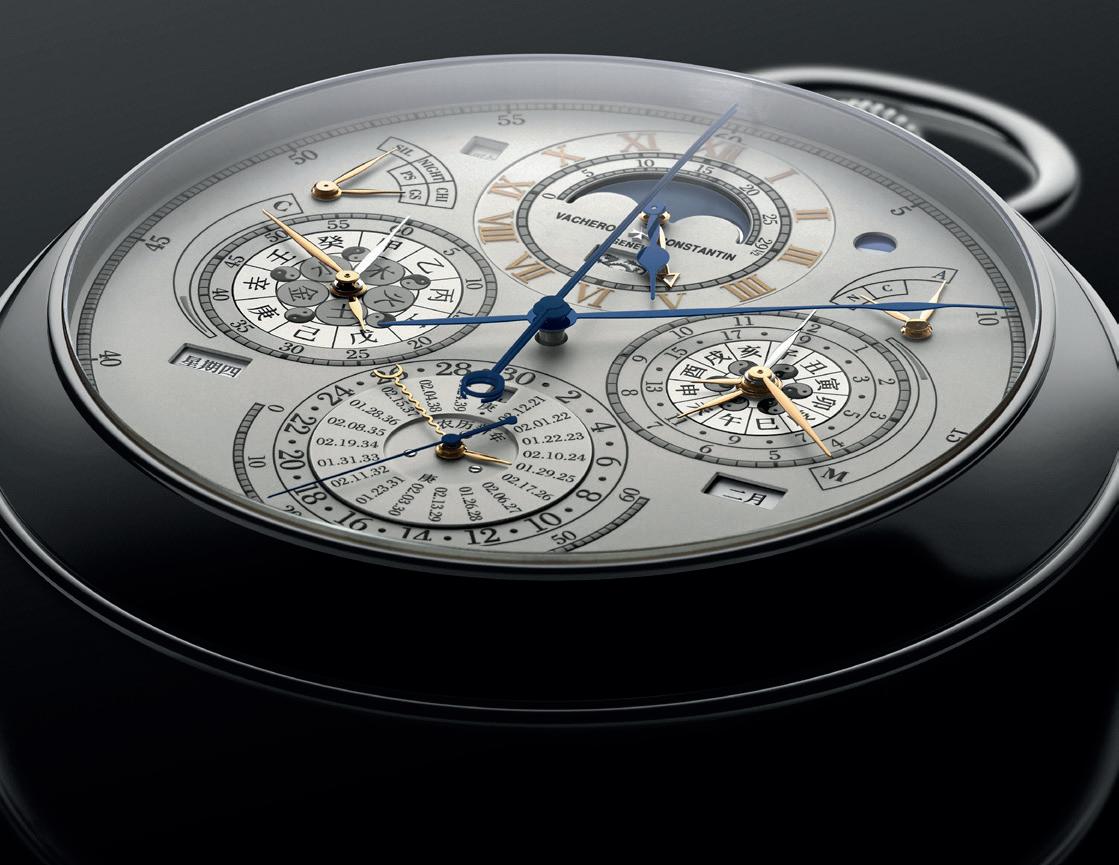
75 the insiders
What has been the biggest change in the watch industry over the past ten years?
In recent years, the luxury watch market has witnessed a notable trend: a significant surge in prices for new timepieces, juxtaposed with a considerable decline in prices on the secondary market following the onset of the Covid-19 pandemic. During this period, secondary market prices escalated rapidly, transforming timepieces into valuable assets rather than just timekeeping accessories.
Established sellers of pre-owned watches suddenly found themselves competing with a wave of new players, predominantly trading in newer Rolex, Patek Philippe, and Audemars Piguet timepieces, reaping substantial profits from these transactions.
As market activity has slowed since April 2022, prices on the secondary market have moderated to a more rational level. However, the prices of new watches have soared to a point where many potential buyers may be re-evaluating their purchasing decisions, opting to allocate their funds elsewhere.
What do you consider the golden age of watchmaking and why?
Personally, I’d say the 1950s, as that whole decade was the heyday of Rolex
KRISTIAN HAAGEN
sports models, as well as the decade of increased commercial flights around the globe. So many watches were inspired by traveling (the Rolex GMTMaster, Omega Speedmaster, and Breitling Navitimer) and underwater leisure (the Rolex Submariner, the Omega Seamaster 300, and Blancpain Fifty Fathoms).
What is the biggest misconception about the watch industry?
A high price does not always mean a better timepiece.
If you could change one thing about the watch industry, what would it be?
That Swatch would stop making bio-ceramic versions of their precious family siblings.

What do you think the next big thing in watch industry will be?
The watch industry ought to experience a period of price stagnation and consolidation. With the global slowdown, brands should opt for safer launches rather than overly creative pieces. However, this slowdown might not be entirely negative. It’s a reminder that luxury is exclusive and meant for a select few, not the masses. Therefore, adhering to the traditional rules of luxury is essential for maintaining prestige in the market. That said, ask yourself; is Omega a luxury watch brand just because their prices have increased so dramatically in recent years?
How do you see technology impacting the watch industry in the next ten years?
When discussing technology, particularly smart watches, I don’t view them as a challenge to mechanical watches. Smartwatches and mechanical watches cater to distinct audiences and serve different purposes. In my opinion, they coexist harmoniously (sorry Jackson and McCartney).
What style trends do you predict for the next few years?
Titanium has been receiving a lot of attention in recent years, not only within the recent Rolex production but also in the luxury segment. Tourbillon watches, perpetual calendars and other high-complication watches are offered in titanium, as if this rugged material were a precious metal. I find this trend immensely appealing, envisioning a future where more complicated timepieces are offered in titanium. It’s reminiscent of Carlo Crocco’s unconventional approach with his inaugural watch collection in 1980, blending gold watches with rubber straps.
“Is Omega a luxury watch brand just because their prices have increased so dramatically in recent years?”
76 the insiders
Watch collector, journalist & author @KRISTIANHAAGEN
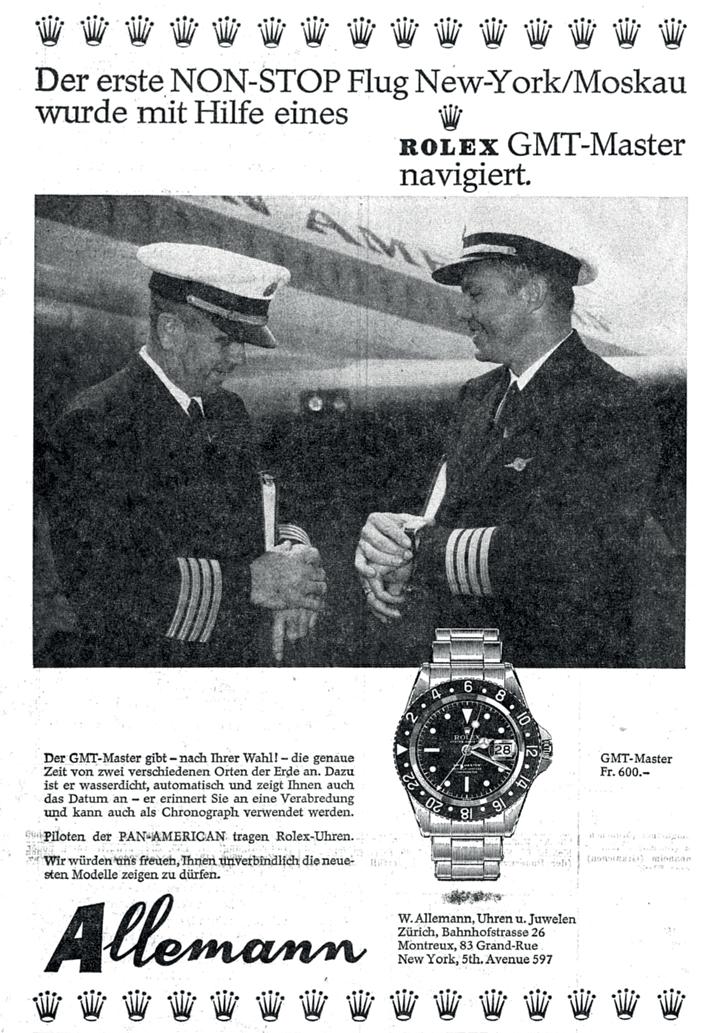

A high price does not always mean a better timepiece, according to Kristian Haagen, who is hoping that Swatch will stop making bio-ceramic versions of their family siblings in the coming years.
If you’re reading this Nick Hayek Jr...
77
the insiders

A GUIDE TO THE
OU T D O OR WA R DR OB E
While this might be our Insider issue, it’s high time to get outside
79 STYLE — outdoor wardrobe
W O R D S : C H A R L I E T H O M A S
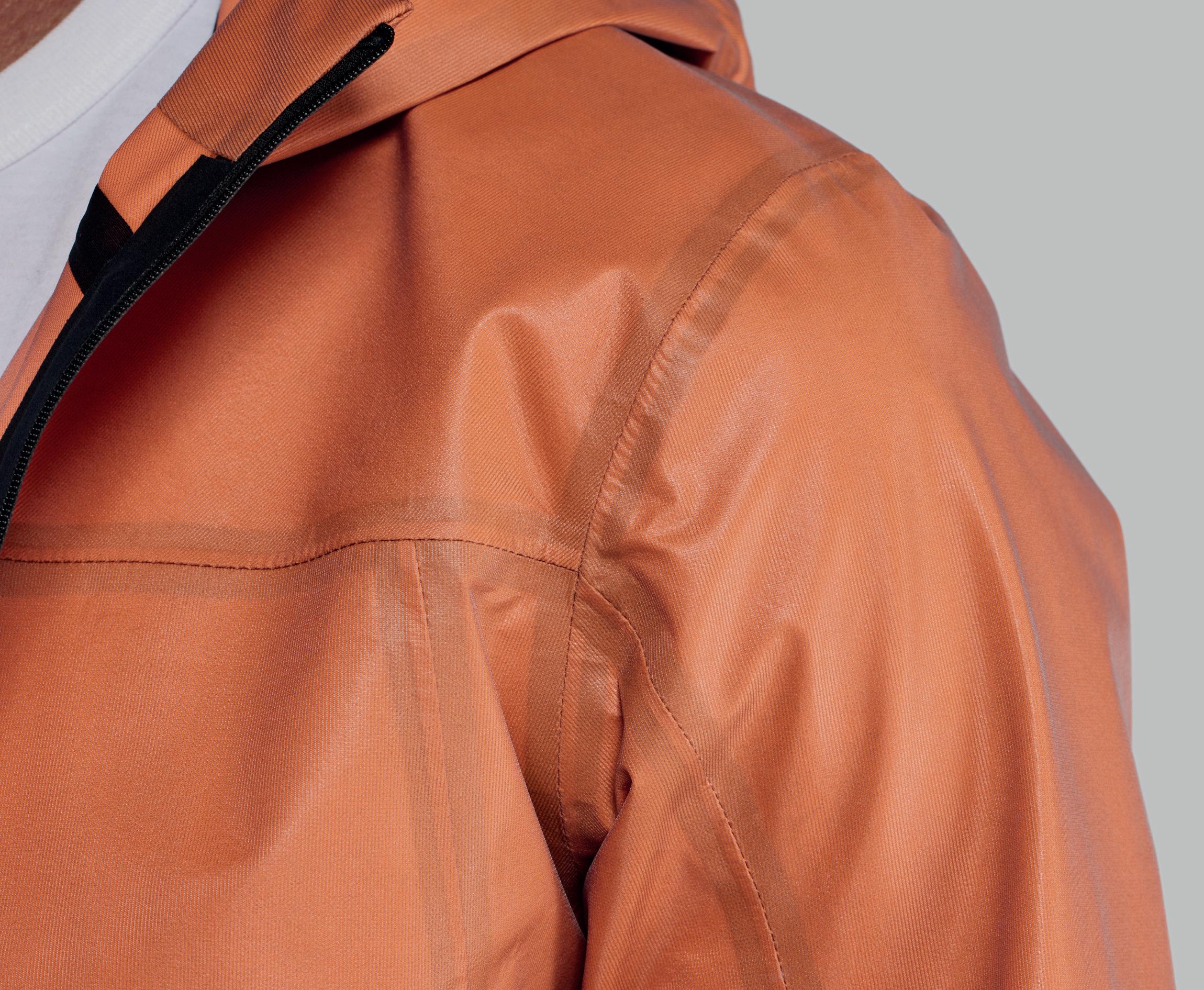
> > Outdoorwear has never been more popular. Designed with functional detailing and practicality in mind, outdoor clothing has enjoyed a resurgence among those who value versatility as much as comfort and style. Proper outdoorwear can look as good in the city on a weekend as it does half way up a mountain, and it’ll protect you from the elements in all locales. From lightweight raincoats through to functional layering, outdoor gear can be smart and easy to wear, as much as it can be useful.
But what exactly is outdoorwear? It’s a genre of clothing loosely designed for outdoor pursuits and activities. That can be hiking, walking, climbing or running, with the gear designed to keep you warm in cold weather and cool in the heat. It’s essentially performance clothing, which should keep you dry and offer plenty of pockets and compartments to store your things while on the move. Outdoorwear can span every clothing item, from coats and outerwear through to socks, hats and gloves.
Outdoor gear is, first and foremost, designed for purpose. But with the increasing casualisation of menswear, and the rise in people seeking comfort and practicality, today it’s worn just as much in casual wardrobe rotations, as it is on hikes and mountain walks. Luxury brands and fashion houses alike have contributed to the rise in popularity of outdoorwear, with Prada and Brunello Cucinelli designing their own elevated takes on lightweight rainwear, hiking boots and technical bags. But of course, if you’re after traditional practical clothing, it pays to stick to the original labels that specialise in outdoor gear. These include The North Face, Patagonia, Shackleton, and Arc’teryx, as well as Barbour, Berghaus, and Columbia.
80
STYLE — outdoor wardrobe
From lightweight raincoats through to functional layering, outdoor gear can be smart and easy to wear, as much as it can be useful

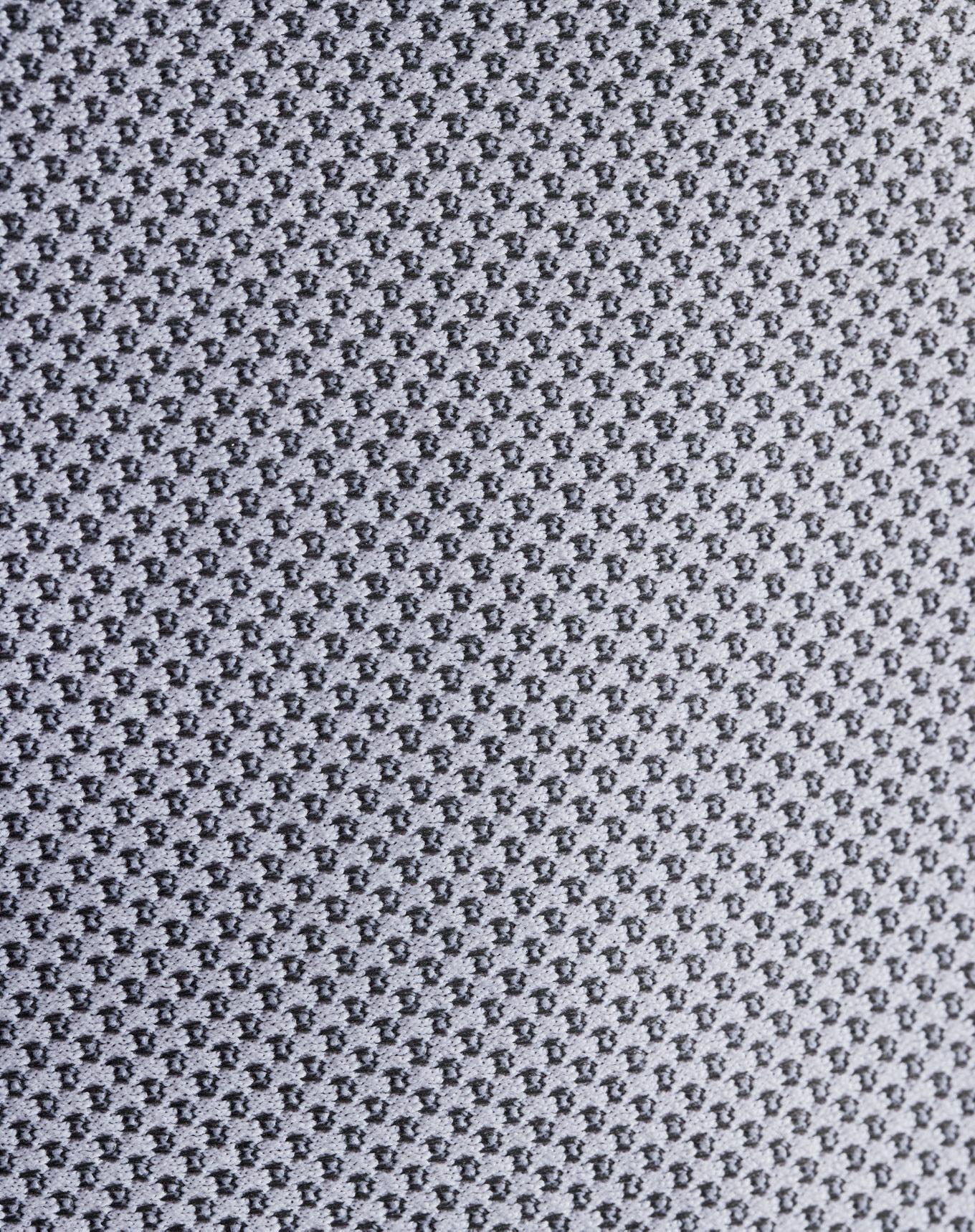
— FABRICS TO CONSIDER —
When it comes to outdoorwear fabrics, what you go for largely depends on the garment. Lighter base layers for example are typically made from a treated polyester or nylon blend. You might even find base layers in lightweight merino wool, a natural fabric known for its performance qualities. Merino is renowned for being able to naturally draw moisture away from the body, and it resists odour incredibly well. Elsewhere in heavier jackets and coats, heavier duty nylon blends are typically utilised. The best of these will be completely impermeable to water, and may be lined with down or synthetic fill for ultimate warmth.
There is another fabric that works particularly well with outerwear, and that’s waxed cotton. While completely inferior in a technical sense to lighter weight nylon and polyester blends, waxed cotton is a traditional outdoorwear fabric that has long been used in field jackets from the likes of Barbour and Belstaff. When waxed, cotton is also waterproof, and being a natural fibre it
81
can take on a unique patina with wear. This makes it a stylish alternative to synthetic outdoor fabrics, and one that works particularly well with casualwear.
On the flipside, it’s always worth looking to some of the more techforward brands for some cutting-edge material options. Vollebak, for example, have more than their fair share of something-proof fabrics, including some colour-changing numbers, like their new Firefly jacket.
So exactly what kinds of product should you be looking out for and why?
— RAINCOATS —
If you’re looking to invest in outdoorwear, start with the humble raincoat. Lightweight and easy to pack, technical raincoats are ideal for those who travel regularly, as they won’t weigh you down and can be folded at the bottom of a bag when not needed. Look for those with practical detailing, including front zipped pockets, integrated hoods and adjustable drawcord waists.
— MID LAYERS —
Mid layers are key to the outdoor wardrobe. They can be in the form of a T-shirt or long sleeve top, and as mentioned previously are typically cut from lightweight nylon, or in more luxurious cases, merino wool. These can be treated as base layers and are designed to draw moisture from the body to keep the wearer cool and dry.
— HIKING BOOTS —
As with all things outdoors, hiking boots have taken a hold of the wider menswear scene. Popular with those after the gorpcore look, hiking boots are designed for traversing tricky landscapes, whether on long hilly walks or mountainside jaunts. But they work just as well as regular winter boots, with their overengineered commando soles, waterproof uppers and handy speed lacing making them both practical and stylish.

Vollebak have more than their fair share of something-proof fabrics, including some colourchanging numbers, like their new Firefly jacket
82 STYLE — outdoor wardrobe
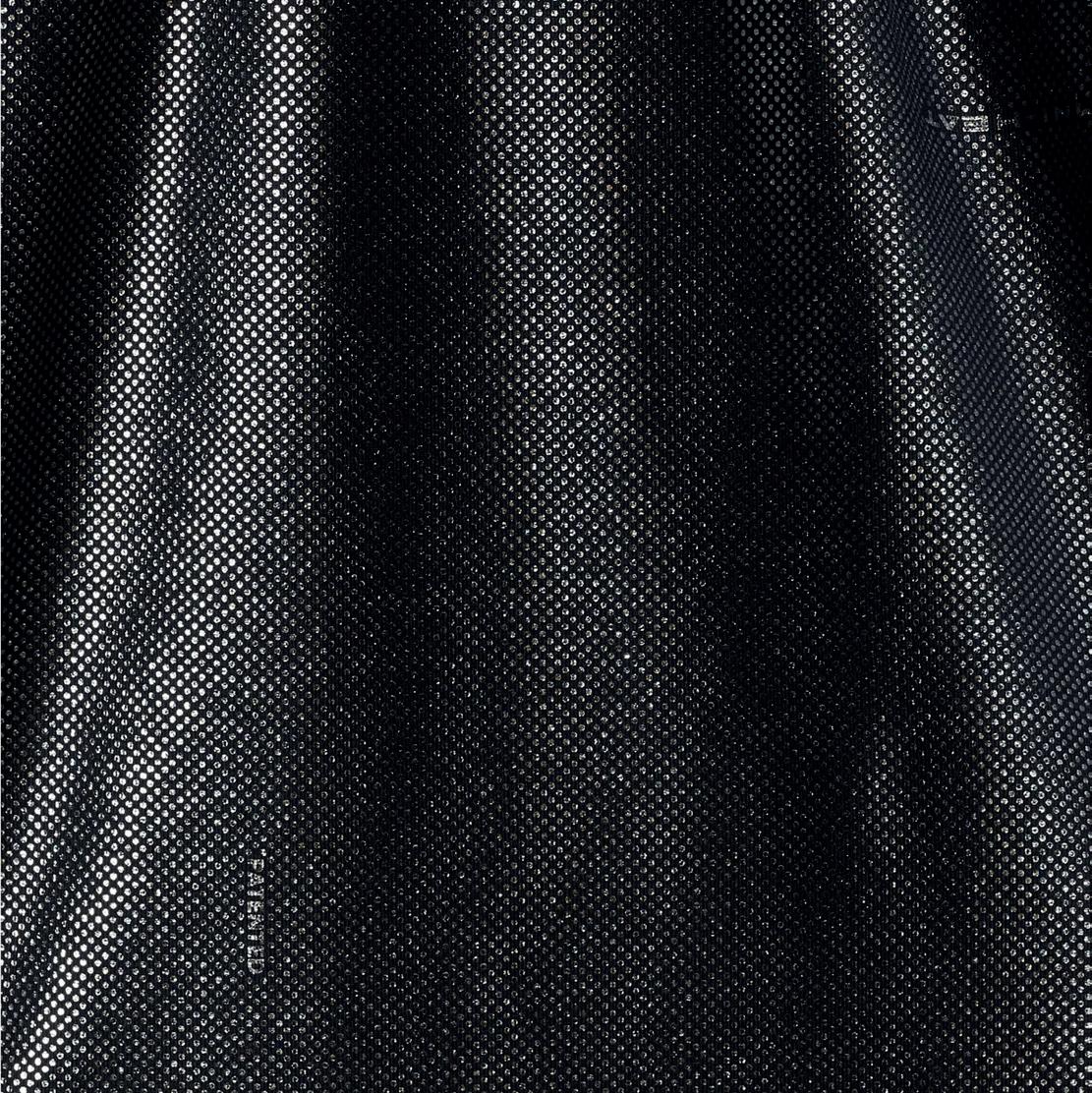
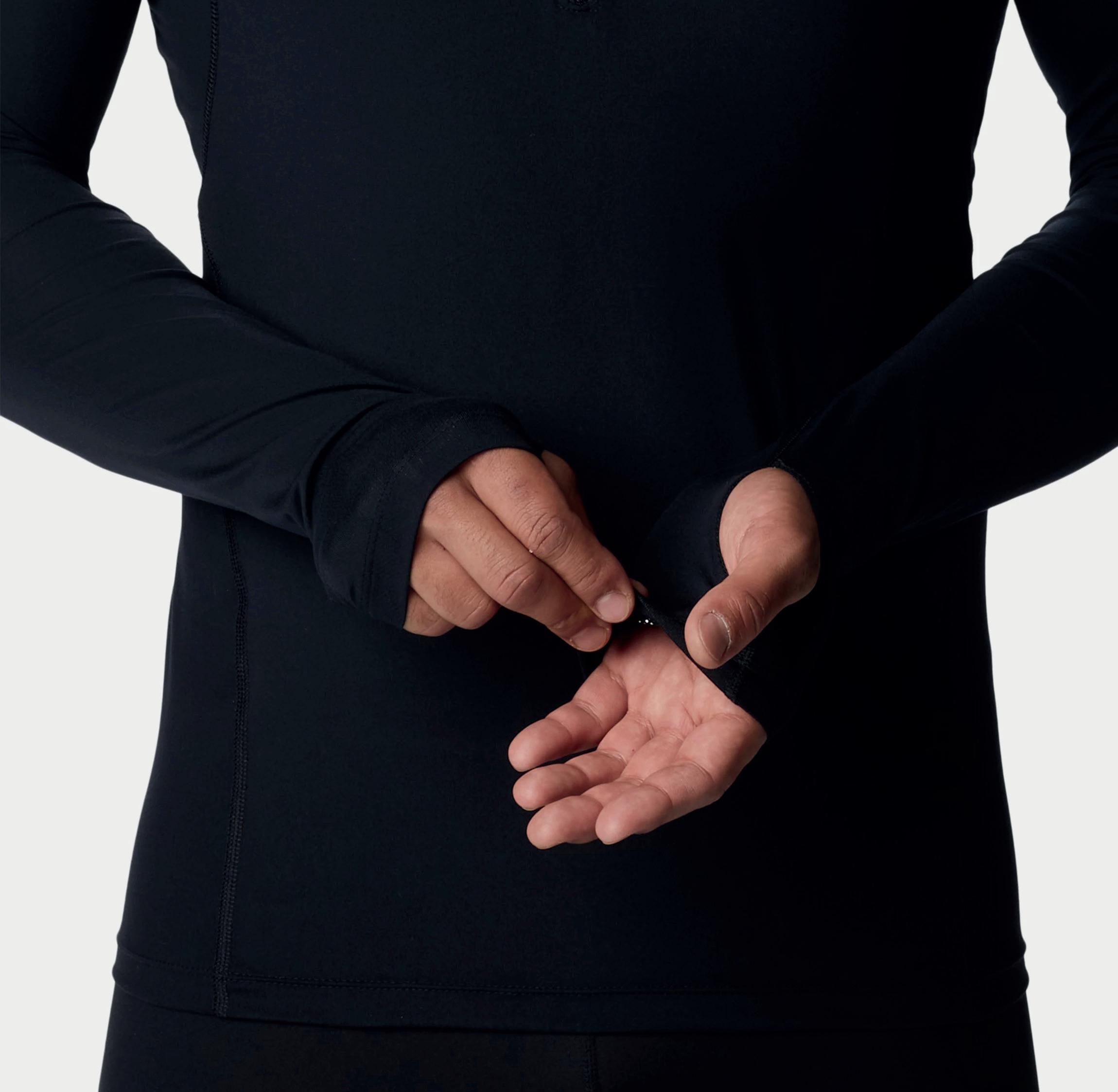
83 STYLE — outdoor wardrobe
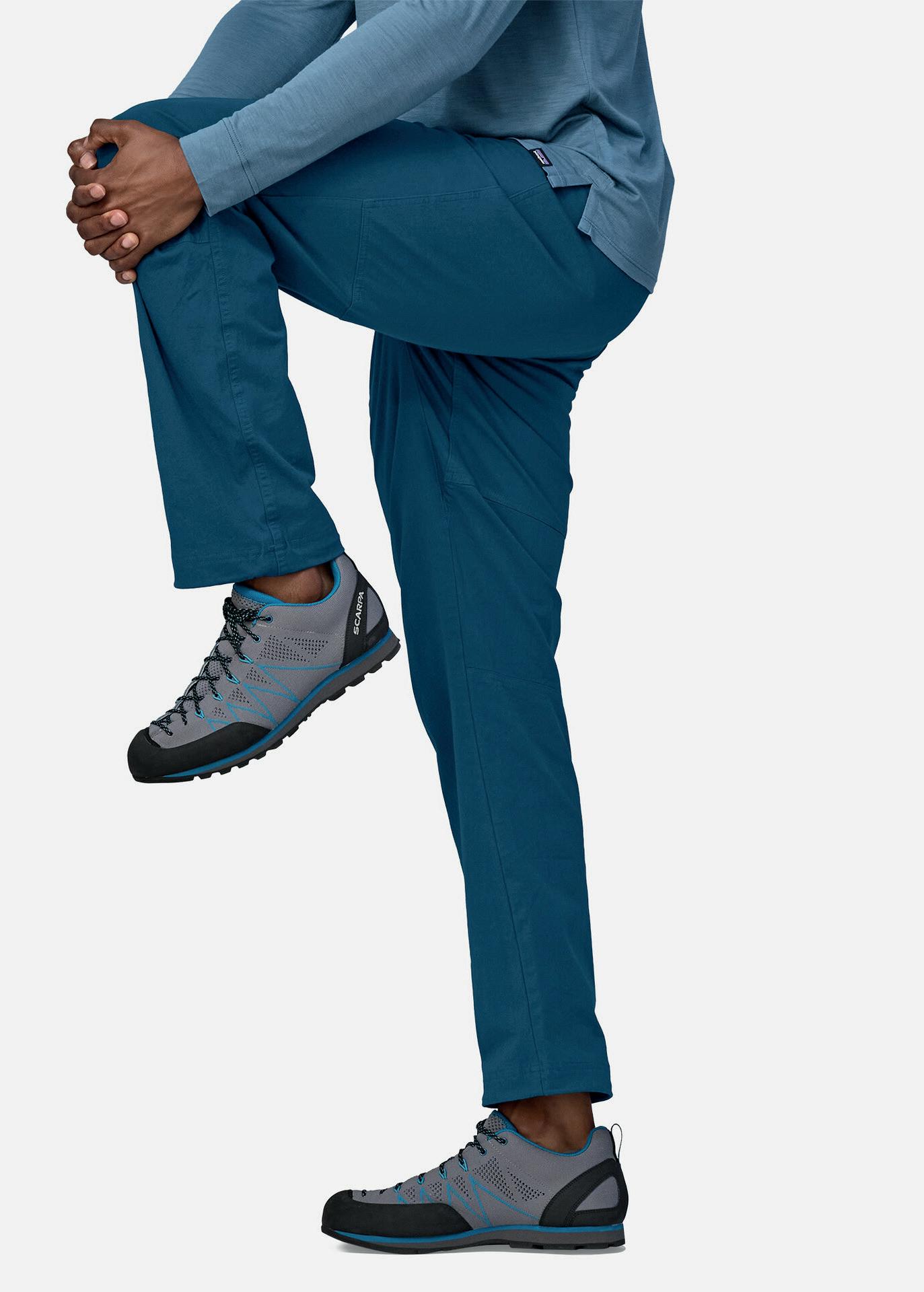
Fabrics should include stretch to ensure they’re comfortable when on the move, while pockets come in handy, whether on the thighs in the form of combat trousers


— TECHNICAL TROUSERS —
When it comes to trousers that fit within the outdoor wardrobe, look for lightweight designs that are designed to move with you rather than against you. Fabrics should include stretch to ensure they’re comfortable when on the move, while pockets come in handy, whether on the thighs in the form of combat trousers, or zipped pockets on the front or rear.
— ACCESSORIES —
Depending on the kind of weather you’ll be experiencing, outdoor accessories can vary. For colder climes, beanies and gloves are essential, helping to minimise skin exposed to the cold. For warmer excursions though, look to caps to protect from the sun, and lightweight breathable merino socks to stop your feet from overheating.
84
STYLE — outdoor wardrobe
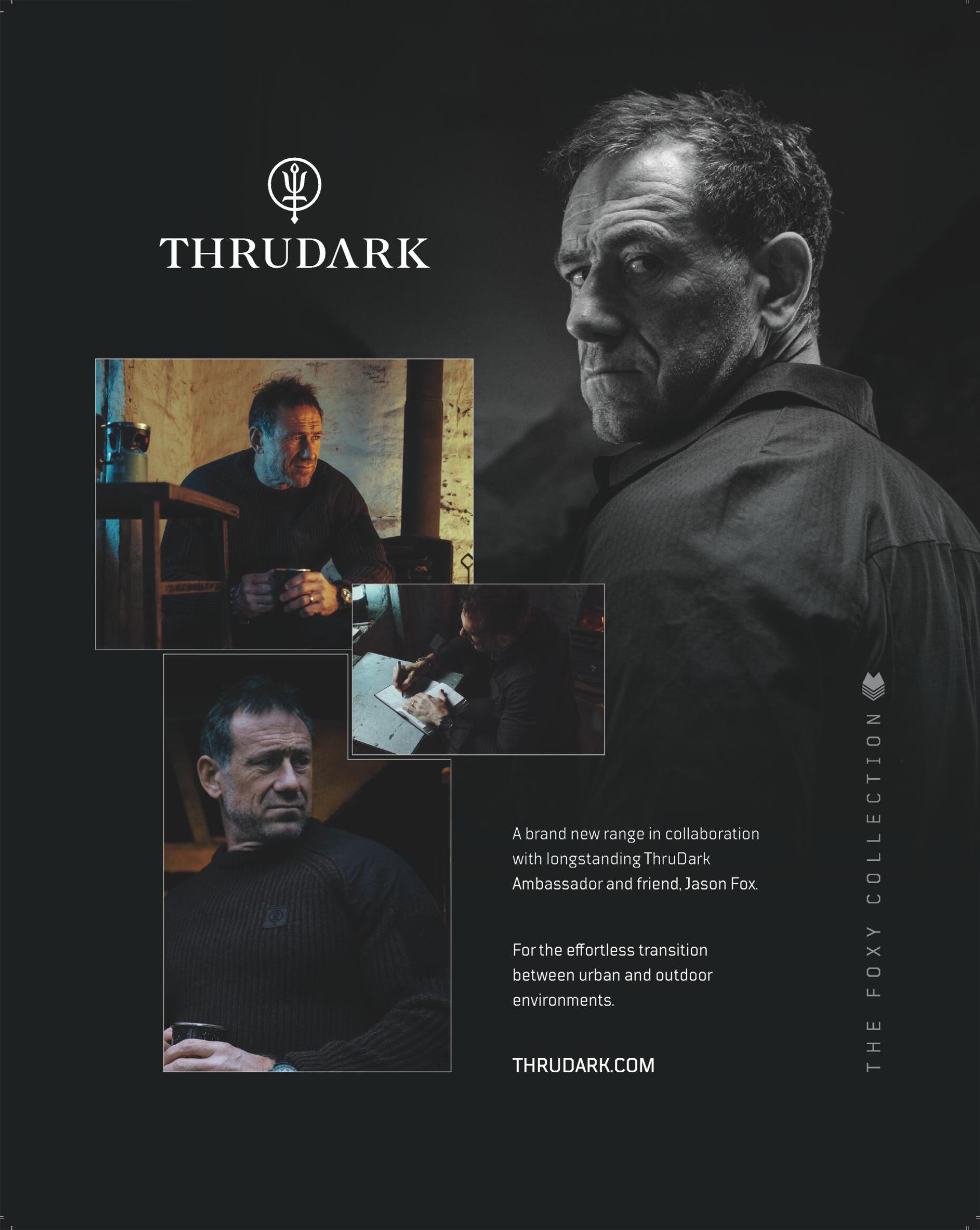
ON THE TRAIL
»
So, now you know what to look for in your outdoor wardrobe, you might be wondering where to start. Well, as the summer months approach you’ll need some pieces that can keep you both dry and cool. After all, just because we’ve entered the warmer seasons, don’t be expecting it to stay dry. So, what should you pack on your next hiking trip?

VOLLEBAK BLACK ALGAE SHORTS
They might make headlines with tech-led jackets that change colour, light up in the dark, you name it, but Vollebak’s bread-and-butter comes from some of the best-made outdoor staples around, including the humble shorts. This particular pair use a rare cotton called Karnak Menoufi, a silk-like cotton from the Nile Delta. Imagine all the temperature controlling, fast-drying, lightweight comfort of your favourite cotton ensemble and double it. Not that there’s no R&D here of course; each pair is dyed using black algae for an eco-friendly, naturally faded look. £225, vollebak.com
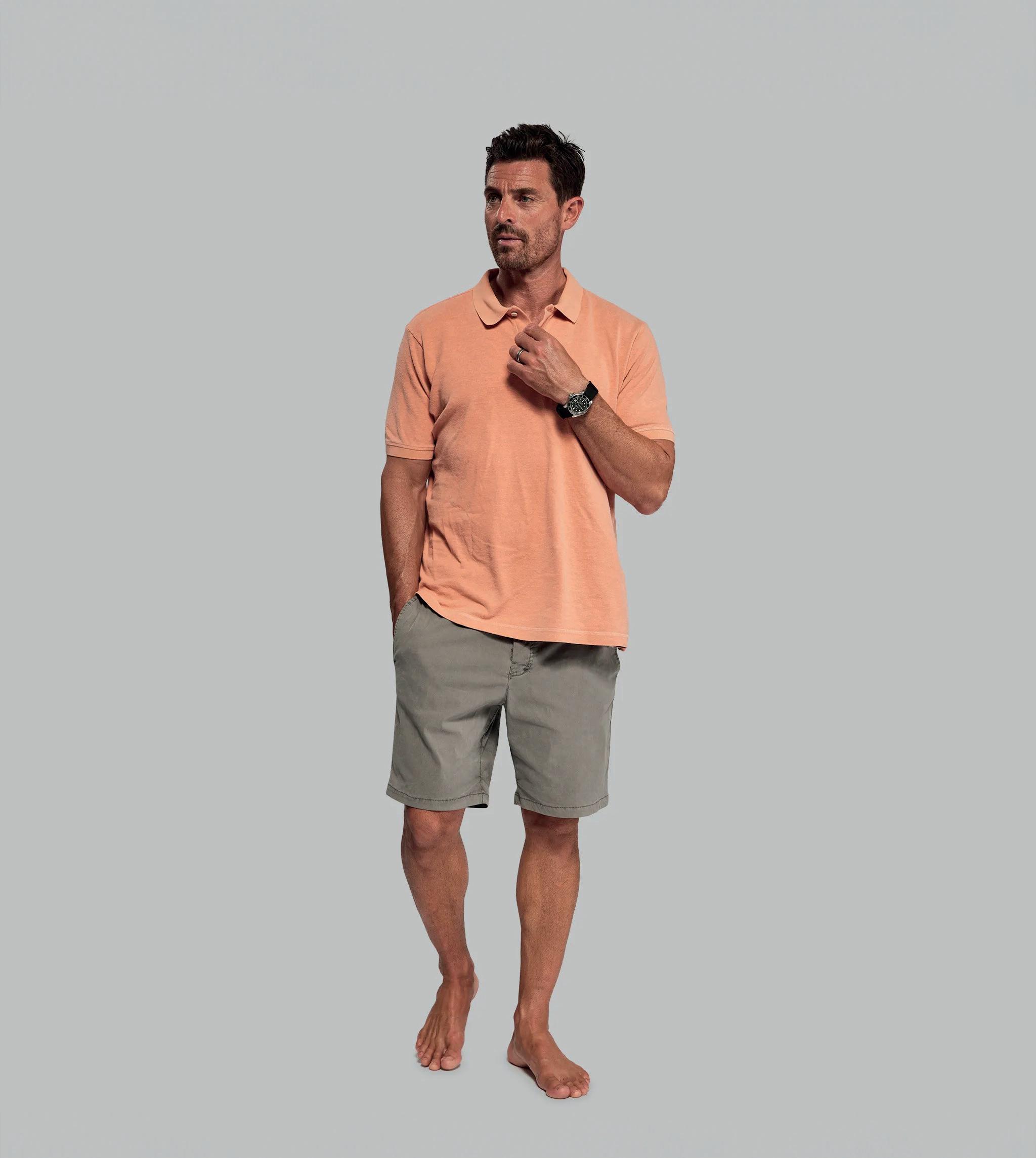
PATAGONIA POINT PEAK TRAIL PANTS
For something a little more rugged and weatherready than shorts, opt for a pair of trail pants specifically designed for hiking, a la Patagonia’s Point Peak collection. Despite their slim look, they’re stretchable and elasticated where it matters. Allowing for great movement they’re fitted close and securely enough to keep the wind and water out and your body heat in, making them suitable for any trail, from an idyllic British country hike to Everest base camp. £140, eu.patagonia.com
86 STYLE — on the trail
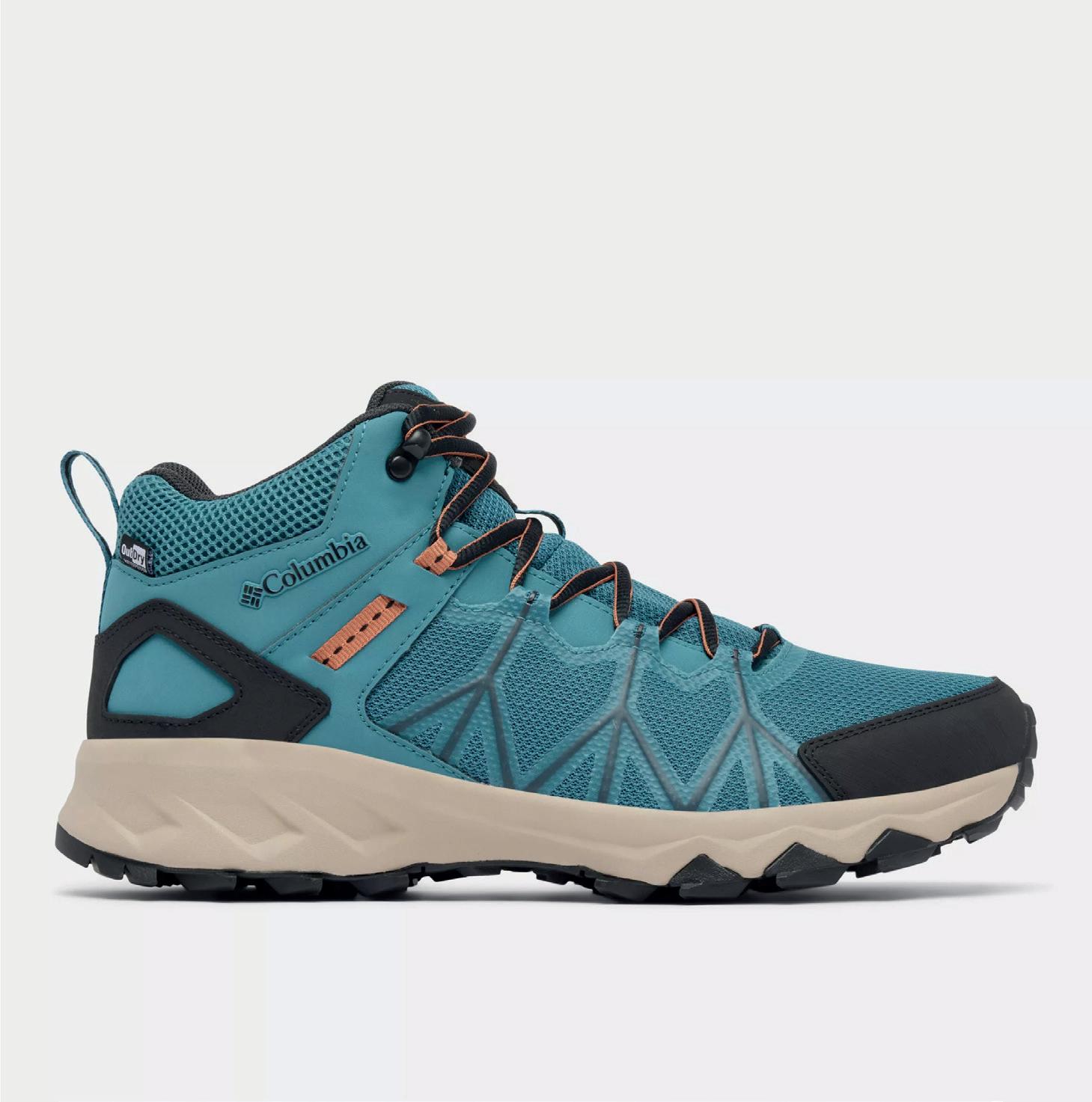
COLUMBIA MEN’S PEAKFREAK II MID OUTDRY WALKING BOOT
The boot that just keeps going. Thanks to its 3D printed construction, Columbia’s Peakfreak II is vastly more lightweight than your go-to clodhoppers, balancing breathability with waterproofness fit for a downpour. And, thanks to the Adapt Trax outsole, you’ll have more than enough grip to cope. Even in dry weather you’ll be glad of the Techlite+ midsole, a single density foam number that offers cushioning and stability both. They also come in a sleek medium blue. Sure, that has no intrinsic benefit on your hike, but who doesn’t want to look good out on the trail?
£125, columbiasportswear.com
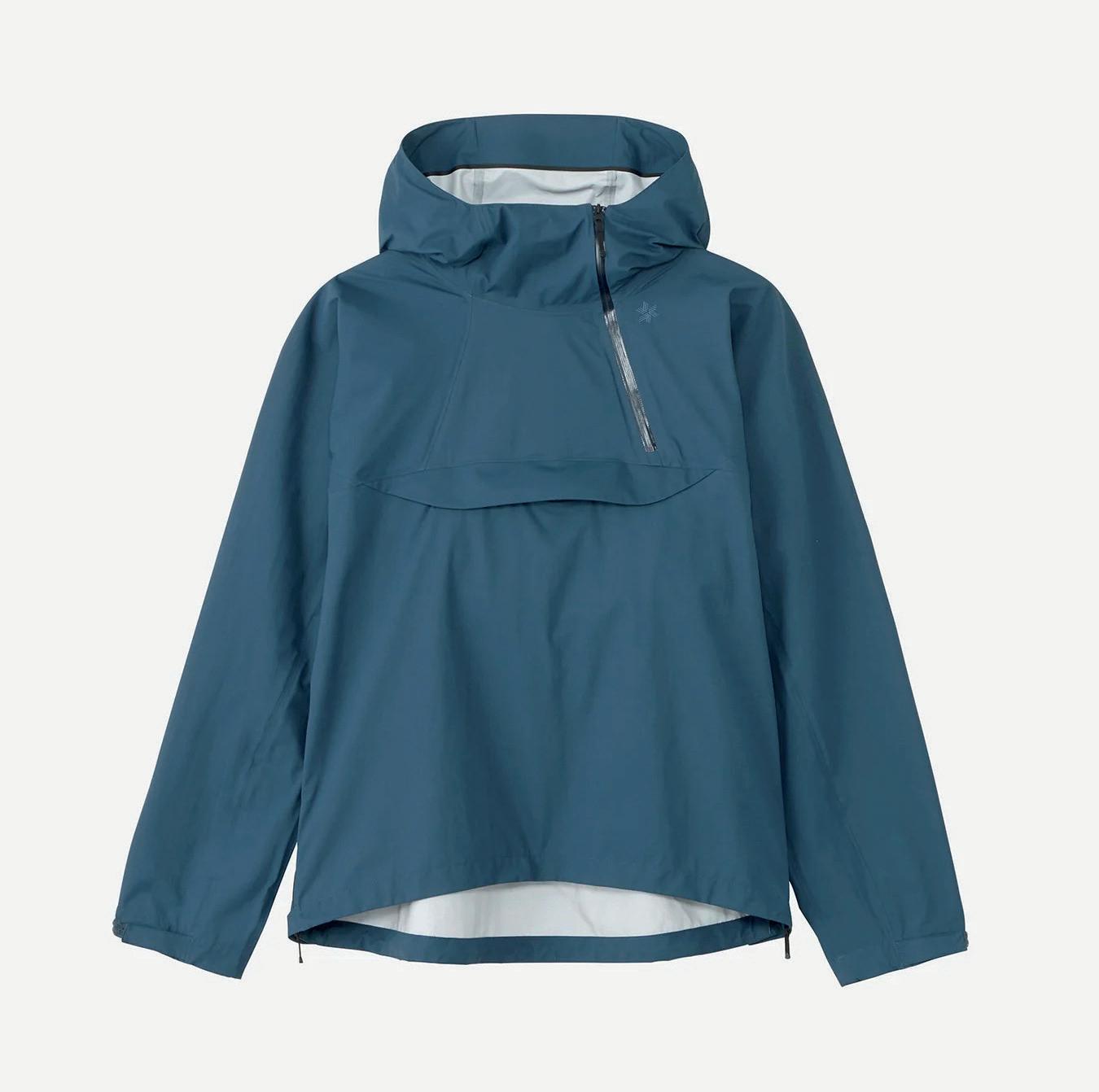
THRUDARK STEALTH SEAMLESS BASE LAYER TOP
You can trust the militaristic minds at uncompromisingly hard performance brand Thrudark when it comes to something as utilitarian as a base layer. The Merino wool - the ideal material for a base layer - is just the start. The top has been scattered with targeted micro vents mapped across the body with more intensity than an SAS mission briefing, while blending polyamide into the mix amps up the moisture wicking, insulating properties of standard Merino wool. If there’s a base layer you can rely on, then it’s this, whatever time of year you need it.
£110, thrudark.com

GOLDWIN PERTEX SHIELDAIR MOUNTAINEERING PULLOVER
Goldwin’s ultra-breathable mountaineering pullover has everything you need to keep cool halfway up a tough peak: wider sleeves for more comfortable arm movement, a hood compatible with a helmet, and a svelte build so that it uses less fabric and stays nice and light. The science experiment in the name, Pertex Shield Air refers to the permeable nanofiber membrane it’s made from, which is that perfect balance between being breathable and water resistant so that, even if you’re not tackling El Capitan, it’ll keep you dry and cool until winter.
€570 (approx. £490), eushop.goldwin-global.com
The science experiment in the name, Pertex Shield Air refers to the permeable nanofiber membrane it’s made from
87 STYLE — on the trail
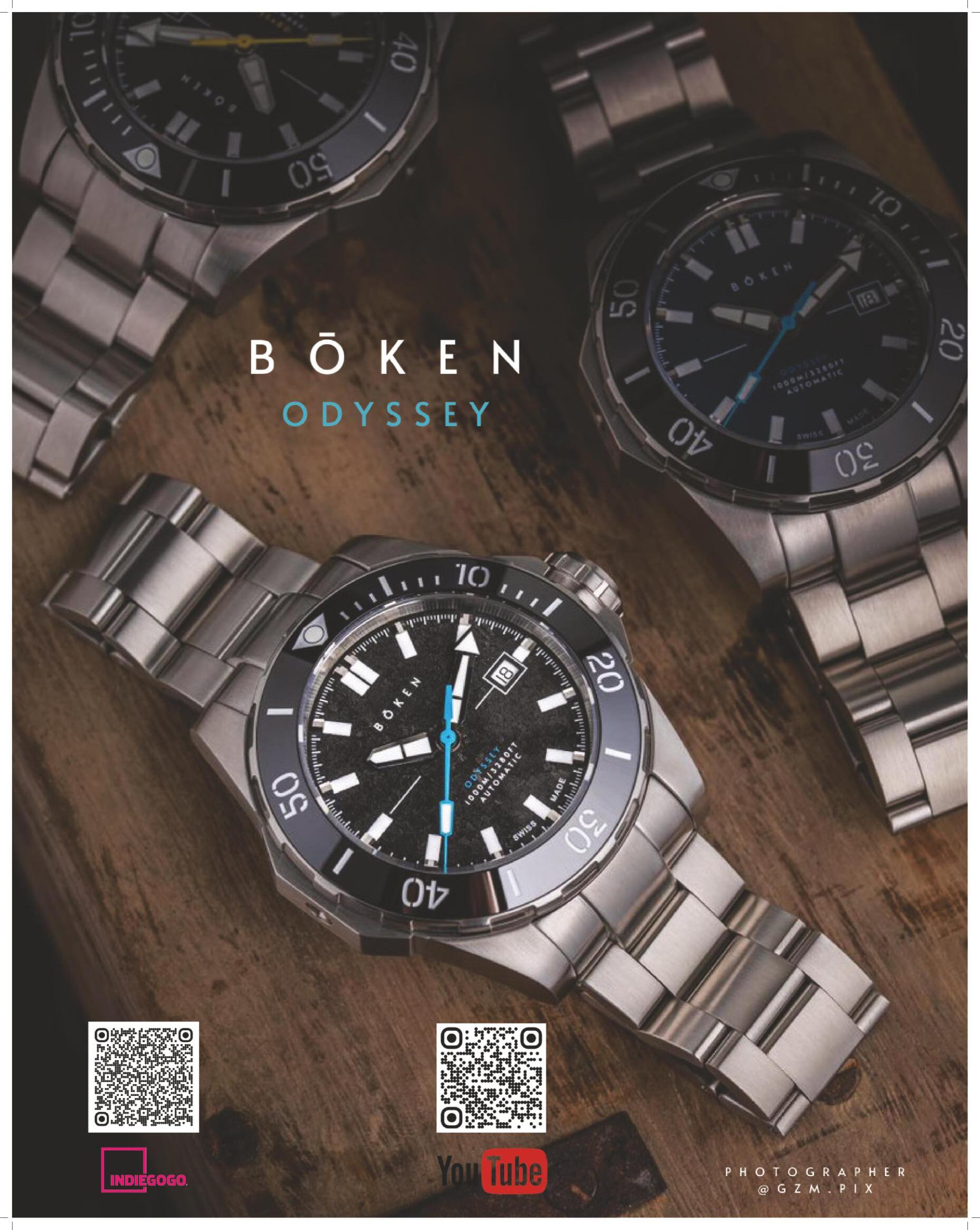
Glashutte Original Sixties Chronograph Annual Edition 42mm stainless steel case with 30m water resistance 39-34 calibre automatic movement with 40-hour power reserve £8,100, glashuette-original.com
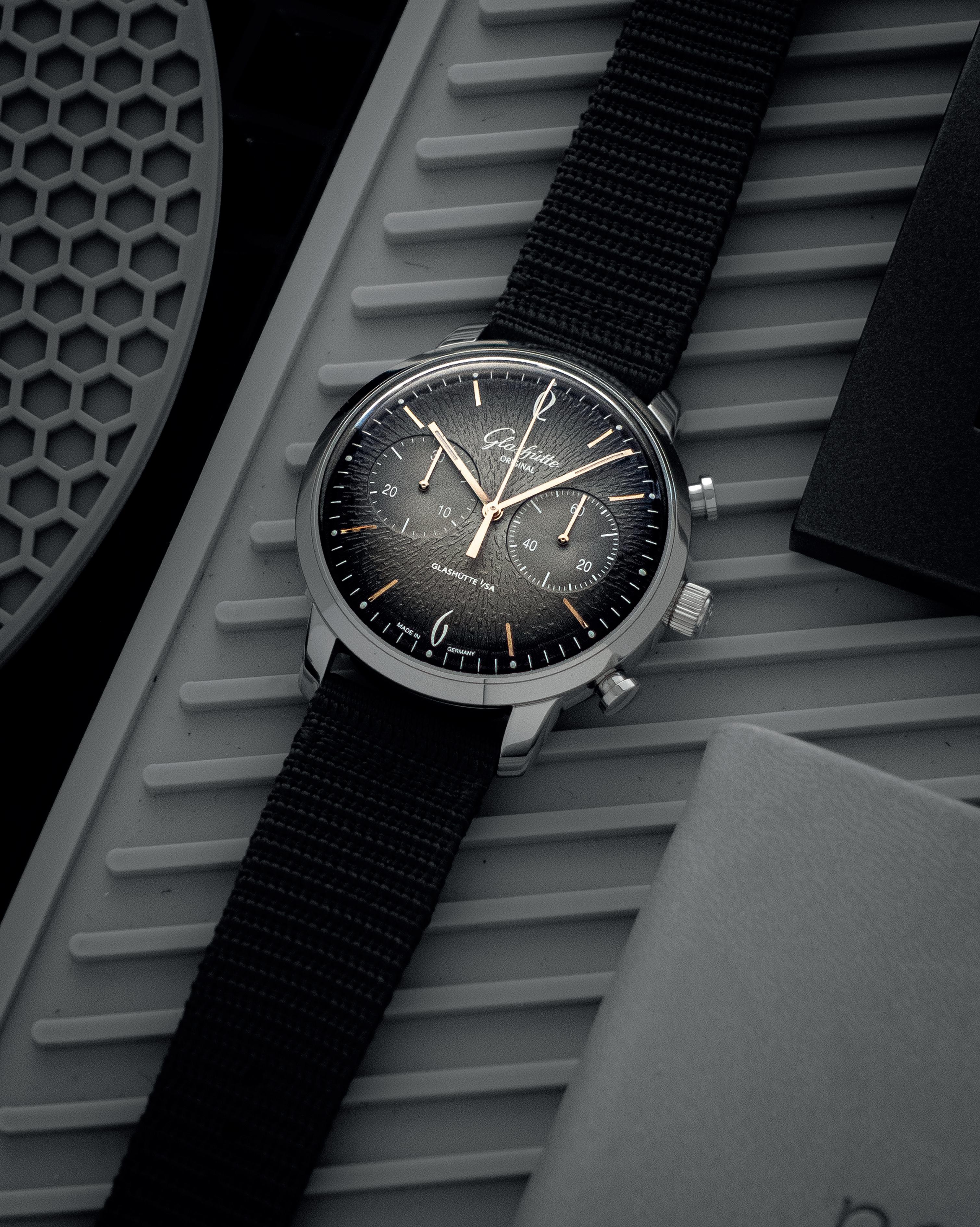
FACE VALUE
> > There’s discourse aplenty about the mechanical prowess of certain movements compared to others; we’ve done much of that in this very issue. There are also more reasons than we can count why you’d opt for a specific complication or function in your watch of choice. But let’s be perfectly blunt here, sometimes all it comes down to is a good-looking timepiece – which starts first and foremost with the dial.
In recent years, watchmakers have been pushing what their dials can do more and more. Minimalism? Out the window. Serious monochrome? Forget about it. With more colours and textures than a SS24 catwalk, these timepieces par visual excellence are more than just a pretty face, sure – but they’re also a very, very pretty face. Sure – but they’re also a very, very pretty face.
89
Photography by NIGEL OXLEY
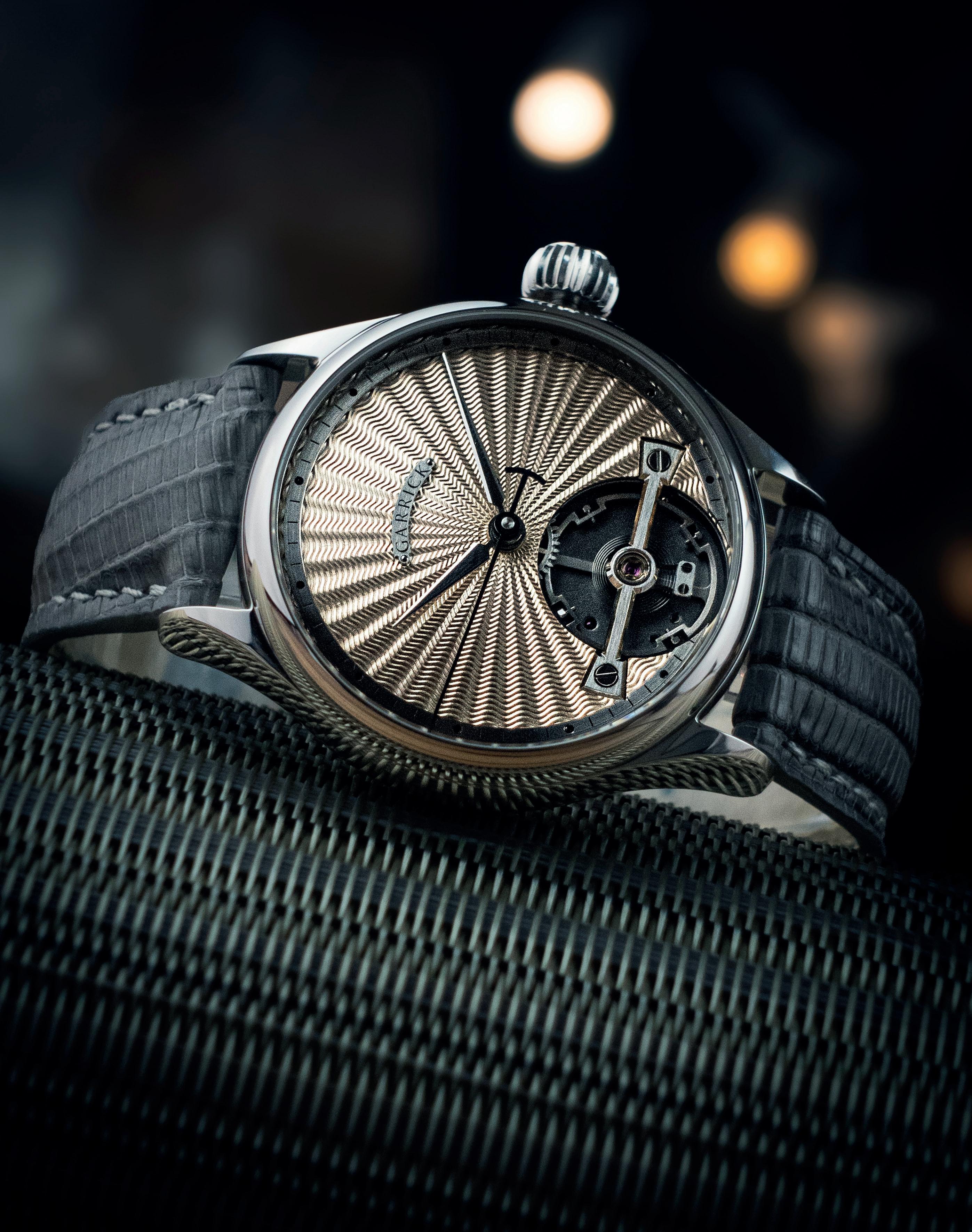
Deadbeat Seconds
42mm stainless steel case with 100m water resistance
Garrick DB-G06 manual-wind movement with 45-hour power reserve
£22,800, garrick.co.uk
90
Garrick S2
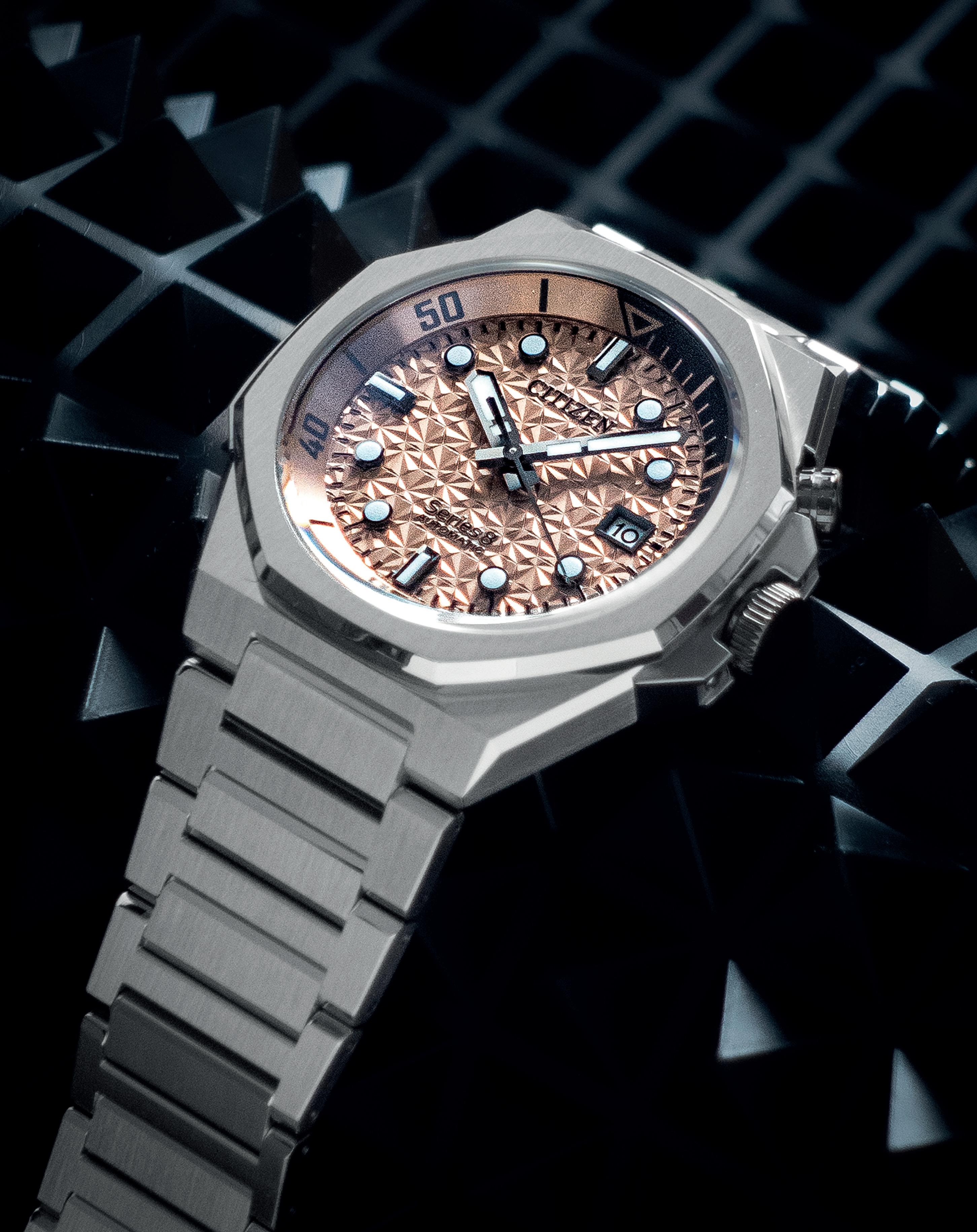
Citizen Series 8 Automatic 42.6mm stainless steel case with 200m water resistance Citizen automatic movement with 42-hour power reserve £1,595, citizenwatch.co.uk
91 STYLE — shoot
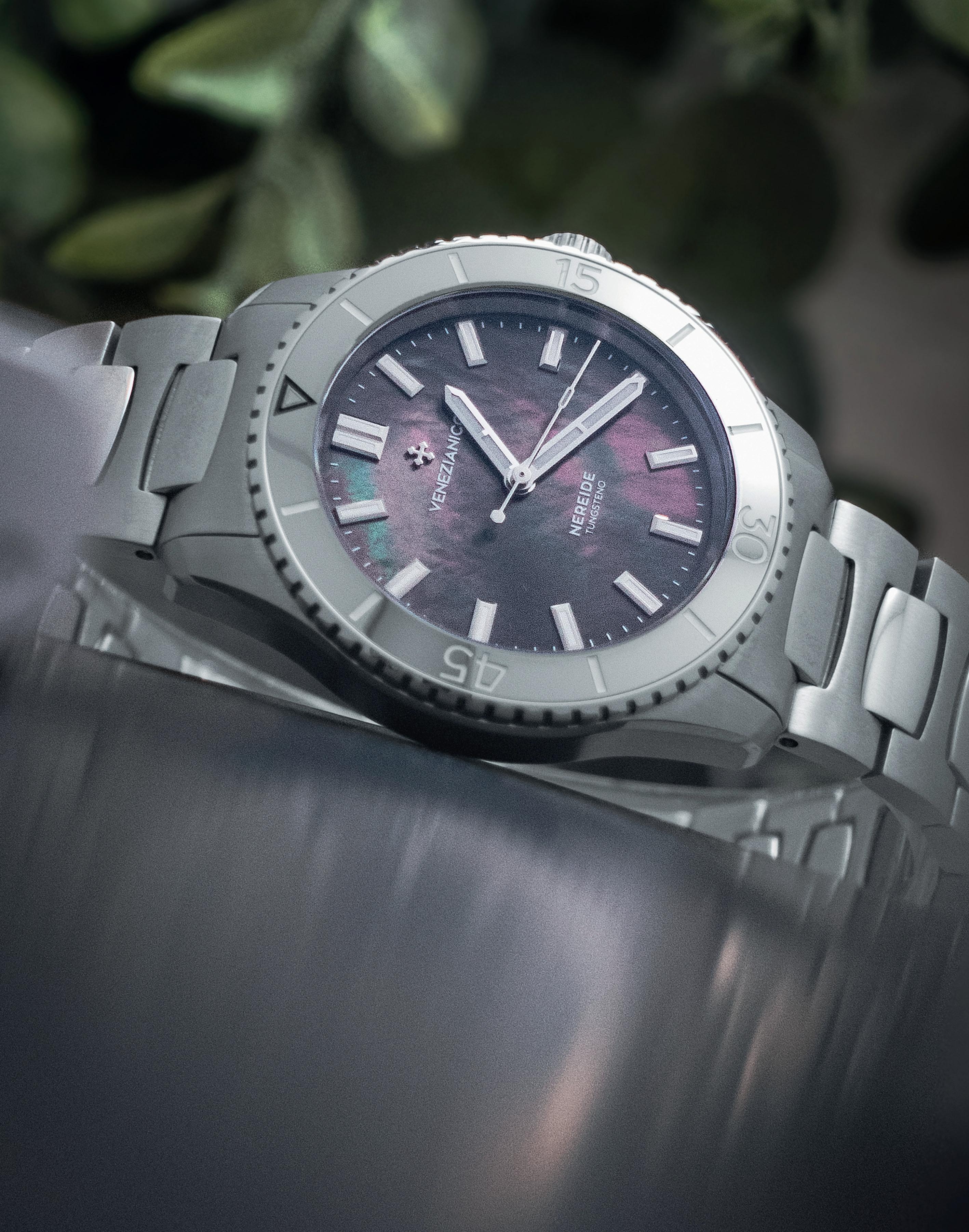
Venezianico
Nereide Tungsteno 39 39mm stainless steel case with 200m water resistance
Miyota 9039 automatic movement with 42-hour power reserve €627.30 (approx. £540), venezianico.com
92

40mm stainless steel case with 100m water resistance 9R65 calibre spring drive movement with 72-hour power reserve £6,200, grandseikoboutique.co.uk
93 STYLE — shoot
Grand Seiko ‘Shunbun’ Spring Cherry Blossom

William Wood
Fire Watch
41mm stainless steel case with 100m water resistance
Seiko NH35 automatic movement with 41-hour power reserve £995, williamwoodwatches.com
94 STYLE — shoot
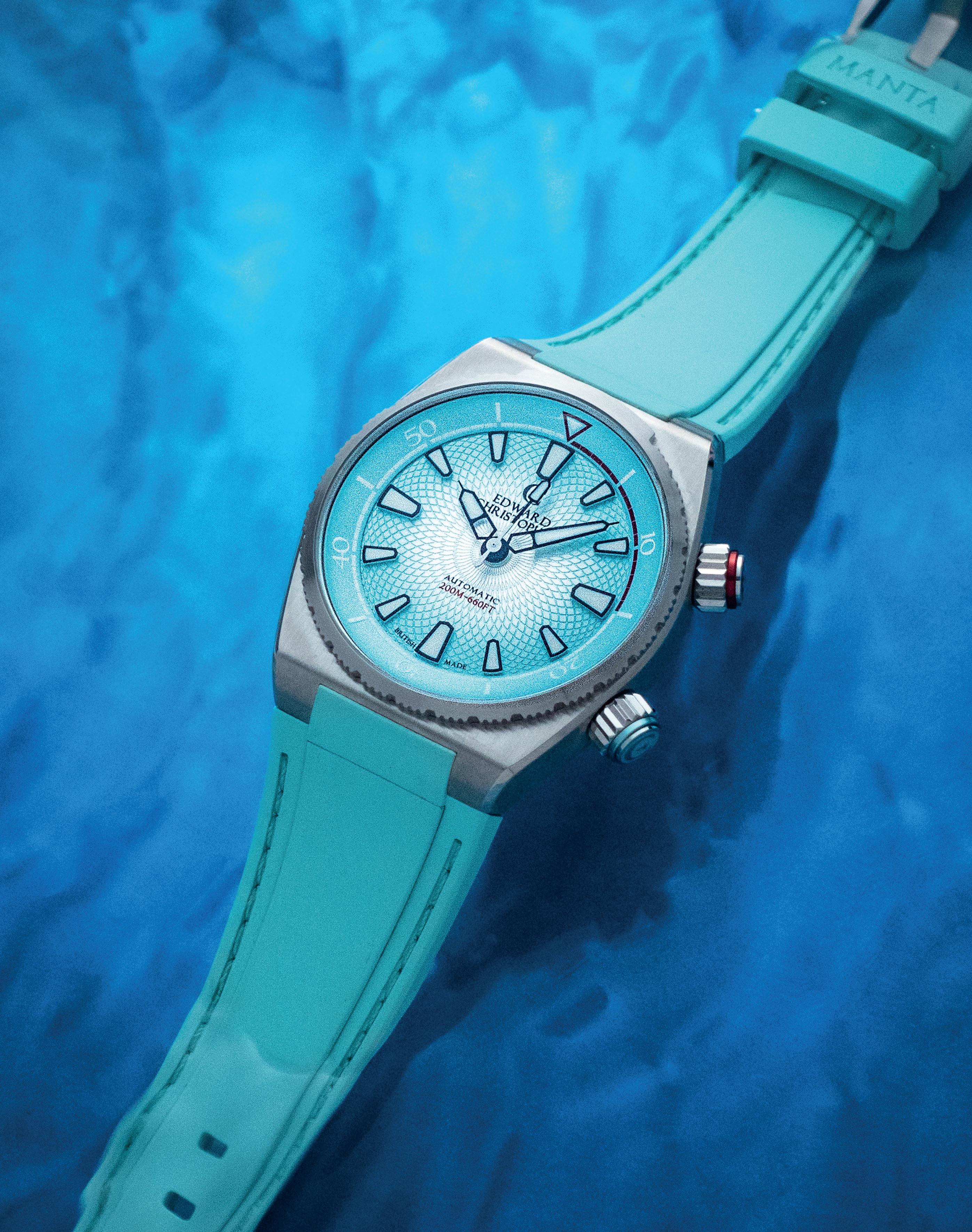
Edward Christopher Manta
40mm stainless steel case with 200m water resistance Sellita SW200-1 calibre automatic movement with 38-hour power reserve £1,495, edwardchristopher.com
95


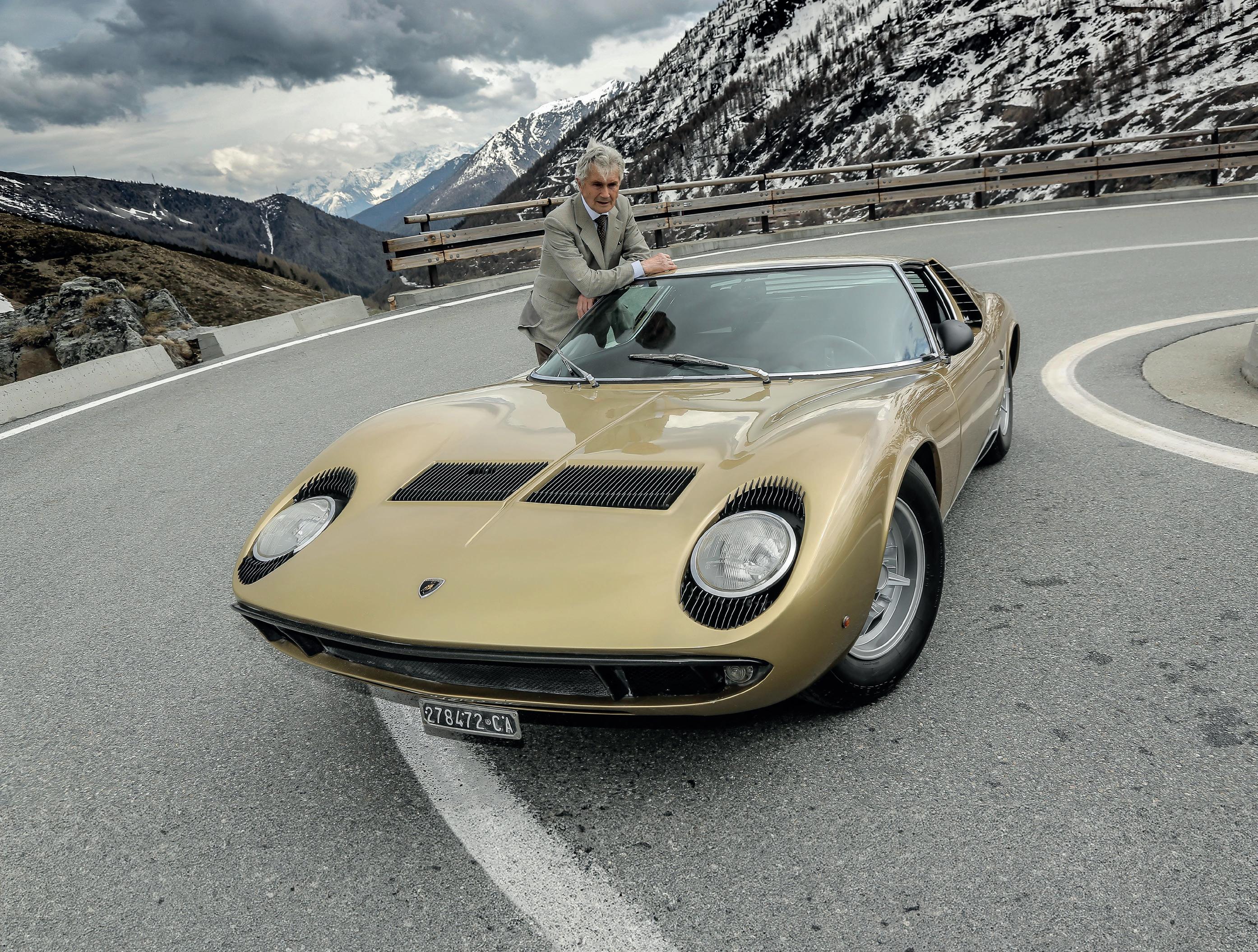
WORDS:
The courage of designer
MARCELLO GANDINI
CAR DESIGNER, MARCELLO GANDINI IS MOST FAMOUS FOR STYLING THE LAMBORGHINI COUNTACH, BUT HIS LEGACY GOES FAR BEYOND SANT’AGATA
97
Mark Smyth
marcello gandini

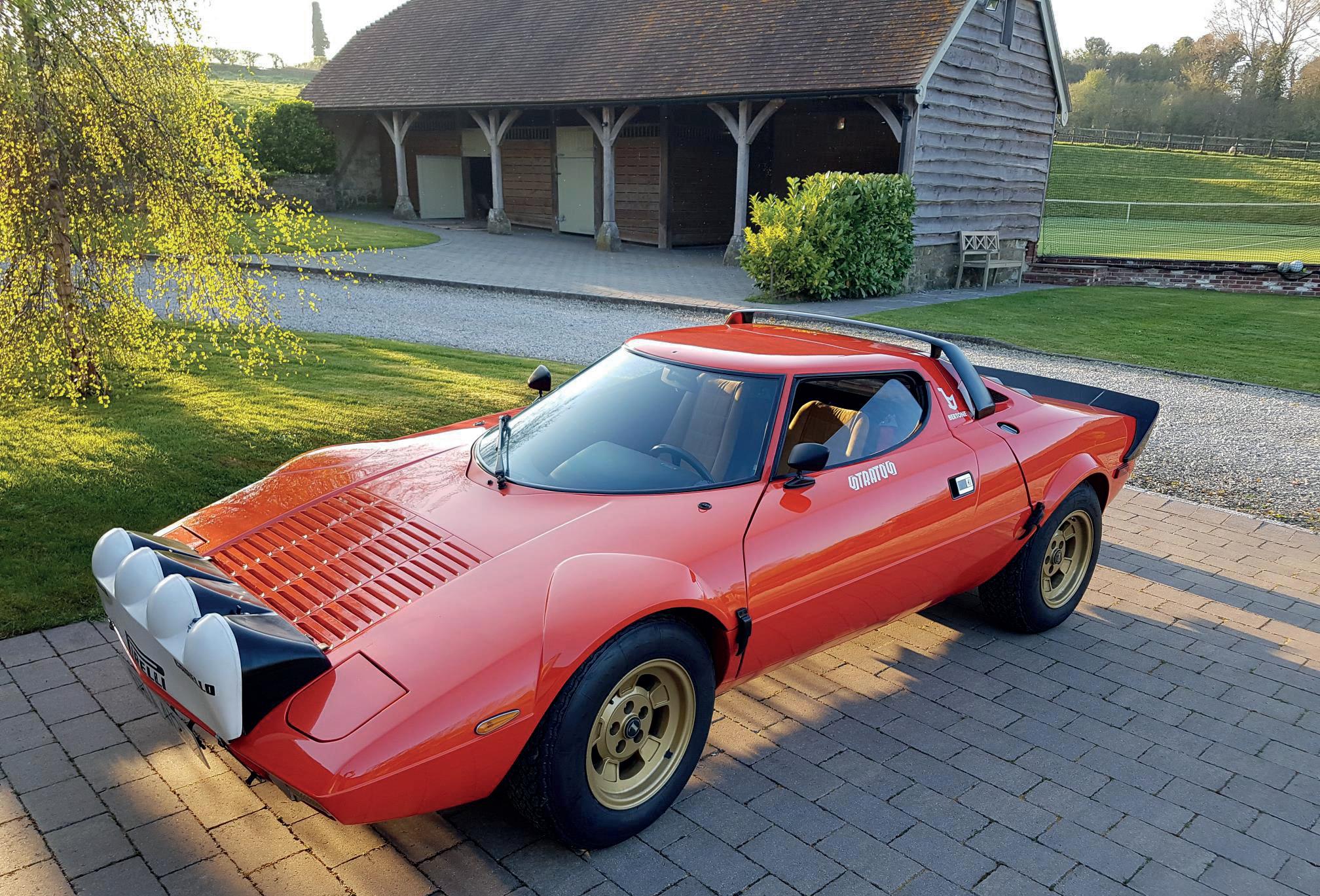
After leaving home in an act of rebellion, Gandini modified cars for hill climb races and started drawing for Italian coachbuilders, before becoming Giuseppe Bertone’s chief stylist and designing the Alfa Romeo Carabo (above), Lancia Stratos (left), and the era-defining Lamborghini Miura (previous page)
98
Marcello Gandini. In the automotive world his name achieved celebrity status in the same breath as Enzo Ferrari, Ferdinand Porsche or Ferruccio Lamborghini. He was more than a car designer, he was a visionary, someone not afraid to take risks in crafting some of the most iconic automobiles of all time.
Born in Turin in 1938, Gandini passed away in March 2024, but he left behind a legacy that most can only dream of. Design wasn’t an obvious path, certainly not according to his parents. His father was an orchestral conductor and initially Gandini studied classical piano, but it wasn't for him.
“All this classical culture, such a rigid and conservative context, the imposition of pre-established patterns immediately triggered in me an unconditioned passion for engines, mechanics, and technology, whether it be design, racing, or innovations,” he said while accepting an honorary degree in mechanical engineering from the Polytechnic University of Turin in January 2024. His rebellion against his parents and the establishment he was expected to join saw him leave home to live with a friend. There he modified cars for hill climb races and sketched anything he could to earn a bit of extra money. Then he started drawing for Italian coachbuilders, small businesses creating bespoke versions of motor cars.
His big break came in the 1960s when he met with Giuseppe ‘Nuccio' Bertone, the head of the illustrious Gruppo Bertone design house. In November 1965 at the age of just 26, he took over from Giorgetto Giuguaro as Bertone’s chief stylist. His place in the automotive hall of fame was secured a year later, with one of the most revered cars of the past century.
The work that achieved that accolade for Gandini was the Lamborghini Miura, a car regarded by many as not only one of the most beautiful cars of all time, but also the forerunner of the modern supercars we have today. However, it was not the Miura that many will remember him for, but the car that completely re-wrote the rule book when it debuted in 1973, the Lamborghini Countach.
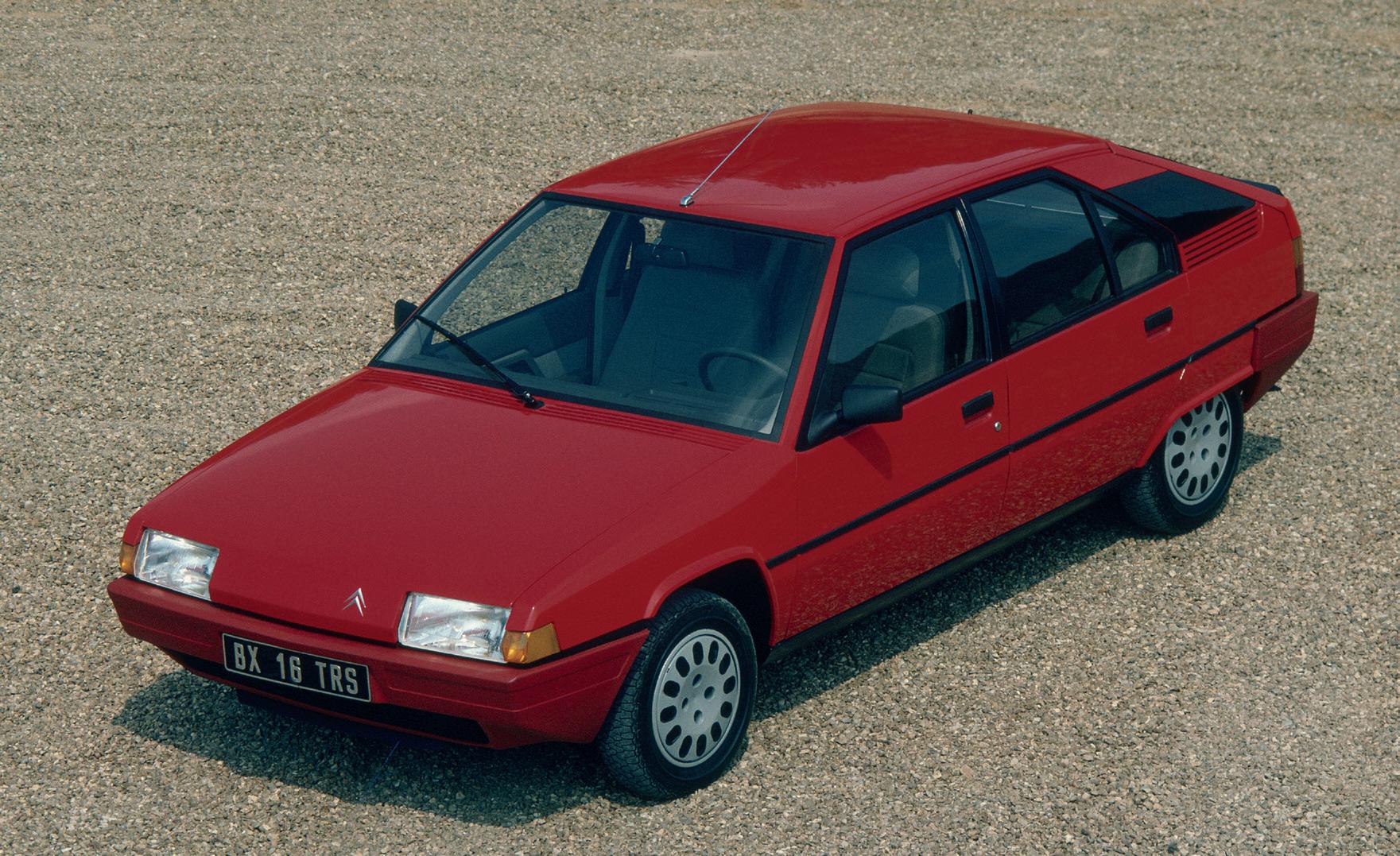

99
marcello gandini
The Gandini-designed Lamborghini Countach (below) was a revelation when it was unveiled in 1973 thanks to its sharp angles and incredible performance. Similar things were also said about the Citroen BX (above), which featured design elements from the Jaguar XJ-S Ascot

“
Marcello Gandini’s designs have always been very clear and very clean, but also very dramatic ”
100
marcello gandini
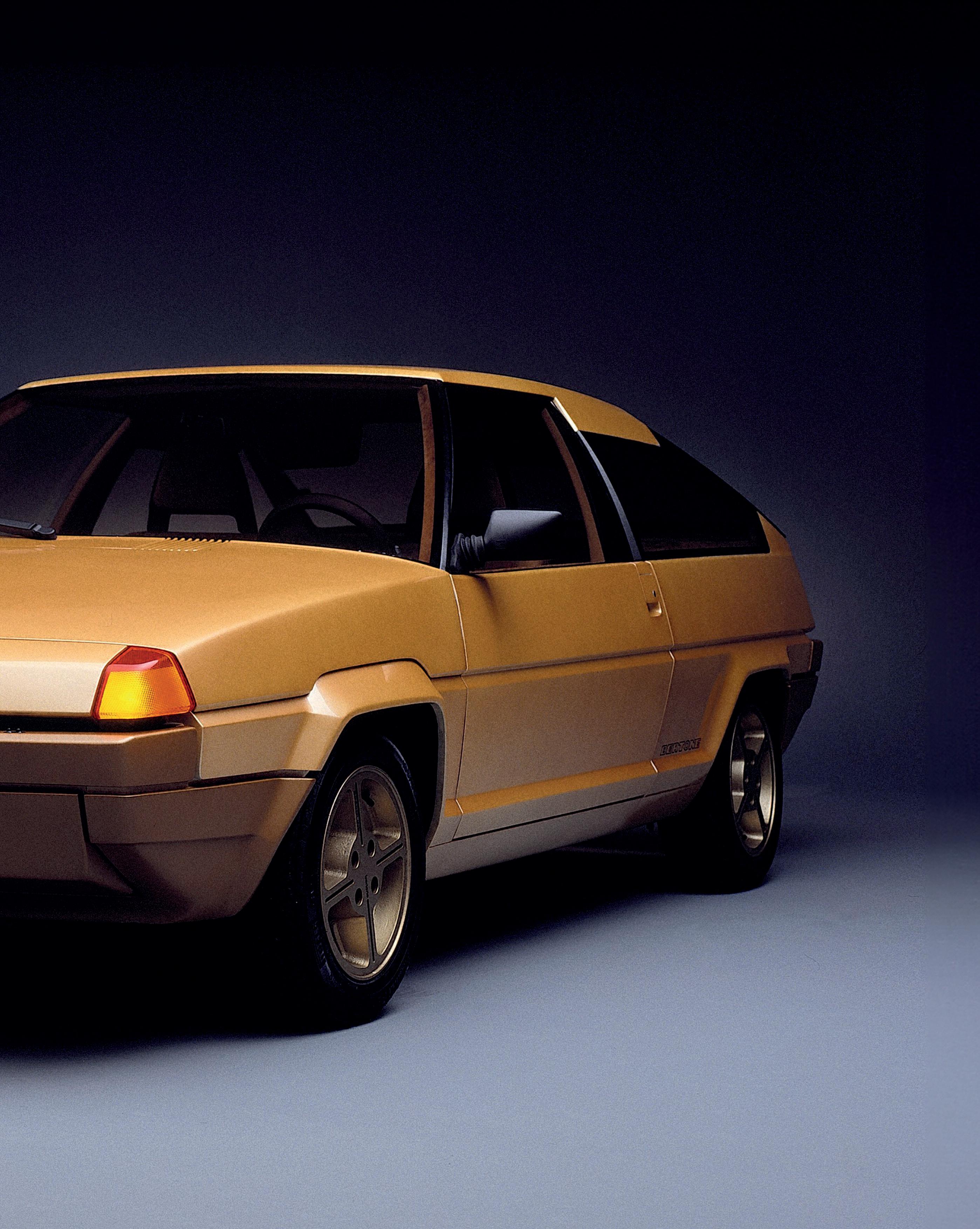
101
Based on the Volvo 343, Gandini’s design for the 1978 Volvo Tundra (pictured) was under appreciated in its day, but today holds a place in the canon of Gandini’s ahead-of-their-time designs
marcello gandini

Setting the pulses racing of boy racers and classic car enthusiasts alike, the Volkswagen Polo Mk1 (above) borrowed from the ethos of the Audi 50 to create a smaller car for the masses with a few luxury touches, while the sharp design of the Fiat X1/9 (below) has ensured its place in history
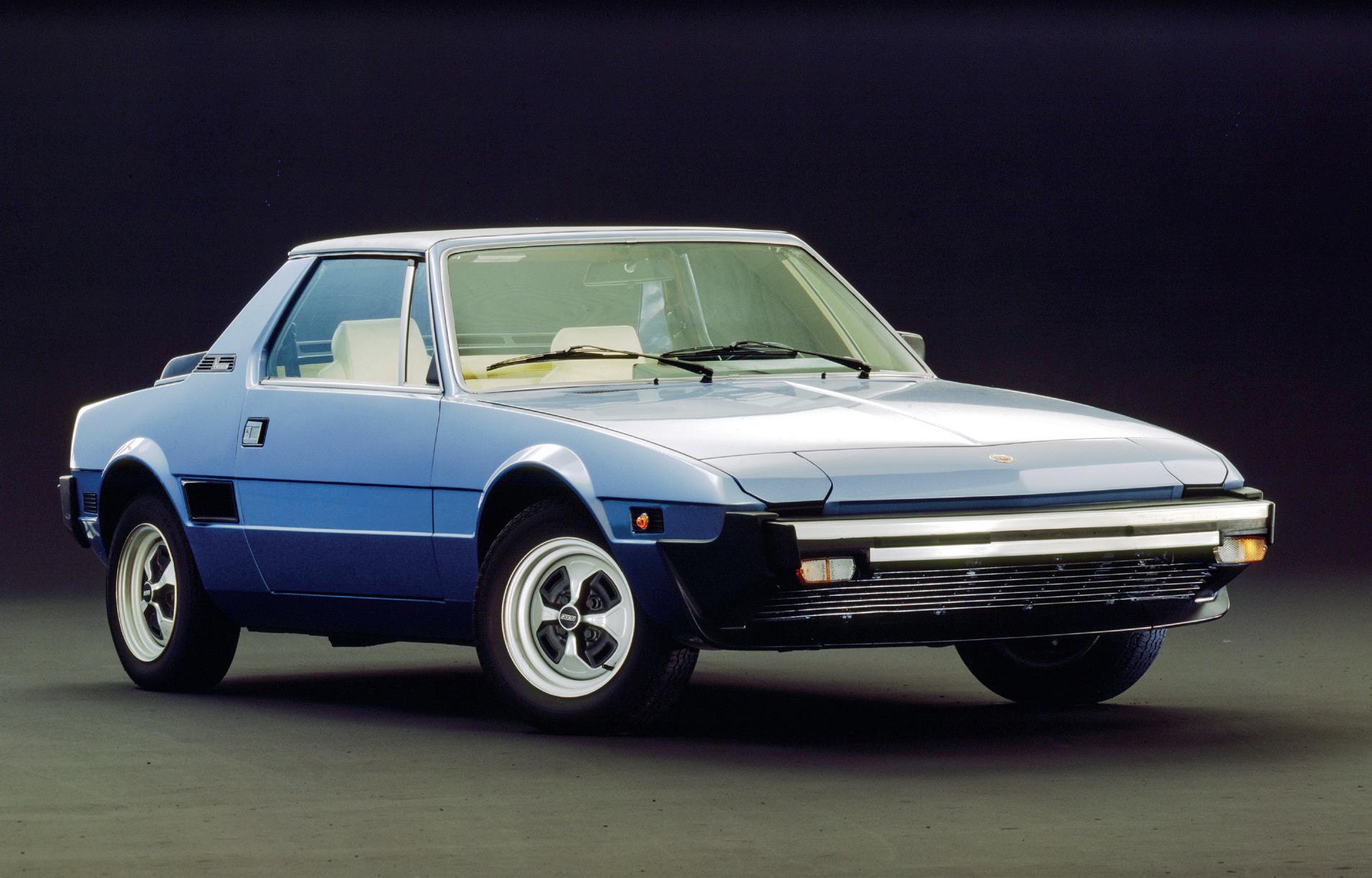
102
marcello gandini
“
He was always able to create something spectacular using very few design elements. This approach of trying to accomplish a lot with less is quite modern still today ”

The iconic wedge shape that characterised the Countach was a design element that is often linked to Gandini. Prior to the Lamborghini he penned the Alfa Romeo Carabo concept in 1968, a car for which he is also attributed with the invention of scissor doors. Another, slightly less exuberant model is the Fiat X1/9 and then there is the Lancia Stratos, a model that definitely gets the pulses of enthusiasts racing. As dramatic as the Stratos was, it wasn’t as futuristic as the concept that preceded it, the Lancia Stratos Zero of 1970.
Gandini even gave the wedge treatment to a Jaguar. That car was the XJ-S Ascot, a design study for the 1977 Turin Motor Show. It didn’t suit Jaguar at the time, but elements of the design appeared a number of years later in the Citroen BX. The Jag wasn’t the only inspiration for the French model either. One of Gandini’s last projects at Bertone was the 1978 Volvo Tundra, based on the Volvo 343. It too was not for Volvo at the time, although there is some similarity in the design and the pop-up headlights on the Volvo 480 of the 1990s. The Tundra does bear a striking resemblance to the eventual BX though.
Citroen was well known for unusual designs, but the BX showcased how Gandini could bring his creative flair and unique signature to mainstream car showrooms. Not all were so dramatic in their styling. In the early 70s he created the Audi 50, which celebrates its 50th anniversary in 2024. The idea was to create a smaller Audi for the masses with a few luxury touches, but the Audi provided the design and engineering basis for a car that became much more successful, the Volkswagen Polo. Gandini designed the first generation, but another model that owes part of its success to the great designer is the original BMW 5 Series. Senior vice president of BMW Group design, Adrian van Hooydonk, still finds Gandini’s work an inspiration.
“Marcello Gandini’s designs have always been very clear and very clean, but also very dramatic,” says Van Hooydonk. “This is why I find his work so inspiring. He was always able to create something spectacular using very few design elements. This approach of
103
marcello gandini
Even 50 years after his designs first came roaring to the attention of car enthusiasts, the designs of Marcello Gandini (above) remain as fresh and inspiring as they did nearly half a century ago
marcello gandini

trying to accomplish a lot with less is quite modern still today.”
Van Hooydonk was so enamoured with a concept Gandini did for BMW that he had it recreated a few years ago. That car was the BMW Garmisch, a concept that led to the E12 5 Series. Today the influence of the Garmisch is even evident in the kidney grille of the new BMW Vision Neue Klasse X. Interestingly, another of Gandini’s designs is finding new life today. The new Renault R5 electric hatchback pulls elements from the original Renault 5 and its second generation, which was designed by Gandini, along with the Renault 5 Turbo.
However, Gandini was not a fan of designs being replicated in future models. He always said a design should be new and innovative, reflecting the past but never copying it.
“I have built my identity as a designer, especially when working on supercars for Lamborghini, on a unique concept: each new model I would work on would be an innovation, a breaker, something completely different from the previous one,” he said in 2021. “Courage, the
Paying respect to one of Italy’s most influential car designers, the BMW Garmisch (above) was recreated in Gandini’s honour by senior vice president of BMW Group design, Adrian van Hooydonk, while the individuality of his designs is evident in the Alfa Romeo Montreal (right)
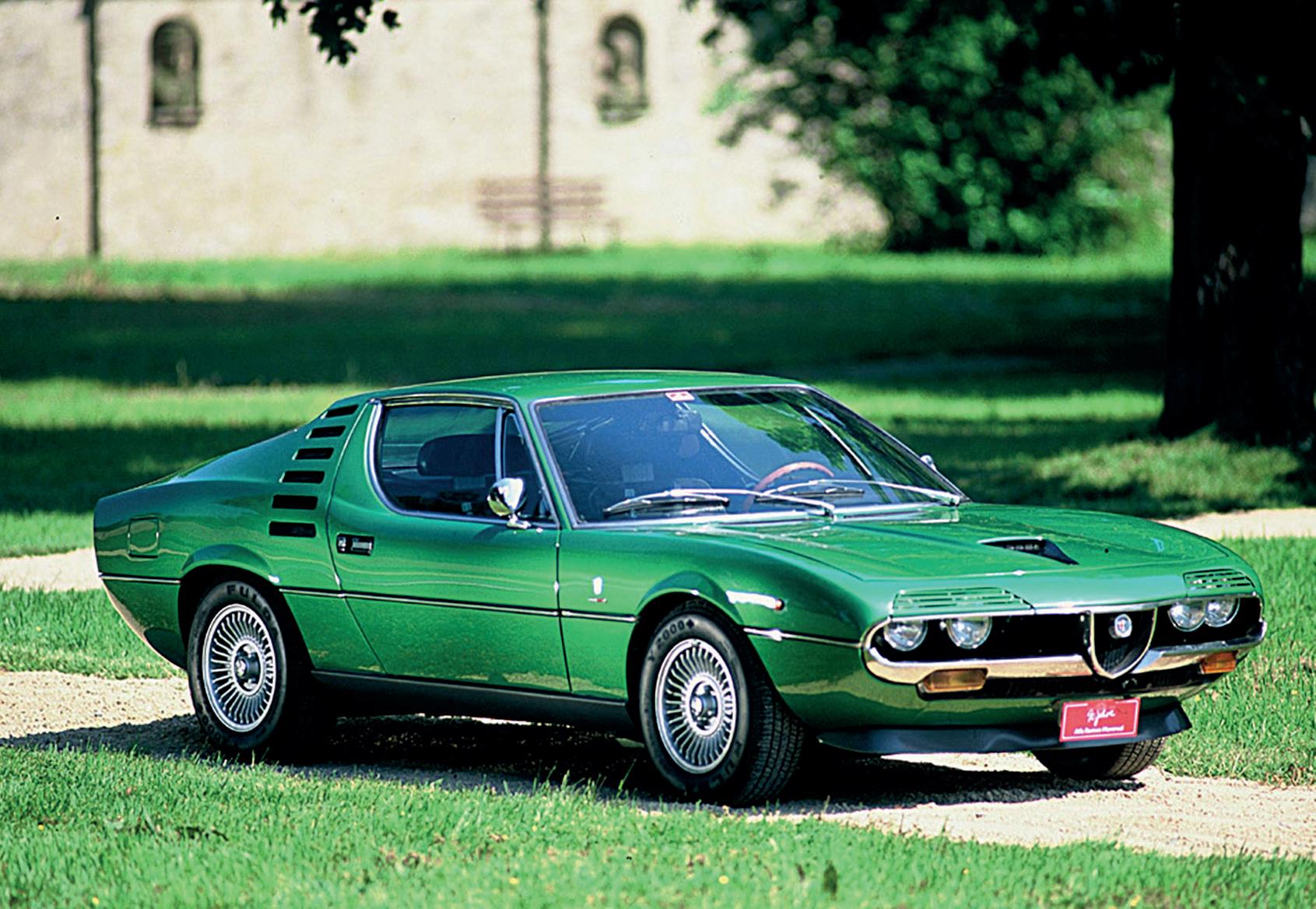
ability to create a break without sticking to the success of the previous car, the confidence in not wanting to give in to habit were the very essence of my work.”
That essence appeared in other designs including the beautiful Alfa Romeo Montreal, the Maserati Shamal and Ghibli II, De Tomaso Pantera derivatives and the Bugatti EB110, as well as number of other Lamborghini models.
Whether Gandini’s legacy lives on in a highly coveted classic or in the small details of a new model, his work and philosophy continues to inspire designers of today. He saw the car as
more than just a means of transportation, but rather as a symbol of individual freedom and expression. The Lamborghini Countach and Volkswagen Polo might be very different cars, but both provide the ability to take us anywhere we want instantly, our own space that moves with us as he once put it.
During his illustrious career, Gandini only put his name to one Ferrari, the 308 GT4, but the final word has to go to current chief design officer at Ferrari, Flavio Manzoni: “Gandini is probably the greatest car designer ever.” Few would argue.
104


STATE of the IND USTRY
WORDS:
> >
Perhaps it's our inner accountants crying out for release, but we’re fans of numbers here at Oracle Time. And yes, mostly that means a toss-up between Arabic and Roman, but also when it comes to the broader horological landscape. There are a lot of watches sold each year from a mind-boggling number of brands to a downright existential number of collectors. So, we opted to put that mess of tastes, locations and watches into numbers.
107
Sam Kessler
5%
AND THE WINNER IS…
Despite being what most people would consider ‘specialist’ the watch industry is a big one, with turnover in the billions – especially when it comes to the big movers and shakers of the watch world. It’s no secret which brand is at the top of that particular pile, but the runners-up are in direct competition with one another to eke out a bigger piece of the pie from one another. So, who then is the biggest of the bunch? Who’s fallen out of favour? And who’s making the big plays?
SOURCE: Morgan Stanley Swiss Watch Industry Report 2023
BRAND MARKET SHARE
TOTAL MARKET
CHF 26.7 BILLION
GBP £23.5 BILLION
20%
35% REST OF MARKET BREGUET PANERAI TAG HEUR JAEGER- LECOULTRE HUBLOT IWC BREITLING TISSOT VACHERON CONSTANTIN RICHARD MILLE LONGINES AUDEMARS PIGUET PATEK PHILIPPE OMEGA CARTIER ROLEX 108 state of the industry
0%
10% 15%
25% 30%
ROLEX
EXCEEDS 10 BILLION
For the first time in history a watch brand has exceeded 10 billion in sales.
Can you guess who it is? It’s Rolex.
Obviously, it’s Rolex. The Crown is continuing to break every record with a bubble that refuses to burst.
THE BIGGEST WINNERS
VACHERON
JOINS THE BILLIONAIRE’S CLUB
Vacheron have finally hit CHF 1 billion in sales after an 18% increase year-on-year. Considering they’ve sold 35,000 pieces, the maths is relatively easy when it comes to their average price point: just shy of £29,000 per watch.
SWATCH’S
INSANE GROWTH CONTINUES
It’s no secret that the MoonSwatch did well for the accessible watch brand, but just how well did Swatch do this year?
They grew a whopping 63%, made all the more spectacular given they grew 90% back in 2022.
Not every brand can have a good year and where some go
others must come down. These are the three that have had the
year.
CHF400M CHF600M CHF800M CHF910M 7% decline 13% decline 908 725 600 500 729 550 4% decline TAG TUDOR IWC 109 state of the industry
BIGGEST LOSERS
THE
up,
roughest
SOURCE: Morgan Stanley Swiss Watch Industry Reports 2022 and 2023
PRICE MATTERS
While brands like Swatch, Longines and yes, Rolex, have the numbers, there’s a lot to be said for a grail watch or two. In fact, the more expensive sector is actually doing more than pulling their weight in the global watch market.
CHF 25,000 watches drive 69 % of growth and make up 44 % of the value of the Swiss watch industry.
HERE ARE SOME KEY FACTS:
Only 2.5 % of watches are over CHF 25,000.
This means that 2.5% of watches make up 44% of total industry value
When people say the watch industry is a growth market, they really mean one particular part. Looking to launch a shiny new watch brand? Aim high.
WHERE IN THE WORLD?
THE BIGGEST MARKETS FOR SWISS WATCH EXPORTS
* With a 6% per year increase in growth and a huge surge in GDP, India is the market that all watchmakers are keen to tap into, and is expected to be among the top 10 export markets by 2034. That’s good news for Rado, who are the country’s number one brand
EUROPE 30% USA 15% CHINA 11% INDIA Hong Kong 9% JAPAN 7% (80% of which is from the Chinese mainland) THE MARKET EVERYONE’S AFTER * 110 state of the industry
SOURCE: Deloitte Swiss Watch Industry Study 2023
WHAT DO BUYERS LOOK FOR IN A WATCH?
PRODUCTION VS. PRICE
NUMBER OF WATCHES PRODUCED PER YEAR
AVERAGE VALUE OF WATCHES PRODUCED
0 400$ 800$ 1200$ 1600$ 2000$ CHINA HONG KONG GERMANY USA SWITZERLAND 1679 147 131 50 4 0 100M 200M 300M 400M 500M 600M UNITED STATES GERMANY SWITZERLAND HONG KONG CHINA UK Switzerland France Germany Italy USA China Hong Kong Japan Singapore India UAE Importance 1st Design Value Value Value Value Value Brand Image Brand Image Value Brand Image Brand Image Brand Image 2nd Value Design Longevity Longevity Brand Image Brand Image Value Value Design Value Design Value 3rd Longevity Longevity Sustainability Design Self-Satisfaction Longevity Longevity Longevity Brand Image Design Value Design 111
SOURCE: Deloitte Swiss Watch Industry Study 2023
PRE-OWNED
Here we’ve used a mix of indexes, essentially groupings of influential (read, most traded) watches in that category that give an overall look at the health of the market. That means that these are not the same for every watch, but show the overall trend.
STEEL
47,122 – 41,122
DROP OF 6,000
74,992 – 61,405
DROP OF 13,587
12.7%
18.2%
12.5%
THE AVERAGE PRICE OF PREOWNED WATCHES IN GOLD, STEEL AND CERAMIC
Many a legendary watch is most soughtafter in steel, but gold as a commodity is always in demand. So which material has done better, sporty and rugged or classically luxurious?
GOLD
81,957 – 71,704
DROP OF 10,253
DOWN
DOWN
CERAMIC
DOWN
112 state of the industry SOURCE:
WASTEEL25, WAGOLD25 and WACERAMIC20 Indexes
Watch Analytics
AVERAGE PRICE OF ENTRY-LEVEL PRE-OWNED WATCHES
£4,141 - £3,942 DOWN £199, -4.8%
AVERAGE PRICE OF THE MOST POPULAR PRE-OWNED WATCHES
£30,101 - £26,430 DOWN £3,671, -12.2%
It’s no surprise that the overall downward trend in pre-owned is continuing – or perhaps market correcting, depending on how you look at things – but what’s reassuring to see is that the entry level is comparatively buoyant. These are the watches that aren’t really bought for speculation, but for collecting, given the lower potential upside for pieces under the 5K mark.
£3800 £4000 £4200 £4400 £4600 03 JAN 2024 23 SEP 2023 13 JUN 2023 03 MAY 2023 21 NOV 20022 11 AUG 20022 01 MAY 20022 £24000 £30000 £36000 £
£
03 JAN 2024 23 SEP 2023 13 JUN 2023 03 MAY 2023 21 NOV 20022 11 AUG 20022 01 MAY 20022 113
42000
48000
SOURCE: Subdial Entry Level 100 Index
SOURCE: Subdial x Bloomberg Watch Index
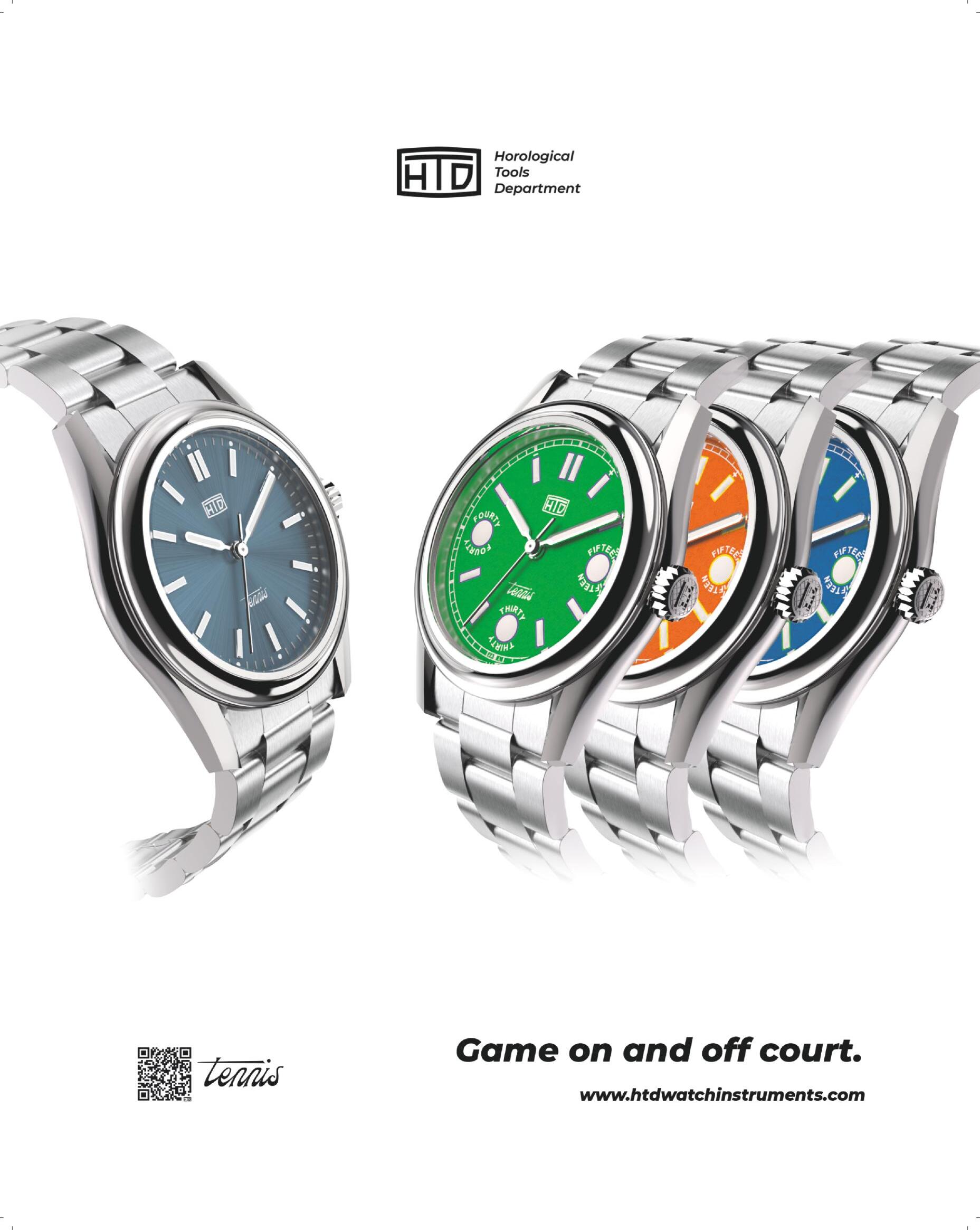
WOMEN WATCHES
FORGET DAINTY JEWELLERY PIECES AND MOTHER-OFPEARL, THESE ARE THE MEN’S TIMEPIECES AS CHOSEN BY SOME OF THE MOST INFLUENTIAL WOMEN IN WATCHES
115 watches women want
W O R D S : S A M K E S S L E R WANT
There are a lot of very pretty women’s watches in the world. Festooned with precious stones in diminutive sizes, more mother-of-pearl than an all-youcan-eat oyster bar, delicate floral touches across the board, you know the thing. You might even find a 32mm downsized take on a classic design, perfect for the most feminine of wrists.
There’s nothing wrong with that of course. There’s a reason women’s watches exist as a distinct category, with plenty of brands offering some genuinely lovely pieces. Some, like Van Cleef & Arpels, even marry that jewellery nature to serious watchmaking ingenuity, proving time and again that they’re more than just pretty accessories.
And yet, diamonds aren’t always a girl’s best friend. Plenty of women – especially some of my contemporaries in the watch industry – are just as comfortable rocking an oversized men’s watch as anything gender-specific. More comfortable, in some cases. I’m not even talking about stripping diamonds away here, but a focus on pieces that I, and statistically you, would be more than happy to have in your collection.
Don’t take my word for it either; I’m not about to tell you what women want. My wife would laugh at the thought while signing the divorce papers (and taking back my JLC engagement watch, incidentally). Instead, I’ve asked a trio of female luminaries of the watch industry who don’t just have good taste in watches; they’re tastemakers.
So, if you’re looking to add a watch to your collection under the guise of a present for your partner, pay attention. If you opt for one of these, it might get more wear than you bargained for.
 — Scarlett Baker Watch Editor for Wonderland and Man About Town @scarlintheshire
— Scarlett Baker Watch Editor for Wonderland and Man About Town @scarlintheshire
BREMONT TERRA NOVA 38
When it comes to men’s watches that have stolen my heart, my wallet, and found a concrete place on my grail list, there are two that come to mind, and they couldn’t be more different. Debuting at this year’s Watches and Wonders, I welcomed a soft spot for Bremont’s daring new chapter, and particularly for the Terra Nova 38 (right), for its low profile. I’ve recently got into learning about all things pocket watches, and Bremont’s newest offering jibes at these handheld tools from centuries gone by with geometric cushion cases and attractive oversized numerals in full-block Super- LumiNova. It’s neat,
it’s clean and a solid juxtaposition of bringing tropes from yesteryear into the modern day.
VACHERON CONSTANTIN SALTARELLO
Quite the contrarian watch to the Bremont Terra Nova, Vacheron Constantin’s Saltarello (above) from 1997 – my birth year – also sits high in my sights for a future acquisition. Created during the revival of mechanical watches, its arresting dial and use of jumping hours and retrograde minutes feels unique in the typical Vacheron catalogue. There’s just something deeply mesmerising about watching time move in a manner that isn’t circular.
116 watches women want
> >

117
— Julia Pasaron Editor-in-Chief of Intelligent Magazine @julia_pasaron
VERTEX MP-45 M
I am a very sporty person, so over the years, several lovely watches have perished while in pursuit of my next adrenaline fix. The solution, a Vertex MP-45 M, a sturdy, highly legible timepiece that fits as comfortably in a cockpit as it does 50 metres under water. The steel 40mm case comes with a screw-in crown and a double domed box crystal glass, waterproof to 100m. The dial pays homage to the Vertex mono-pusher from 1945 featuring a chronograph with a centre second hand and minute counter on the right. The left sub display shows natural seconds. All indices are made from moulded X1 grade Super-Luminova and it’s powered by a Sellita SW520 MP hand-wound movement – all ticking the boxes for rugged practicality.
VACHERON CONSTANTIN OVERSEAS GMT
In a previous life, I worked as a correspondent, so I travelled the length and breadth of the planet moving across time zones as if they were London tube stops. As such, it wasn’t always that easy to work out the time back at the office and at my destination. I would have loved to have a watch on my wrist to assist me with this little problem. Vacheron Constantin have just added a new green sunburst dial to its Overseas collection, which includes a dual time model in 41mm. That would have been my pick. The Overseas GMT is an excellent example of a clear and highly legible dial, thanks to the contrast between the gold hour-markers and hands highlighted with Super-LumiNova and the dark dial colour. The second hour hand runs on a 12 or a 24-hour clock to improve ease of use. The main time runs on a 12-hour frame, with the indicator at nine showing if it’s morning or afternoon.
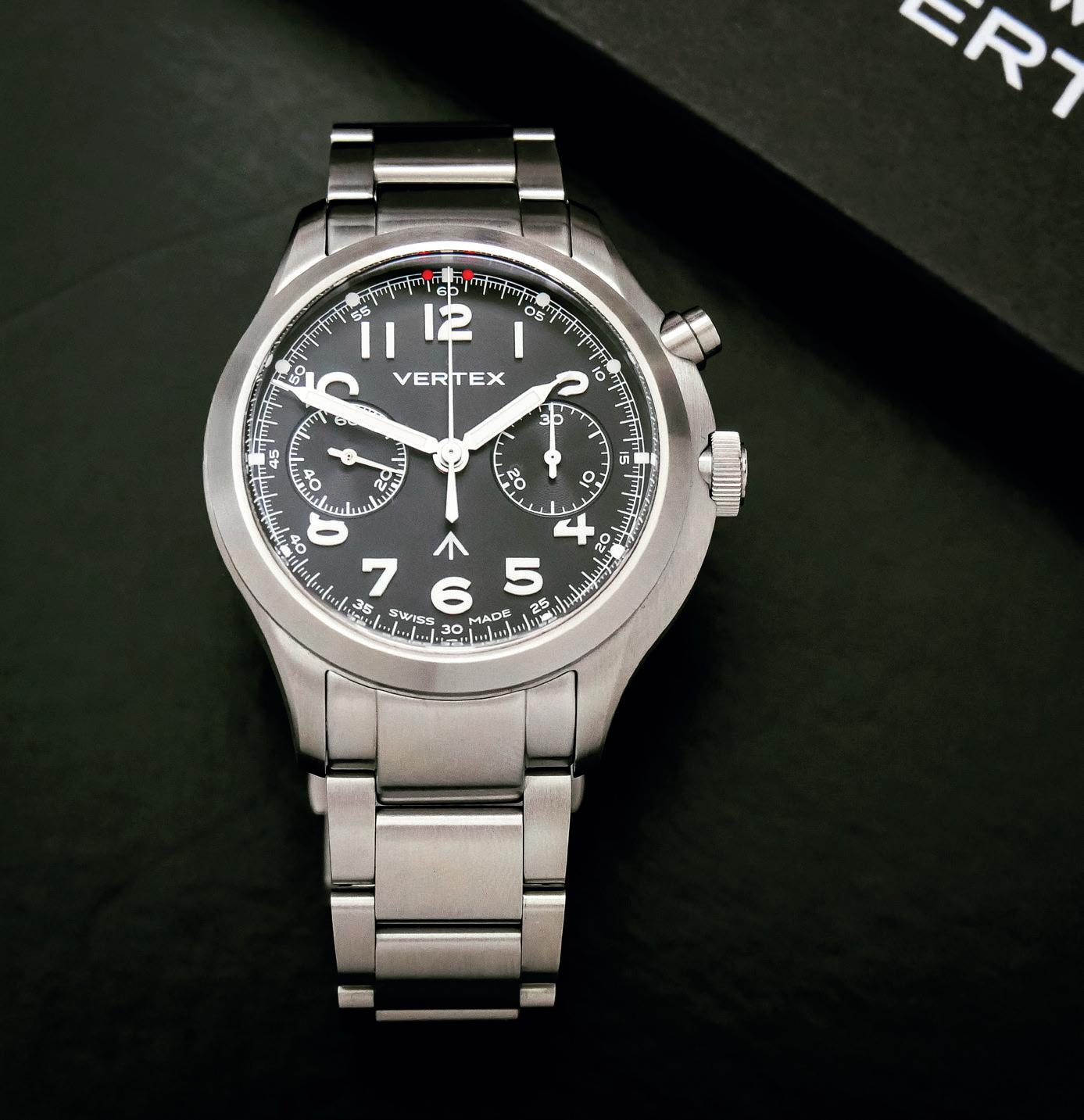
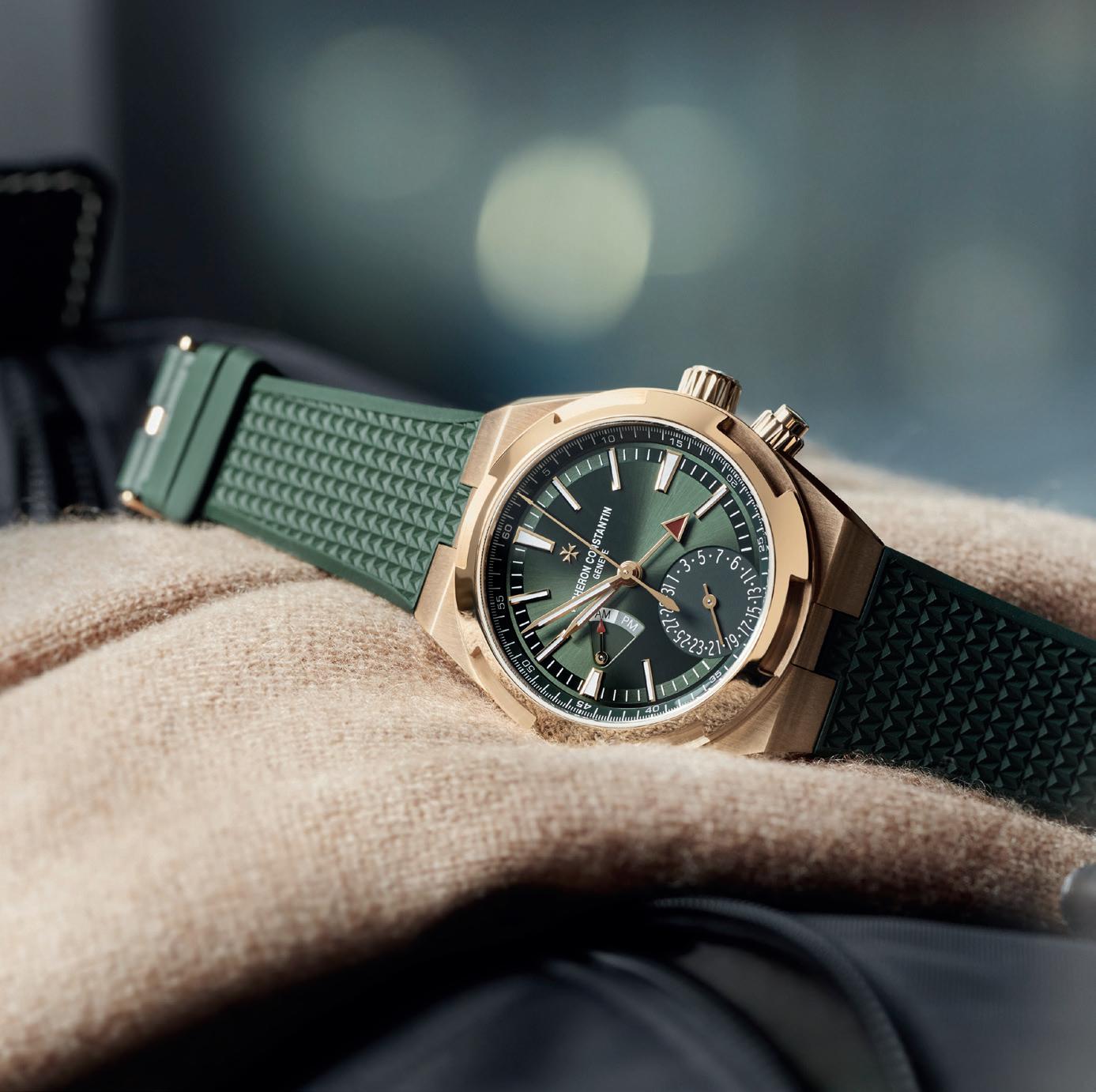
118
— Kim Parker Freelance Luxury Editor
CHOPARD LUC 1860 IN LUCENT STEEL WITH SALMON DIAL
As soon as you say I can’t have something, I immediately want it. That was the case with Chopard’s elegant LUC 1860, unveiled at last year’s Watches & Wonders – immediately, there were whispers that it had sold out. Even if it hadn’t, I still would have fallen for it. A sleeker take on the 1990s original, it has a slim (8.2mm), 36.5mm case with curved lugs that comfortably hugs my dinky wrist, and its guilloche gold dial is mesmerising – the ideal, not-too-coppery shade of salmon that looks refined, not ‘trendy’. A glowing, glorious dress watch I’d steal from my man in an instant.


JAEGER-LECOULTRE REVERSO TRIBUTE MONOFACE SMALL SECONDS
I always think this watch is a beautiful example of how to do simplicity well. It’s streamlined, yet supremely stylish – with a slender, 7.56mm thick case that belies a wealth of complex design within. The silvery dial is classically handsome and pleasingly uncluttered, a nod to the 1930s iteration developed for polo players (another bonus for me), and it can be flipped over in a second, revealing a case back that can be personalised with whatever your heart desires. I don’t much care for the fabric strap that you can swap in for the leather version, though – why mess with perfection?
119 watches women want
— Tracey Llewellyn Editor of Telegraph Time
REXHEP REXHEPI CHRONOMÈTRE CONTEMPORAIN II
Before I met Rexhepi, I already appreciated the faultless finishing of his watches and his almost unparalleled drive to bring entirely new movements to the world of horology, but after spending a day at his Akrivia atelier, my appreciation for his work has turned to near obsession. Not only is this watch stunningly beautiful with a flawless grand feu enamel dial, it is also complex and intelligent, featuring twin barrels to feed the balance wheel and jumping seconds mechanism independently. Finally, the RRCCII combines a passion that I share with my friend Justin Hast: a Jean-Pierre Hagmann case, the master craftsman having been coaxed out of retirement by the master watchmaker.
“
Not only is this watch stunningly beautiful with a flawless grand feu enamel dial, it is also complex and intelligent ”
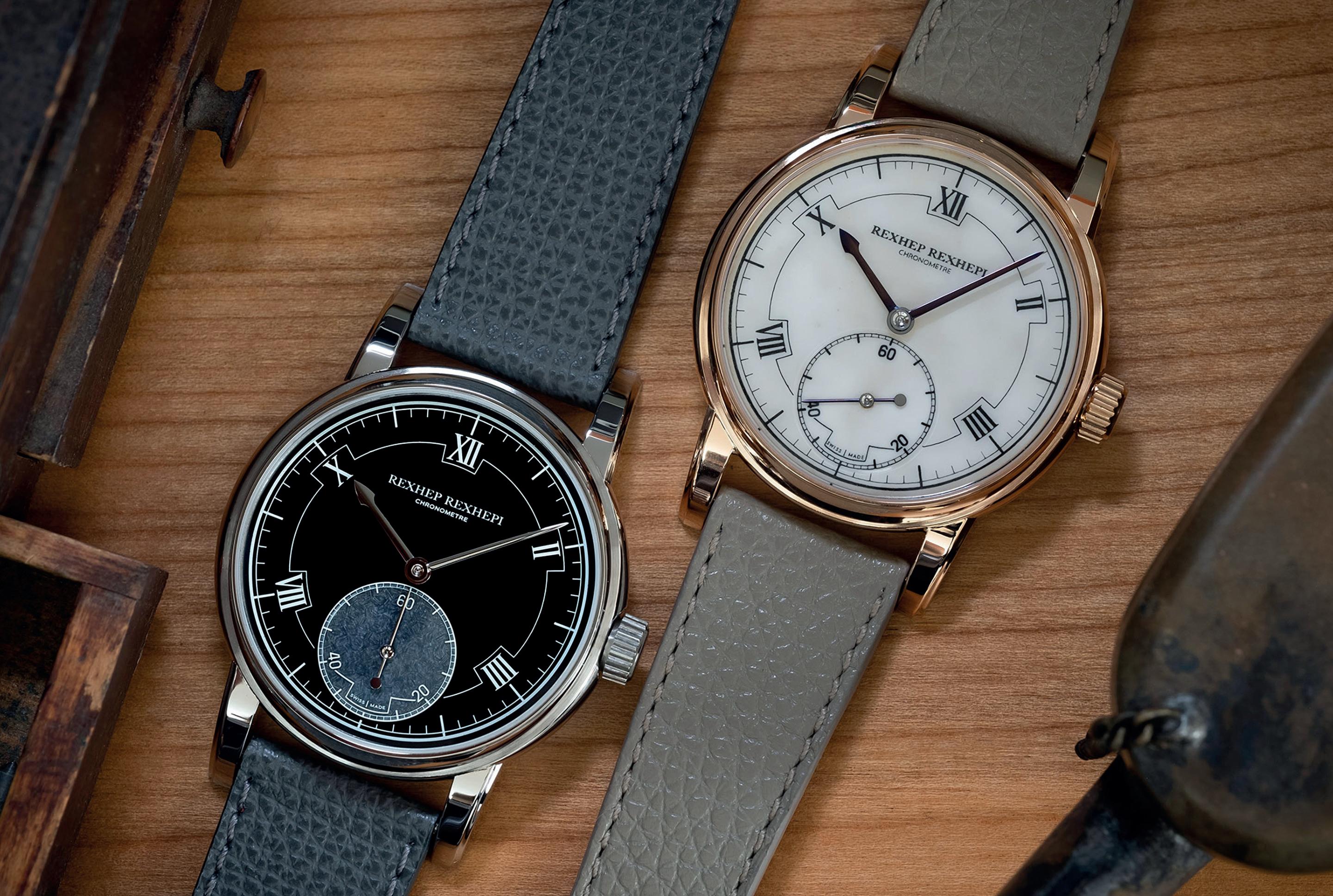
120
MOVADO TIMES/5
I have chosen my second watch because of its connections to my youth and an era when I developed a love of both Andy Warhol and New York City. The Movado Times/5, designed in the 1980s as a limited edition of 250 pieces has a blackened steel bracelet with five independent timepieces. Each signed, numbered and dated dial displays a black and white photograph of a Manhattan landmark selected by Warhol. Although Warhol died in 1987, before the watch’s completion, his studio director Vincent Fremont and printmaker Theresa Morello finished the project, which launched Movado’s celebrated Artist Series watches. In all likelihood I will never own an original Warhol, but maybe one day I will be able to wear five limited edition Warhols on my wrist.

“
In all likelihood I will never own an original Warhol, but maybe one day I will be able to wear five limited edition Warhols on my wrist
121 watches women want
”


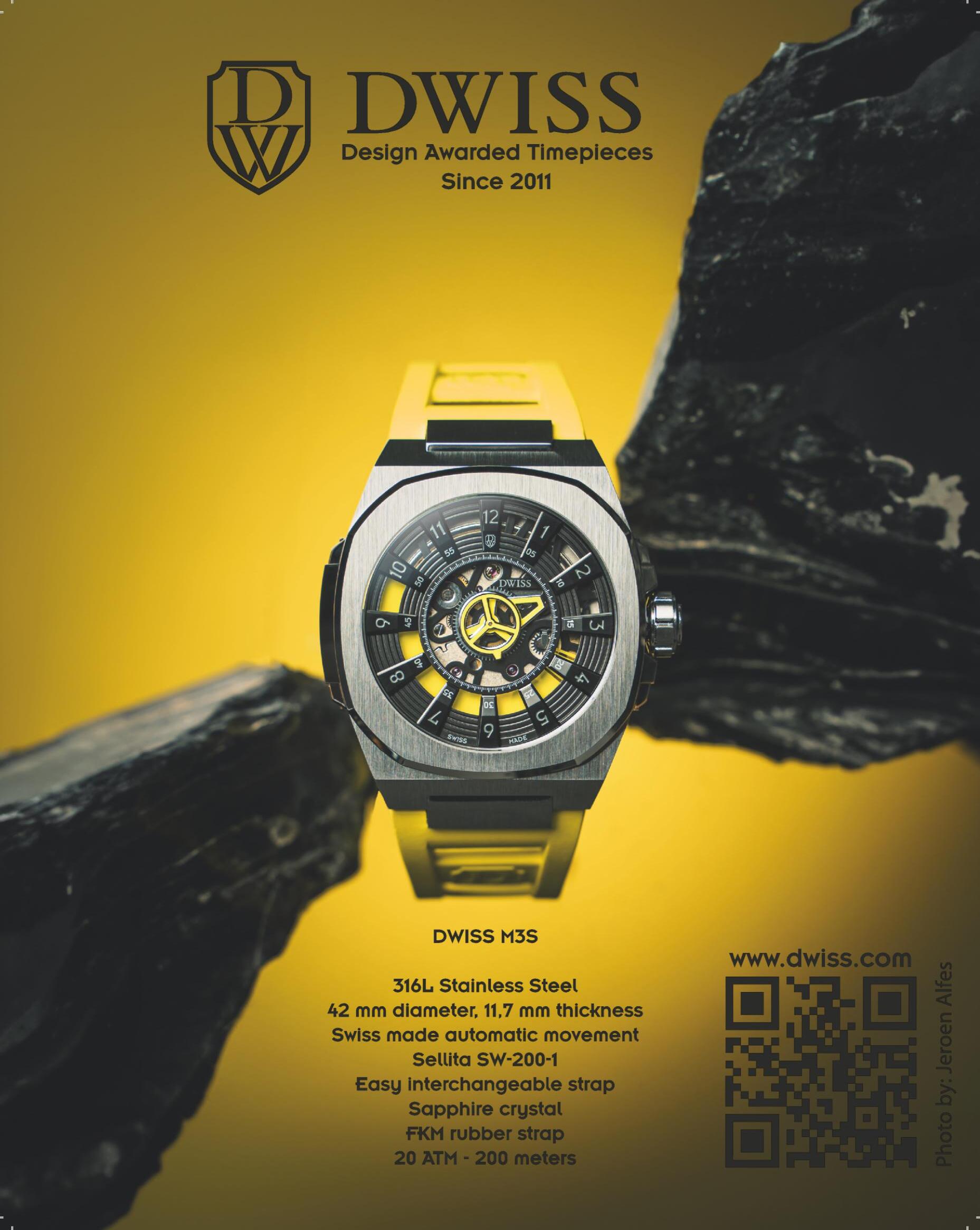

Words:

DISCUSSING THE SECRET OF EDOMAE-STYLE SUSHI WITH MASTER SUSHI CHEF ENDO KAZUTOSHI
ENDO K AZU TOSHI
125
Sam Kessler
© Brian Dandridge

126
If you’re a dedicated connoisseur of the London dining scene, Endo at the Rotunda is going to be on your culinary wish list. The Michelin-starred eighth-floor restaurant runs off an omakase concept, an ever-changing tasting menu dictated by the chef. It’s a type of dining you can find in a few well-heeled Japanese restaurants, but one that Endo at the Rotunda has been instrumental in pushing on British shores.
So, what makes the restaurant so special? Well for one, there are only 12 seats, making it one of the most intimate fine dining experiences in the capital. For another, it’s presided over by arguably the most sought-after sushi chef this side of Tokyo, Endo Kazutoshi. If you really want to understand what elevates sushi from a slice of fish on rice to a true work of art, here’s where you need to go. After all, Endo’s been doing this for a long, long time.
“I grew up working in my family restaurant, the one my grandfather opened in 1940, so I’m a thirdgeneration sushi chef. He started training when he was eight years old. My father started when he was 15 and I started at 22 after graduating university.”
Rather than stay at the family restaurant however, Endo was given an apprenticeship at an eight-seat Omakase restaurant. You’d assume that, as part of his apprenticeship, he’d be taught knife skills, shown exactly how to cut the fish, all the hands-on, chefy aspects of sushi. You’d be wrong.
“In my four years there I made the tea, washed the rice, and cleaned the fish, but I never filleted it. For four years. But in that time, I learned a million things. When I moved restaurant, my master was quite famous so everyone wanted to see what I could do – and it turned out I could do everything. I hadn’t learned the skills one by one, but my master had taught me from his heart and I had this natural, instinctive knowledge of what to do.”
It took almost another decade before Endo would actively call himself a sushi chef, although these days it’s a title that’s bandied about a lot more commonly than it used to be. As, indeed, is Omakase. If you’ve not come across the term before, Omakase is the sushi –
or more broadly Japanese – version of a chef’s table. The sushi chef decides what’s on the menu and you just sit back and appreciate what you’re being served. For anyone indecisive, it’s a godsend, but it also puts the chef’s relationship with the food front and centre.
“Five years ago, there were maybe only three places in London doing Omakase sushi. It’s everywhere now. Every month another Omakase opening, but back when I opened Rotunda it was
If you really want to understand what elevates sushi from a slice of fish on rice to a true work of art, here’s where you need to go
rare and for me it was all about engaging with my guests. I don’t want them to just eat some nice sushi. I want them to understand where the fish comes from, why I chose it, why it chose what goes with it, right down to the rice.”
Most high-quality sushi restaurants keep to that Edomae style, enough that it’s come to mean a lot of different things. “There’s no line around what is and isn’t Edomae now”, explains Endo, although for him there is a clear philosophy behind it.
“For me Omakase means blending tradition and innovation but, more than anything, it’s about engaging with your ingredients. For example, Japanese mackerel and British mackerel. The two look very similar but are completely different. They swim in different temperatures with different salt content. So rather than use Japanese vinegar for the local, UK fish, I used malt vinegar. I’d never use malt vinegar

127
endo kazutoshi © Tom Asteriades
A third-generation sushi chef who started life in the kitchen of his grandfather’s restaurant, Endo Kazutoshi spent a four year apprenticeship under a famous master making tea, washing rice, and cleaning fish before being given the opportunity to shine as a sushi chef

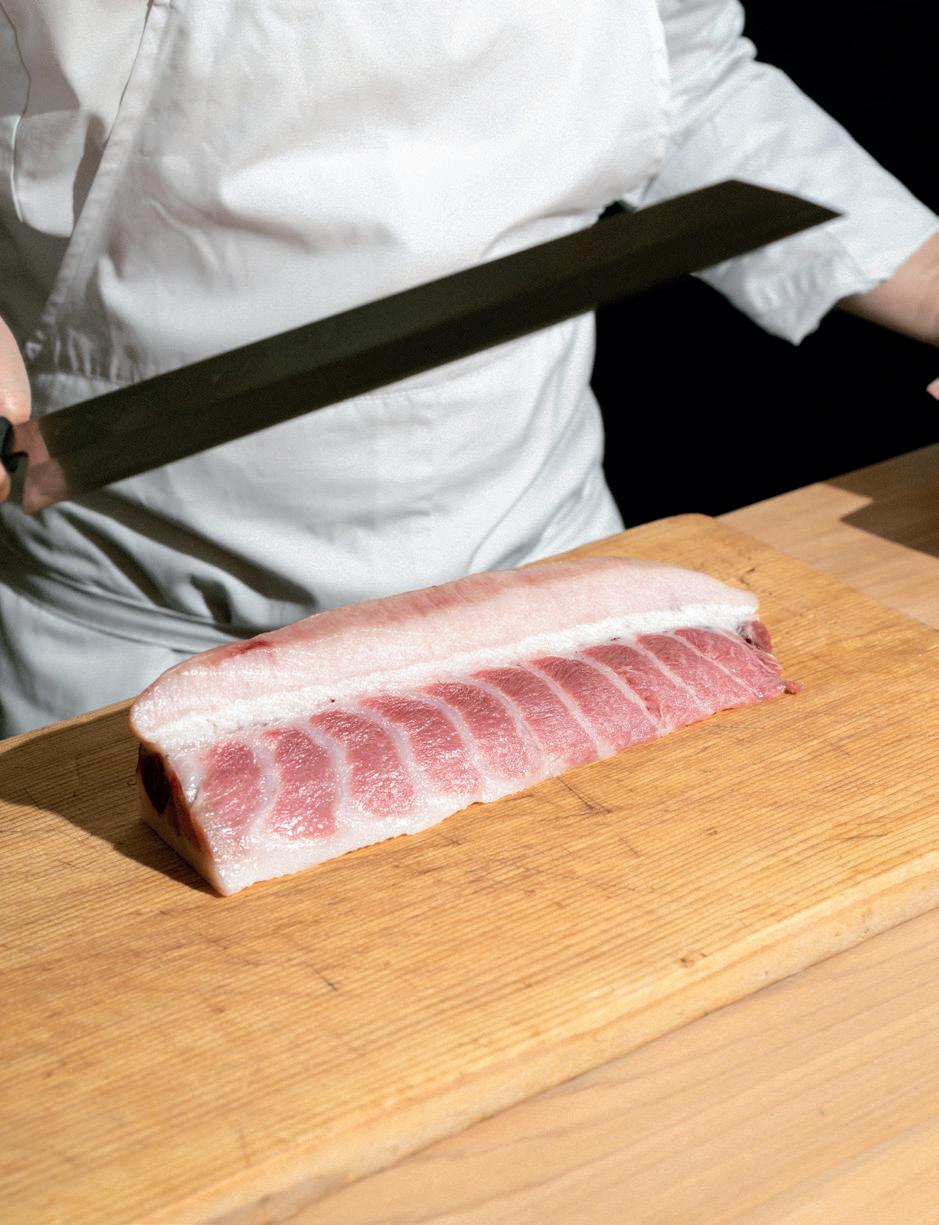

Endo’s dedication to his ingredients meant that he spent seven months with Cornish fishermen and two months in cold Orkney to discover the best seafood that Britain has to offer, before he even opened Rotunda

128
© Benjamin McMahon
“That simplicity or, more accurately, the tiny number of ingredients involved, means that it’s the duty of the chef to express each of those to the best of their ability”

in Japan, but it’s from Wales, like the fish. They come from the same environment and so work together.”
Endo’s particular style of sushi is Edomae, a version that hails from Tokyo and would traditionally have used seafood right from the Tokyo Bay –specifically the waters that flowed into Edo Castle. It’s been around since the 1800s and is pretty much the style of sushi that’s spread across the world, with fish, soy sauce and vinegared rice combined into delectable, colourful mouthfuls of delicately balanced flavour. And for Endo, there was never going to be another career path.
It’s worth pointing out that sushi is one of the simplest types of food in the world. As Endo puts it, “French cooking is all about adding. Adding butter, adding salt, adding rosemary. Sushi is the opposite way: how much can you not touch it?” But that simplicity or, more accurately, the tiny number of ingredients involved, means that it’s the
duty of the chef to express each of those to the best of their ability. When all you’re working with is fish, rice, soy and wasabi, each ingredient is incredibly loud on the palate. So, while Edomae specifically means the fish from Tokyo, it more broadly denotes showcasing the best local ingredients – something Endo took to heart before even opening at the Rotunda.
“For two years I travelled the UK. I lived for seven months with Cornish fisherman, heading out with them every day. The same with Scotland, Orkney – though that was too cold, so I only stayed for two months. Fish, scallops, lobster, I went to see the best seafood that Britain has to offer, and how to express that, to compliment that on the plate.”
The thing is, even if you visited Endo at the Rotunda many times a year and had the same exact dish – there are some regulars, like his tuna rolls that are always part of the menu – it will never be the same twice. The flavours are so finely balanced that the very
temperature of the rice or the humidity in the air can alter the dish.
“It means you can’t just do the same thing and expect the same results. You need to understand whether to put more vinegar or less vinegar, more salt or less salt. It’s always a judgement about what best suits the dish, not about how to make it the same each time.”
It’s no surprise then that 60% of Endo’s customers are repeat visitors. It’s not just that the menu changes, but the same exact mouthful on paper can be different one visit to another. And while I’d love to tell you that you too could be a sushi chef with the right knife skills, techniques and knowledge of ingredients. For Endo that’s not really what it’s about.
“I’ve been studying calligraphy since I was six years old. I once asked my calligraphy master what the most difficult word to create was and he told me, a straight line. To get that perfect balance in something so simple is hard, but you need to just draw. That’s how I think of sushi.”
Unfortunately, that’s a natural feel that simply can’t be taught, and can only be experienced.
“When a fish is swimming it never thinks about quitting. It doesn’t think too much about what’s around it, it’s just natural. That’s the mentality I learned from my master. And as I learned in my last trip to Tokyo, I’m still not my master.”
His master he might not be, but Endo’s nonetheless the most soughtafter sushi chef in London, and for good reason. I’d encourage you to read any of the myriad reviews of his Omakase, just perhaps not around lunch or dinner. It’s painful to read when you’re hungry. But the good news is that Endo is opening up a crop of new restaurants across London in the coming year – such as his new venture in the gloriously plush OWO, Kikou by Endo.
On the other hand, if you wanted a recommendation from the man himself, one that proves he has nothing against the ‘adding’ style of French cooking: “Le Gavroche. When I first ate there, it brought me to tears.”
He likely she a tear when the legendary restaurant closed, too.
129
endo kazutoshi
© Tom Asteriades
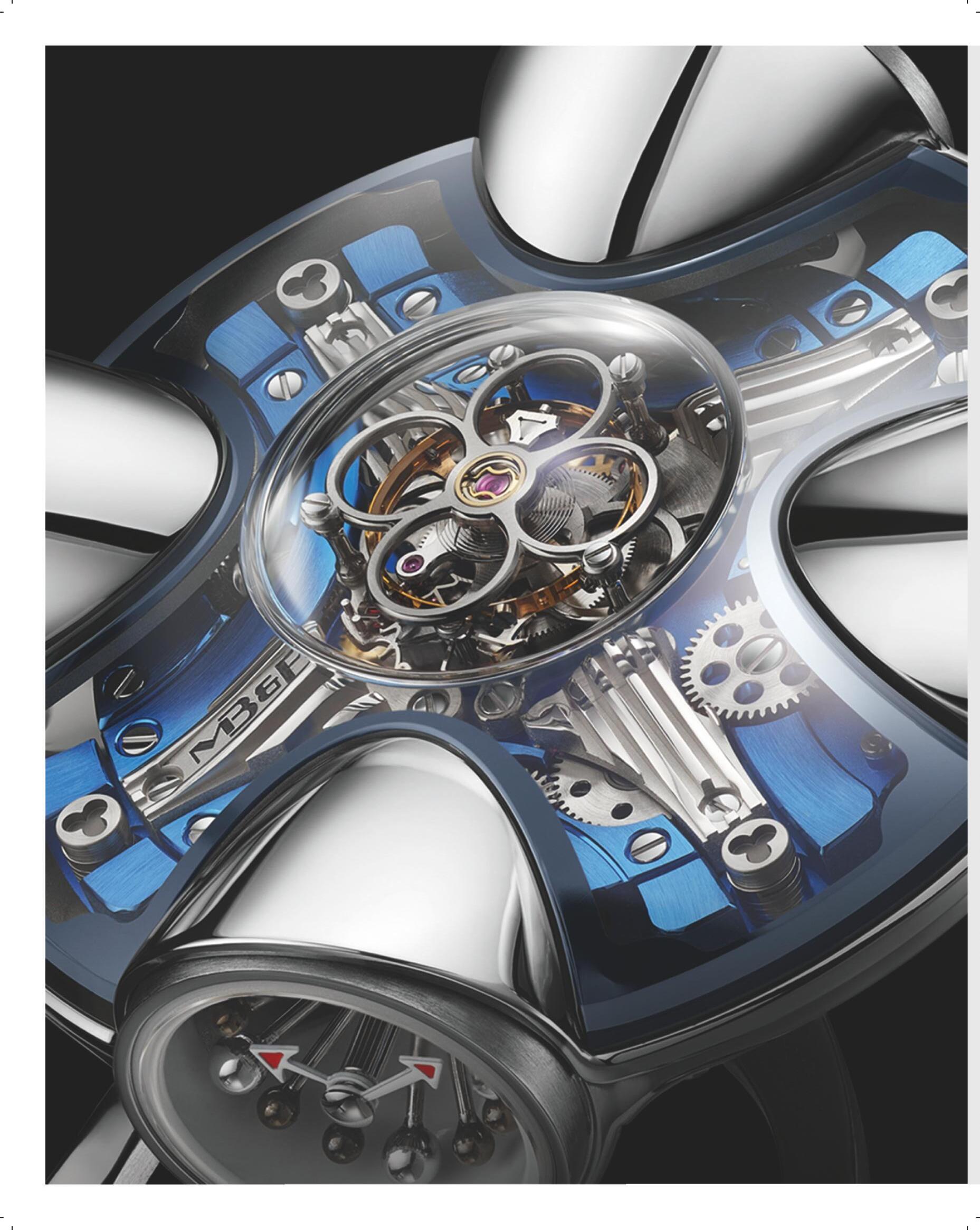

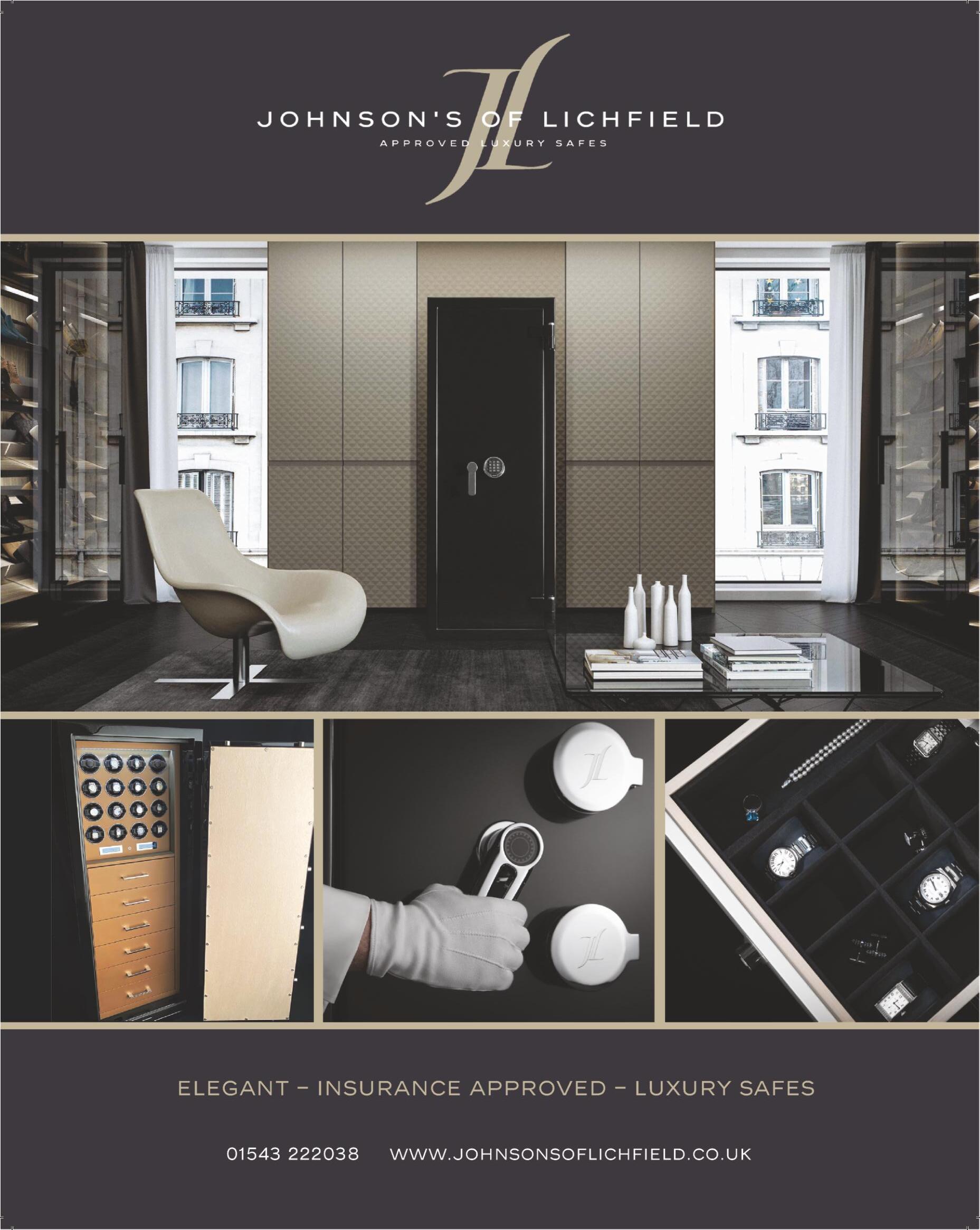
hands-on reviews
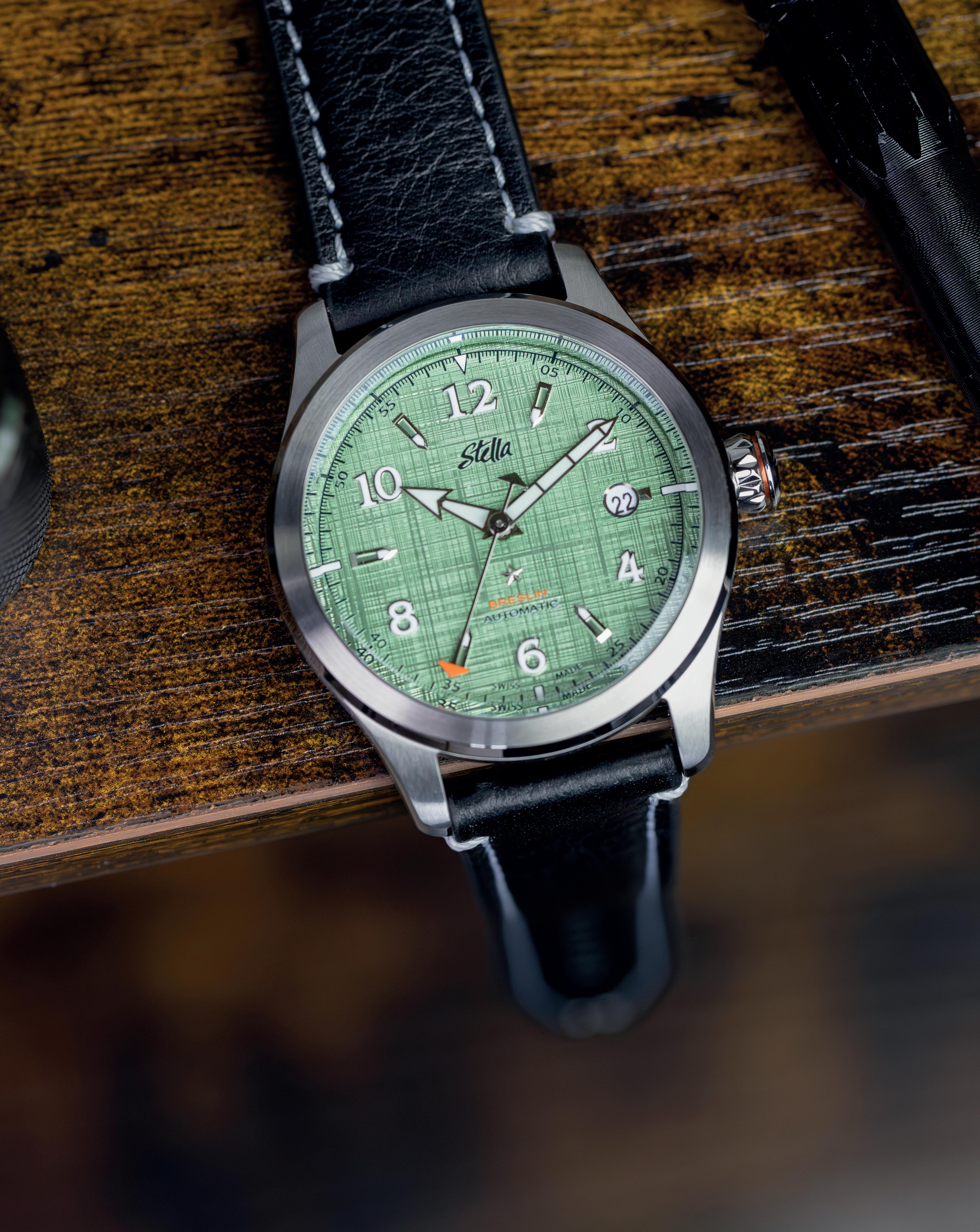
THE SPECS
• 40mm stainless steel case with 100m water resistance
• Sellita SW-200 with 38-hour power reserve
• $1,085 (approx. £860), stellawatchcompany.com
STELLA BRESLIN LIBERTY MINT
Get your summer linens on for the latest textured dial from New York-based microbrand Stella
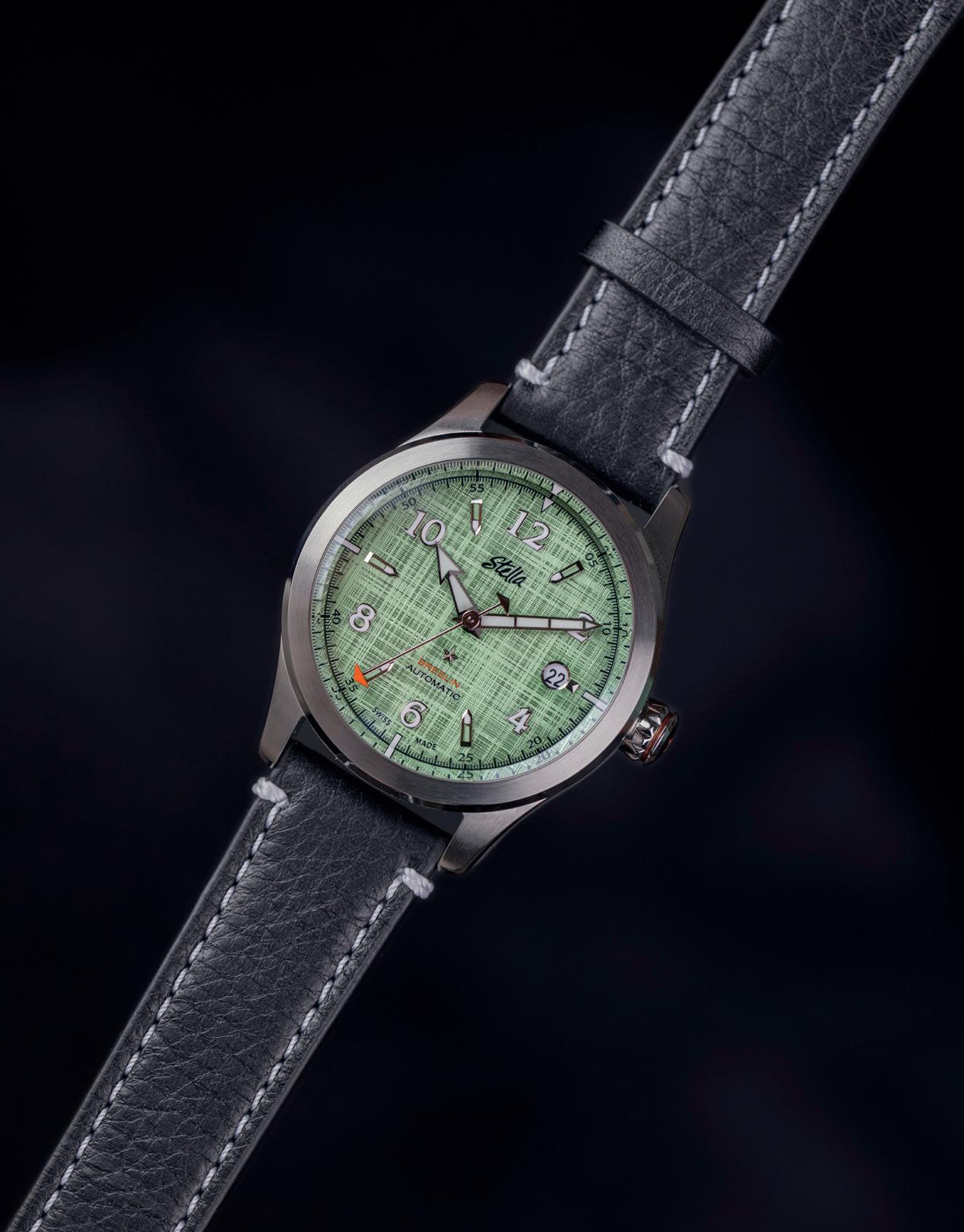
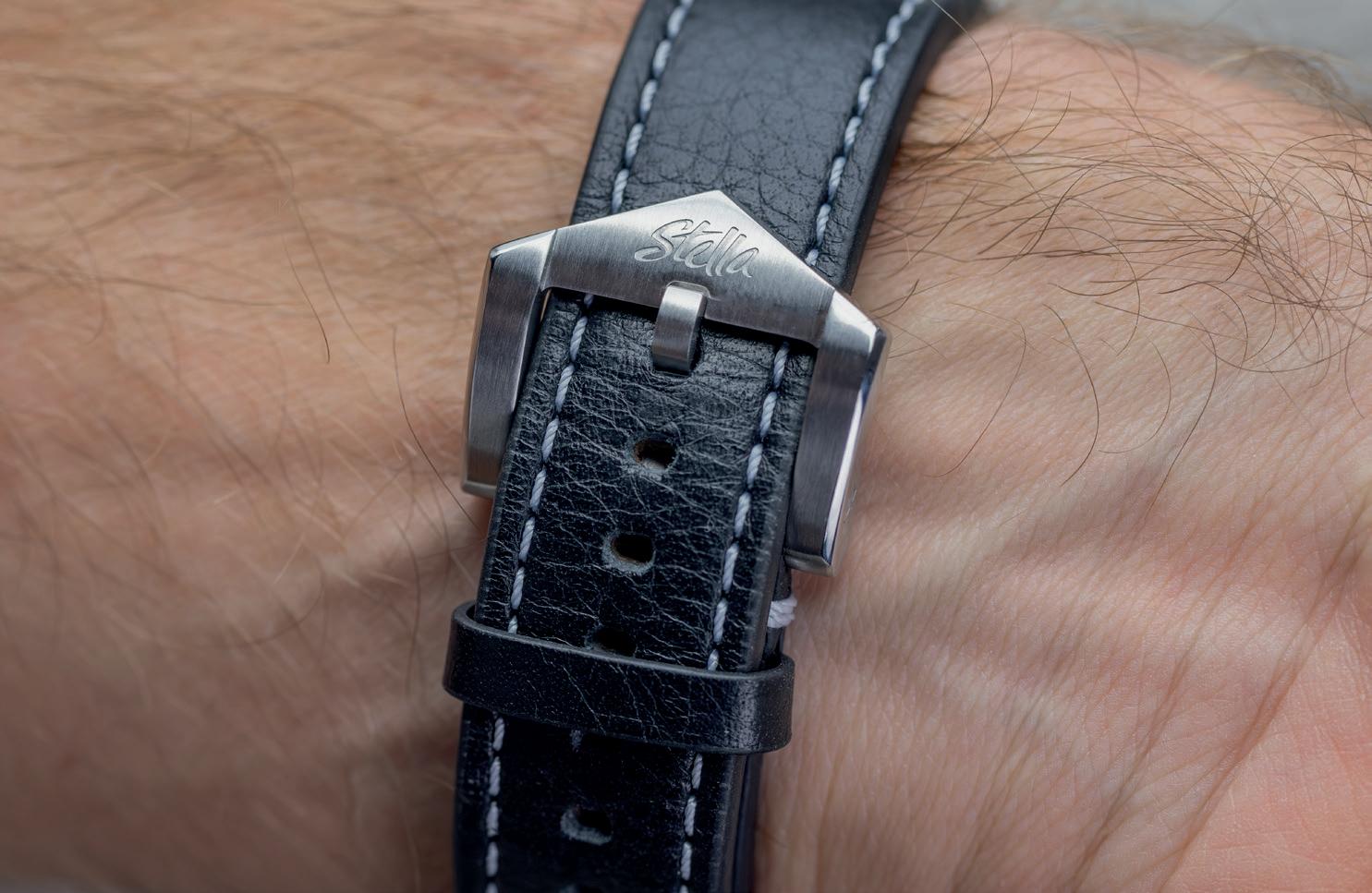
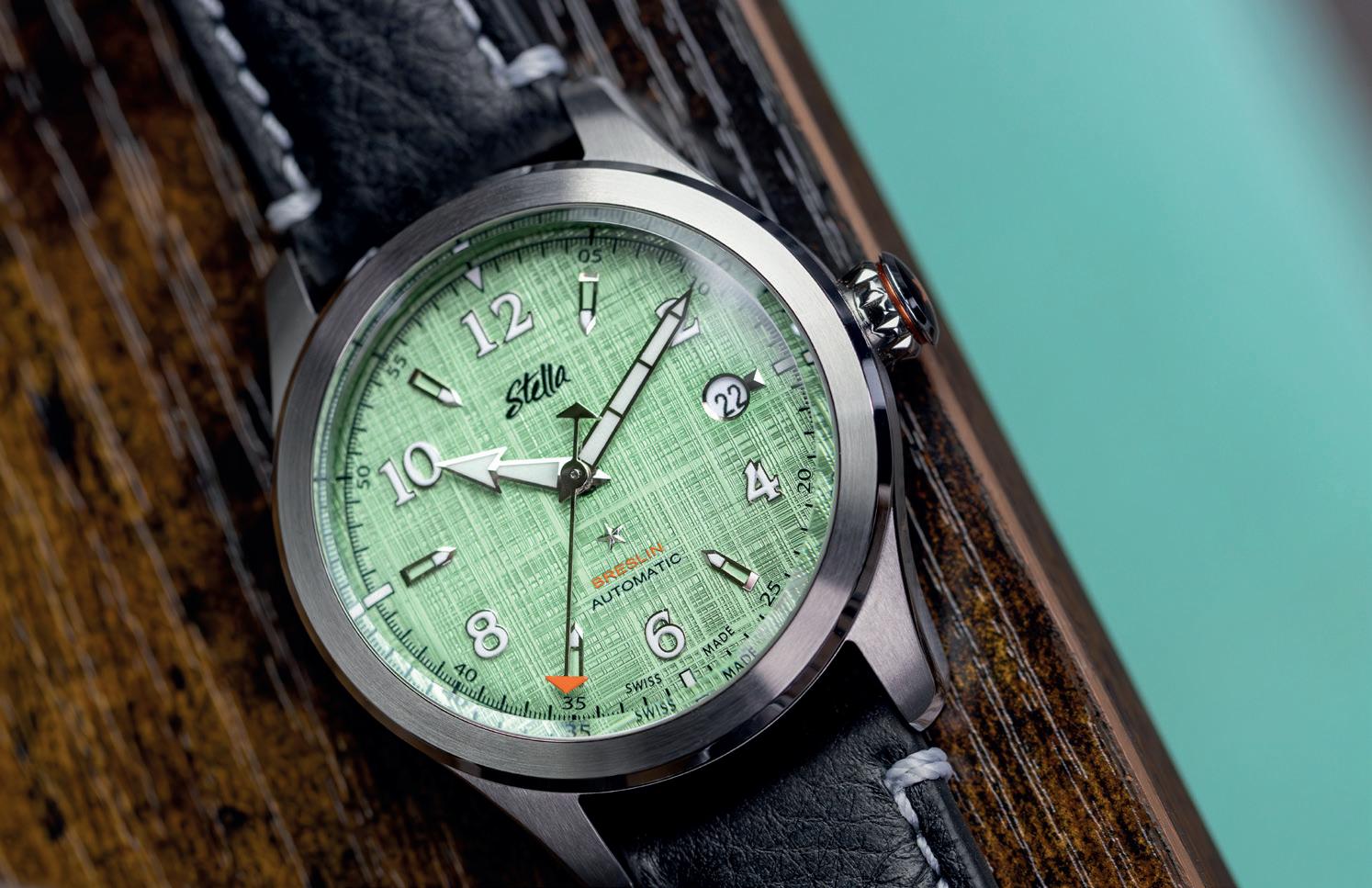

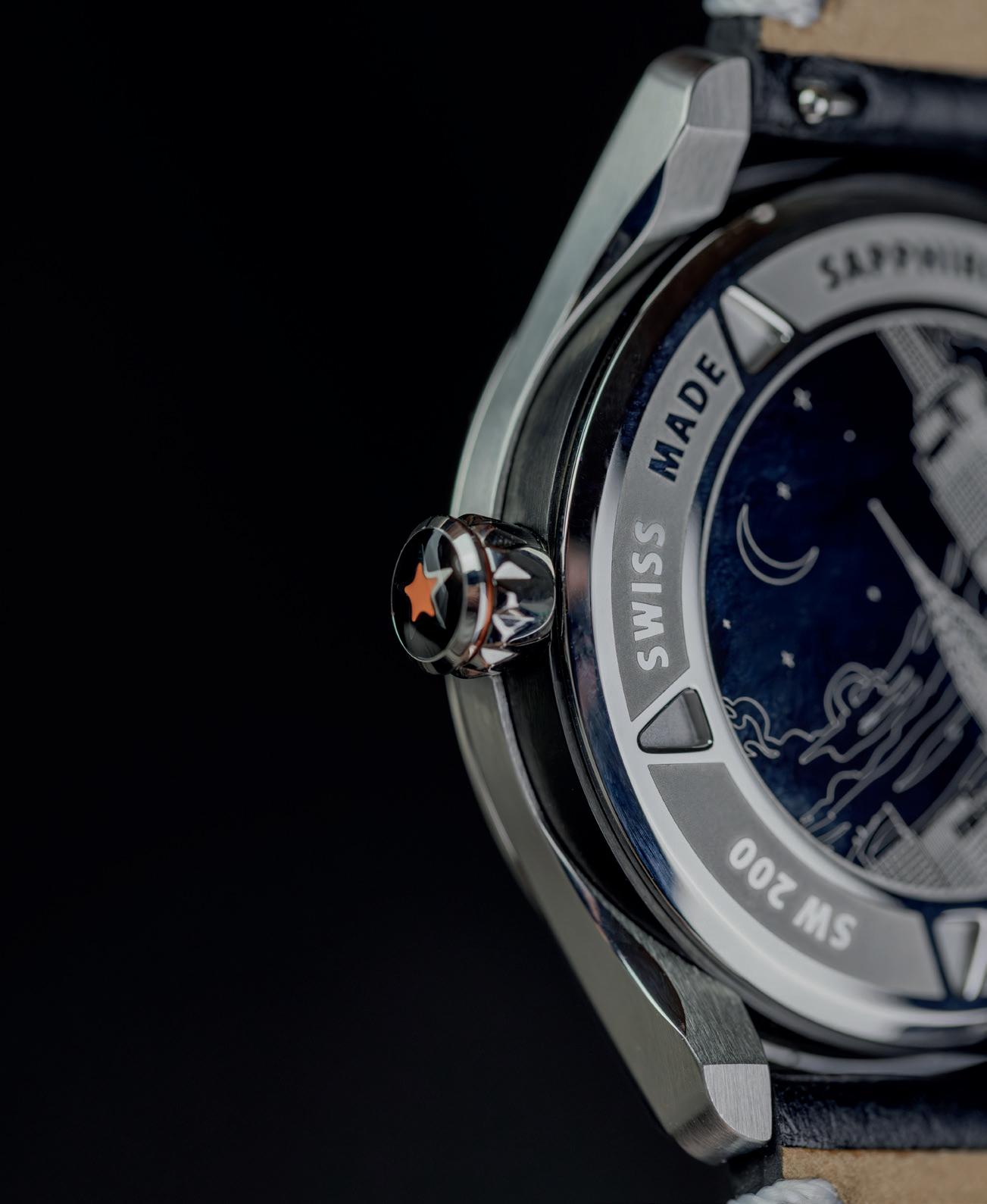
hands-on
reviews
I love a linen dial. It’s kind of a shame as they’re not particularly common outside of vintage Rolex I can’t afford and vintage Seiko I can’t find. The light, cross-hatched pattern is, as you might have guessed from the name, reminiscent of the kind of suit you’d wear during a Milanese heatwave. It’s elegant, intriguing and, if you were looking to build the perfect summer watch, something you’d do well to consider.
New York-based brand Stella on the other hand didn’t need to consider it. They’ve made their name with handsomely textured dials, starting with the Felix before graduating to the Breslin; both with linen dialled options. While they’ve certainly experimented with quirkier dials like the lightspeed-inspired take on the Ellis GMT, linen is at their core. Hence, the new Breslin in a lovely mint green.
Of course, Stella being American, it’s not just mint – it’s Liberty Mint. I’m not sure whether they meant to evoke liberty cabbage (the patriotic name for sauerkraut) or simply riff off the US money printers, but the result is the same: a gorgeous, pale green that makes the most of the linen texture. In fact, that lighter colour makes the engraving pop more than anything else in Stella’s line-up. As a counterpoint, the Liberty Mint has been released alongside a purple version, which really needs the right light to show off what makes it special.
I’d actually argue that the dial here is so close to perfect that Stella have shot themselves in the foot a little. For one, there’s a date at three o’clock. I’m averse to date windows most of the time anyway – it’s a personal foible I know, I’m working on it. It’s a nagging problem that crops up particularly when they unnecessarily interrupt something that would be better with more room to breathe. At least it’s a tiny date.
Then there are the applied numerals that would be perfect on a more pared-back dial. Here they just make things feel noisier than I’d like, especially the semi-skeleton hour markers. I’d love to see something similar with much more streamlined indexes pushed way to the periphery. It would make it feel like much more of a dress watch than the everyday wearer the Breslin’s designed as, but when your dial matches a very specific suiting material, that’s not a bad thing.
At 40mm across, it’s that versatile sweet spot that anyone can get away with. The lugs are comparatively short, so it sits nicely on my skinny wrist, even more so with the curvature of said lugs, and once the strap is worn in a little (new leather’s famously stiff), it can easily slip under a shirtsleeve. That’s a happy surprise. From its Bremont-esque side profile I expected it to be as chunky as the British brand, but nope. While I’d happily move a few things around on the dial, there’s nothing I’d change on the case.
The chunky black leather echoes the black case middle, while the bright stitching does the same for the lume on the hands, numerals and tips of the indexes. What it doesn’t do is gel with the dial

This is an independent watch brand working in the accessible space, so I likely don’t need to give you more than two guesses about what kind of Swiss movement it’s got inside. It can only really be Sellita. And indeed, the SW-200 inside has the usual hacking seconds, 26-jewel, 4Hz specs half the watch world (conservatively) relies on. I’d prefer one of the more recent, higher power reserve versions, because who wouldn’t? Here’s hoping that comes further down the line. Either way, the movement’s protected by 100m water resistance and a very handsome NYC caseback.
The Breslin Liberty Mint comes on a contrast-stitched leather strap that I’m in two minds about. If you take out the dial, it’s the perfect match to the Brelin’s case. The chunky black leather echoes the black case middle, while the bright stitching does the same for the lume on the hands, numerals and tips of the indexes. What it doesn’t do is gel with the dial.
I’ve recently fallen in love with dial-matched straps on things like the Orient Bambino and our very own collaboration with Christopher Ward (both of which I ended up buying) and I can’t help but feel a bit of mint green suede would take this to the next level. Granted I’m more inclined to play with colours than most watch collectors, so I get that it wouldn’t be to everyone’s tastes, so perhaps mint green stitching instead of the white for a middle-ground.
This is all to say that I really, really like the Liberty Mint dial. I’ve been completely fine with all these painfully minor issues on the previous Breslin models and in many cases even think they work better. Perhaps it’s because of the drought of linen dials, and perhaps it’s because I’m after my next summer watch, but the Breslin Liberty Mint is very close to getting my bank details off me – it’s just a few tiny things stopping me from taking the plunge.
$1,085 (approx. £860), stellawatchcompany.com
135
stella breslin
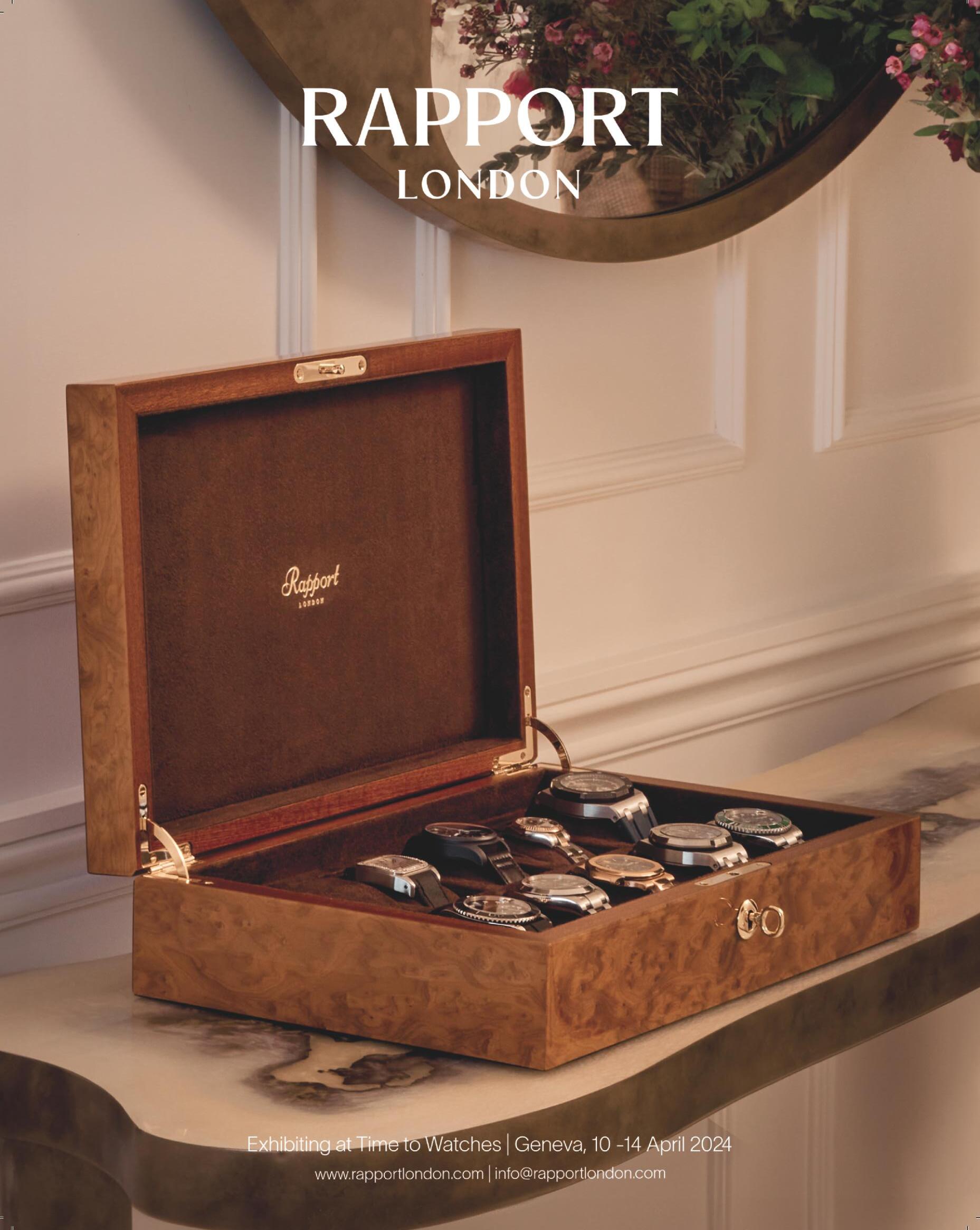
hands-on reviews
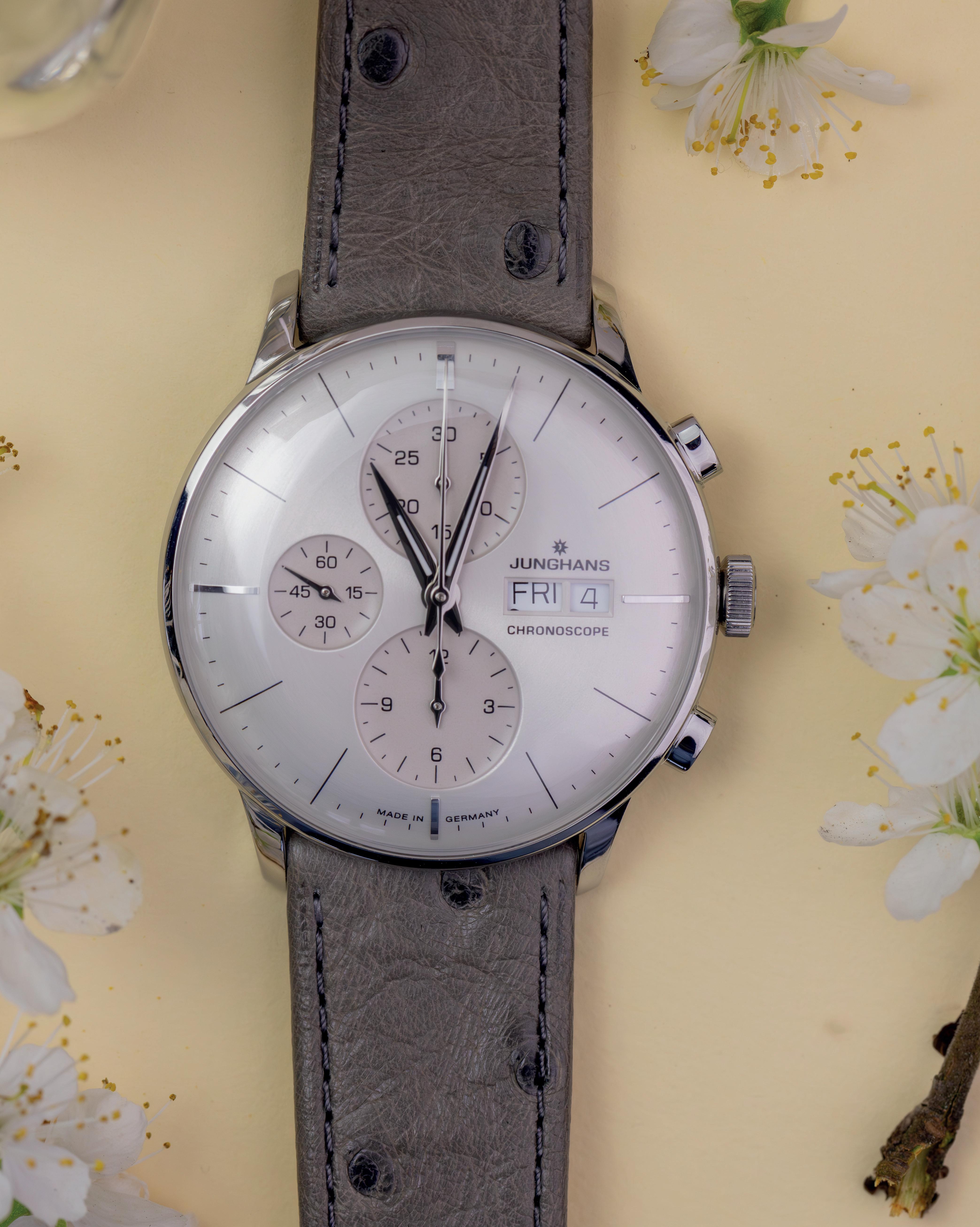
THE SPECS
• 40.7mm stainless steel case with 50m water resistance
• J880.1 caliber automatic movement with 48-hour power reserve
• £2,240, junghans.de
JUNGHANS MEISTER CHRONOSCOPE
A handsome new grey dial for one of the most tactile dress watches around
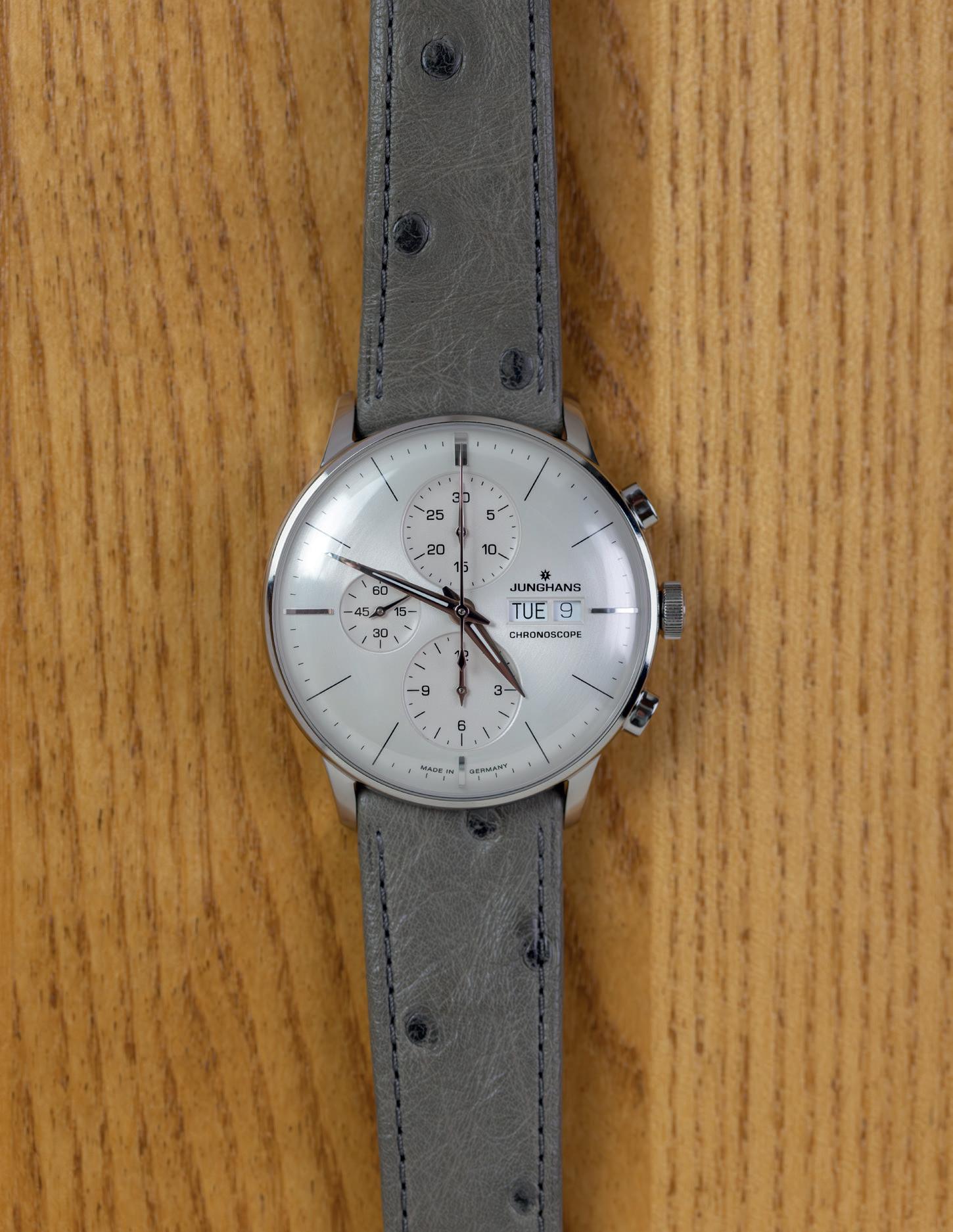

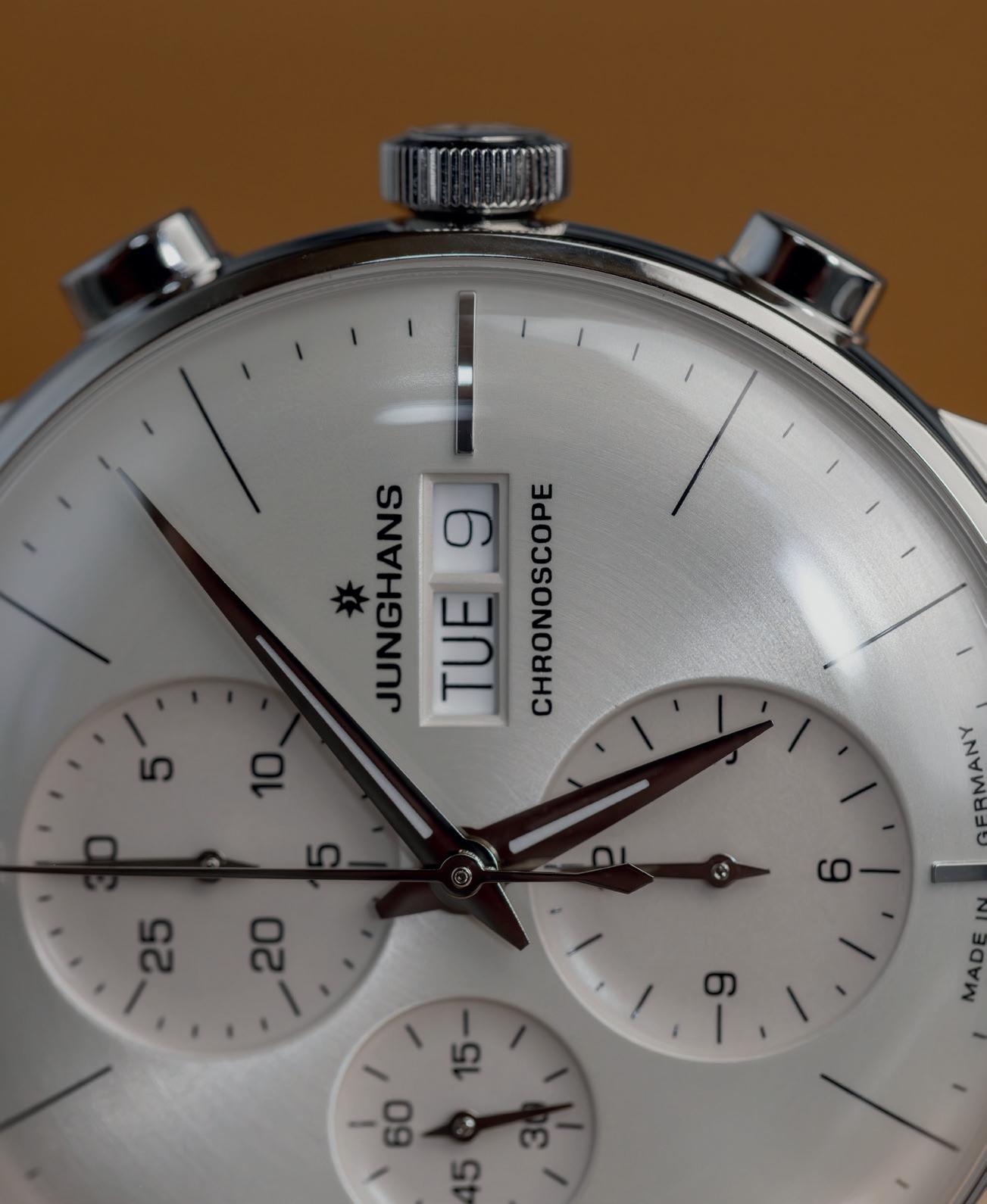
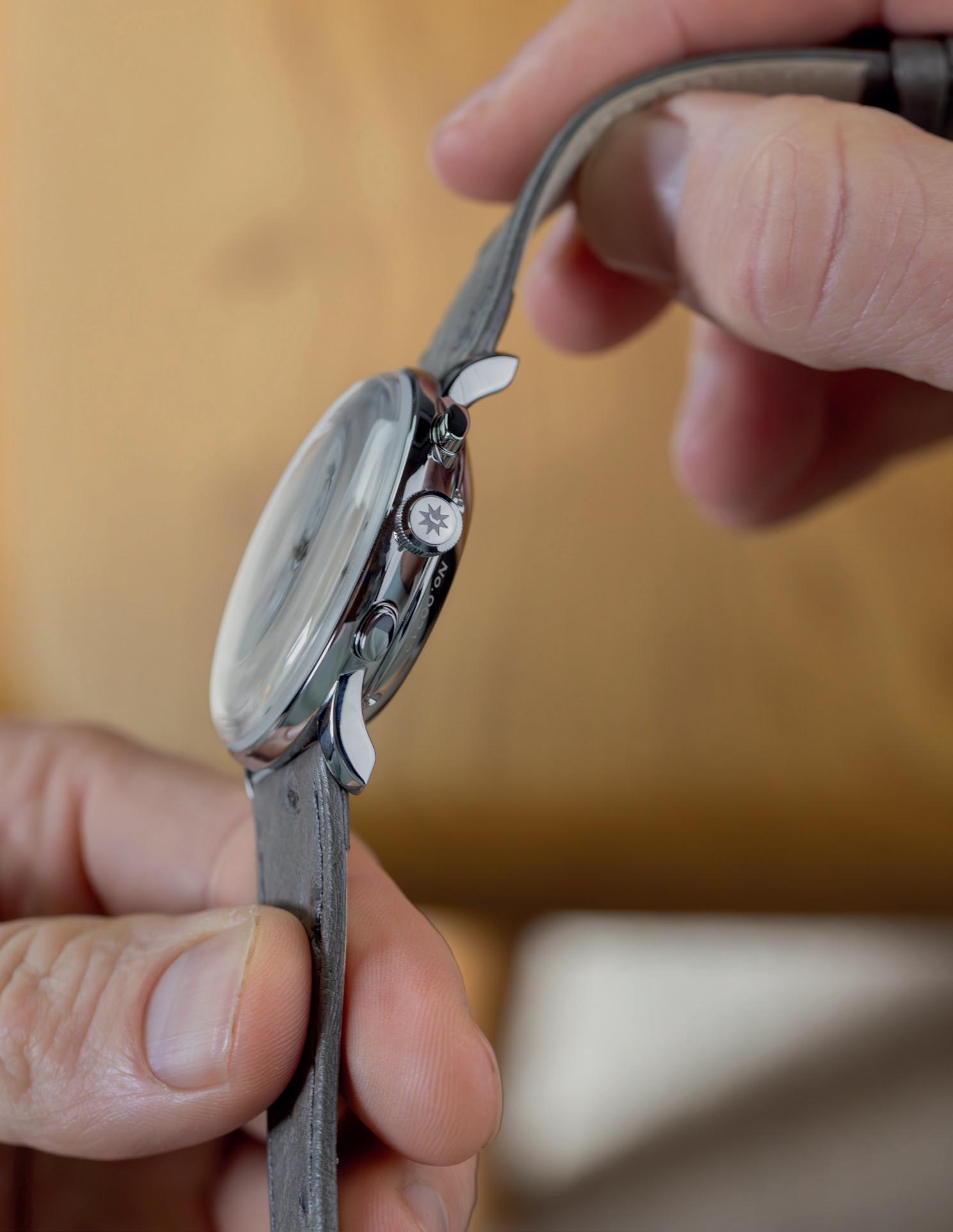
hands-on
reviews
Junghans are about as inseparable from Bauhaus as Sans Serif and surreal costume parties, and has classically leaned on the Germanfounded school’s aesthetics for most of their releases. And no, it’s not just their Max Bill collection, though the typography of the Bauhaus alumnus is as true to the school’s style as you can get. But across the board it’s filtered into Junghans’ aesthetics, their colours, indexes, numerals, and all the little ingredients that make up their watches.
There’s nothing wrong with having a theme of course, and the practical timelessness of Bauhaus is perfect for the kind of daily wearer you can strap on any time, any place. But that timelessness and minimalism, I feel, shoots itself in the foot. Once you’ve distilled the various aspects of timekeeping to the form-meets-function that Bauhaus demands, there aren’t that many places you can go.
The Meister Chronoscope therefore is refreshing, not because it’s particularly modern, but because rather than being timeless, it’s very much rooted in the watchmaker’s history. They’re not the only ones of course; collectors and brands both are moving from the Genta-flavoured obsession with the 1970s, to an earlier era of gorgeous dress watches and vintage elegance.
It’s an era that Junghans know well; the Meister line itself dates all the way back to the 1930s (even if the modern version first saw light in 2011) and back in 1956, they were the biggest producer of Chronometer-grade movements in the world. In short, they know how a vintage chronograph should look – and it should look like the Meister Chronoscope.
Funnily enough, we’ve never reviewed the Meister Chronoscope before. I’m not sure why or how it slipped through our ever-tightening net, but there you have it. It’s a shame because it’s a piece I’ve always loved, enough that we leapt at the chance to get hands-on with its newest grey version, which is a monochromatic beauty.
Where most chronographs lean on their sporty side, Junghans’ is slim, elegant and streamlined. There’s no tachymeter here, just a razor-thin bezel leaving plenty of room for the curving silvered dial, complete with matching curved indexes. It’s one of the most satisfying watches I’ve come across to just hold in your hand, as that curve is emphasised by the matching sapphire crystal for a pebblesmooth, tactile silhouette. The caseback too is dramatically curved, which helps it sit more comfortably on the wrist than its 40.7mm diameter suggests. Not that just under 41mm is particularly big for a chronograph of course.
Most of the time that would barely leave enough space for the chronograph subdials, but said subdials here are actually surprisingly small, especially the nine o’clock 60-second counter, I assume downsized to balance the daydate window opposite. It’s just about readable, given there aren’t many numerals and the indexes are razor-thin, but it does feel like they could have made the entire watch just a bit smaller and not lost any of the charm.
Rather than just printing the scale onto those subdials, they’re actually dimpled, bowl-shaped craters in the dial with a circular grain in contrast to the main dial’s brushed finish. Thanks to that contrast, they actually appear darker,
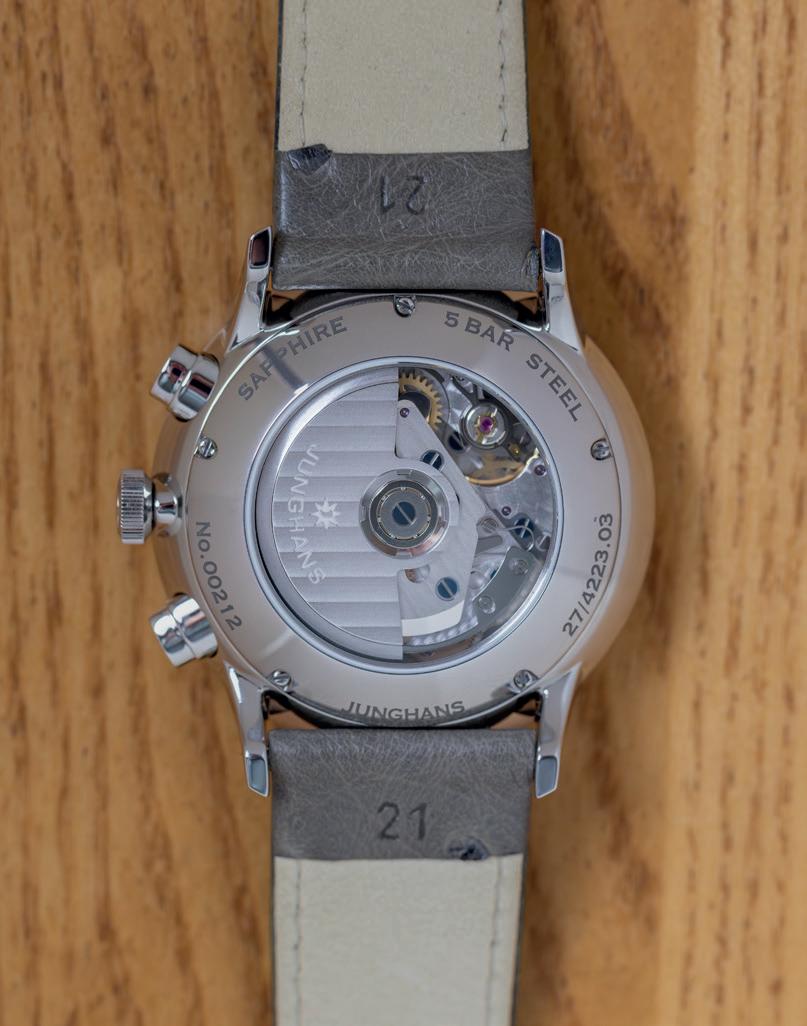
The Meister Chronoscope is refreshing, not because it’s modern, but because rather than being timeless, it’s very much rooted in the watchmaker’s history
almost beige in colour. It’s the kind of subtle juxtaposition I love to see in this kind of sleek, monochrome watch.
Equally sleek are the chronograph pushers, which if you see them from the side are actually oval. It makes them a little more awkward to use than more protruding pushers, but your classic mushroom pushers here would have made it feel a little too racy. Despite the archetypal stopwatch complication, the Meister Chronoscope is much more in line with a dress watch than a sports watch, so form is a touch more important than function.
Not that there’s anything wrong with the Junghans functionally. The J880.1 calibre inside is solid for this price point. It beats 28,800 times an hour and has a 48-hour power reserve, precisely in line with the Valjoux 7750 it’s riffing on. It is however better finished, with Côtes de Genève and perlage aplenty.
Honestly, there’s not much I’d change about the Meister Chronscope. I’m personally not too keen on the ostrich strap; there’s certainly an old-school luxury feel to it, but a dialmatched grey suede would complete that neutral, monochrome look much better in my humble opinion. Otherwise, as vintage-style dress watches go, it hits the nail on the head. The full grey look might be a bit too pared-back for some, but I love it, especially when it’s done this well. I’m glad I finally took the time to get one of these on my wrist – the downside being that I’ll be hard-pressed to find another watch quite as gloriously tactile, especially for well under £2,500. £2,240, junghans.de
139
junghans meister
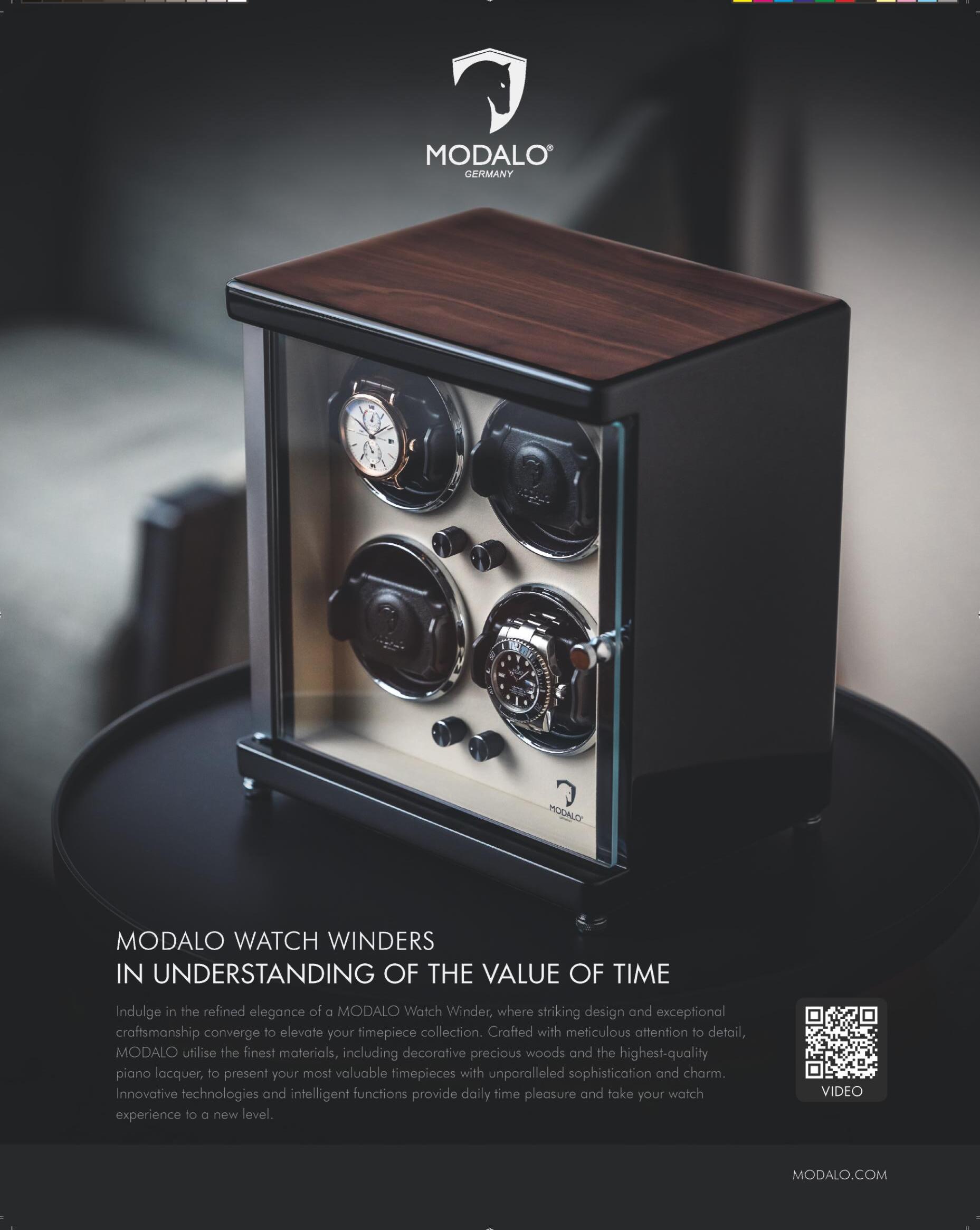
hands-on reviews
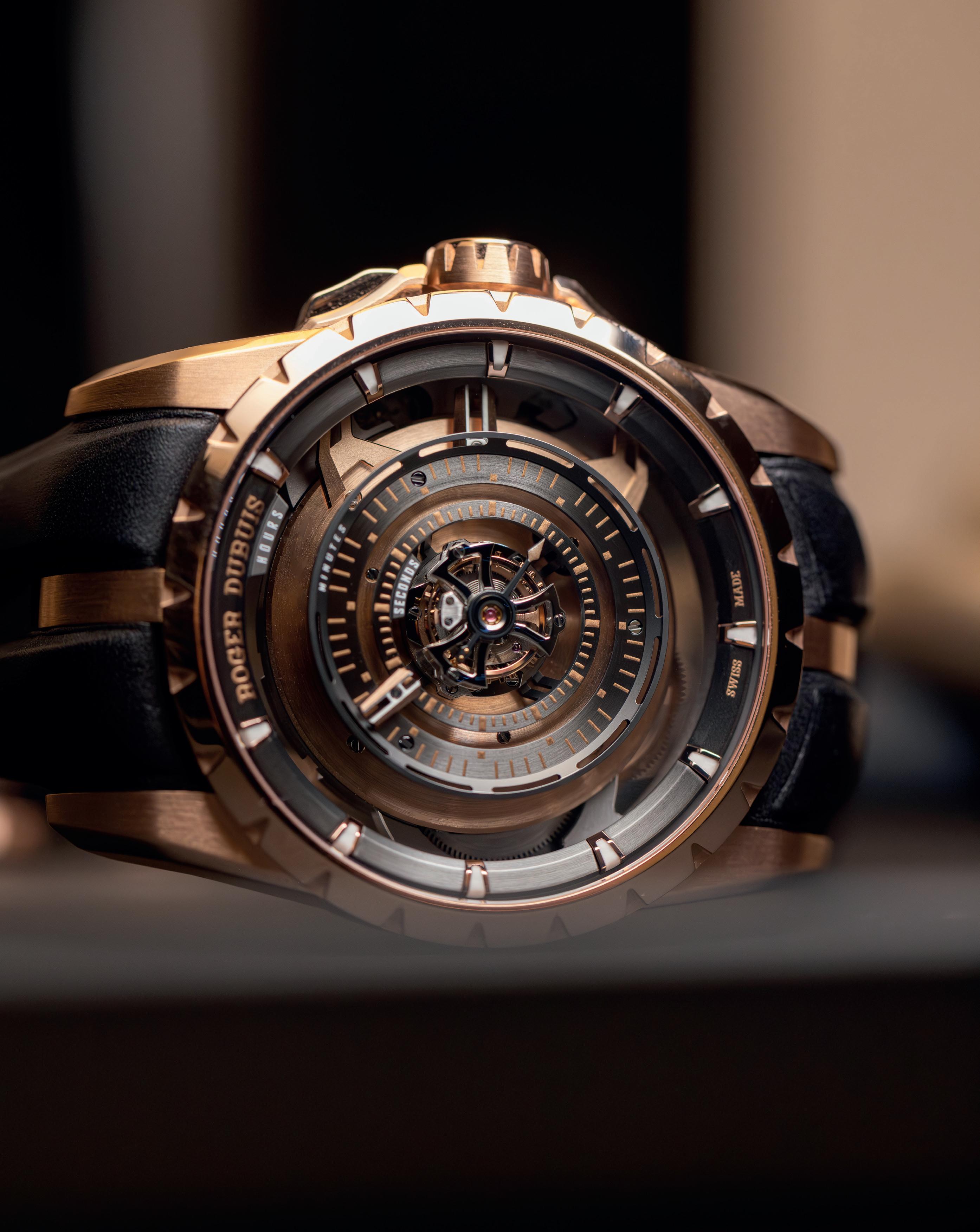
THE SPECS
• 45mm rose gold case with 100m water resistance
• RD115 calibre manual-wind movement with 72-hour power reserve
• EUR 200,826 (approx. £172,000), limited to 88 pieces, rogerdubuis.com
ROGER DUBUIS ORBIS MACHINA
Roger Dubuis step out from the Excalibur’s domineering shadow with a surprising central tourbillon




For the better part of a decade now, Roger Dubuis has been the Excalibur, and the Excalibur has been Roger Dubuis. Sure, the occasional scattering of Arthurian knights has cropped up, but not in any form outside of an instantly sold-out novelty run. It’s not hard to see why the Excalibur has dominated their particular breed of watchmaking – everything from its distinctive star-shaped bridge and its skeleton nature to its size and propensity for tourbillons screams haute horology. The downside is that Roger Dubuis haven’t really been able to do much else – which is just one of the reasons that the new Orbis Machina is exciting
I say one of the reasons because, context aside, there’s a lot about the Orbis to set it apart not just from Roger Dubuis, but from other tourbillons – which is impressive in an increasingly crowded market of supposedly gravity defying complications. Enough that I’m probably not going to review it like I would a more traditional watch. There’s little enough to compare it to that comparisons will be a bit meaningless. But, it is quite possibly my favourite Roger Dubuis watch in recent memory.
First up, central tourbillons are a rarity. The balance, the part of the watch that goes in a tourbillon cage, isn’t normally at the centre. The architecture of a classical movement moves it generally to six o’clock, hence that also being where you can find most tourbillon cages. Moving that dead centre requires a complete rethink of how the calibre’s laid out. Indeed, there aren’t many watchmakers that would attempt it. Bulgari, Hysek, Franck Muller (of course) and a couple of others are the only ones that have bothered – not just because of complexity, but also because Omega had the patent for their De Ville until 2015.
Still, Roger Dubuis are no strangers to the not-so-humble tourbillon and while they’ve never particularly dabbled in multi-axis numbers a la Jaeger-LeCoultre, they have thrown multiple tourbillons into their watches. As long as they stick to one plane, they have some serious anti-gravity chops –and so, a central tourbillon makes a reasonable amount of sense for them.
The Orbis however makes more use of that central tourbillon than most. Instead of hands, the time is told on concentric discs around the central complication mounted with skeletonised hands. If you’re wondering which is which, Roger Dubuis have conveniently labelled them, ‘Hours’ and ‘Minutes’. Still, it doesn’t make for the easiest reading, but it is an OCD satisfying echo in shape – something that a star-shaped bridge would utterly ruin. Instead, Roger Dubuis’ architectural sensibilities are expressed in space. It’s not just its size across the board – and we’ll get onto precisely how big this behemoth of a timepiece is – but the space inside the watch, with veritable voids surrounding the timekeeping discs.
In fact, Roger Dubuis have taken that sense of space to the extreme, even going so far as to completely redesign how the crown interacts with the movement. Where you would expect to see a stem to set the watch, there’s nothing. Their watchmakers instead found a painfully complicated workaround, simply to avoid ruining the aesthetics. Now that’s dedication.

The Orbis is also going to take some dedication to pull off on the wrist. Not only does it measure in at 45mm across, but it’s a big chunk of heavy precious metal, even if the rose gold comes paired with a rubber strap rather than a bracelet.
Said strap is integrated via three distinctive lugs rather than the usual two, amping up its wrist presence to grand proportions. The same goes for the notched bezel and equally notched but much chunkier crown, both of which aesthetically tie it back to the Excalibur. It also rises 14.41mm off the wrist. There’s not going to be any missing it.
And yet despite all of this obvious contemporary watchmaking, there’s actually something classical in the Orbis. It’s not classical as a whole, this isn’t re-treading what the Omega De Ville already laid down. But between actually having some approximation of a dial, and leaning on traditional watchmaking in both the complicated nature of the movement and the finishing across the back, it’s a welcome change of high-adrenaline pace.
Indeed, flip it over and the movement could come from any fine watchmaking pedigree. Not only is the manual-wind RD115 a solid performance piece with a 72-hour power reserve despite its novel display, but seals the deal quite literally with the Poinçon de Genève. It’s worth noting that the Poinçon de Genève is one of the few certifications that not only takes into account finishing, but measures performance once the watch has been completely cased up and finished. In short, it’s one of the best sureties of exceptionality there is.
Exceptional is indeed the word. We’ve come to expect exceptional watchmaking from Roger Dubuis in the past, but in a grandiose, very specific and often divisive way. I’ve personally never been a huge fan of the Excalibur’s skeletonised star or Roger Dubuis’ reliance on the model.
So seeing them do something that’s exceptional in both the wider watchmaking world and their own canon is reassuring that they’ve not pigeonholed themselves. And on its own list of merits, the Orbis Machina is one hell of a watch. Which for nearly €201,000, it should be. €200,826 (approx. £172,000), limited to 88 pieces, rogerdubuis.com
143
roger dubuis orbis
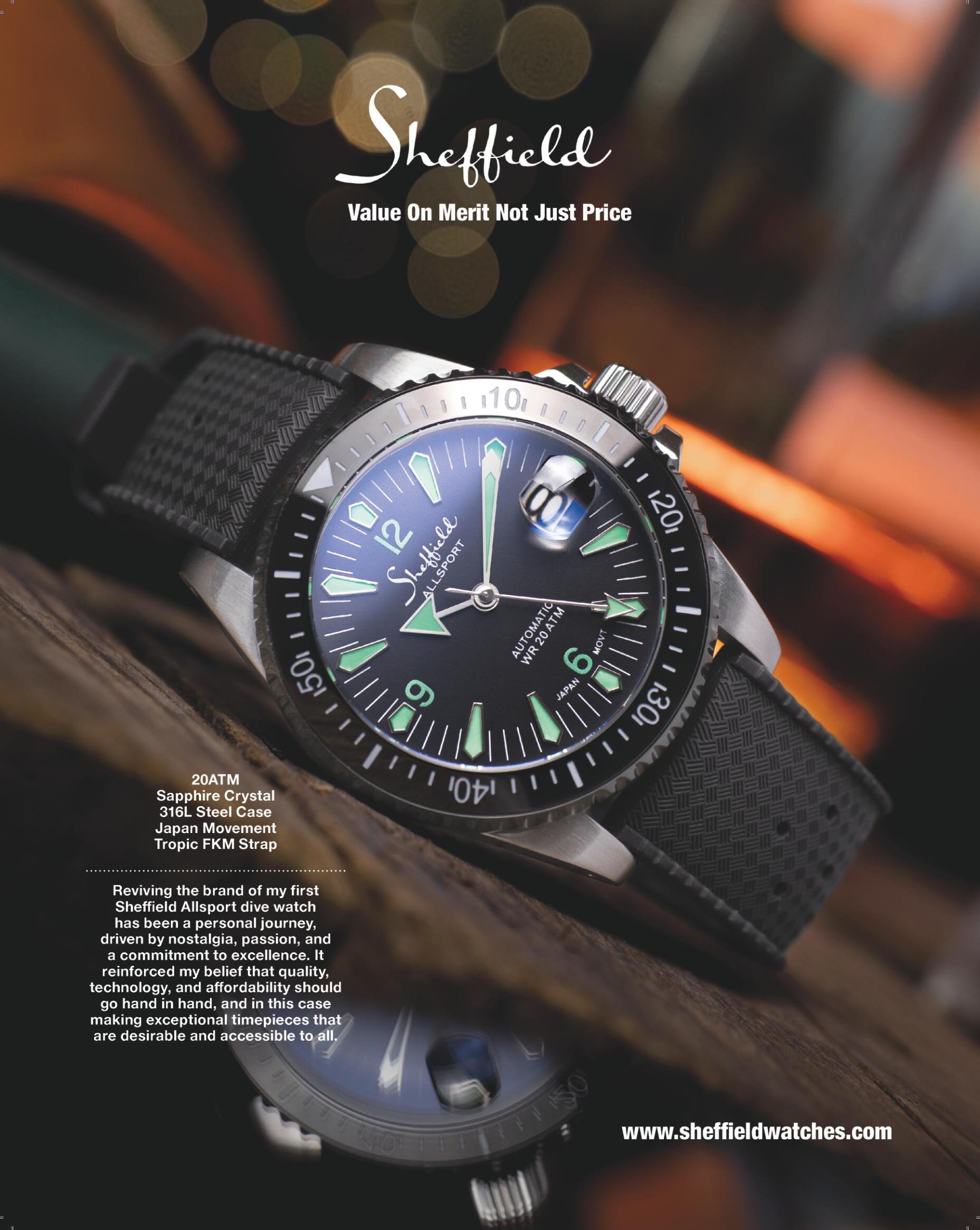
THE SPECS:
• 40mm stainless steel case with
• La Joux-Perret G101 automatic movement with 68-hour power reserve
• CHF 2,666.66 (approx. £2,350), limited to 99 pieces, kollokium.com

Kollokium
Projekt 01
For those of you that think brutalism has no place in watchmaking, think again. The debut project from fledgling German brand is part Barbican-style architecture, part sci-fi project, part one of those kids’ pin picture toys. Whoever actually designed it looks like they had a good time. The
tapered 40mm caseback is cast from stainless steel rather than milled, making it one solid block with the crystal rising monolithically above. The dial is harder to describe, a series of miniature pillars of different heights and sizes that create a wave across the space under the glass. The whole thing is backed by a La Joux Perret G101 movement and it’s as great as ever to see more LJP action. This is not a watch you can miss on the wrist – although with 99 pieces, you just might. kollokium.com
145
COR
The latest and greatest from the creative world of independent microbrands edited by: sam kessler microbrand corner
MICROBRAND
NER
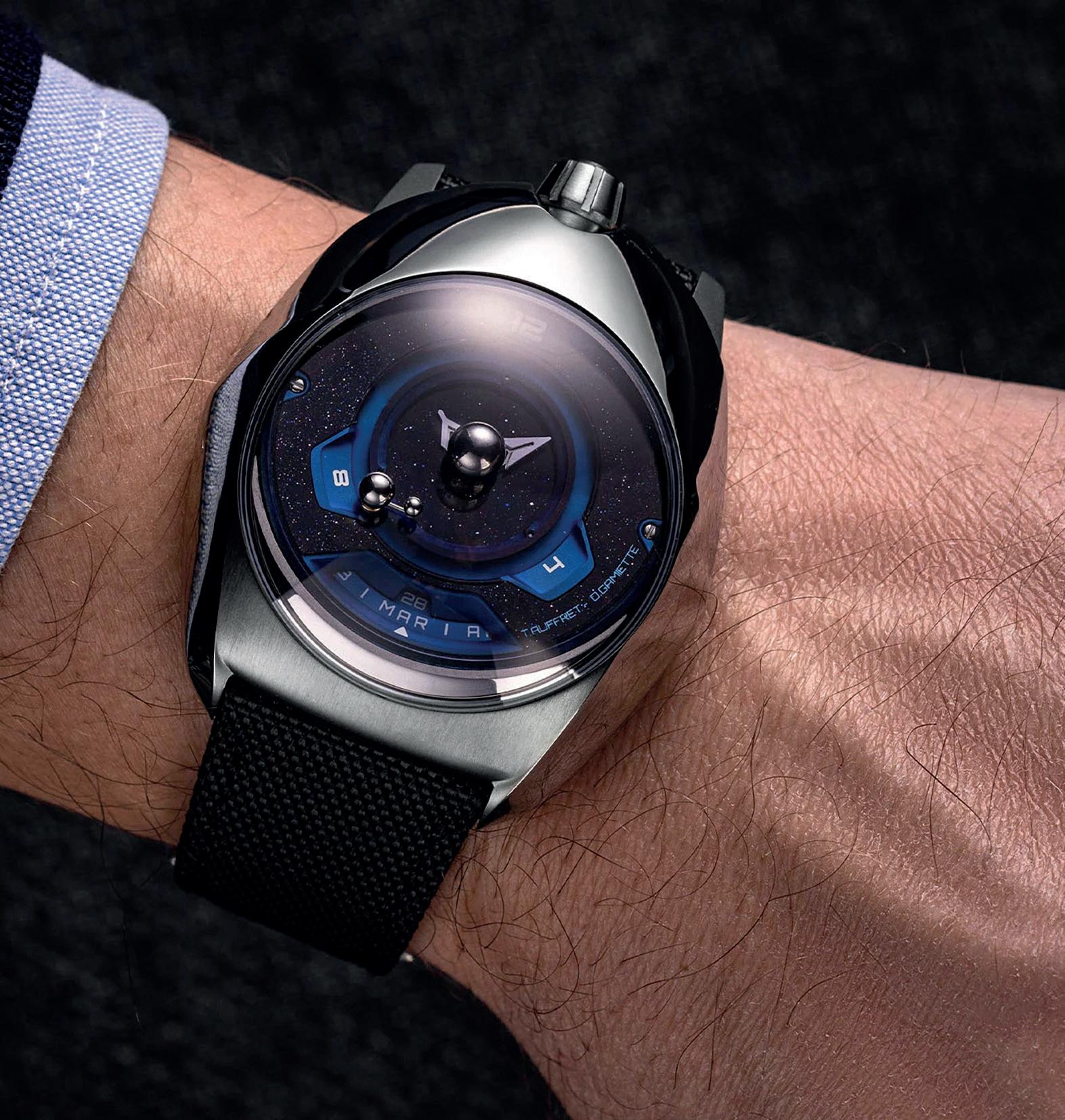
THE SPECS:
• 42mm grade 5 titanium case with 30m water resistance
• Soprod P024 H4 automatic movement with 38-hour power reserve
• €2,990 (approx. £2,565), spaceonewatches.com
Zelos Spearfish Dual Time
Who even needs a dial? Not Zelos, who have replaced it with sapphire crystal for an openworked look at the perlage-finished plates and bridges of the movement. It also shows the twin discs of the large date window at 12 o’clock, which is a great look. Rather than a standard GMT hand, the dual time is read using a six o’clock atlas-style subdial with both hours and minutes. It’s a little pointless as you only really need one minutes, but it’s a cool throwback to the early days of dual timezone watches that were less a complication, more two watches put together. It’s a handsome, modern, mechanically cool watch and, in typical Zelos style, will set you back a number where ‘fair’ is an understatement. zeloswatches.com
THE SPECS:
• 40mm titanium case with 100m water resistance
• Sellita SW300 calibre automatic movement with 42-hour power reserve
• $1,849 (approx. £1,500), zeloswatches.com
SpaceOne
Tellurium
SpaceOne already made a name for themselves when the Parisian independent brought out their futuristic jumping hours last year, but this time they’re emphasising the ‘Space’ in their name. A Tellurium is basically a downsized orrery that only shows the Earth, moon and sun, and here it’s been downsized into a wristwatch and combined with a streamlined calendar function, all in a mix of starry aventurine and blue metal. There’s a lot going on, so I won’t go into every aspect, but there’s not much else like this outside the insanity Jacob & Co revealed for many hundreds of times the price. All of that’s contained in a sleek, space pod of a case in grade 5 titanium that Max Busser would be proud of. Seriously, how SpaceOne have created this thing for this price boggles the mind. spaceonewatches.com

146
microbrand corner
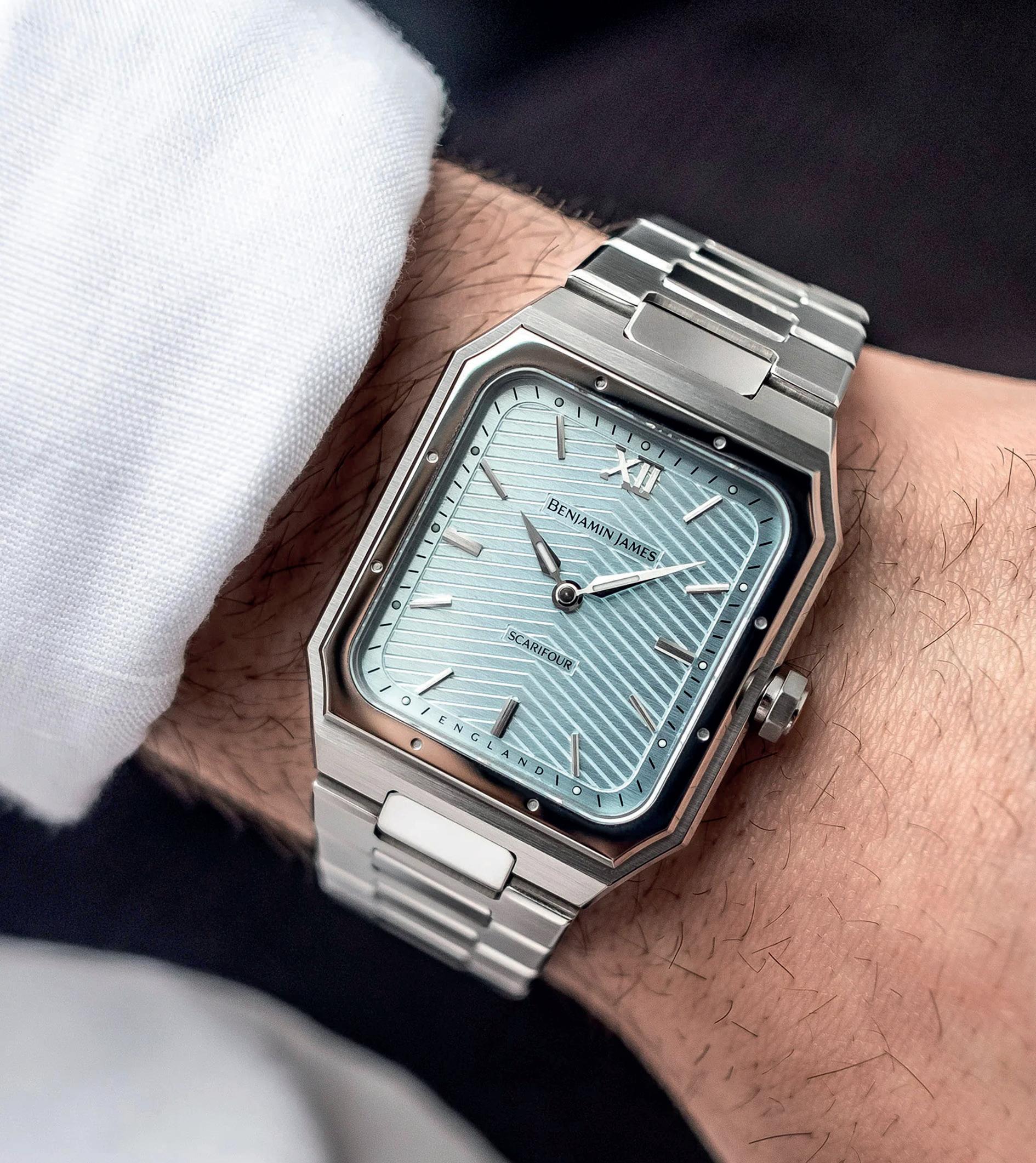
Vaer
R1 USA Chronograph
Finally, we come to something a little more wearable for most of us than some kind of retro-futuristic slice of crazy in the form of a seriously handsome, perfectly retro racing chronograph from US-based micro, Vaer. The R1 USA Rally Chronograph comes in two versions; one with a cream dial with black tachymeter, the other in the reverse. If it weren’t for the colourful subdials in red and blue, it would be classic Panda layouts. Instead, the squircle shapes make it feel more 1970s than ‘50s, with a host of automotive-flavoured design elements to hammer home the theme. Powered by a Meca-Quartz movement, it’s a great everyday beater for a slice of vintage racing style with panache that outstrips its price tag. vaerwatches.com
Benjamin James
Scarifour
One of the most British names for a watch brand I’ve ever come across, Benjamin James’ first effort is definitely not what you’d consider classical. It lands in the realm of a slimline Cartier Santos with a cool chevron-engraved dial in a gorgeous array of colours. It has some serious impact, though thankfully a 40mm case size means it’s not too much on the wrist. Obviously there’s a whole British heritage story to the brand and the Scarifour in particular, but the bottom line is a punchy, eye-catching rectangular watch that eschews the baseline Art Deco flavour for a much more vibrant dish using homegrown ingredients. And it’ll set you back around the same as a good Michelin-star meal – even when backed by a Swiss Sellita movement. benjaminjameswatches.com
THE SPECS:
• 31mm x 40mm stainless steel case with 50m water resistance
• Sellita SW210 manual-wind movement with 42-hour power reserve
• £660, benjaminjameswatches.com

THE SPECS:
• 40mm stainless steel case with 100m water resistance
• VK63 MecaQuartz movement
• $399 (approx. £320), vaerwatches.com
147 microbrand corner

THE DEFINITIVE RUSSIAN WATCH BRAND, STATUESQUELY SECURE SAFES, AND NO-NONSENSE TOOL WATCHES DRENCHED IN ITALIAN COOL
149
edited by SAM KESSLER
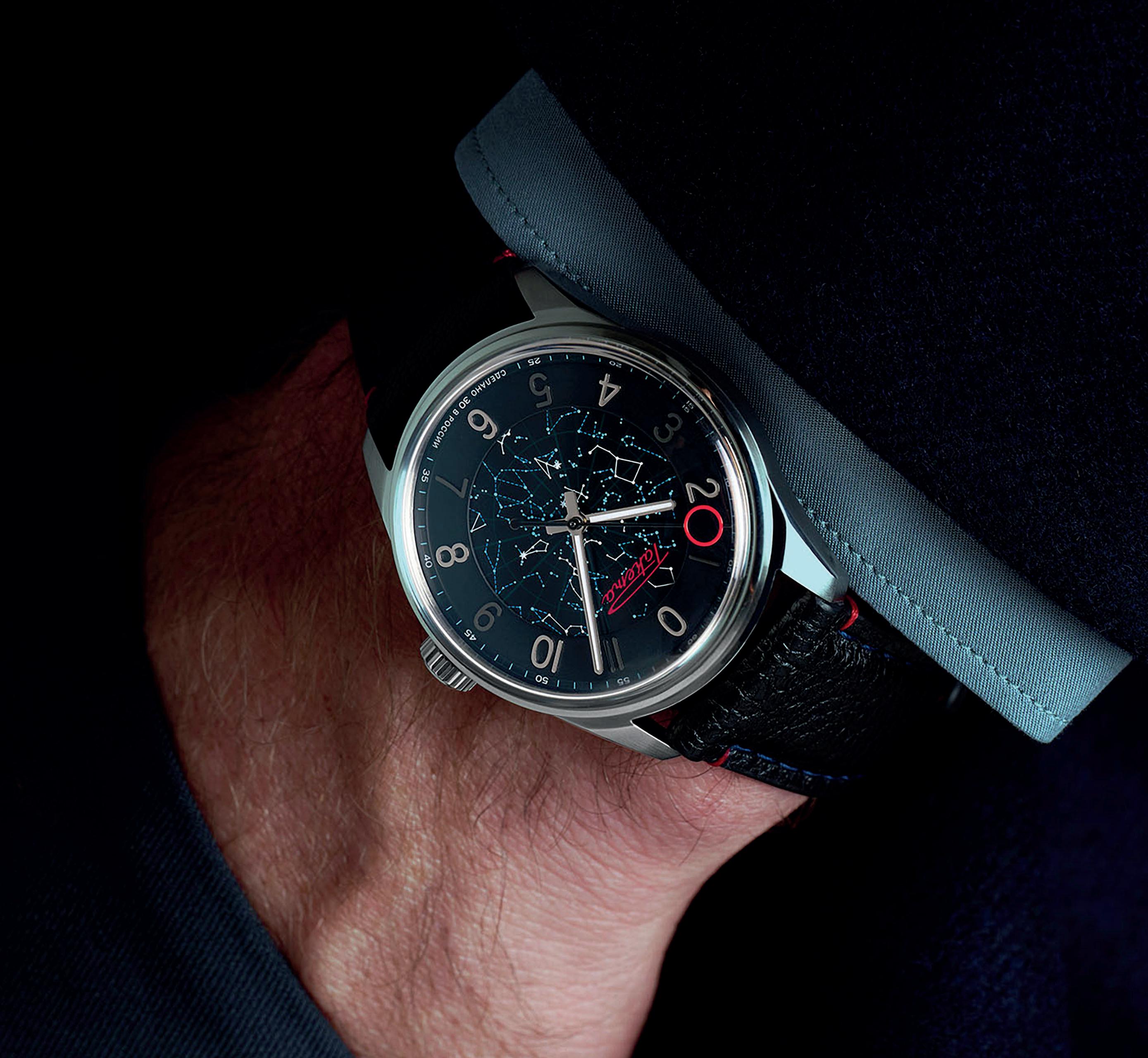
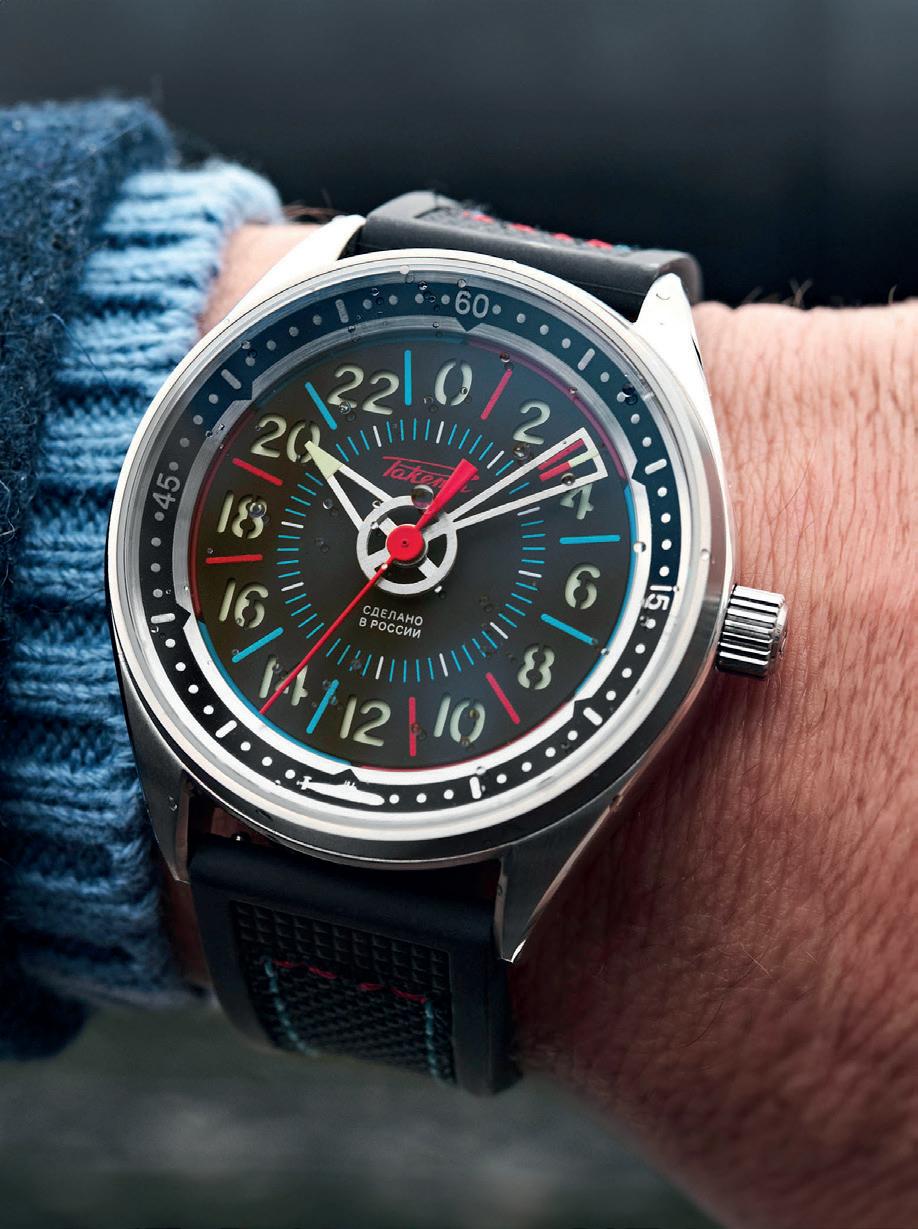
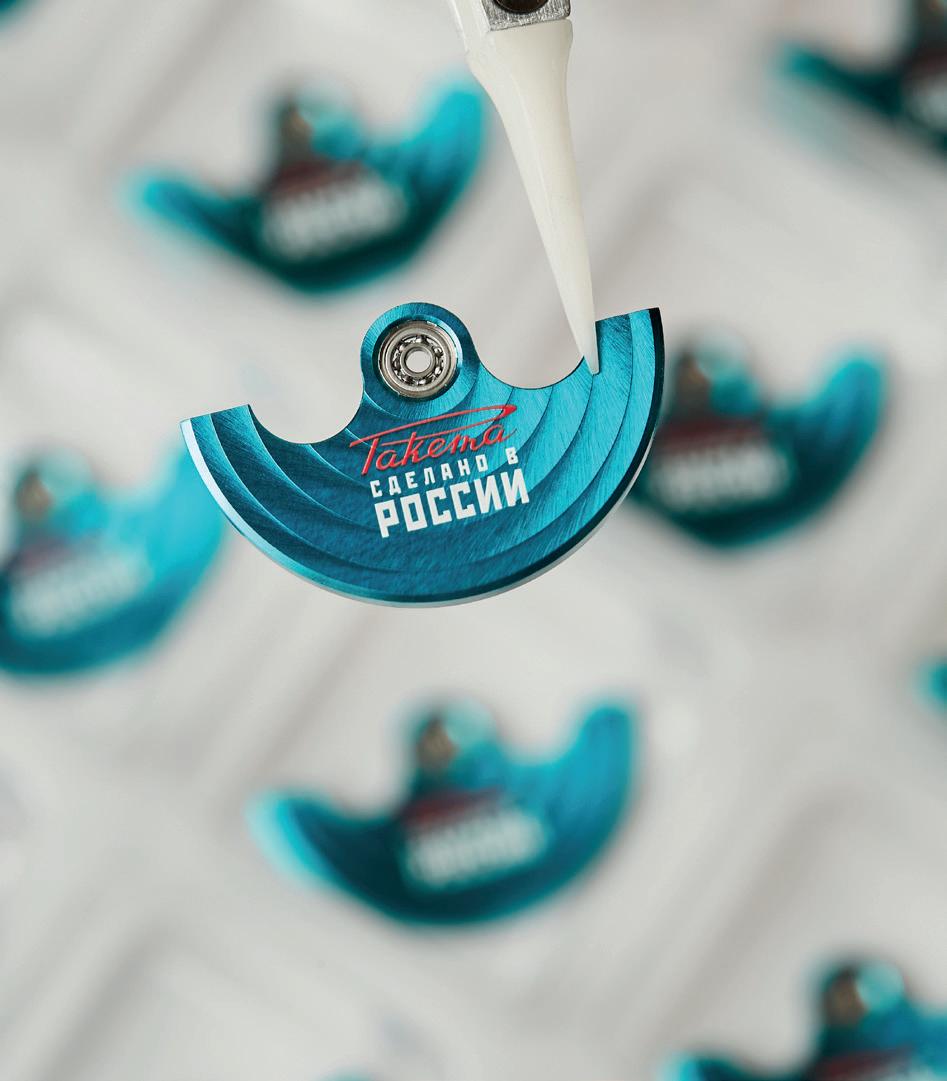
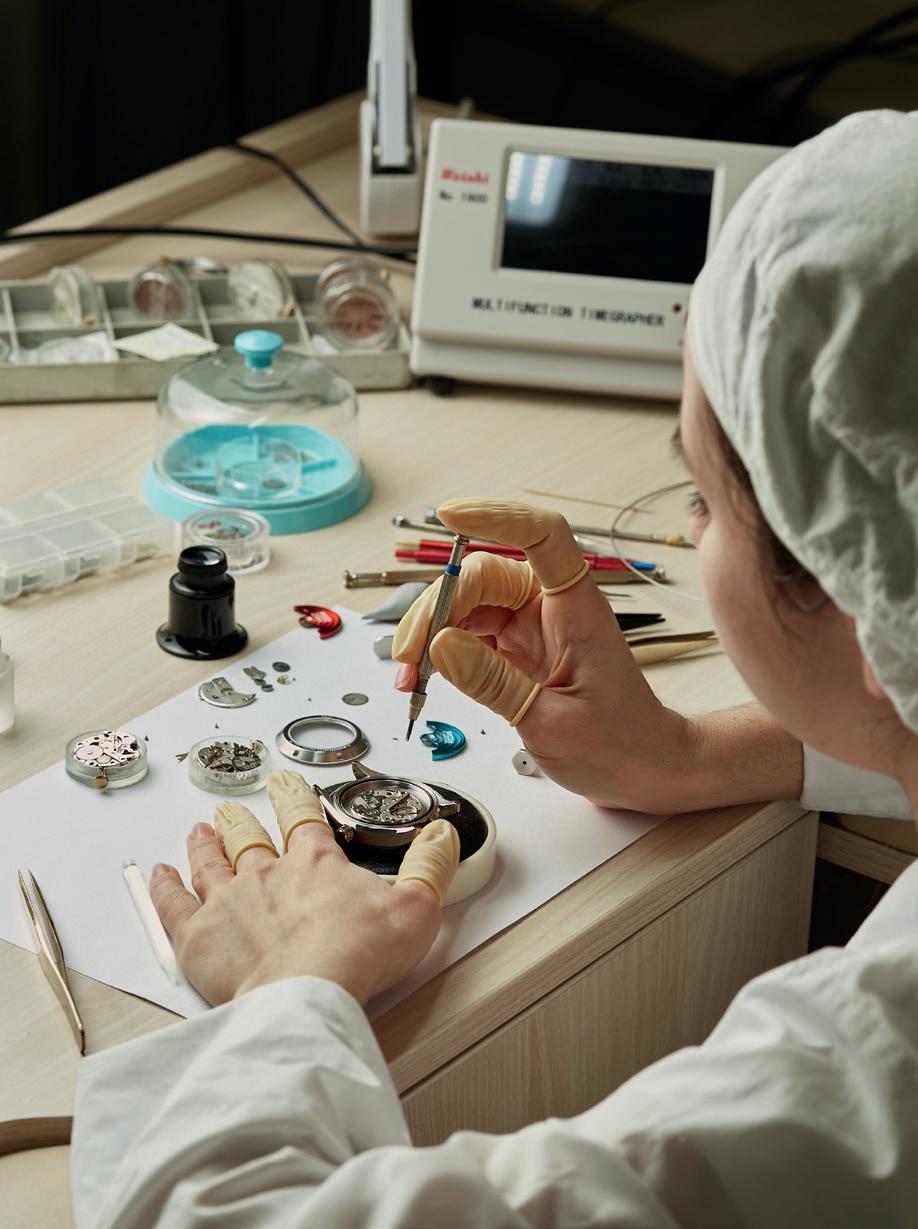
RAKETA
After 300 years of history and the first jaunt into space, modern Raketa is the definitive Russian watch brand
Despite what The Great might tell you – it’s a fantastic show but it’s ‘occasionally true’ tagline is flattering at best – Peter the Great did a lot to modernise Russia. He brought in countless reforms to transform what was a backwards country compared to the rest of ‘enlightened’ Europe into a contemporary powerhouse. But it wasn’t all about updating laws and promoting science and culture; he also had an eye for trade.
Part of that of course was making something that could be traded. This was back in the early 1700s, so options were fairly limited. You needed something that took a specialist level of skill and expertise to create. And so, the Imperial Peterhof Factory was established in 1721, a stone workshop dedicated to decorative stone objects – a factory that would help Peter the Great build his shining new stone-built capital of St. Petersburg. Yes, he had a thing for his own name.
Working with hardstone naturally lends itself to gem-cutting and in 1782, the Imperial Peterhof Factory cut the diamonds for the Great Imperial Crown, establishing themselves as one of the most prestigious luxury manufacturers in Europe –precisely what Peter the Great intended. And by the late 1800s, there was one object of value taking the continent by storm: watches.
To get in on the act, the Imperial Peterhof Factory started working with watchmaker Tablerg and, in the first half of the 20th century, specialised in creating precision rubies specifically for horology. During World War II under the Soviet Union, this translated to precision military equipment and, later, the Kremlinordered watch brand Pobeda.
Among the various missions that Pobeda was involved in was Yuri Gagarin’s legendary flight as he escaped the Earth’s atmosphere aboard the Vostok 1. It was a momentous milestone for not just Russia and the Space Race, but mankind – arguably more-so than the first Lunar landing. Needless to say there was an outpouring of national pride, including the factory behind Pobeda, who were proud enough of the achievement to launch a new brand, Raketa – the Russian word for Rocket.
Over the following decades, Raketa continued producing watches for Soviet endeavours, from polar exploration to the Soviet Olympic Games; enough that you can find their pieces peppering vintage watch shops across the world. They’re solidly made pieces that are a world away from your classic Swiss watches. But just like the Peterhof factory before it, Raketa eventually needed to modernise and did so in 2011, producing the first Russian automatic movement of the 21st century in 2014’s Raketa-Avtomat, and flexing those newfound muscles in 2015 with the world’s largest mechanical watch movement.

In 2021, Raketa celebrated 300 years of Russian craft heritage since their initial founding by Peter the Great, and they’ve come a long way. Hell, they’ve even evolved from the Soviet-era brutalist designs that we’ve come to expect from Russian watches and these days make everything, from movement to screws, under one roof. Not that they’ve entirely left their Russian heritage behind, of course.
In fact, the main sources of inspiration for modernday Raketa are the same heroic endeavours that Raketa of the past would have built watches for: space exploration, underwater engineering, polar expeditions, the lot. And part of that is their signature 24-hour movement, designed to keep time in environments that likely require vitamin D supplements. That’s particularly evident in the exceptional Sonar, a watch designed for use aboard submarines, and features a cool mix of blue and red highlights to divide up shifts for the submariners themselves
More recently however, Raketa have entered a new era of watchmaking, one where design is as important as functionality. The “Russian Code” 0302 is a stunner, one that’ll have you doing a double-take as it runs counterclockwise. The idea is to better imitate the movement of the planets around the sun, but combined with the constellation-laden dial and sleek lines, it’s a world (or three) away from a tool watch, finished exceptionally right down to the red-ringed second hand.
So, while Raketa draws from a unique combination of centuries-old craftsmanship and Soviet-era utilitarianism, the modern brand is very much its own thing. Still, if you had to define them – something that we’re always hesitant to do – it would actually be quite simple: Russian watchmaking at its best. Find out more at raketa.com
151
IN FOCUS — raketa
Bursting with the history of Sovietera utilitarianism that will serve you well at the extreme edges of Earth, Raketa are defining their own modern era with fine craftsmanship


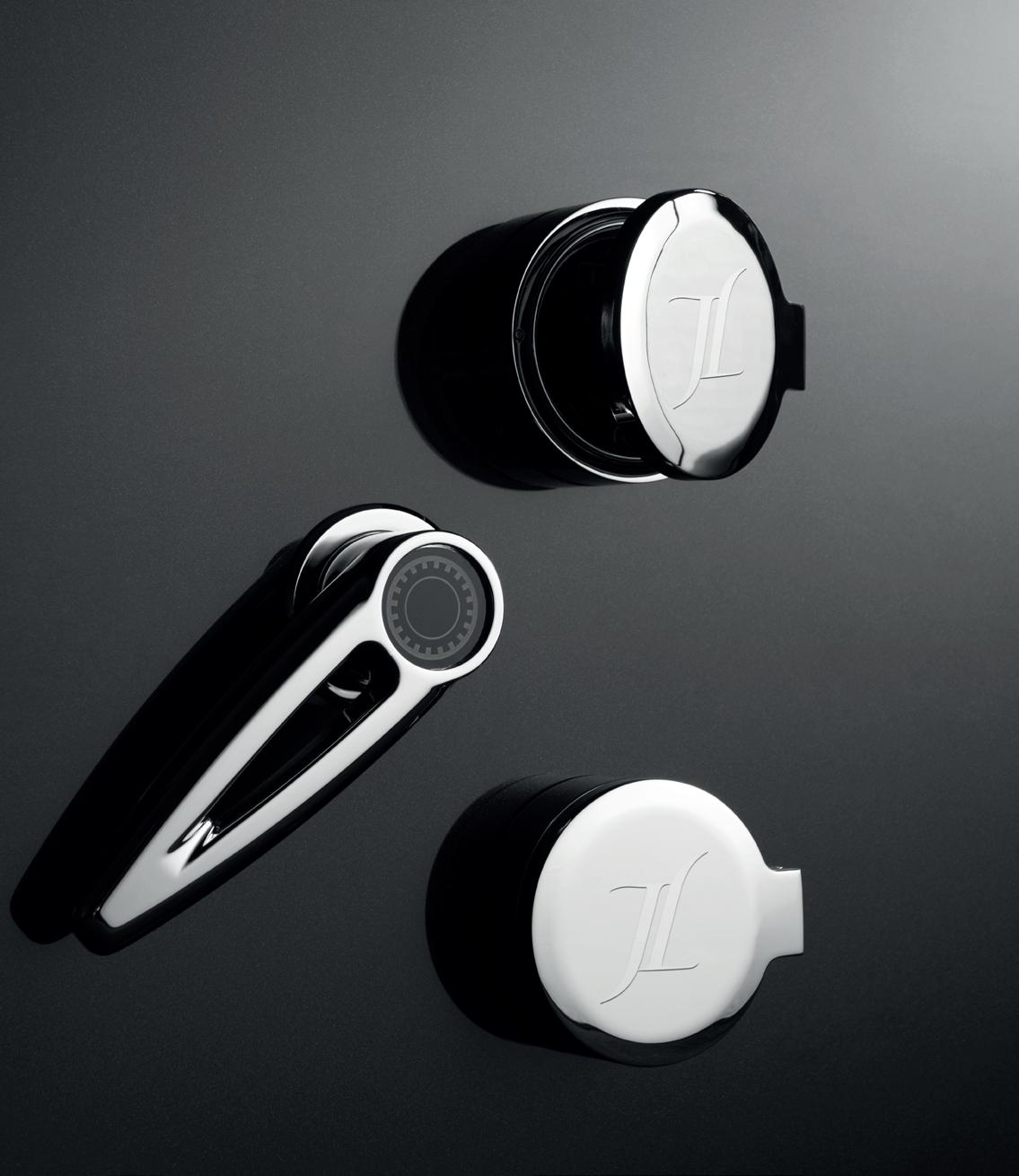

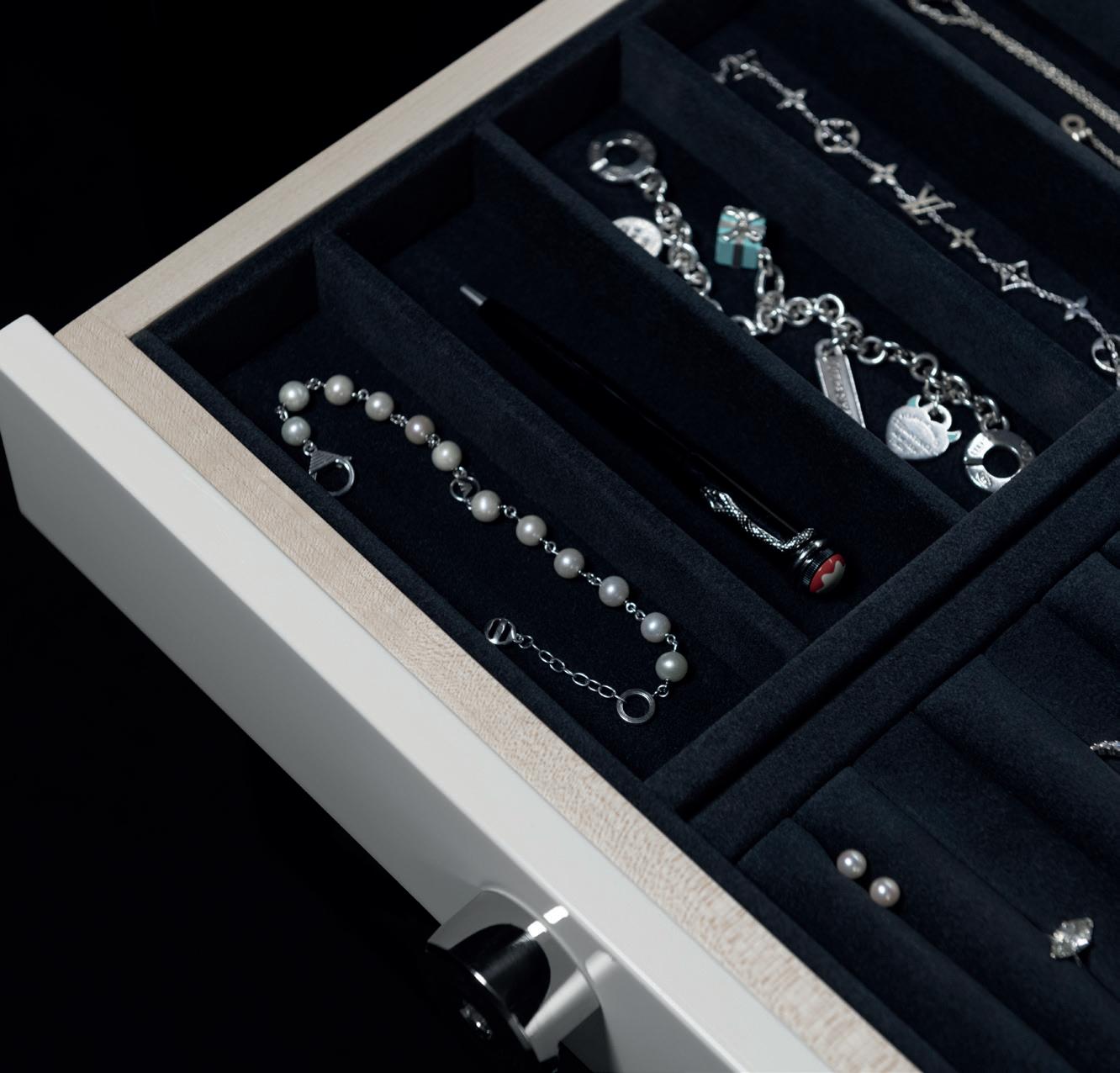
152
Michael and Gail Johnson’s family-owned business can provide safes for that burgeoning watch collection of yours, as well as vaults, gun safes, and even panic rooms
JOHNSON’S OF LICHFIELD
Bespoke safe makers in the heart of Staffordshire ensuring your watch collection is statuesquely secure
What’s the biggest nightmare of any serious watch collector? I wake up every night having dreamt of being Mufasa-ed by a Snoopy MoonSwatch stampede. But less specifically watch lovers all have much the same greatest fear: theft. Not to worry anyone, but if you add up the value of all your watches, it makes an incredibly tempting target for any opportunistic break-ins.
At best, it’s an incredibly frustrating situation that costs more time and effort to recoup than anyone would want to expend. Just look at what Orlando Bloom went through to get his collection back from the notorious Bling Ring. And as most of us aren’t Hollywood actors, it’s more likely that you’ve just lost some truly irreplaceable timepieces that you will in fact never see again.
Obviously, you don’t need to sit there and accept the risk – and you don’t need some elaborate Indiana Jonesesque trap system either. You need a safe. You probably don’t need us to tell you that you need a safe, you know it already. You might even have one already, in which case well done, you’re a responsible watch owner.
But having a tiny lockbox stashed in a cupboard does not a proper safe make. If you’re looking for something seriously heavyweight – both figuratively and literally – then you could do a lot worse than Johnson’s of Lichfield.
Nestled in scenic Staffordshire in the centre of England, family-run Johnson’s of Lichfield have been keeping their customers’ valuables safe (ba-dum-TSH) and sound for nearly 35 years. That’s long enough to not only know what they’re talking about, but to have become the UK’s leading experts in the field.
That expertise is vital. Finding the right safe for you isn’t just a case of picking one out online and shoving it in a corner. First, there are all the boring technicalities you need to think about. Does it adhere to my insurance policy? Can the floor you’re planning to put it on actually support it? Does it even fit properly when fully installed? Given that every safe is different, getting those answers can be easier said than done.
Then of course, there’s the aesthetics of the thing. Just because a safe is a practical necessity for a treasure trove of timepieces doesn’t mean you have to make do with a nondescript industrial block. In fact, the best of them can be genuinely lovely pieces of interior design – if you know where to look.
If you’re looking for something seriously heavyweight – both figuratively and literally – then you could do a lot worse than Johnson’s of Lichfield

To address the former point, Johnson’s of Lichfield is a lot more than just a retailer, working more like a home security concierge. Like building a bespoke watch, the process is more discussion than transaction, where the experts at Johnson’s of Lichfield will discuss your exact needs in detail. It goes beyond safes too; vaults, gun safes, even panic rooms, whatever kind of security you need and to whatever scale.
That versatility is paired with an approach to luxury design that epitomises the statuesque nature of most of these security solutions. We’re not talking some tinny block with a cheap keypad. Sleek, glossy black finishing, chrome hardware, the kind of tactile, mechanical satisfaction that’s as solid as you’d expect from a luxury safe, there’s a lot to love. All custom, of course.
There’s even more to love specifically for your watch collection as, along with more basic watch holders, there’s the option to install watch winders, too. The best specialist watch winders allow custom winding settings to suit every watch. You can select your preferred holding position, rotations a day and the turning direction, all simply and succinctly through the exterior touchpad. Yes, there’s still some debate among collectors as to whether a winder is actually good for your watch or not, but having the option to never have to set a perpetual calendar again is a tempting prospect.
The necessity for some hefty watch security is a little worrying and safes as a subject aren’t exactly Philippe Dufour levels of sexy (the watches rather than the maker). But Johnson’s of Lichfield’s bespoke approach to the subject might just get you more excited about safes than you ever thought possible. .
Find out more at johnsonsoflichfield.co.uk
153
IN FOCUS — johnson’s of lichfield


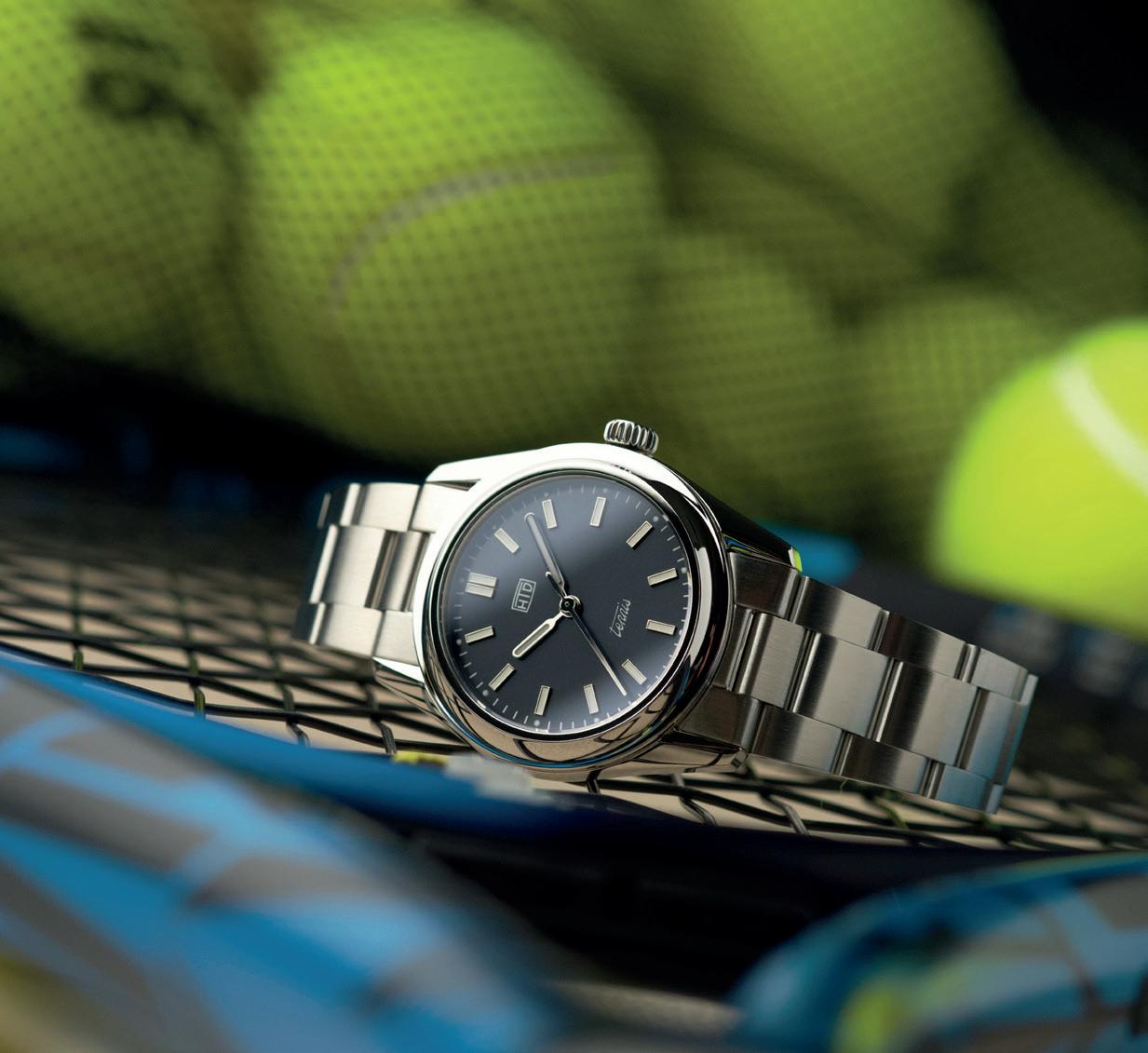

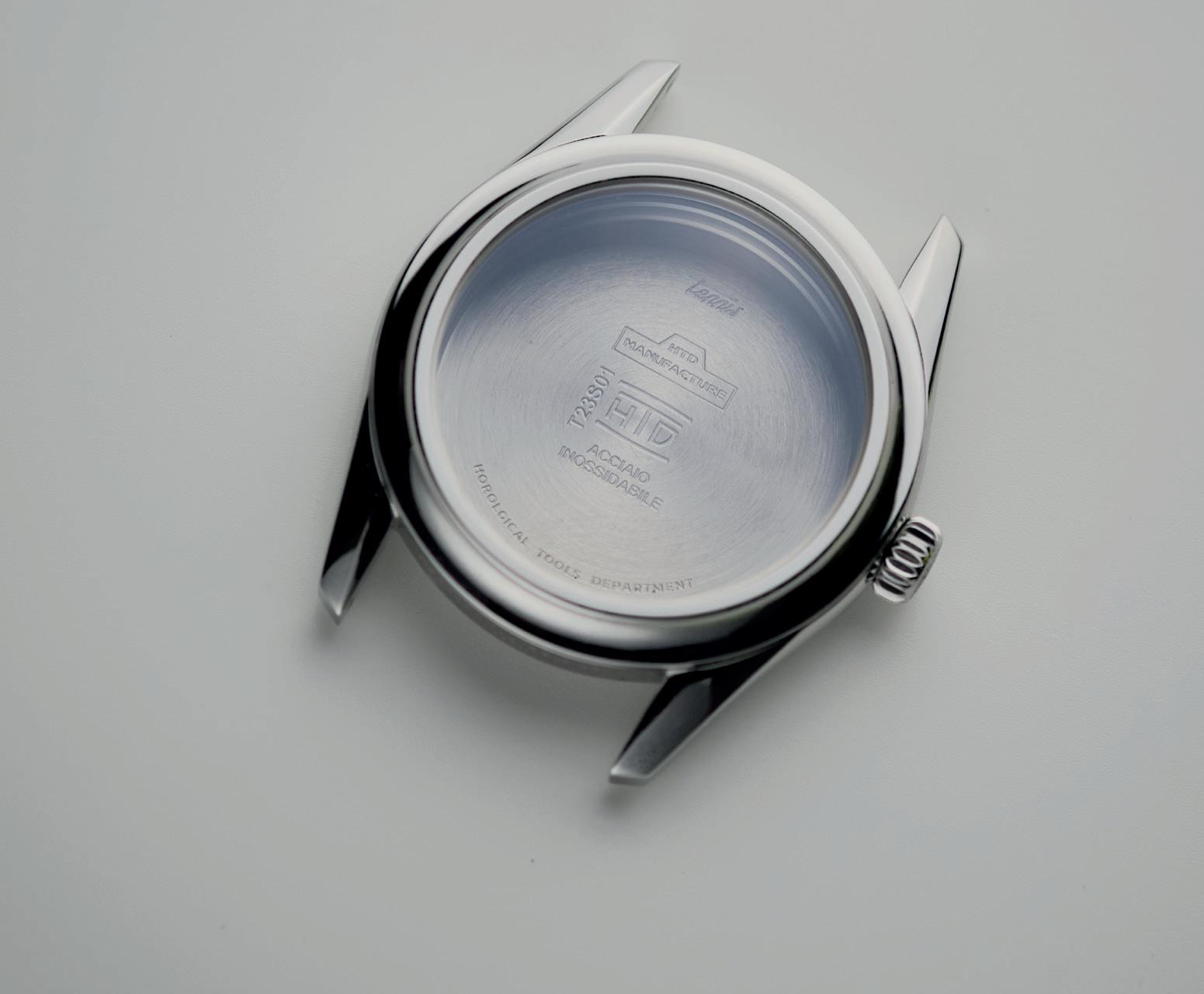
Temptingly affordable, but only produced in limited numbers, the HTD Tennis is offered in blue, green, bright orange, and a black version called Chic, as a fun nod to the sport
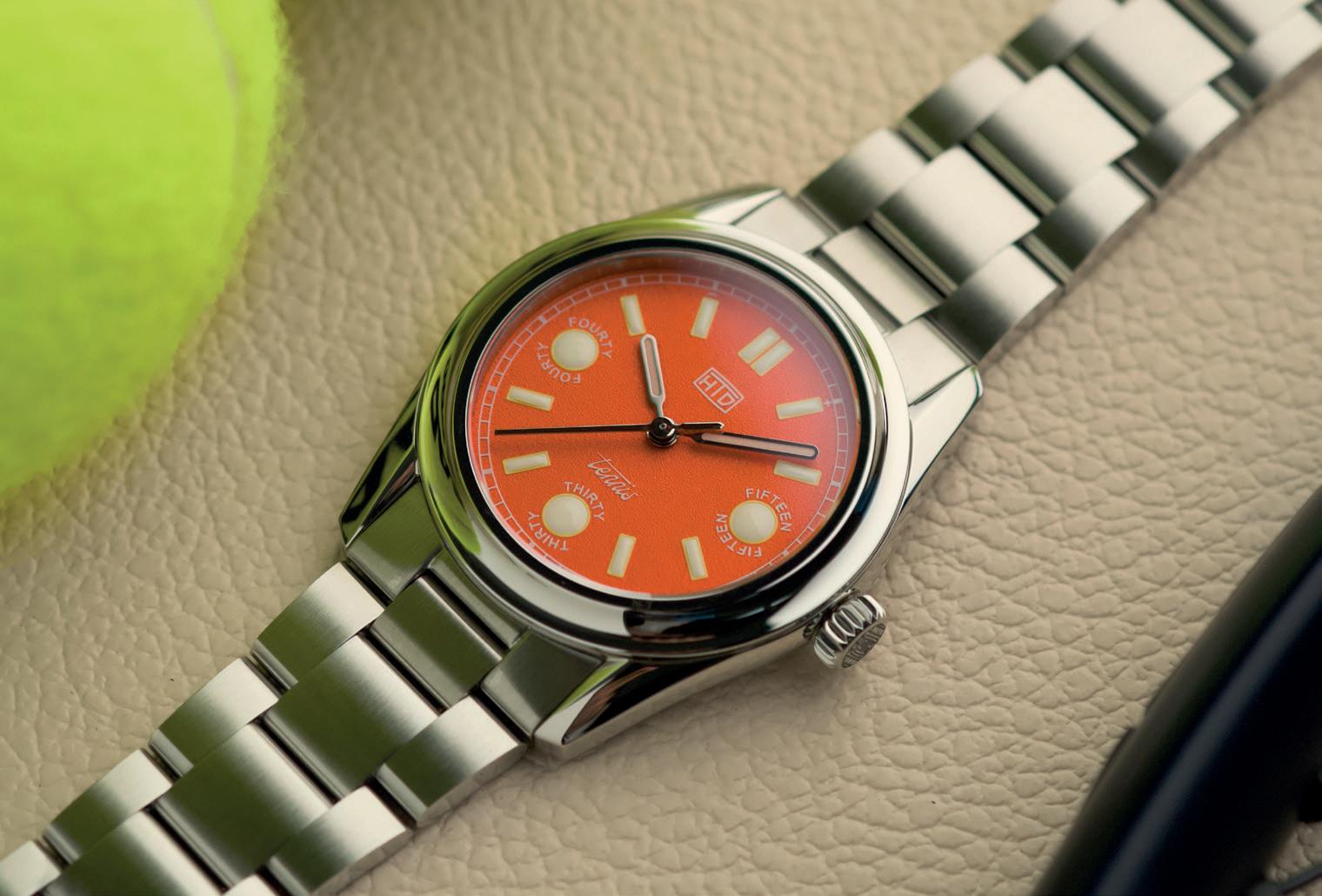
HTD
No-nonsense tool watches drenched in Italian cool
A name says a lot about a watchmaker. Vacheron Constantin has the ring of historical pedigree; Urwerk the hint of an engineering degree. Some require a little digging to get to the core of what their name means, some wear it written large on their sleeve. When that name is ‘Horological Tools Department’, it’s not hard to figure out which category they fall into. It’s a label more self-explanatory than any tin of wood stain.
Despite a name that epitomises a very British approach to utilitarianism, HTD was actually born in Florence, a city with plenty of watchmaking heritage in a very specific breed of tool watches. Cushion-cased ones, obviously. But rather than the military slant associated with the biggest Italian watch names, HTD’s initial focus was cars.
It wasn’t an idle direction. When the founders Federico - Federico Del Guerra and Federico Zulian –met at university and had an inkling that they’d like to pursue watches, which was only the start. When they met watchmaker Renzo and mechanic (an ex-bike racer) Piero, they found precisely what they wanted to do. On the one hand, the miniscule tolerances inherent in fine watchmaking; on the other, the smell of oil and engine ingenuity of motoring. It helped of course that Renzo and Piero had shops right next to each other. It’s like it was meant to be.
The first result of this partnership was the Hesagraph, a collection paying loving tribute to the 50s and 60s, the golden era of daredevil racing. It was designed as an ode to Steve McQueen and, while the man had his own, now-famous taste in watches – particularly square models – it’s not hard to see that mix of retro cool and performance in HTD’s debut.
Rugged and stripped back in the same way as a vintage racer with every unnecessary element stripped right out, the bixcompax chronograph nonetheless has a certain charm to it in that pared-back, less-is-more way. Inside is the manual-wind Seagull ST1901, a Chinese-made movement true, but a solid one that easily outpaces its price tag in performance. It also, and this is important, meant that the initial Hesagraph collection was immensely affordable.
Not that it was easy to get though. That initial batch of HTD watches was incredibly limited and ever since the watch brand has continued to only release strict runs of their watches. For serious collectors, even ones dabbling in the sub-£500 realm, that’s nothing but a benefit. It not only means that you won’t see HTD watches everywhere, but it gives the brand freedom to create a ton of different designs. More variety is always better.
For HTD, that’s meant expanding beyond the Hesagraph. Leveraging that same balance of tool watch practicality and pared-back, retro style, they’ve built a more overtly vintage chronograph with a genuine 1980s
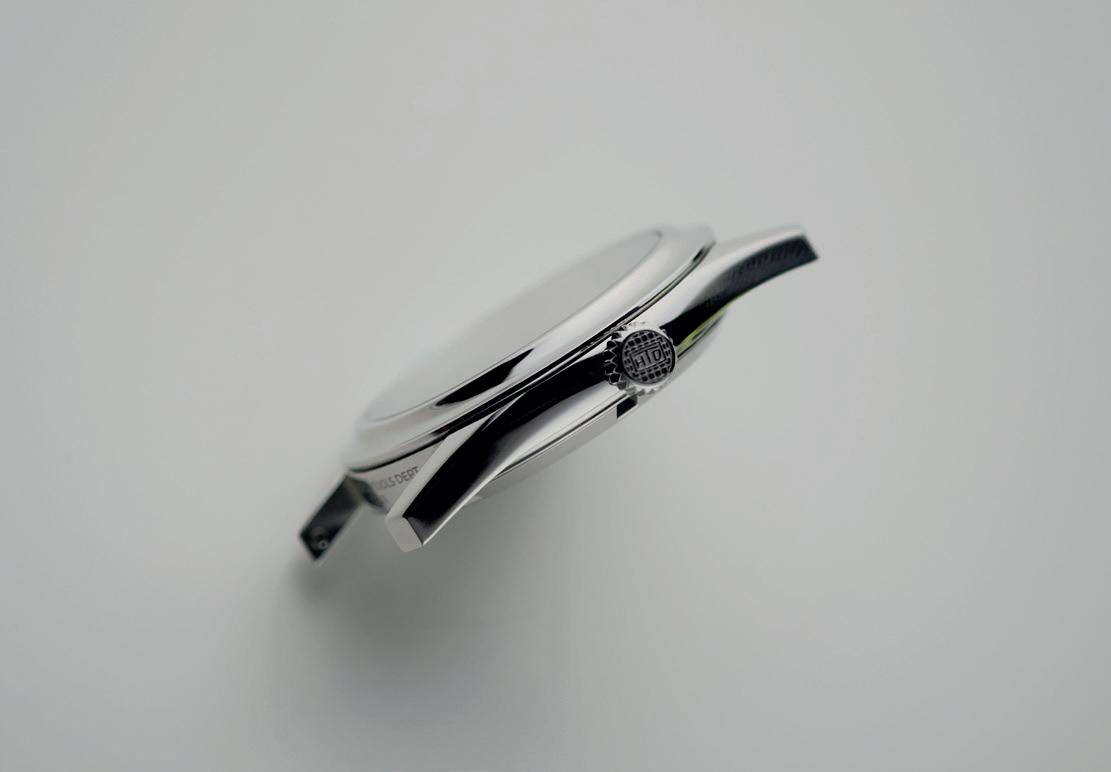
plexiglass (the Safarigraph) and a run of fun dive watches known as the Aquatic. Neither is particularly unexpected in a tool watch focused brand, but certainly appreciated. However, HTD’s next realm of exploration is a little more unusual: Tennis.
Tennis as a sport is dominated by sponsorships, but there are very, very few watchmakers actually taking inspiration from the sport to create their watches, and while the HTD Tennis isn’t specifically designed to be worn while playing, it still pays loving tribute.
At 37mm across, it falls into the same catchment area as the Rolex Oyster Perpetual, Omega Aqua Terra and the reams of likeminded makers building small, simple, colourful timepieces in the same vein. That kind of colour is here to, with the triplets in blue, green and bright orange. And yet despite being similar on paper, there’s no mistaking the HTD Tennis from the crowd. To amp up the theme, the three o’clock, six o’clock and nine o’clock markers have been replaced with miniature white tennis balls with the words ‘fifteen’, ‘thirty’ and ‘fourty’ written around them respectively.
At first you might assume they’re doubling as minute counters, but then what’s up with fourty? Instead, it points to the three scores before winning a game (assuming you don’t both end up on deuce). Visually, it’s a fun nod to the sport that not only adds some additional flavour to the brightly coloured dials, but helps set the HTD Tennis apart. As, indeed, does the price.
In keeping with their debut racing chronograph, the Tennis is temptingly affordable at €690, approximately £600. It’s backed by a Miyota movement – specifically a premium version of the automatic calibre 9039 with 42-hour power reserve – meaning it’s perfectly reliable and will wind with every forehand, if you do insist on wearing it while playing. We wouldn’t blame you. The flipside of course is that, like every HTD release, it’s limited in production (rather than an actual limited edition). So, you might want to be quick if you fancy snapping up what might just make the perfect Wimbledon wearer.
Find out more at htdwatchinstruments.com
155
IN FOCUS — htd
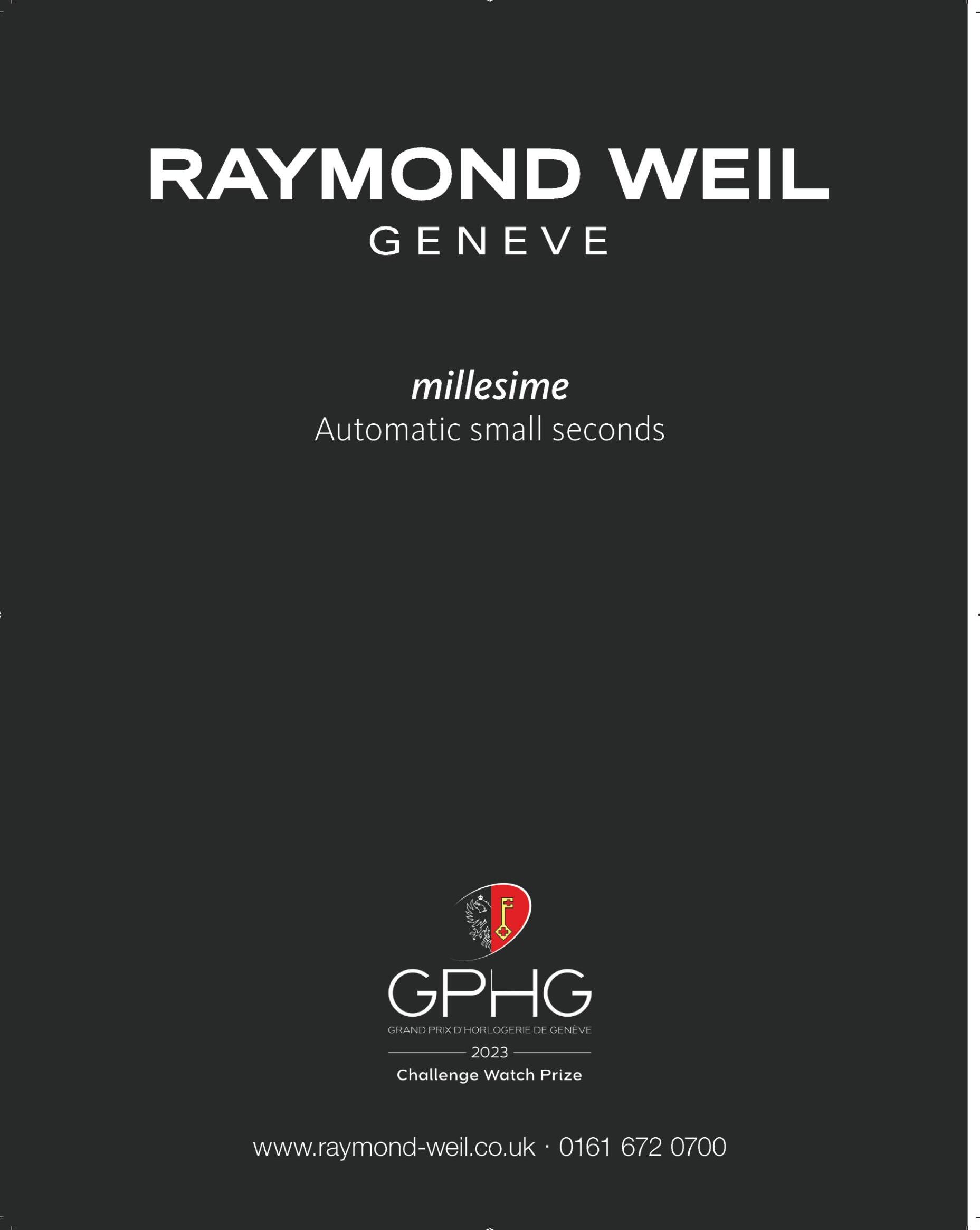
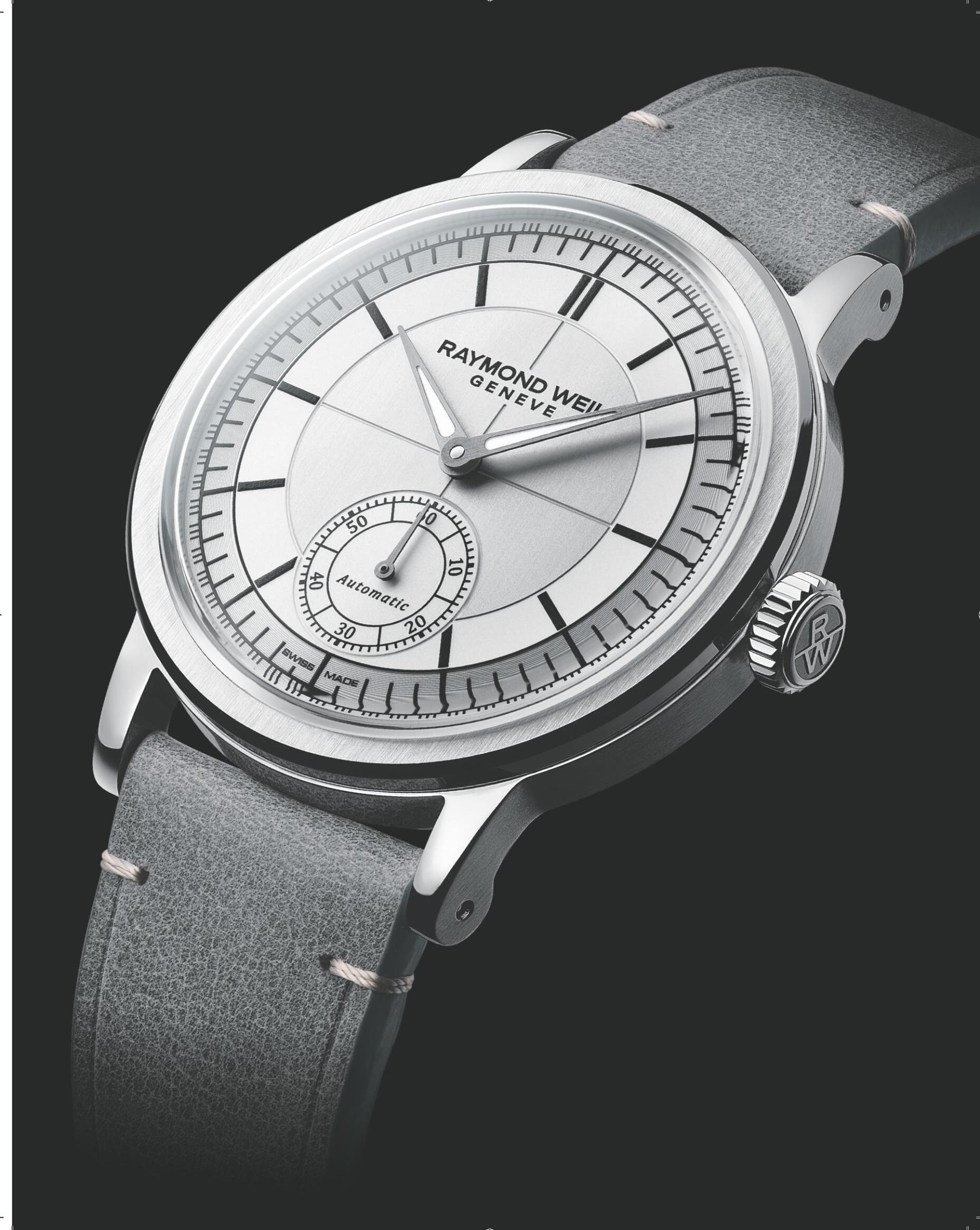

GENIUS WATCHES – GENIUS HOMMAGE
Hommage by name, homage by nature, Genius take the foundational texts of Genta design – aka the Patek Philippe Nautilus and Audemars Piguet Royal Oak – and fused the icons together into one watch. On the top half you have those signature horizontal bars, on the lower half the famous tappisserie pattern; rounded, brushed bezel on the top, industrial, faceted number with visible screws on the bottom. The Hommage takes its half-and-half nature to a glorious extreme for a tongue-in-cheek, accessible twist on the formula. That goes double for the ‘Tiffany’ blue version.
€2,950 (approx. £2,520), available at geniuswatches.ch
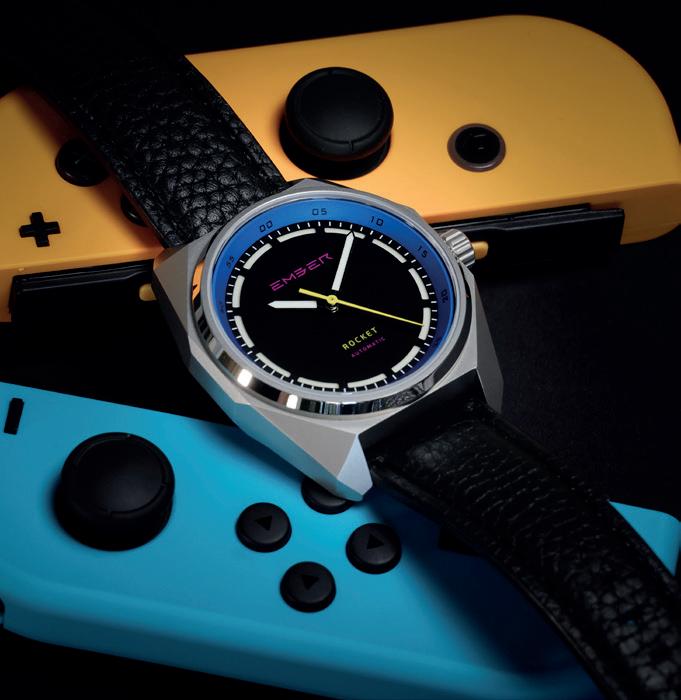
ICHNOS – CAPO TESTA CORALLARO
Ichnos are in a special position as a watch brand, being based on the island of Sardinia in the Mediterranean Sea. It’s not exactly a watchmaking hotspot, but the Italian island provides heaps of inspiration for the microbrand’s watches, and the Capo Testa is testament to that. There are a few colourways and this is the Corallaro with its white dial and coral bezel. It’s powered by the La JouxPerret G100 automatic calibre with 68-hour power reserve and +/-7 seconds per day accuracy.
Pre-order €1,395 (approx. £1,175), available from ichnoswatches.com
MONTFORD WATCH CO –THE RUBUS
We like field watches here at Oracle Time; we also like elephants. After all, who doesn’t? Unfortunately, it’s not often those two really mix, African wildlife and militaristic timekeepers – that is until Montford Watch Co’s Rubus, a ruggedly handsome automatic watch with a textured grey dial design to imitate elephant skin. That alone is cool enough to warrant its ultra-accessible price tag, but Montford go further, sending proceeds from the watch to wildlife charity Tusk for their environmental work. In short, it’s a great field watch for a great cause. £350, available at montfordwatchco.com

Ember Watch Co. – Rocket
Rather than the industrial 1970s flavour an intensely faceted case like that of the Rocket might conjure, Ember instead goes another direction with an ‘80s, neon-drenched approach. This particular model with its black dial, blue rehaut, and vivid pink and yellow highlights is what they’re all about. Despite it’s cutting edge looks, the Rocket remains accessible thanks to a workhorse Seiko NH38A movement, the no-date version of the microbrand classic. Get in there now and it’s even more so, with early bird discounts. £395 (£296 early-bird), available at emberwatchcompany.com

RPAIGE – CHRYSLER BUILDING SPECIAL EDITION
Taking architectural to the extreme, the latest off-kilter slice of Art Deco goodness from RPaige is a tribute to the most iconic Art Deco building in the world, New York’s Chrysler Building. It’s not a subtle allusion; the building’s famous geometric crest has been added across the top of the watch, with the dial engraved with patterns lifted from William Van Allen’s opus. Although it has to be noted that there will only be five of this special edition available and each with a different dial, showcasing the sheer breadth of detail across the landmark. $3,200 (approx. £2,575), available at rpaigewatch.com
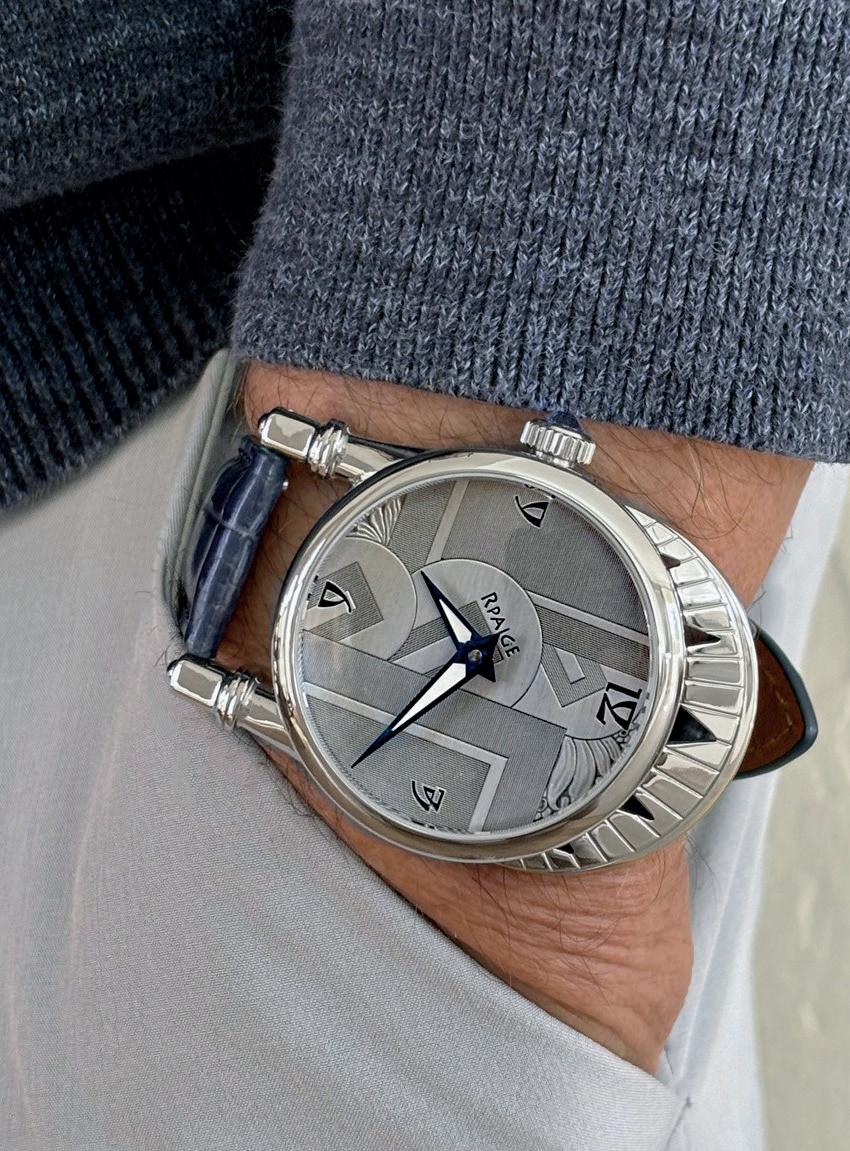
Oracle RECOMMENDS WHAT’S ON OUR SHOPPING LIST AND WHY 158 watches
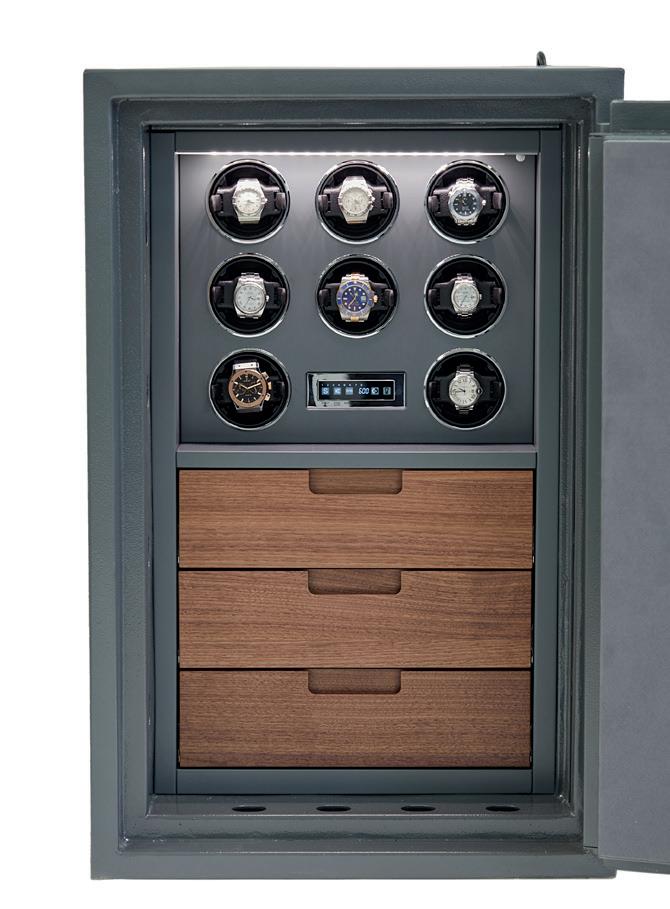
ZEALANDE – RUBBER STRAP FOR ROLEX SUBMARINER 41MM
If Rolex’s releases this year weren’t quite as interesting as you were hoping for, never fear, you can still grab yourself a cool steel sports number (if your authorised retailer likes you) and accessorise with an eyecatching strap. The latest from strap specialist Zealande is specifically designed to give your Submariner 41 a sporty twist worthy of a deep diver with rugged vulcanised FKM rubber in a choice of black, blue or eye-catching red. Comfortable, practical and a flash of personality that goes above and beyond what the Crown normally offers, this might be the perfect Rolex strap for summer.
£168, available from zealande.com
JOHNSON’S OF LICHFIELDBESPOKE WINDER SAFE
Johnson’s of Lichfield is a luxury safe retailer specialising in designing robust custom watch and jewellery safes for your home. This elegant, modern safe includes custom painted cabinetry, solid walnut interior jewellery drawers, soft suede linings and reliable Rapport Watch Winders. These beautiful pieces of furniture are all made to order letting the client choose their exact specification. A practical and great addition to any watch collectors home. Starting from £12,000, available at johnsonsoflichfield.co.uk

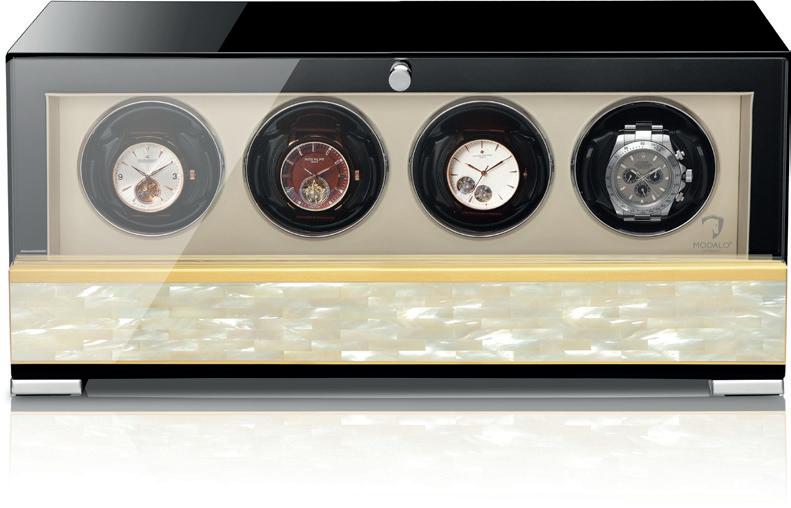
Modalo - Clasico Premium 4 Watch Winder
A winder can and should be more than a practical way to avoid re-setting a perpetual calendar. Take this beautiful piece of classically-styled tech from winder specialist Modalo, the Clasico. A mix of deep, black piano lacquer and lustrous mother-of-pearl, it’s one of the most traditionally luxurious options in Modalo’s already impressive catalogue. Not that what’s inside is traditional; the intelligent winding programmes, energyefficient motors, and a speed winding function all provide a forward thinking approach to keeping your grail watches wound and ready to wear.
£1,879, available at modalo.com
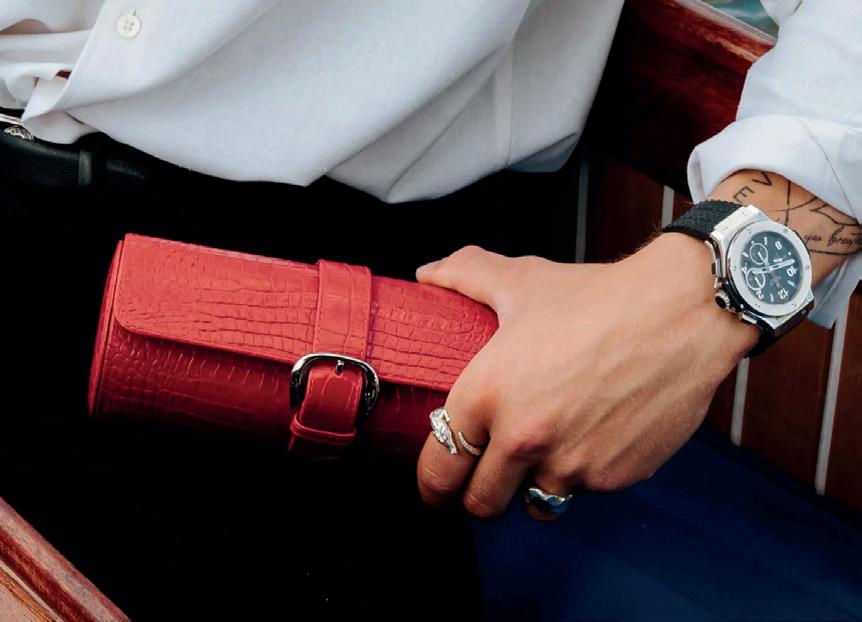
RAPPORT LONDON –BROMPTON THREE WATCH ROLL
Featuring three screwdrivers, a Rapport London has been producing horological goods for over 100 years with products ranging from watch winders and boxes to mechanical pocket watches. This is the Brompton Three Watch Roll, a protective case designed for transporting up to three watches. It features a crocodile-effect leather exterior while a soft suede interior keeps the watches safe during transit. There are also many colours to choose from including red, green, blue, brown and black.
£300, available from rapportlondon.com

Tempomat Madrid – FKM Rubber Strap for Richard Mille
Given just how integrated their rubber straps normally are, finding a decent alternative to whatever Richard Mille pop on their watch can be a pain. Unless you head over to Tempomat Madrid, that is, who have an eye-popping selection of solid FKM vulcanised rubber straps that will fit any RM11 or RM35 model. Available in light or dark blue, red, yellow and white, they’ll add that flash of colour your wrist candy’s been craving – and you can even get a matching crown protector (€20) to boot. Or contrasting; Richard Mille aren’t the only ones that can have fun with colour. €220, available from tempomaterials.com
159 watch accessories
Caligo – Azur Resort Shirt
Caligo’s hallmark combination of British classicism and Dubai luxury sets sail to the Cote d’Azur with their latest nautically inspired collection. Expect plenty of whites and blues perfect for summering along the coast with sartorial fits perfect for life aboard a yacht. Because no summer wardrobe is complete without a Cuba collar number, the Azur Resort Shirt blends that broad-collared cool with a subtle azure blue to stone gradient for a textured look –rendered in rich polyester for a superior drape and sheen, breathable and ready for the shoreline. £185, available at caligolondon.com

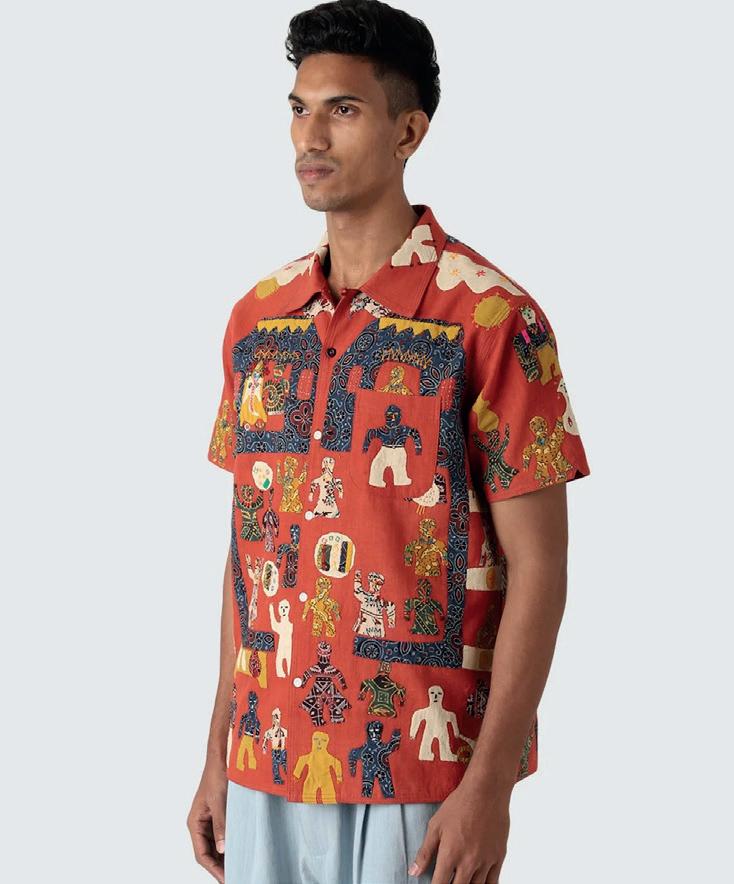
HOCKERTY –THE HOCKERTY SHIRT
Underpinning every solid formal look is an equally exceptional shirt and those of Hockerty are up there with the finest. From timeless elegance to the hallmarks of modern men’s style, their range of tailors shirts allow you to design your perfect piece, be it a linen number to beat the heat or a tuxedo shirt for a black tie dinner. Whatever the occasion, you can finally get a shirt that doesn’t just fit, but fits perfectly – and the confidence that comes with it.
From £49, available from hockerty.uk
KARDO CHINTAN SHIRT
Inspired by the rich craft of traditional Indian shirts, Kardo’s latest collection is a visual feast of colours and patterns that you’ll be hard-pressed to find anywhere else. This is about as far from mass-produced as you can get, with each shirt made start-tofinish by one artisan using traditional weaving, dying and printing. Pieces like the Chintan shirt with its boxy cut and open collar are a stunning alternative to your usual summer Cuban and, more than likely, far better made. £580, available from kardo.co


Stenströms White Cable Knit V-Neck Slipover
Part of Stenströms’ warm weather-ready capsule collection celebrating 1980s tennis style, this white cable knit slipover has the contrast stripes and clean, preppy style that’s come to define a British sporting summer. Finish with a classic, unstructured blazer and a bowl of strawberries and cream for a Wimbledon-worthy ensemble that won’t get lost in the crowd. Just be careful nobody mistakes you for the best-dressed umpire in tennis history.
£179, available from stenstroms.com

WALKER SLATER – EDWARD JACKET IN FOREST
Tweed, the perennial British country classic, is a staple of all well-heeled wardrobes – and not just those to the manor born. The balance of practicality and elegance makes a well-cut tweed jacket a must-have and none more-so than those from tweed specialist Walker Slater. This gorgeous forest green is both flattering and modern, an almost British racing take on a classically commanding silhouette. It’s hard not to look good in something like this. £295, available from walkerslater.com
160 style




































 EDITED BY Michael Sonsino
EDITED BY Michael Sonsino











































 Words by ANDREW CANTER
Words by ANDREW CANTER









































































 — Scarlett Baker Watch Editor for Wonderland and Man About Town @scarlintheshire
— Scarlett Baker Watch Editor for Wonderland and Man About Town @scarlintheshire






















































































